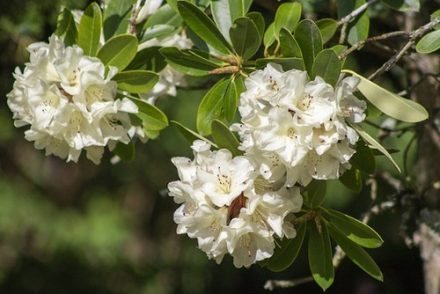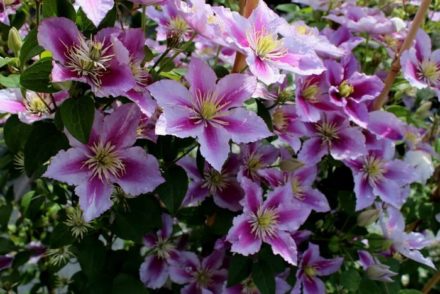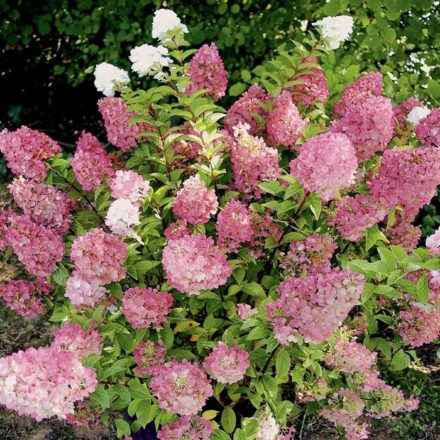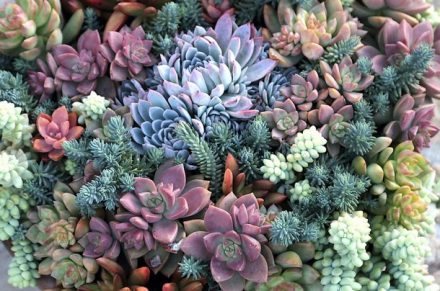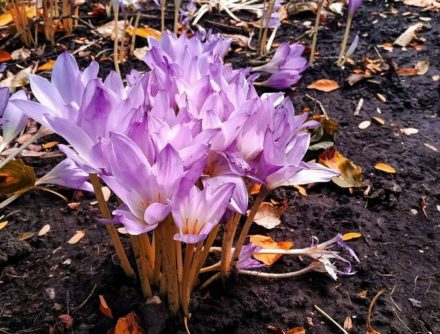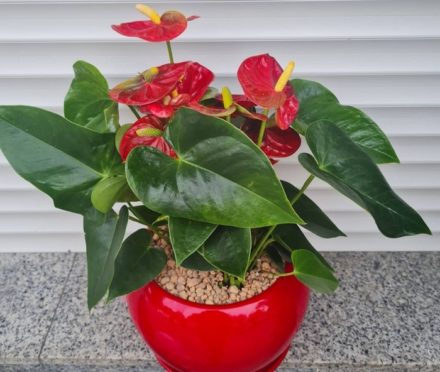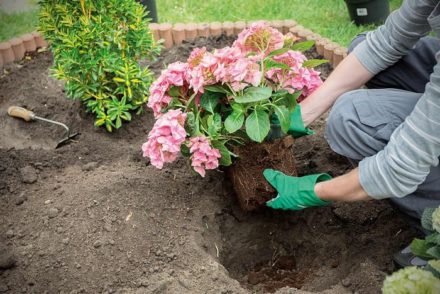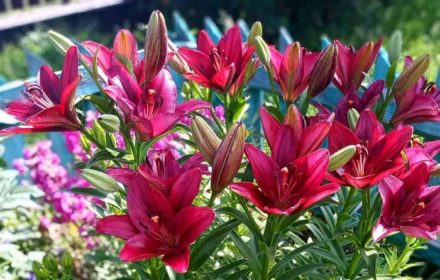Rhododendron is a beautiful branched shrub, a real decoration for a home or garden. This plant is not very demanding to care for and most varieties tolerate low temperatures and harsh winters without problems. But some problems in the process of growing rhododendron cannot be avoided. Therefore, it is useful for a gardener to learn exactly how to care for this shrub.
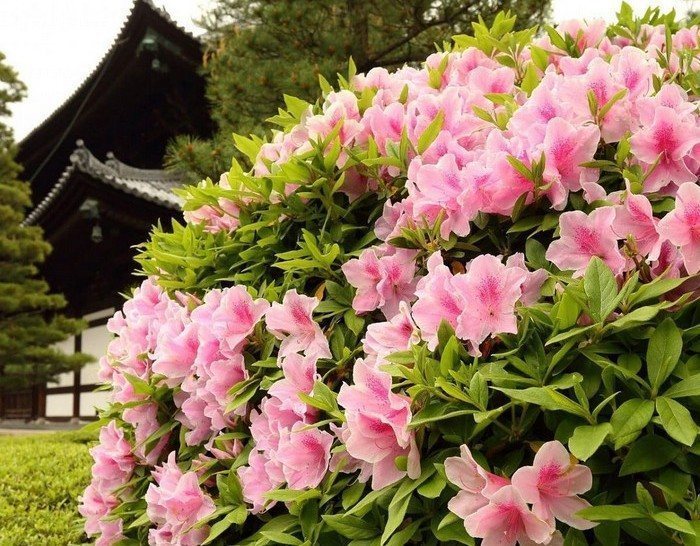
- Botanical description
- Types of rhododendron and the most popular varieties
- Evergreens
- Adams
- Caucasian
- Katevbinsky
- Yakushimansky
- Golden
- Madame Masson
- Cunninghams White
- Smirnova
- Impeditum
- Caroline
- Deciduous
- Daursky
- Golden Lights
- Mandarin Lights
- Japanese
- Schlippenbach
- Geisha Orange
- Canadian
- Hybrid
- Nova Zembla
- Hague
- Roseum Elegance
- Grandiflorum
- Rasputin
- Fireworks
- Helsinki University
- Helliki
- Azurro
- Percy Weissman
- Scarlet Wonder
- Marcel Menard
- Varieties by color
- White
- Orange
- Pink
- Yellow
- Blue
- Lilac
- Frost-resistant varieties
- Growing home rhododendron
- Temperature
- Humidity
- Choosing a pot, a place in the apartment
- How to choose soil
- Watering
- Spraying
- Top dressing
- Trimming
- Transfer
- Time and reasons
- How to replant
- Features of transplantation after purchase
- Transportation in winter
- How to form a bonsai
- Growing garden rhododendron in open ground
- Landing rules
- Selection of location and timing
- Soil for planting
- Landing pattern and distance
- Rules of care
- Watering
- Top dressing
- Mulching
- Hilling
- Trimming
- What to do after flowering
- Replanting in the fall to a new location
- Preparing for winter
- Spring and autumn processing
- Reproduction
- Cuttings
- By layering
- Seeds
- Diseases
- Chlorosis
- Late blight
- Rust
- Gray rot
- Pests
- Aphid
- Rhododendron bug
- Spider mite
- Mealybug
- Whitefly
- Shchitovka
- Greenhouse thrips
- Azalea moth
- Problems during cultivation
- Blackening of leaves
- Leaves turn yellow
- Dries
- The leaves are turning red
- Buds or inflorescences fall off
- Doesn't bloom
- Sick after transplant
- The tips of the leaves darken
- Rhododendron in landscape design
- Rhododendron is an extremely poisonous plant
- Reviews from gardeners
Botanical description
Rhododendron is a shrub of the heather family. Its homeland is the mountainous regions of Asia.
Young shoots of the plant are green, and mature shoots are brown. The oval leaves are slightly pubescent and hard to the touch. The compact root system of the plant is located in the top layer of soil.
Flowers of various pastel colors appear on the stems of rhododendron. They form inflorescences in the shape of a brush, ball or panicle. Externally, the flowers resemble luxurious bouquets of roses and bloom until the very beginning of summer. Because of this feature, the plant was named rhododendron. Translated from Greek, this word literally means “rose tree.”
Types of rhododendron and the most popular varieties
There are many varieties of rosewood. Each of them is popular in landscape design.
The following types of rhododendron are distinguished:
- evergreen;
- deciduous;
- hybrid.
Evergreens
These rhododendron varieties shed their leaves every two years. Evergreen shrubs are distinguished by dense leaves that harmoniously combine with bright flowers.
Adams
Also called “sagan-dailya” rhododendron, this shrub grows in Far Eastern mountain forests and rocky slopes. It can also be found in the foothills of Tibet.
The height of the plant can reach 50 cm. The shoots are covered with glandular hair. The green leaves are dense, matte, oblong, reaching 20 mm in length. The leaves are bare on the front side and covered with reddish-colored scales on the back side. Flowers are collected in inflorescences of 7-15 pieces. Painted in various shades of pink.
Adams' rhododendron is listed in the Red Book of Buryatia.
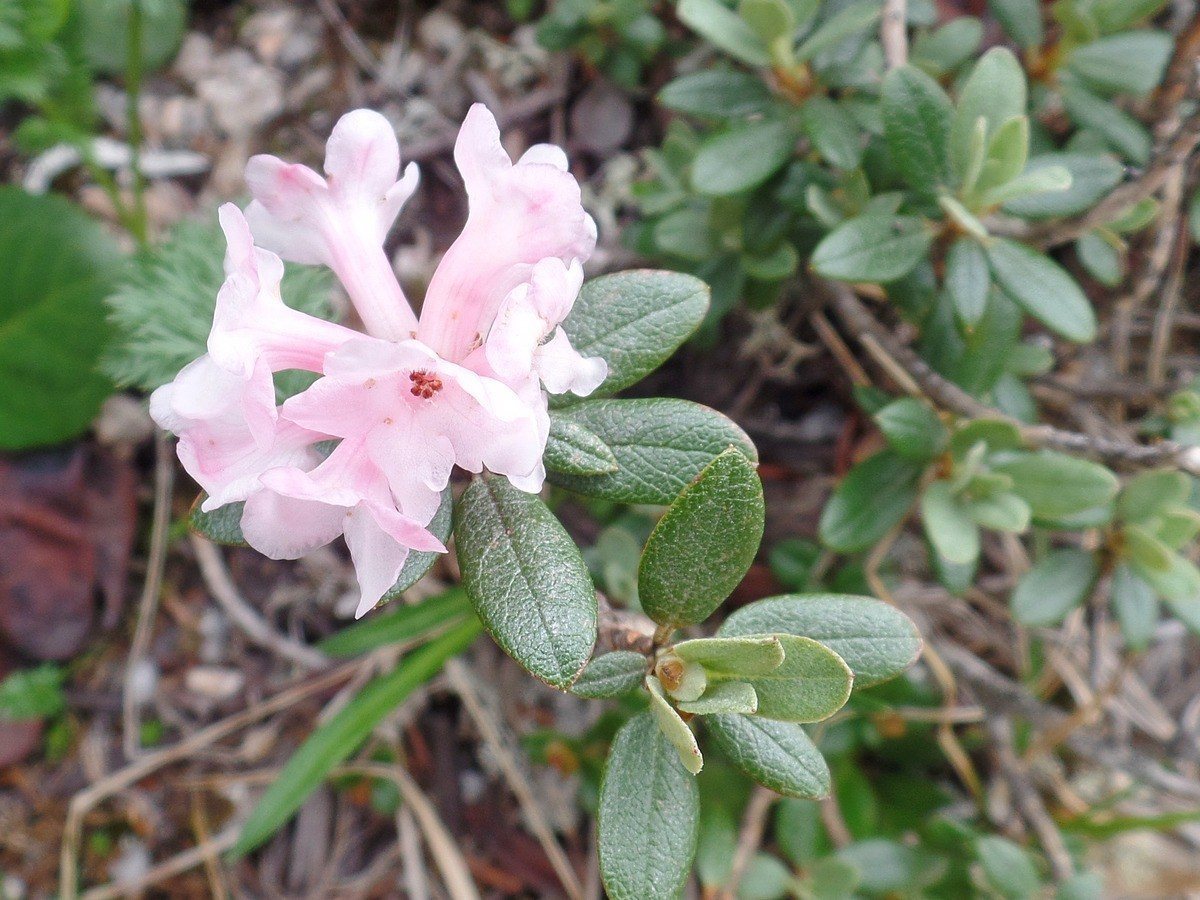
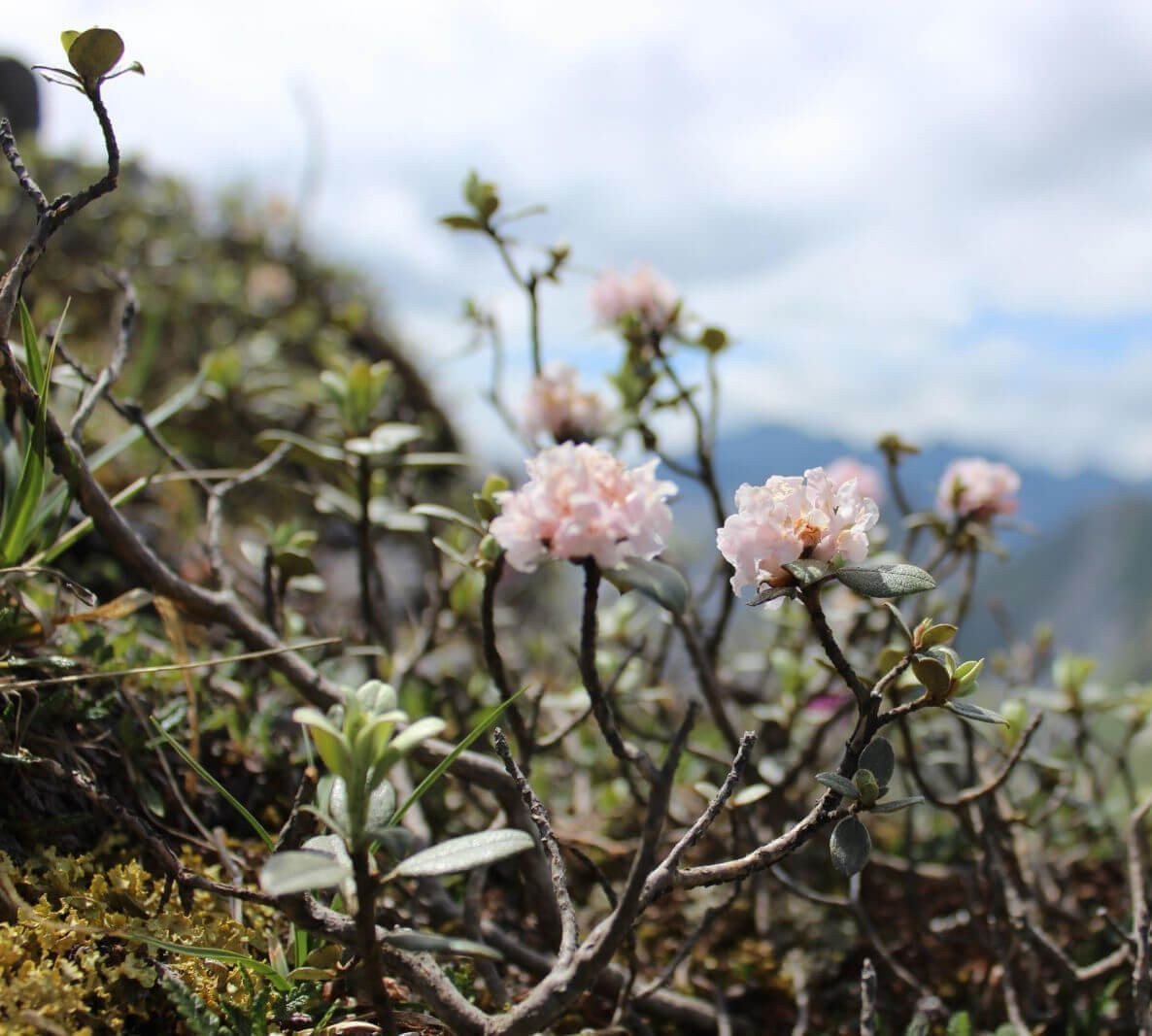
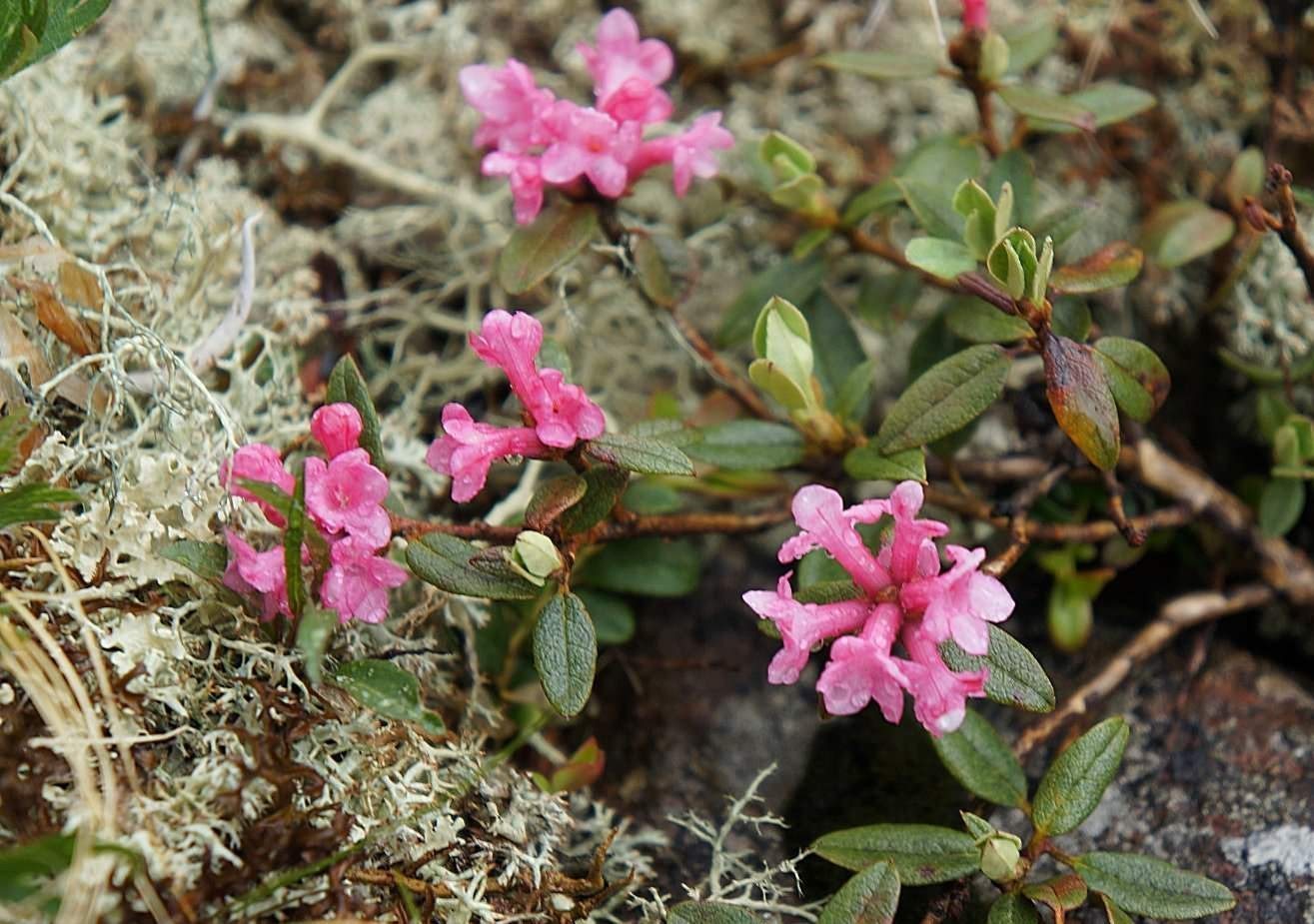
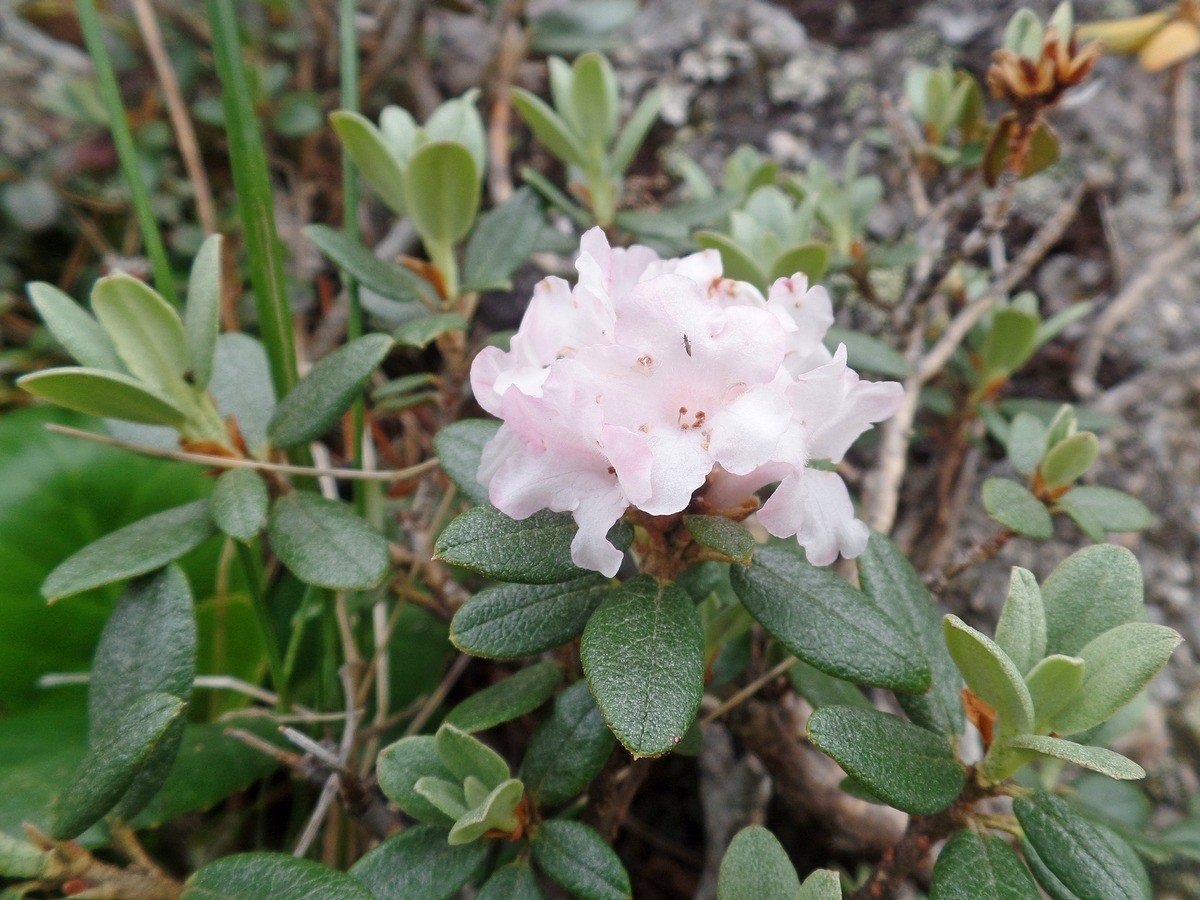
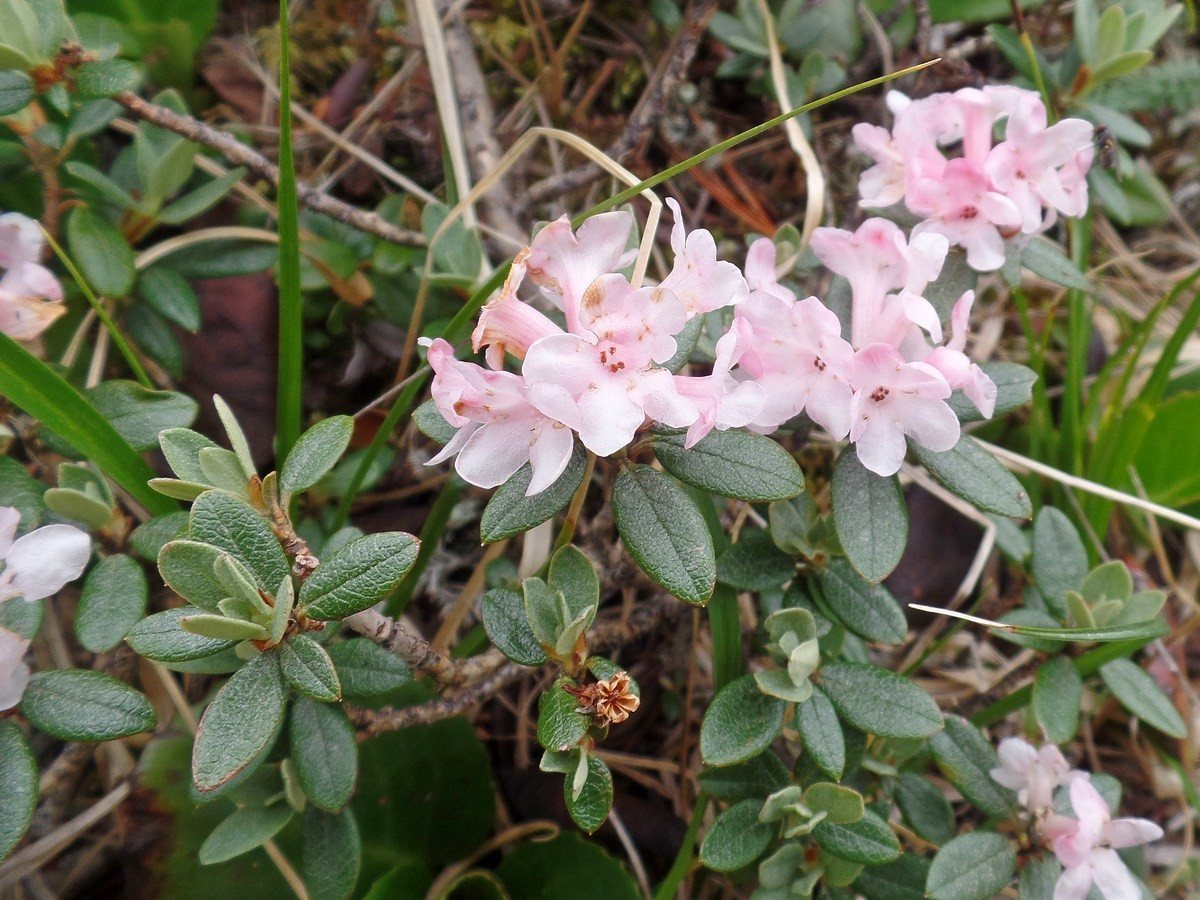





Caucasian
As the name implies, this rhododendron grows in the Caucasus. The shrub is not very tall, with creeping branches. The leaves are dark green, leathery, and have an oblong oval shape. The leaves are bare on the front side, and reddish on the back side. The fragrant flowers are collected in clusters of 8-10 pieces and have a bell-shaped funnel shape. Their color is white or pale green, with green spots inside the throat.
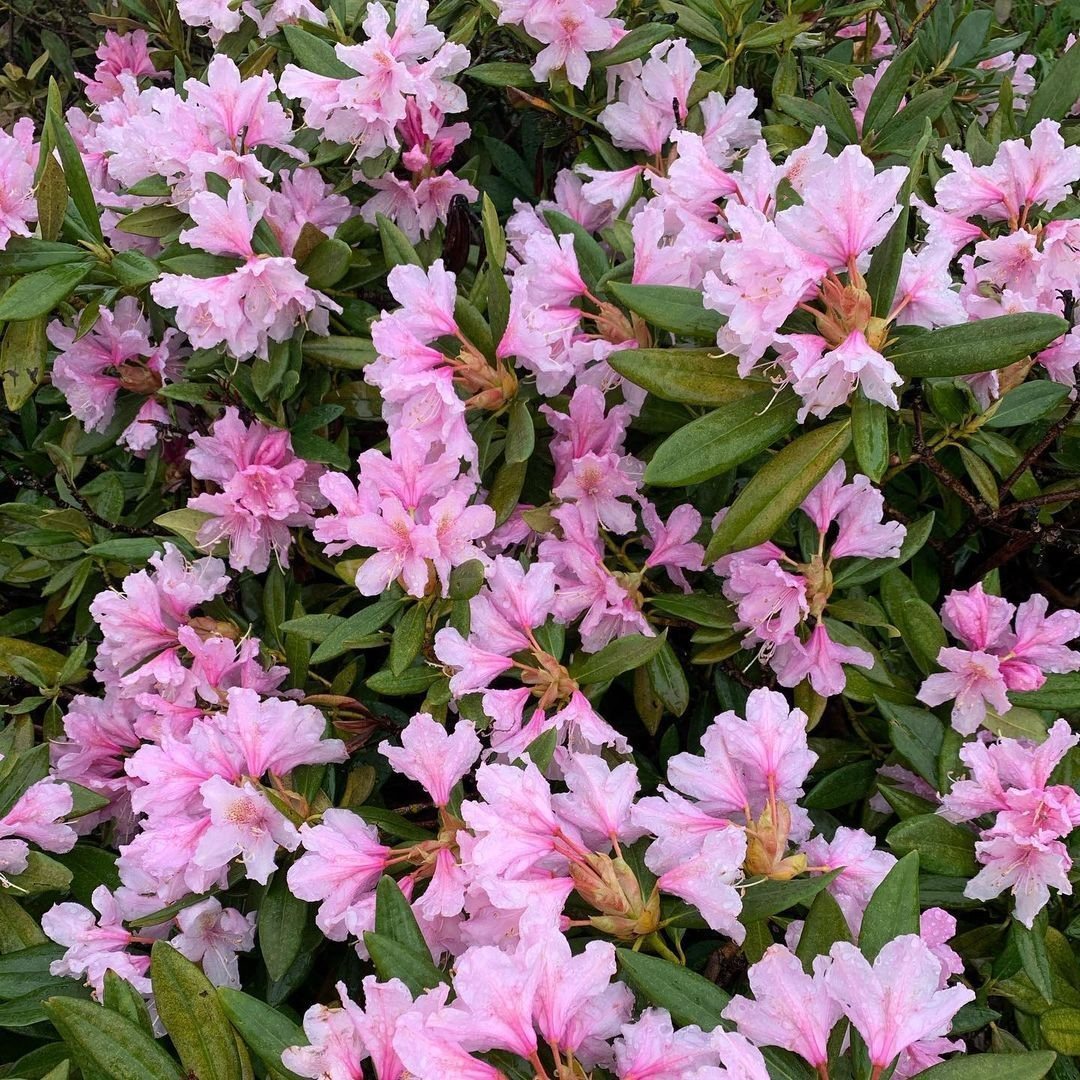
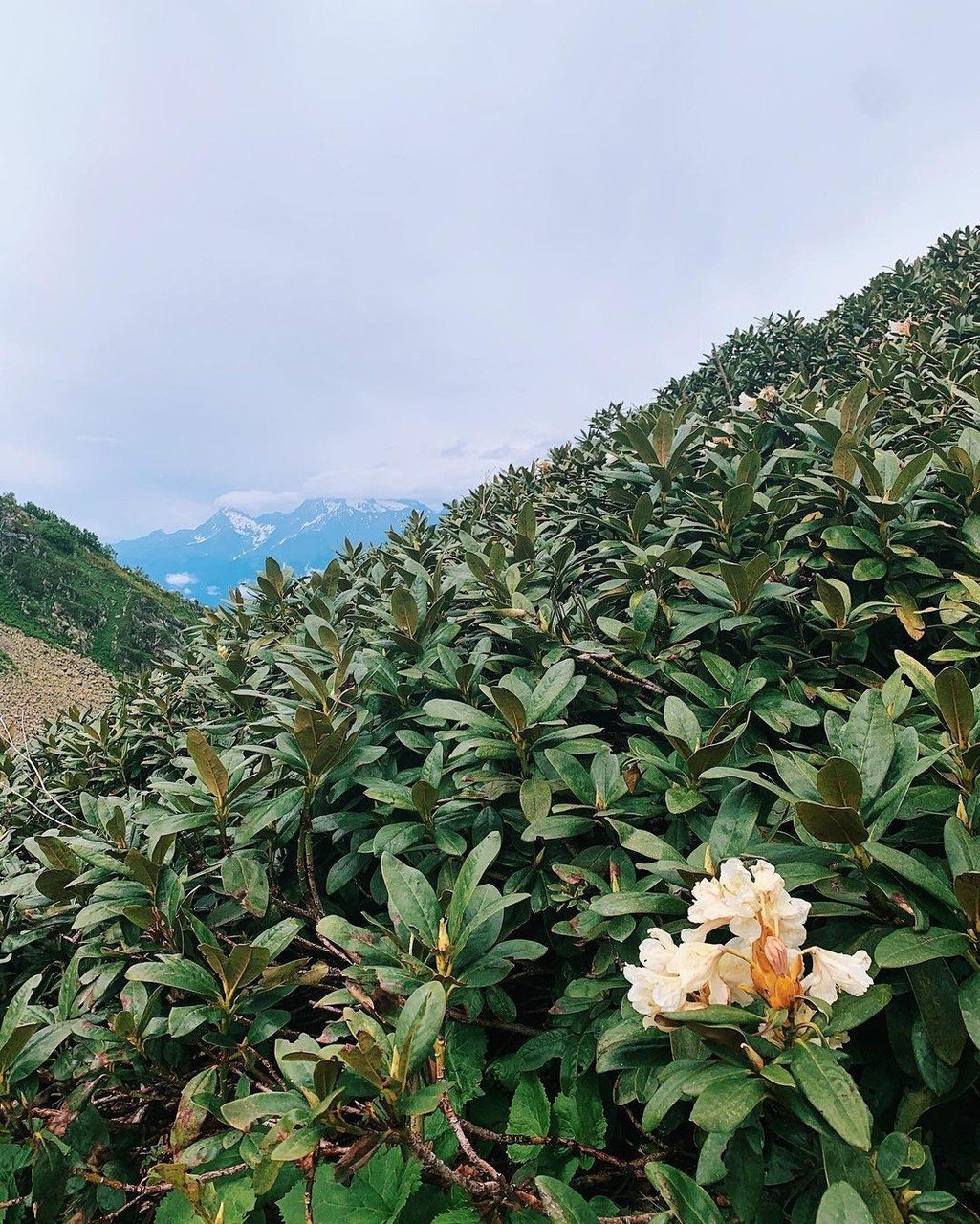

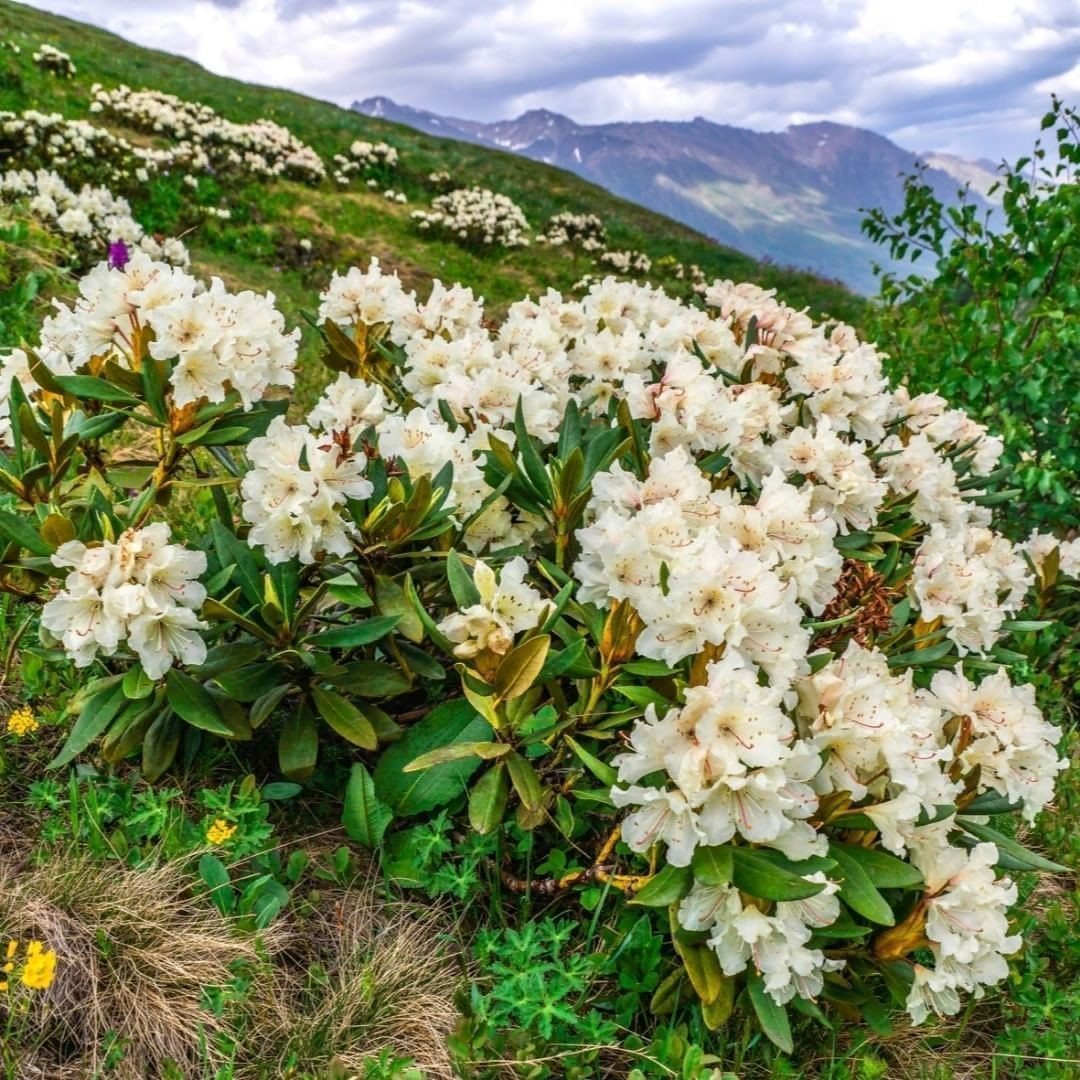
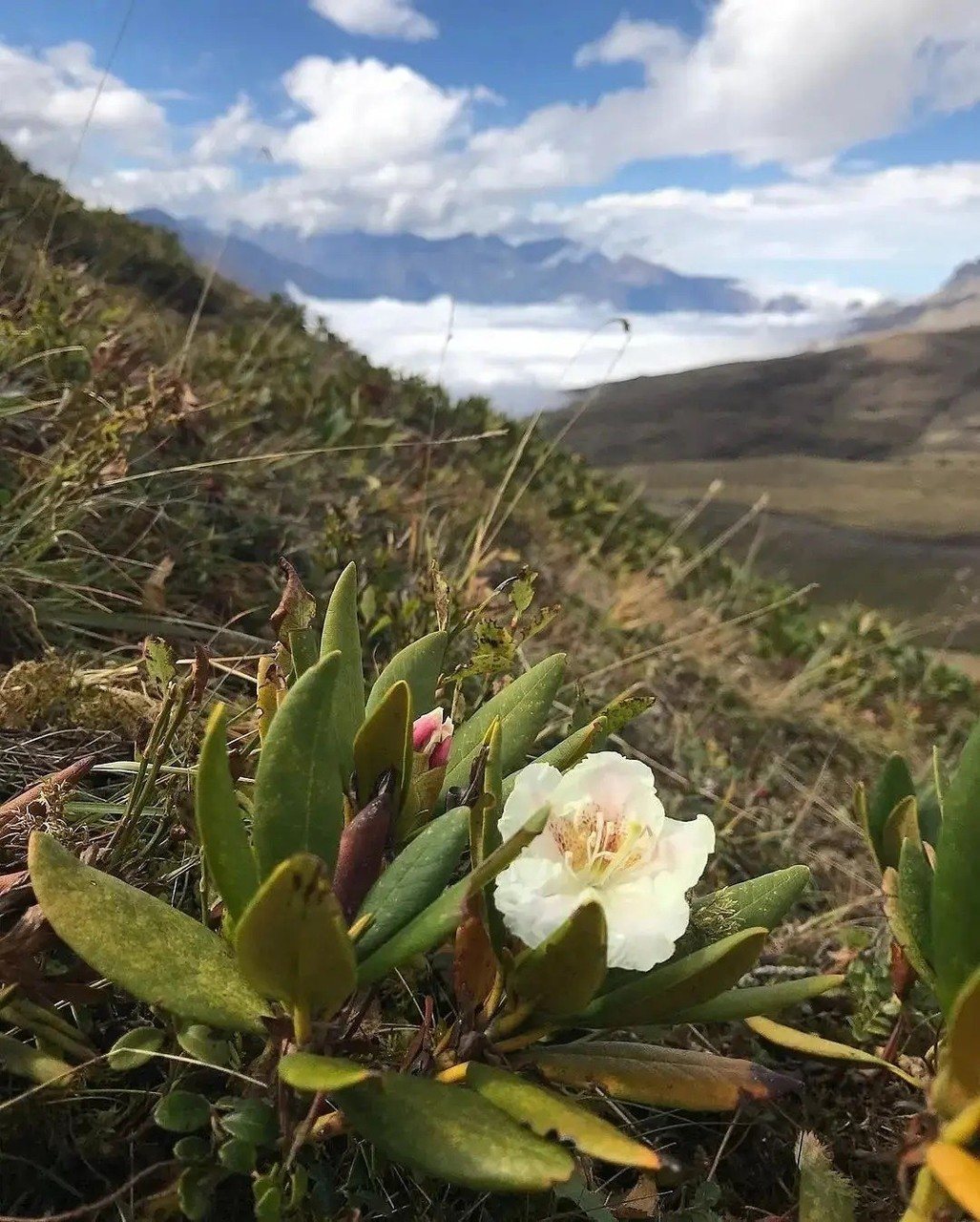





Katevbinsky
A fairly large shrub 2-4 m high. Every year Katevbinsky rhododendron grows 10 cm. The crown is dense, with a diameter of about 2 m. The green leaves have the shape of an ellipse.
The flowers are shaped like a bell and are purple-red, lilac or white. They are quite large and are collected in inflorescences of 20 pieces. Externally, Katevbinsky rhododendron is very attractive and spectacular.
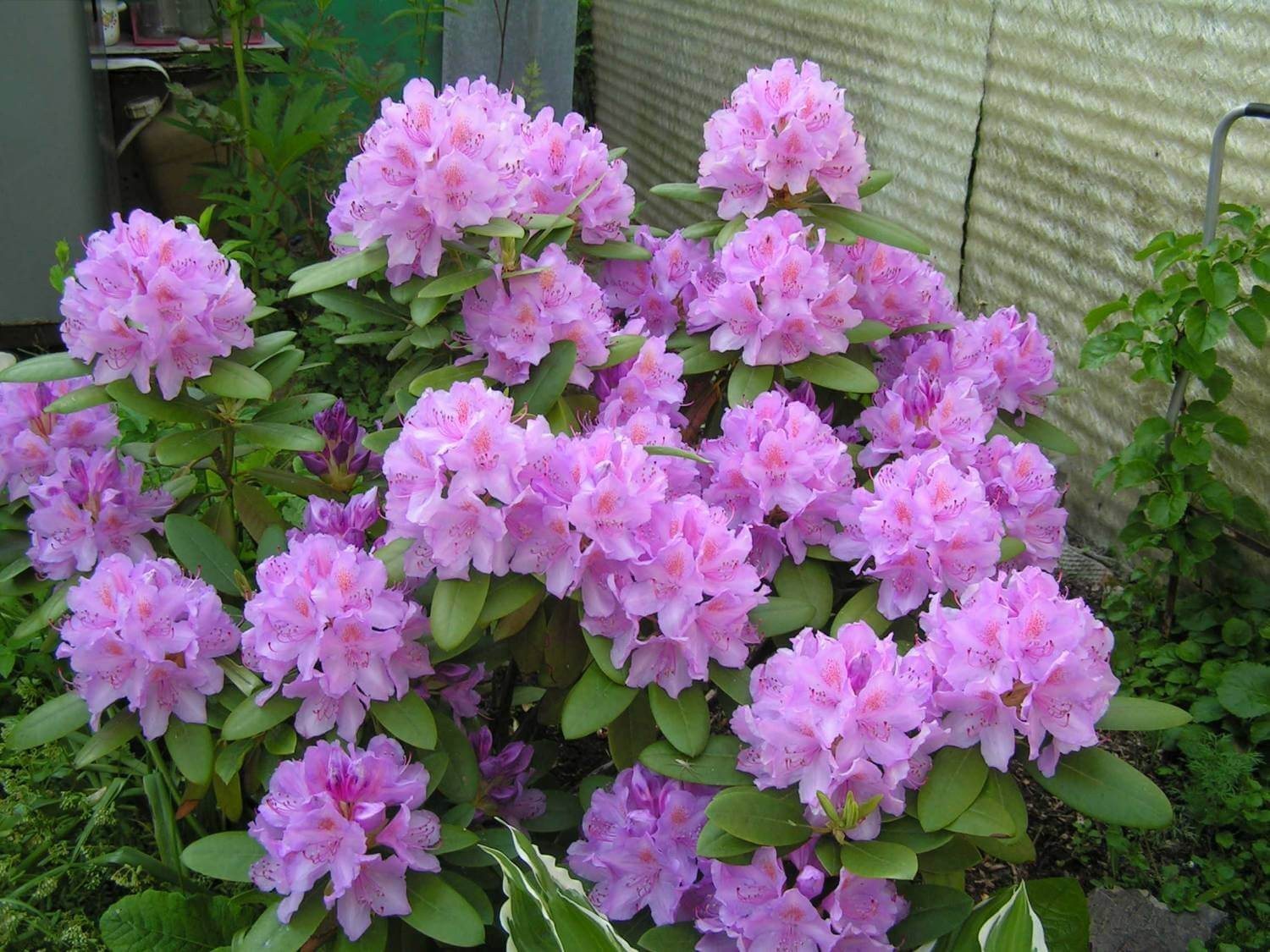
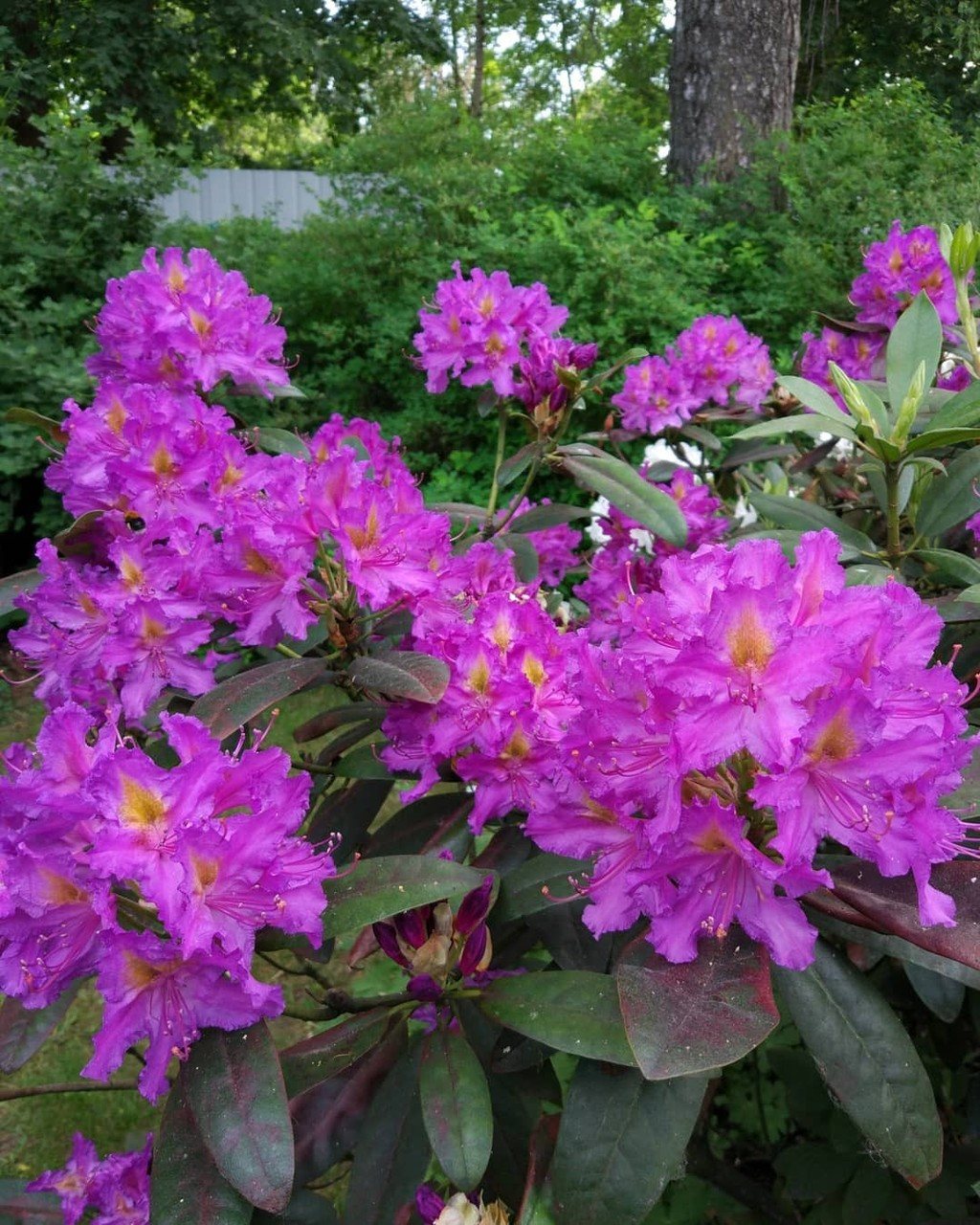
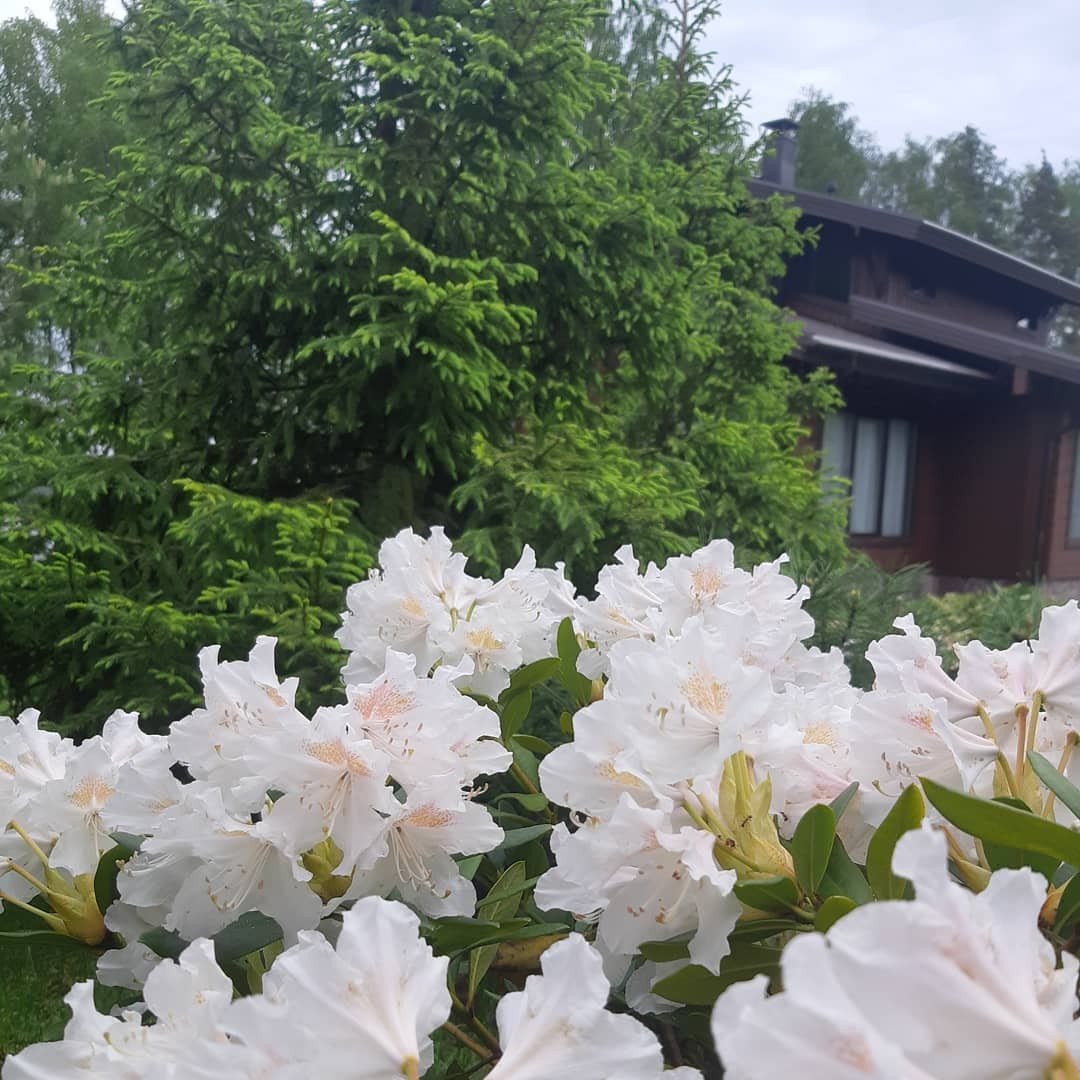
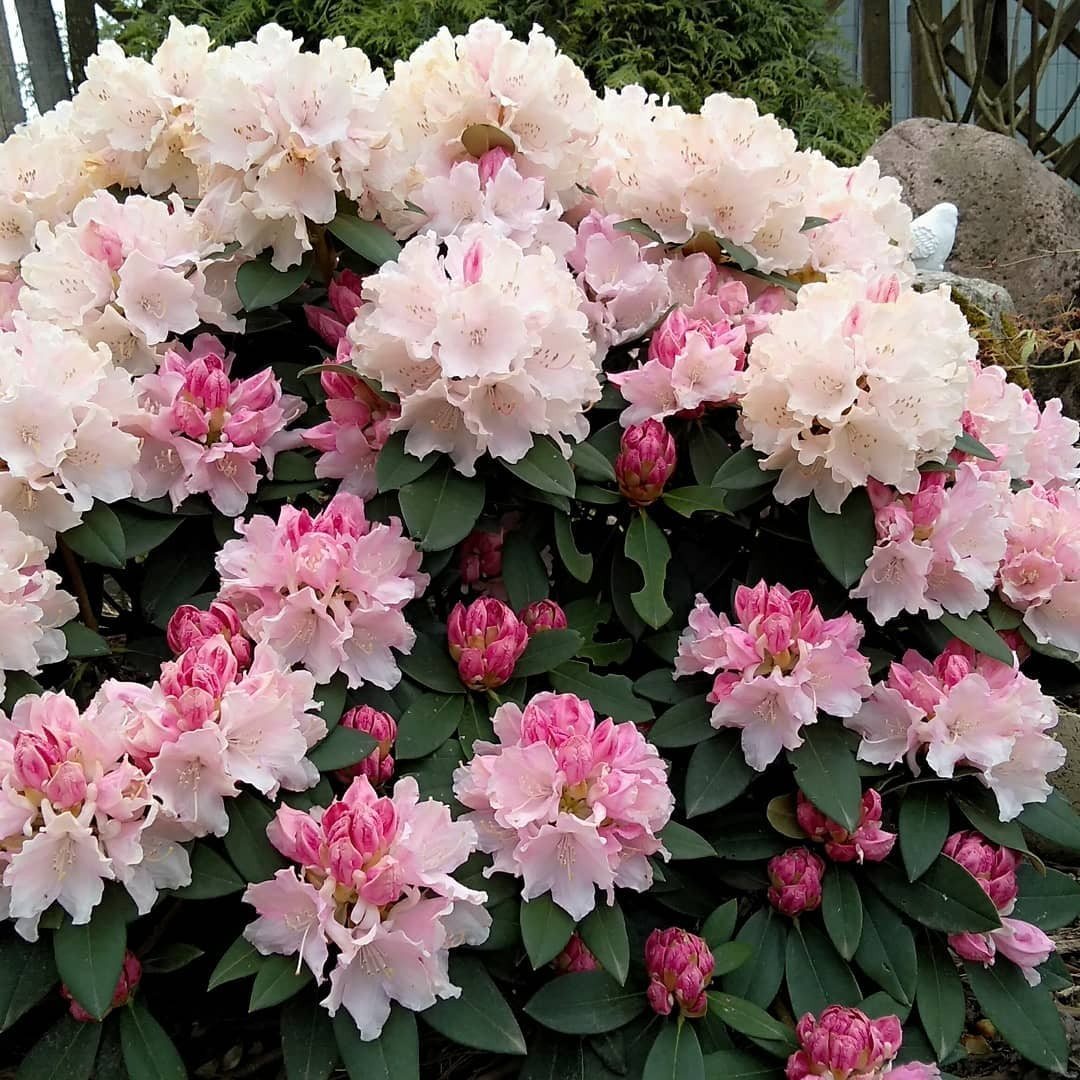
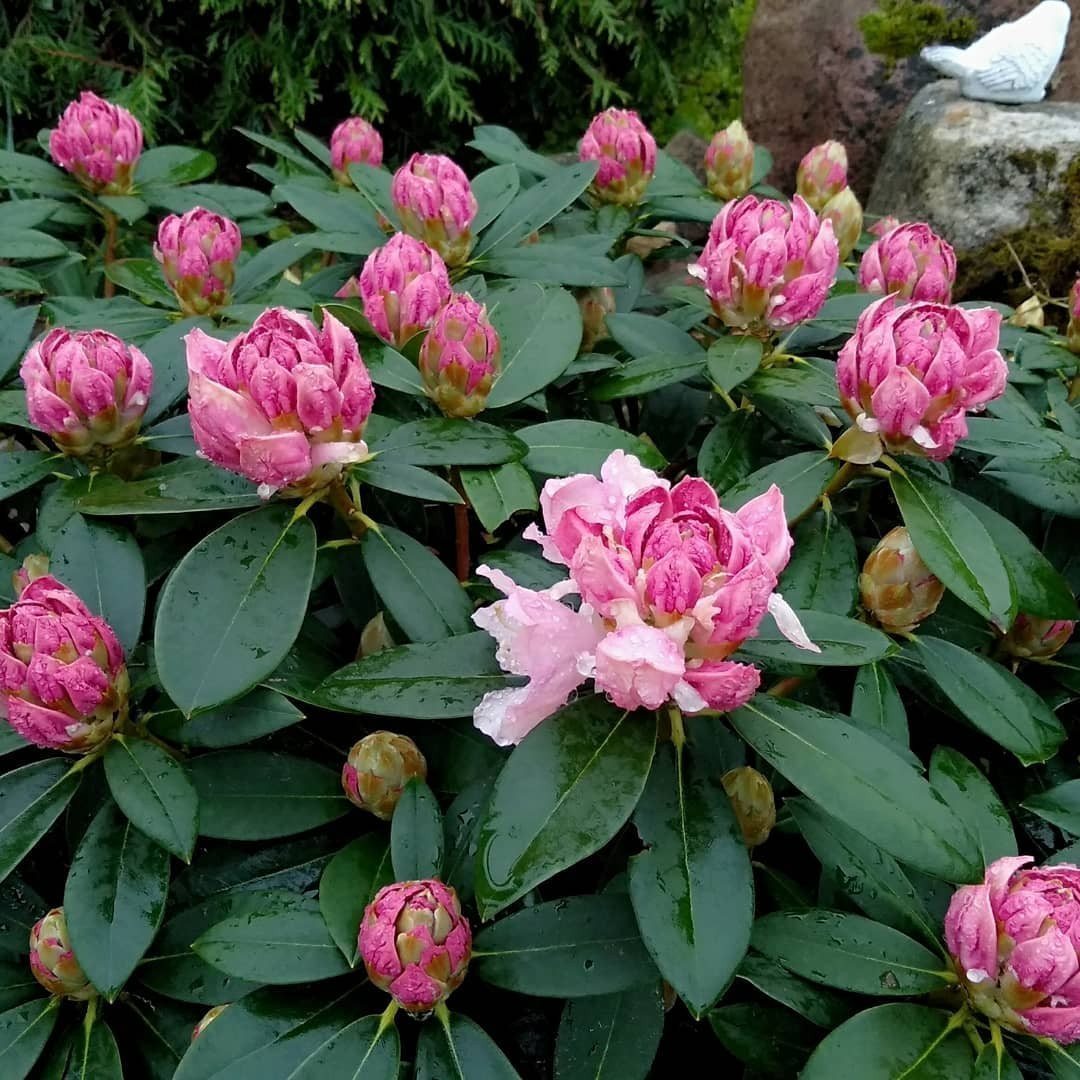





Yakushimansky
It reaches a height of 100 cm, and a crown diameter of 150 cm. The leaves are narrow, long, and have a rich green hue. Flowers are grouped into inflorescences of 10-12 pieces.
Yakushiman rhododendron can change the color of its flowers. Between May and June they gradually change shade from light pink to white.
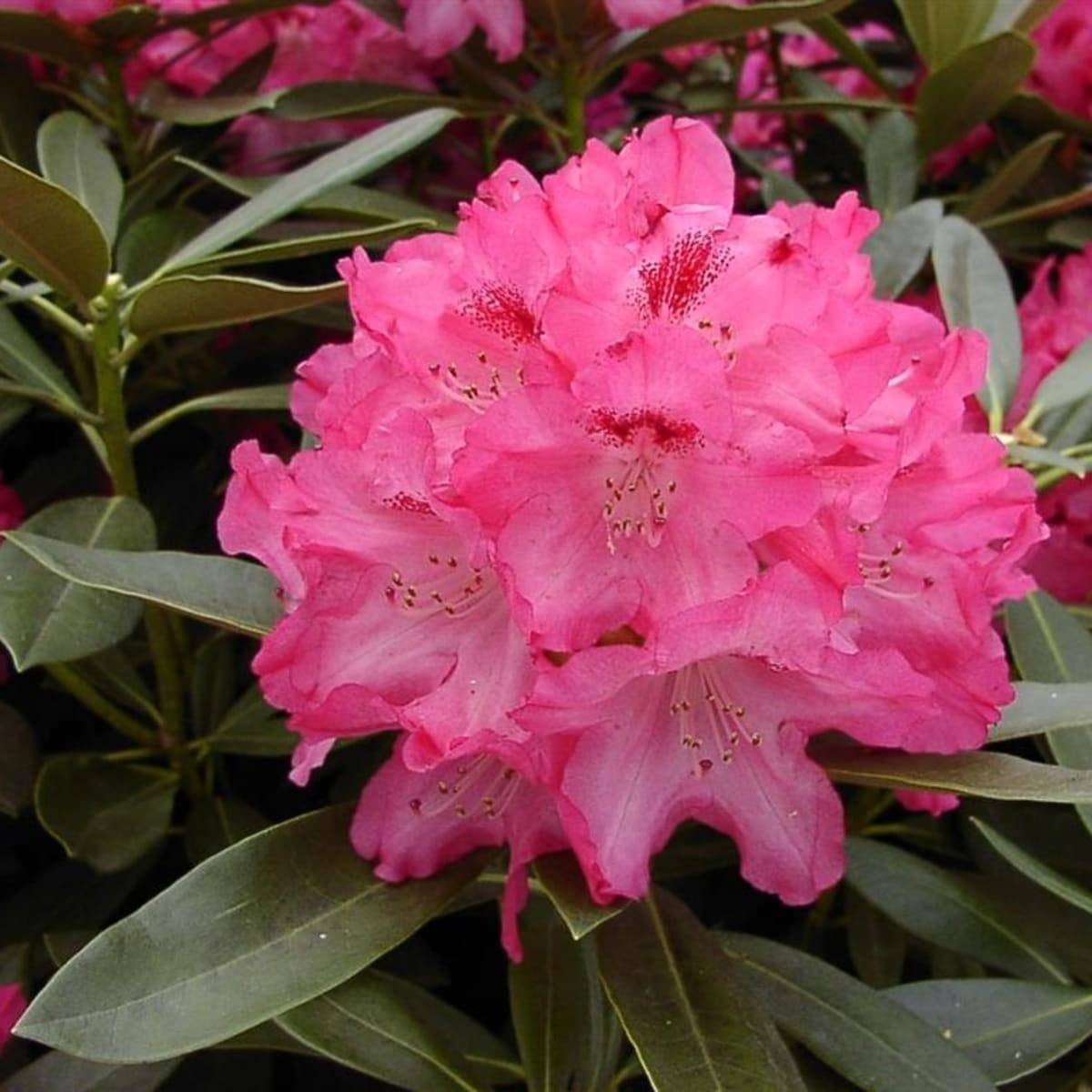
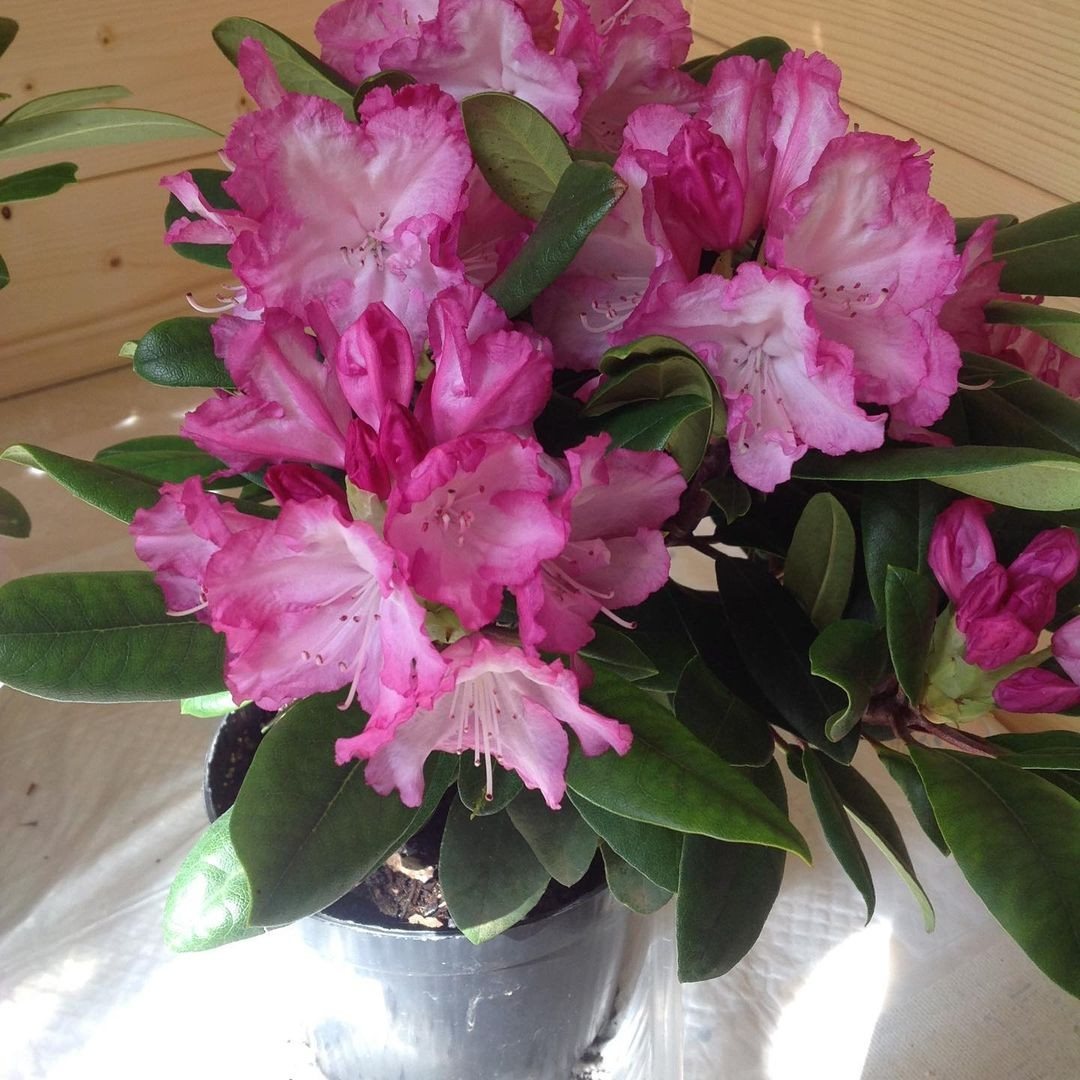
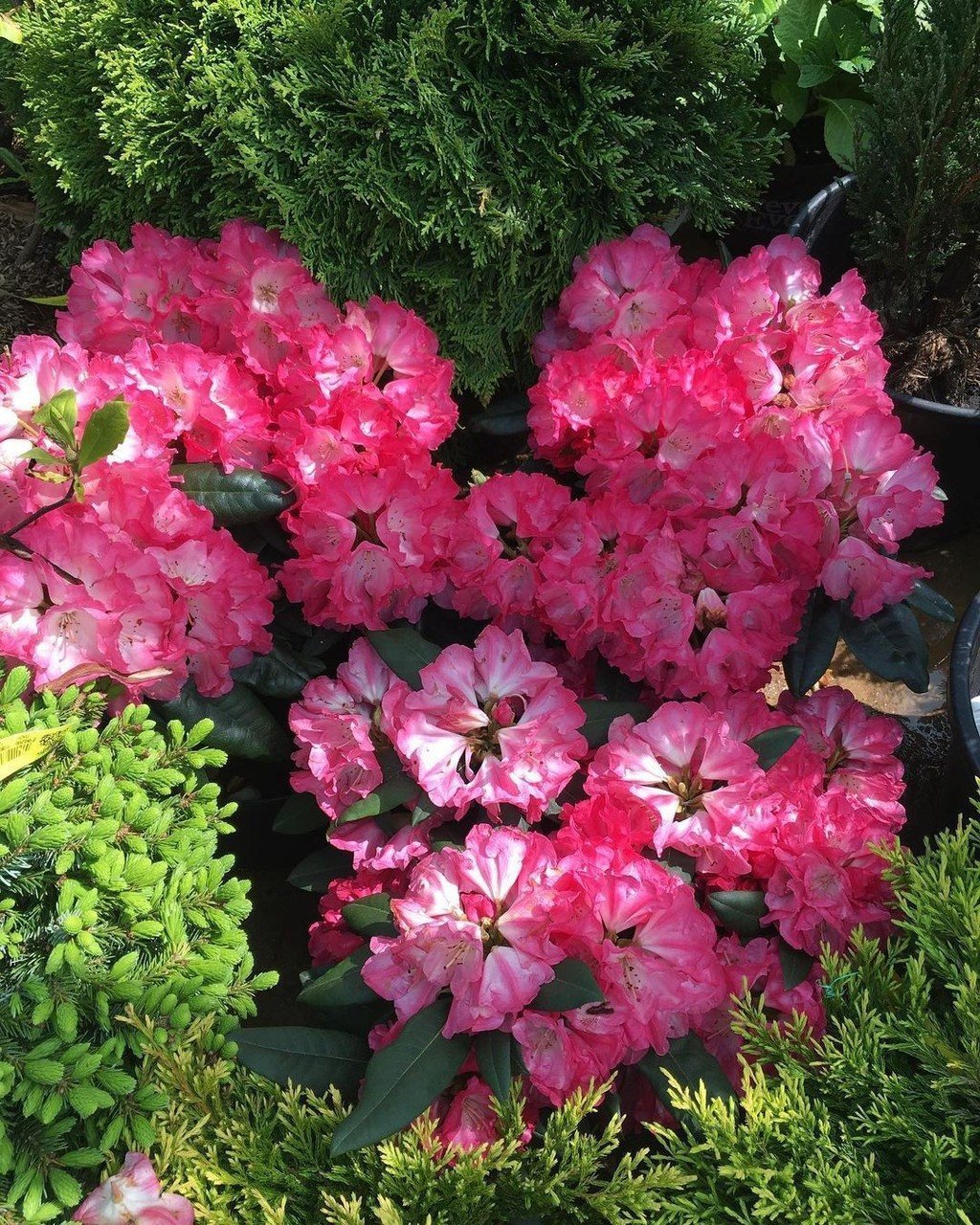
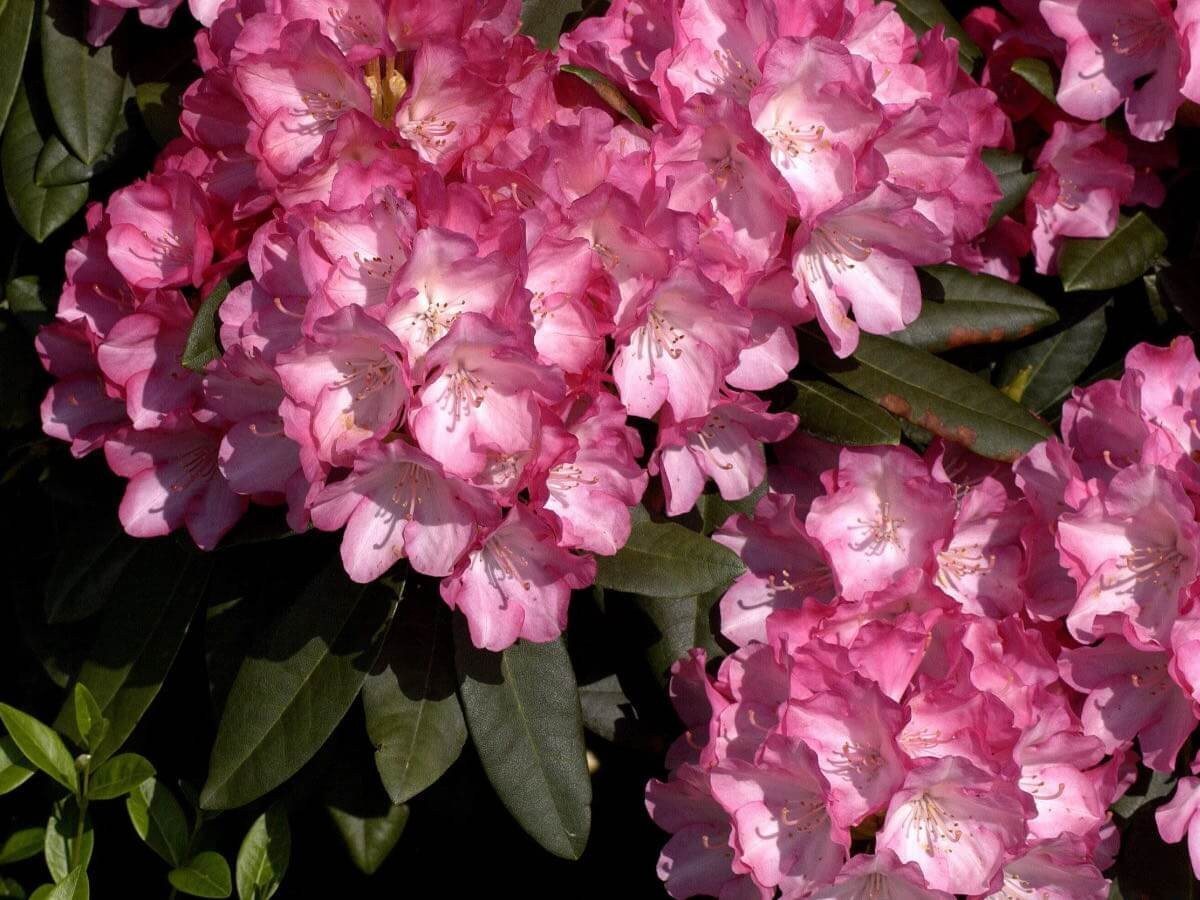
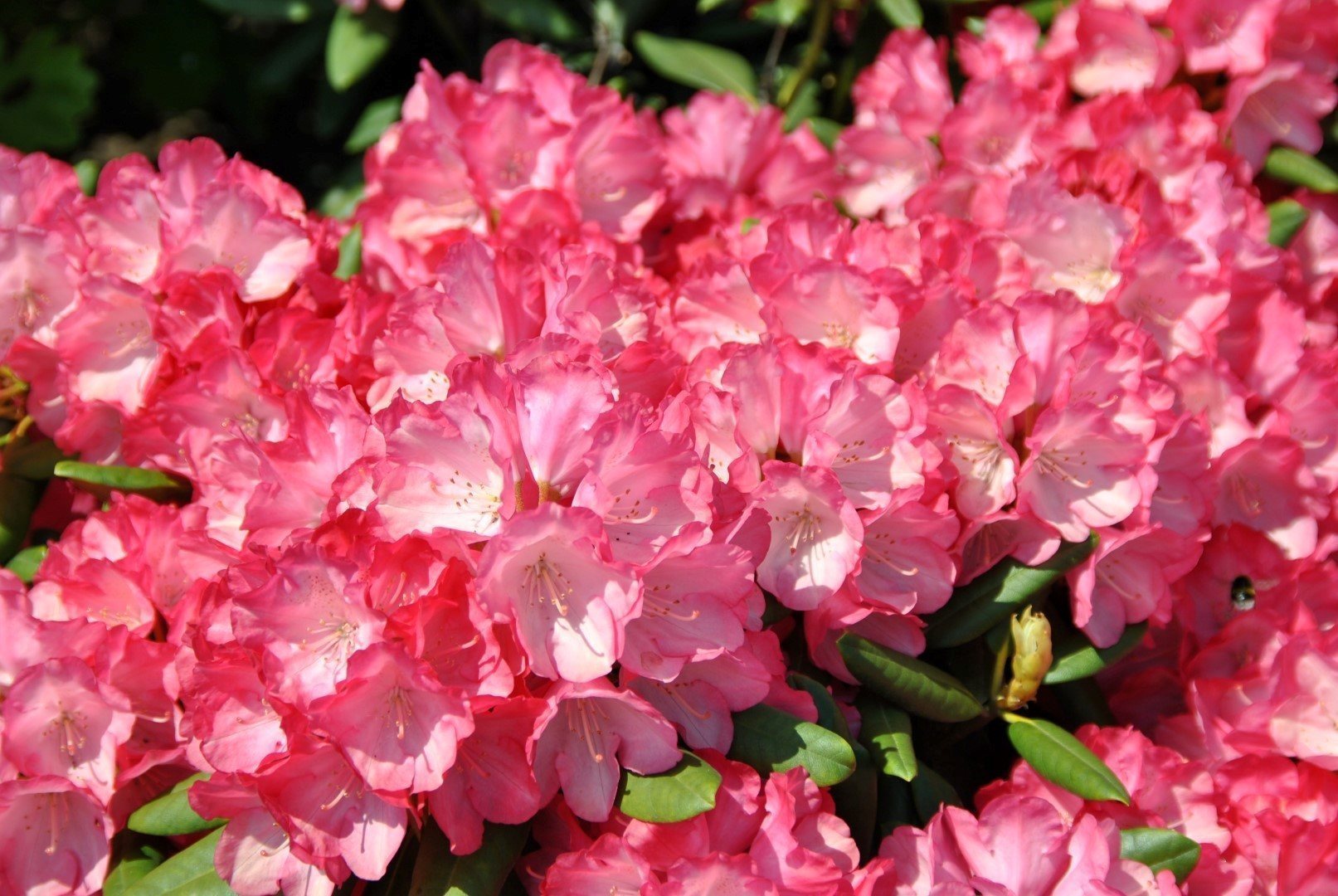





Golden
This shrub can reach a height of 30-60 cm. It is easily recognized thanks to its dark branches pressed to the ground. The petioles of the golden rhododendron are slightly drooping. The evergreen leaves are shaped like an ellipse, curled at the edges. The foliage reaches 2 - 8 cm in length and 1-2.5 cm in width. The lower parts of the leaves are painted in pale golden tones, and the upper parts are dark green.
This variety of rhododendron blooms with yellow and golden buds.
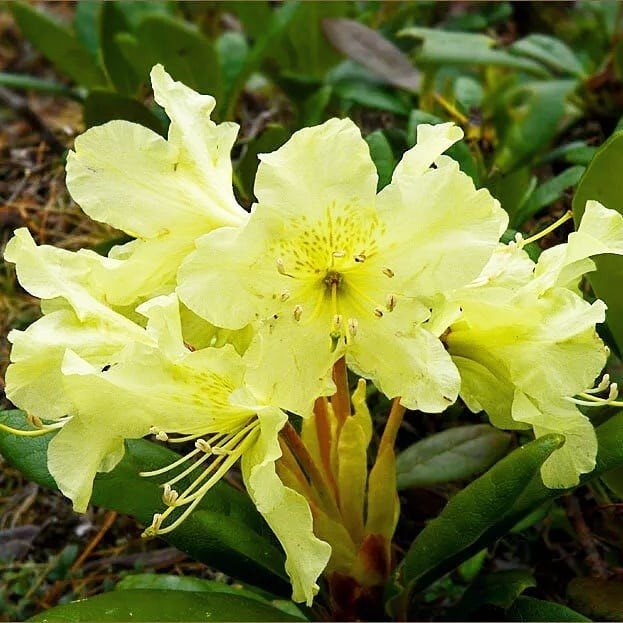
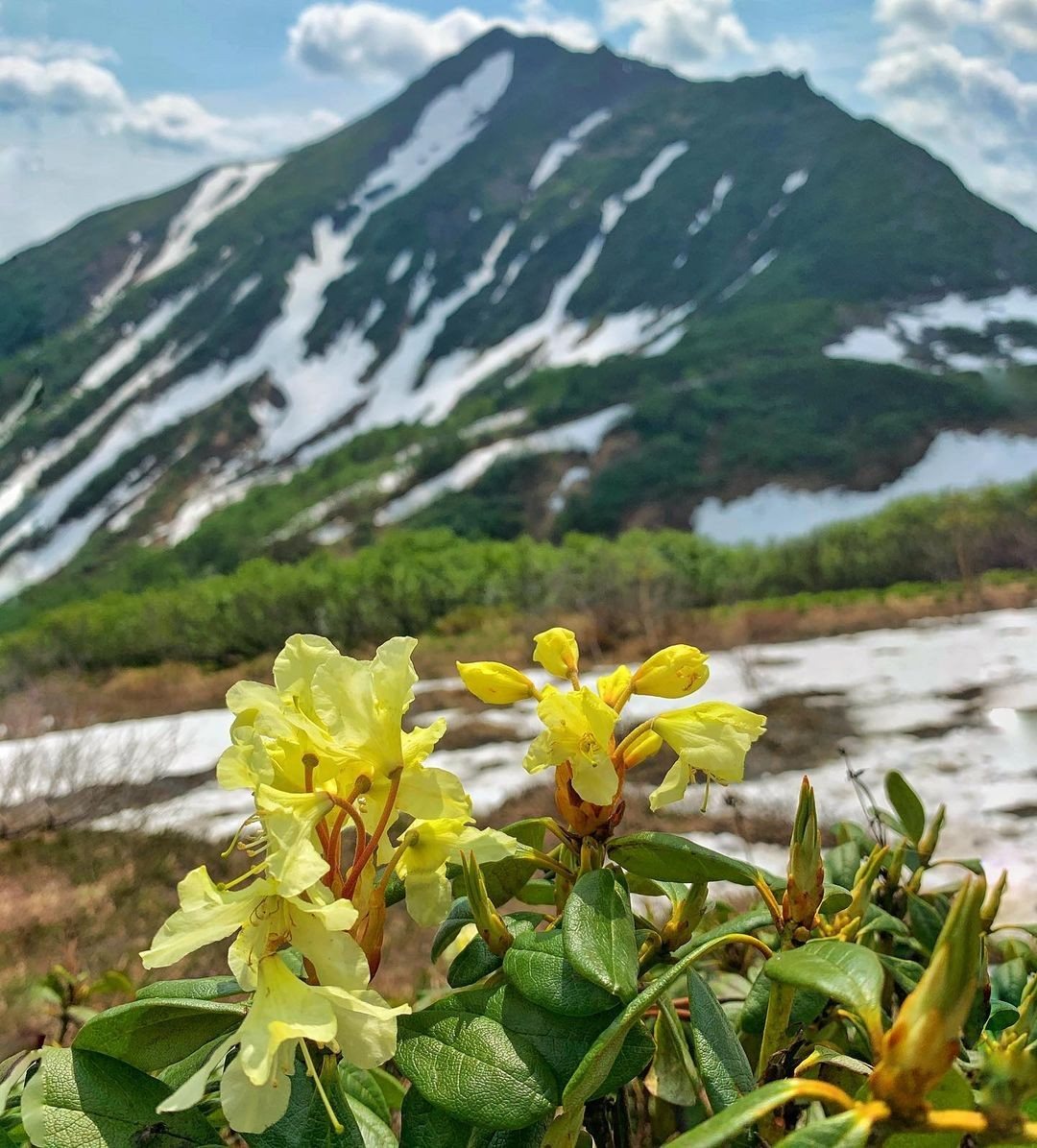
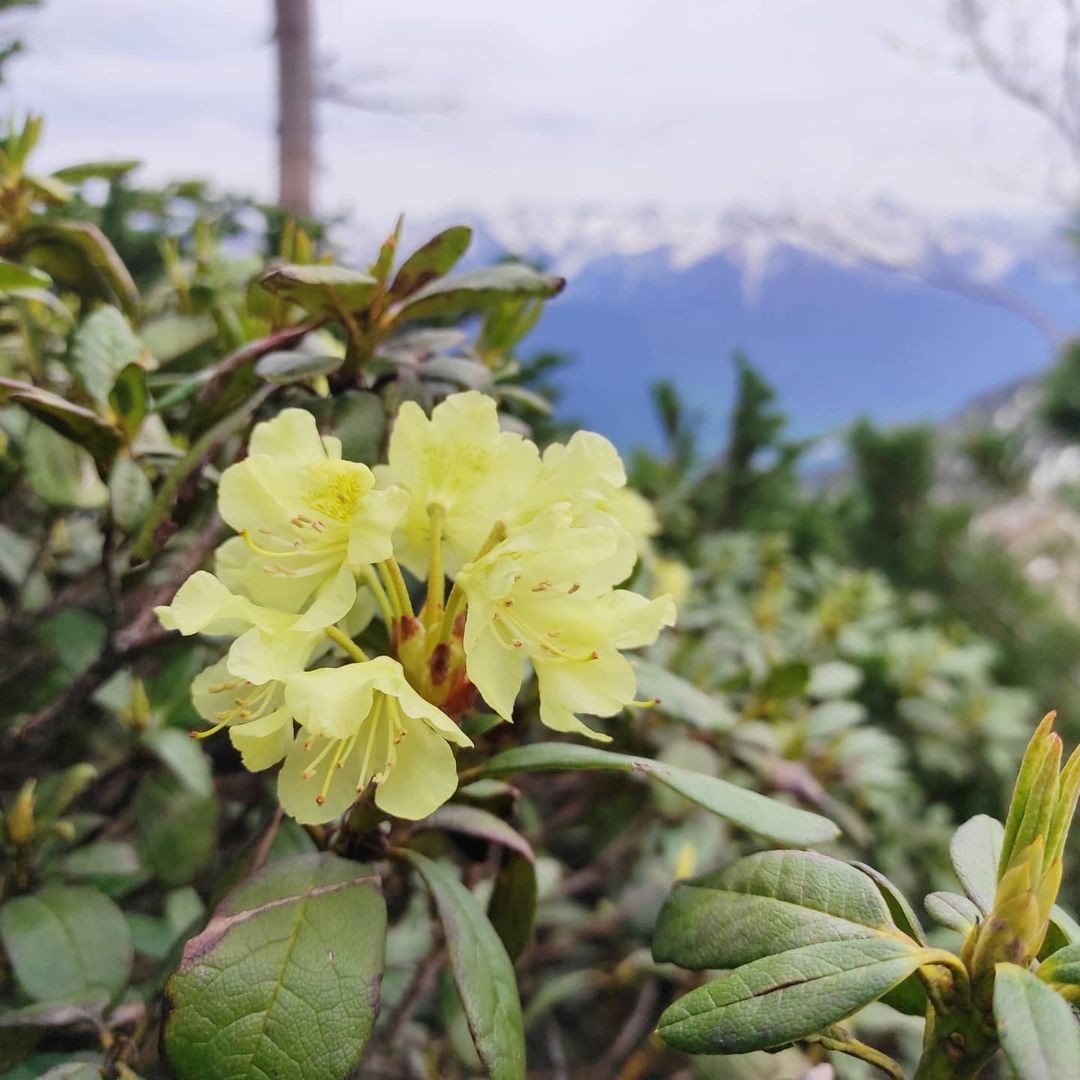
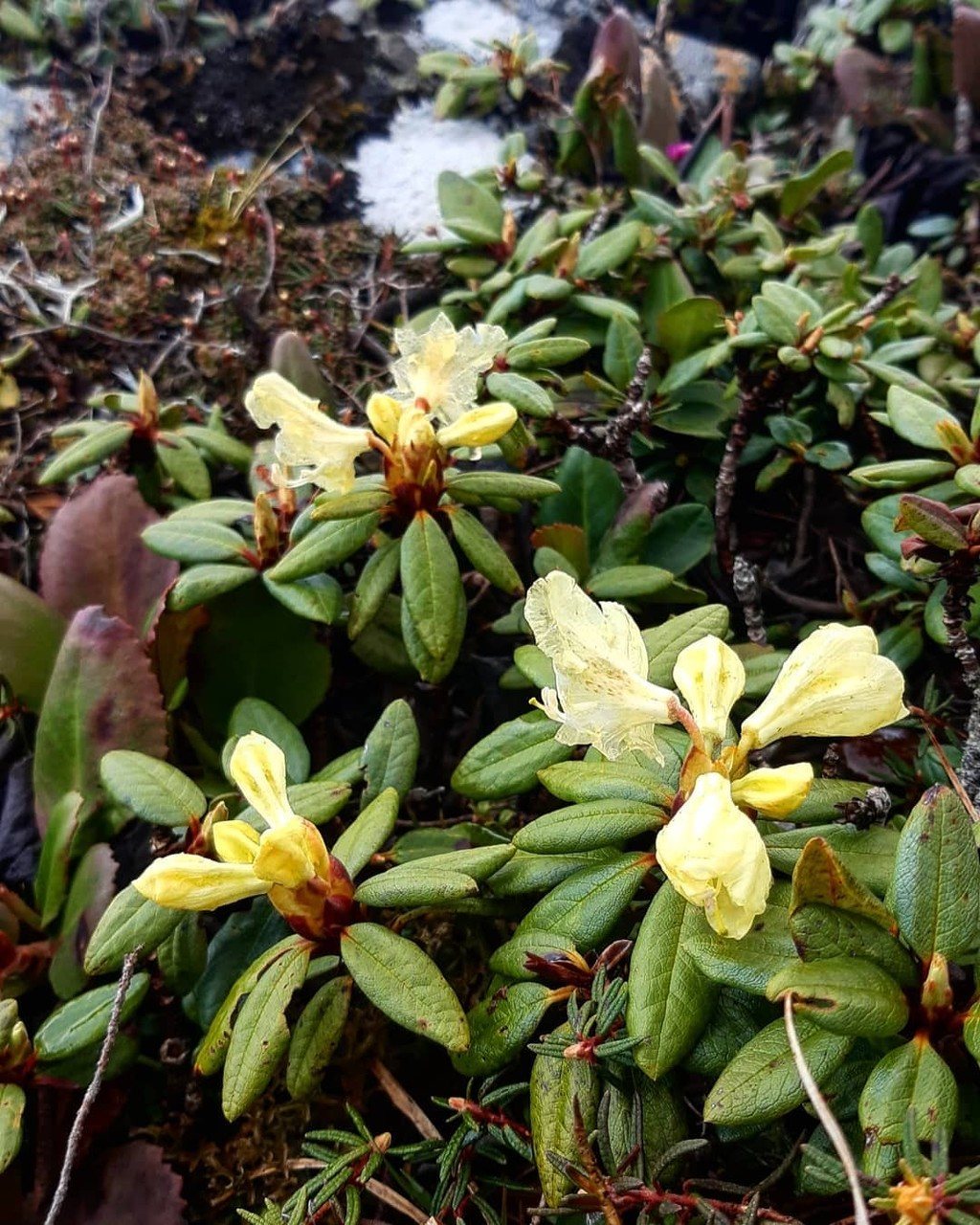
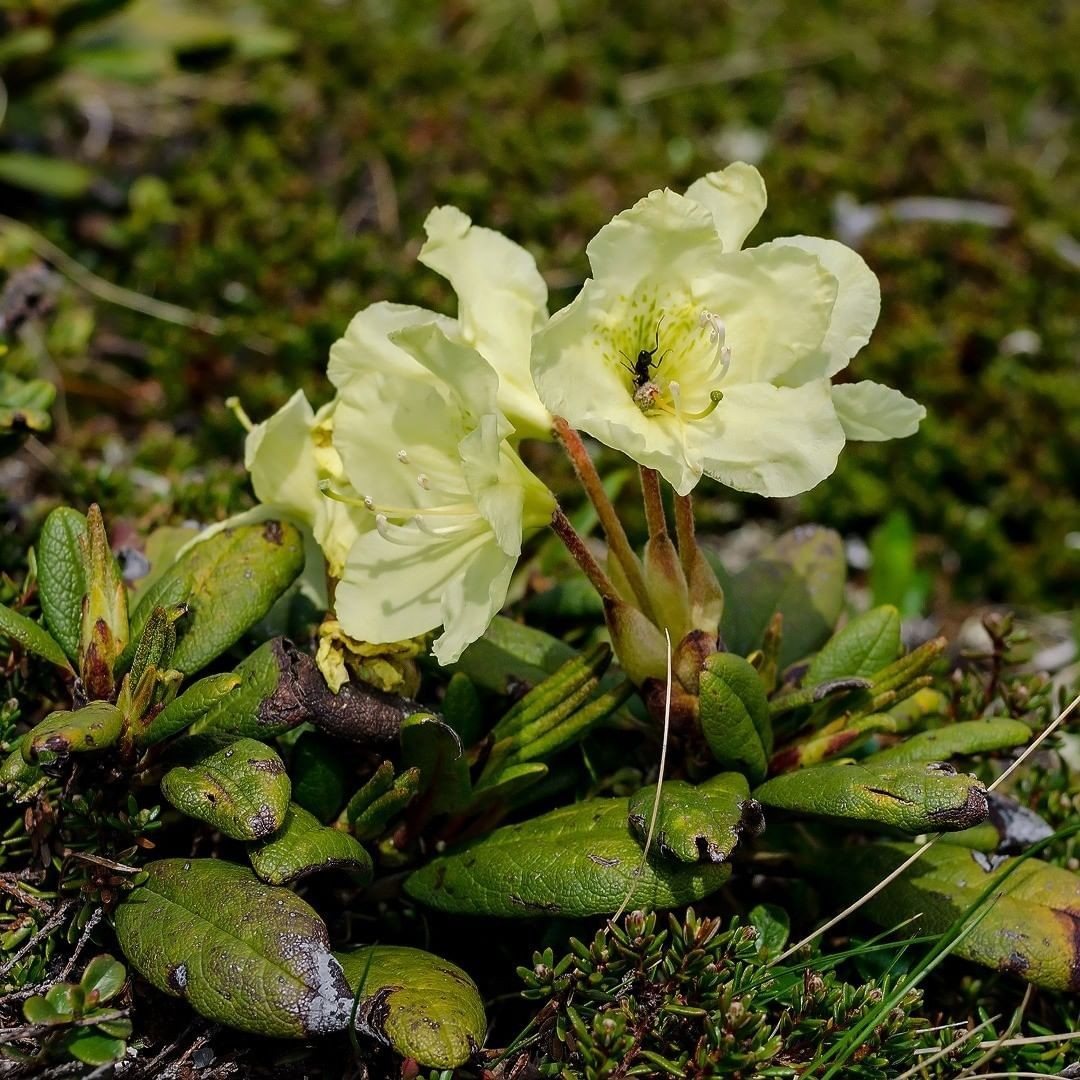





Madame Masson
A shrub reaching a height of 2 m and a crown width of up to 3 m. The dark green leaves are oval-shaped, shiny, and leathery. Their length reaches 10-15 cm, and width - 2-4 cm. Large white flowers with a yellow eye are large and almost flat in shape. They gather in corymbose inflorescences. Madame Masson blooms from May to June.
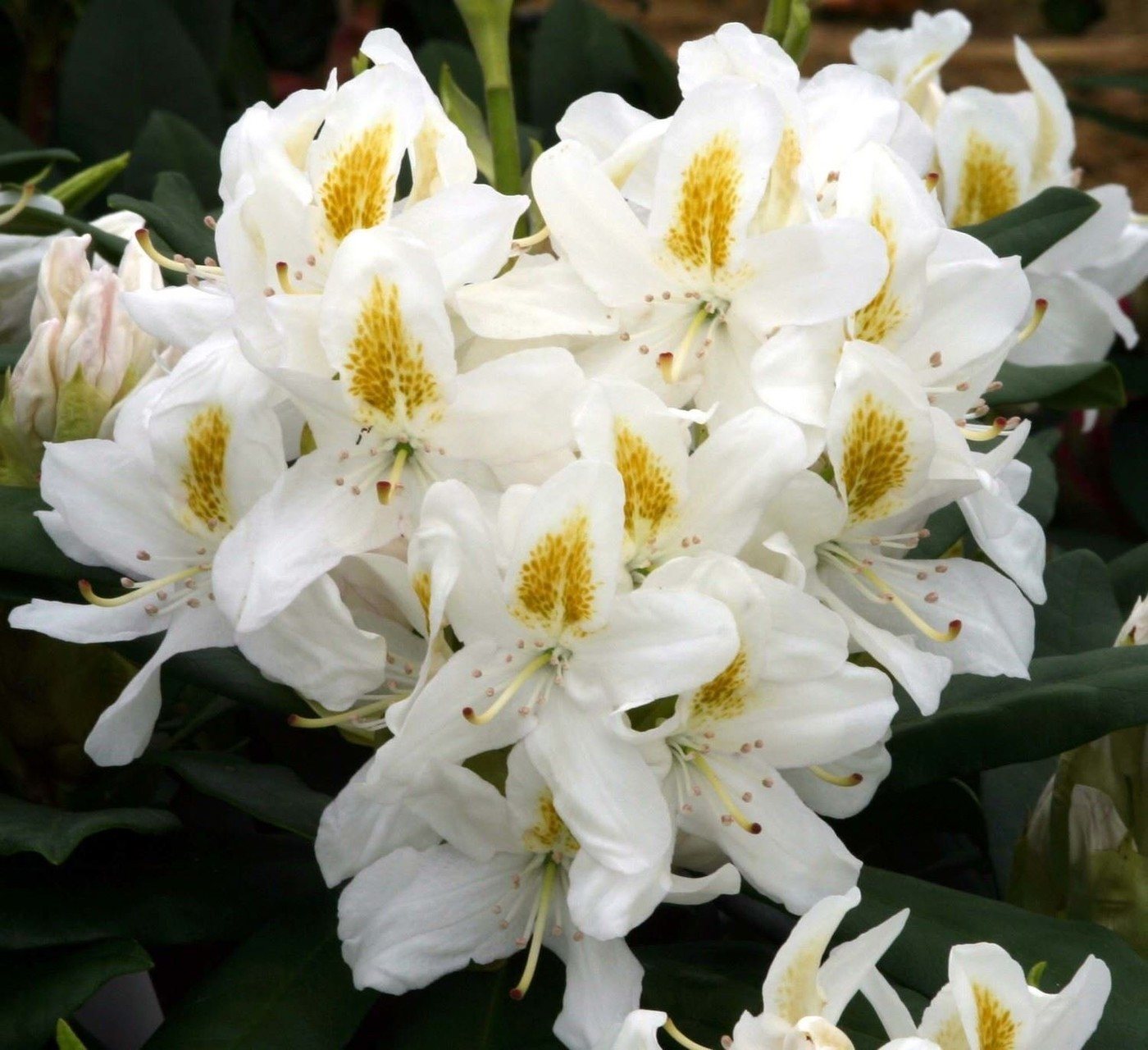
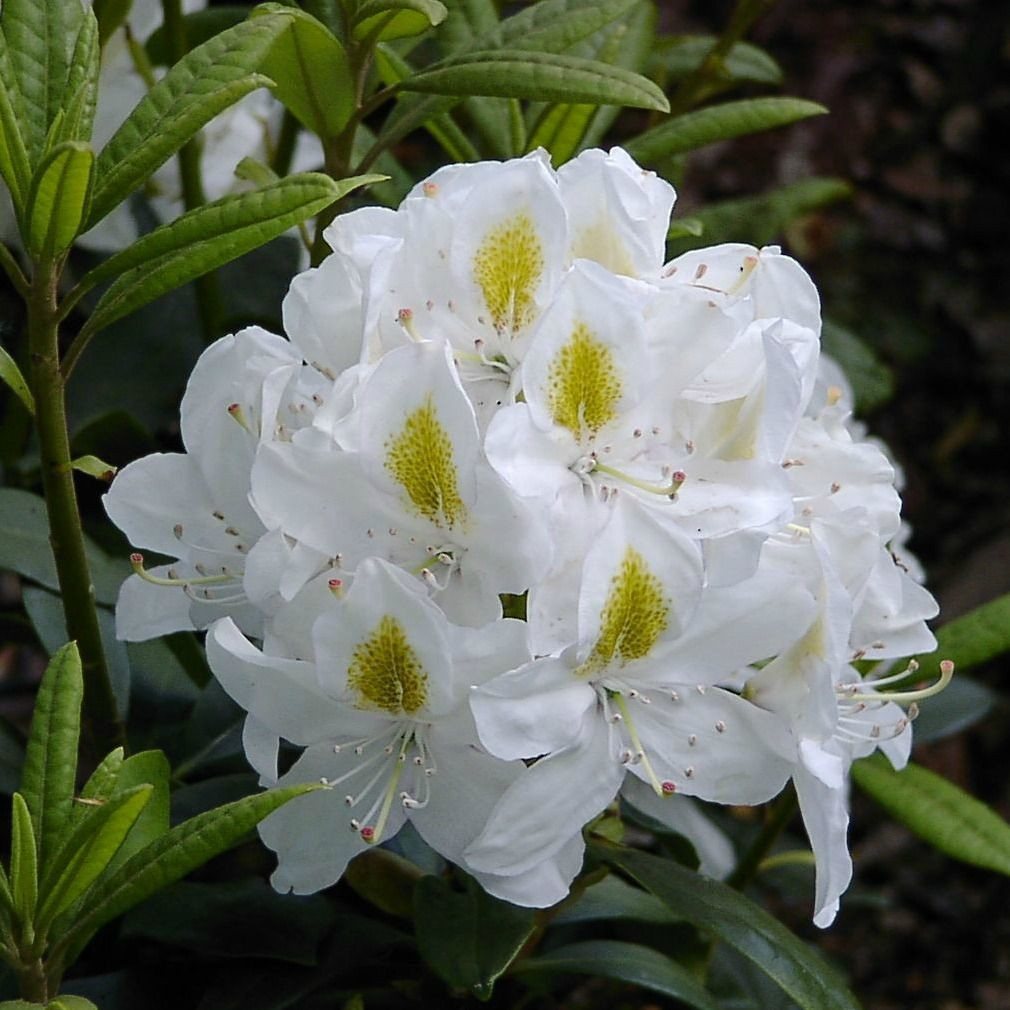
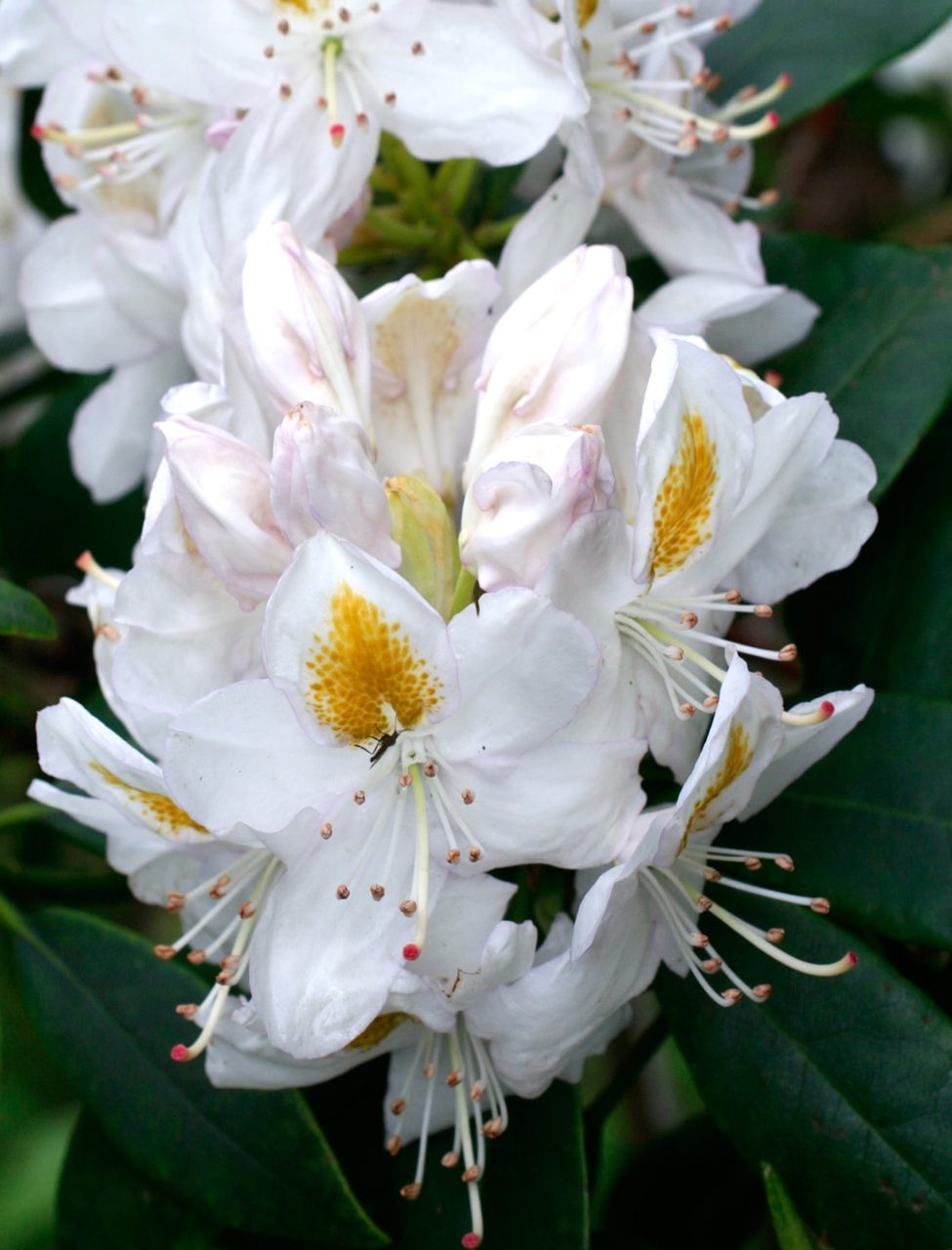
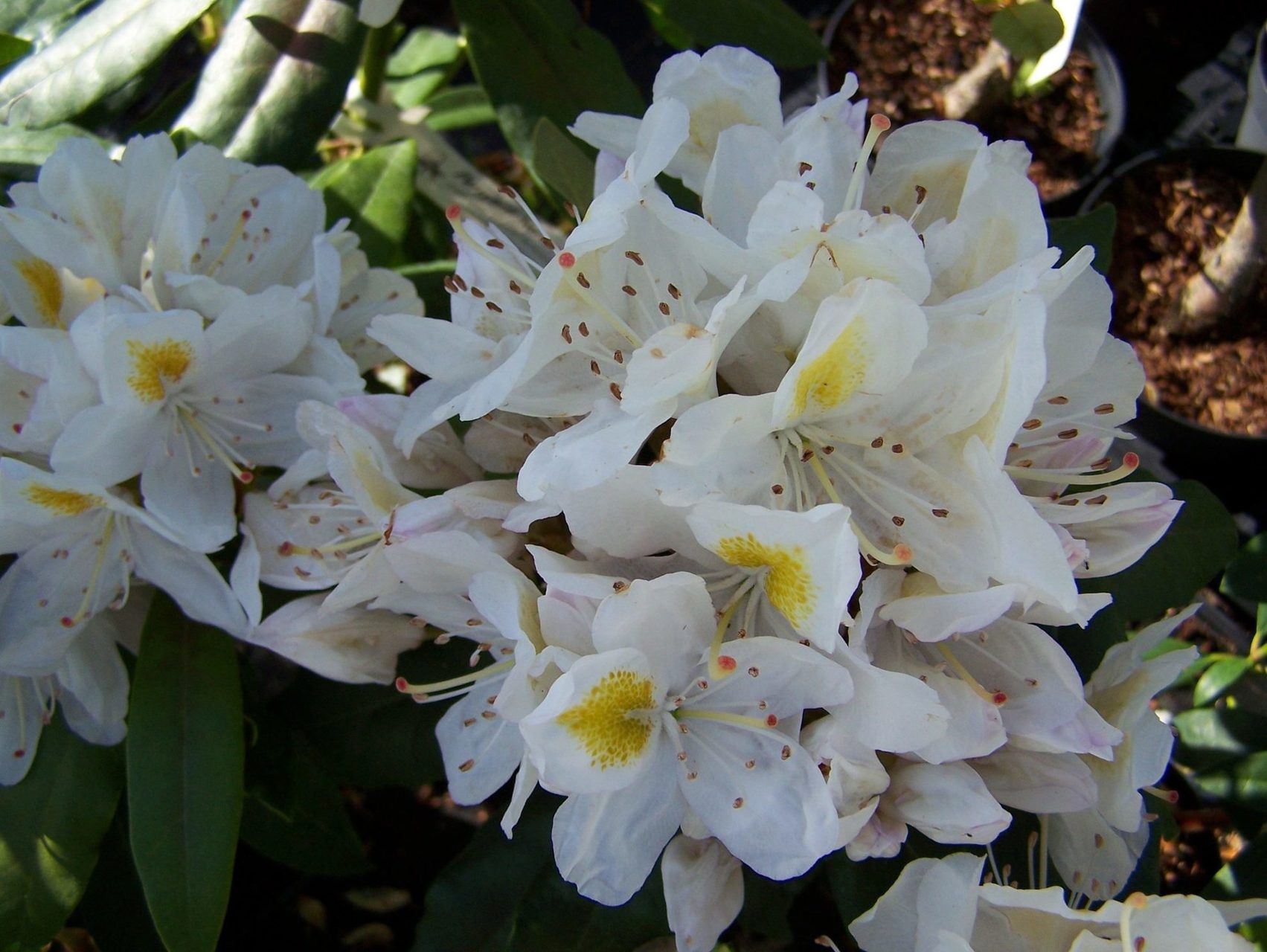
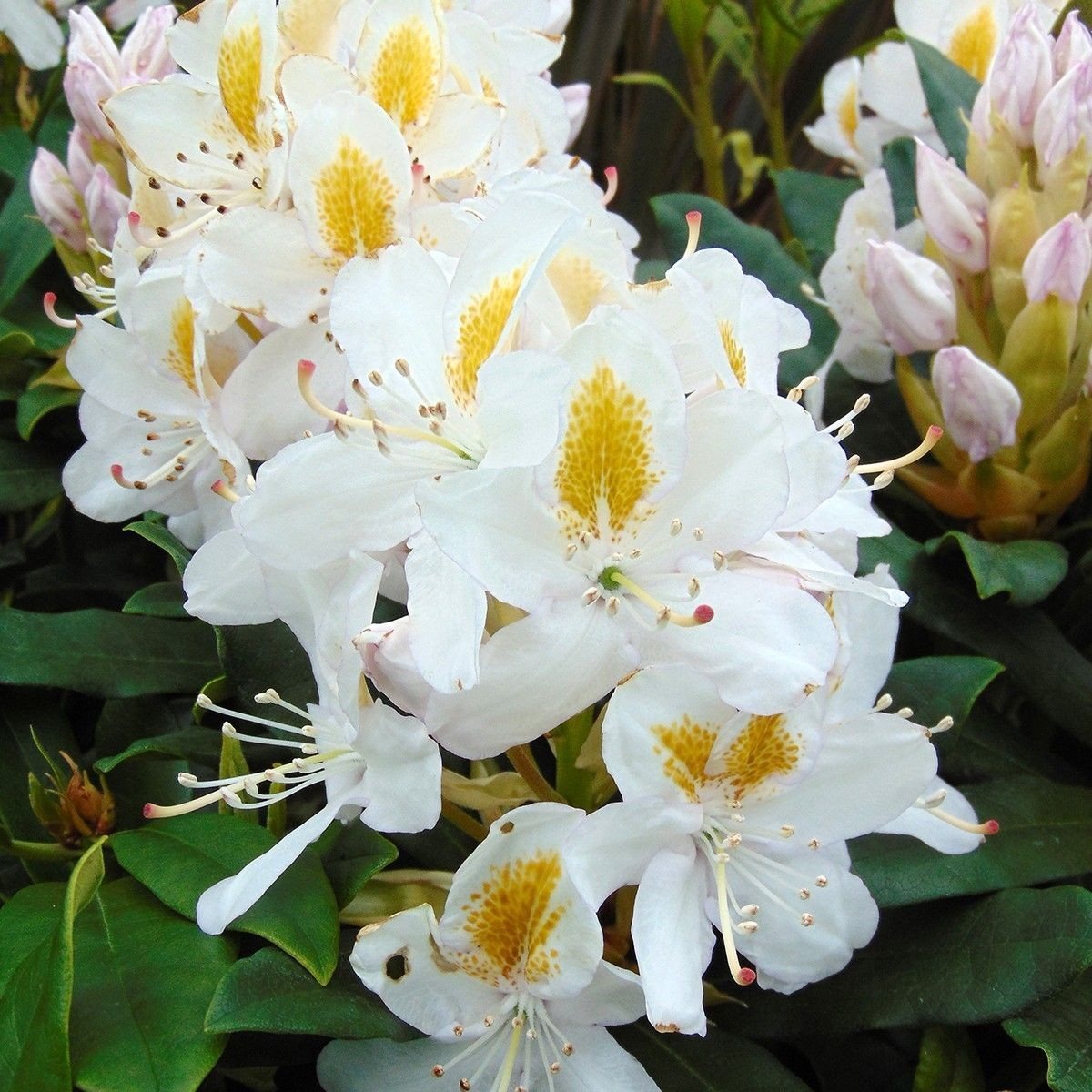





Cunninghams White
Decorative evergreen shrub with spreading branches. It reaches a height of 2 m, the crown has a diameter of 1 m. Large dark green leathery leaves have the shape of an ellipse and reach a length of 10-12 cm.
In April-May, rhododendron is covered with light pink buds, which then turn into white with brown and pale purple specks. Inflorescences are formed from 7-10 flowers. This variety of rhododendron can rebloom in the fall.
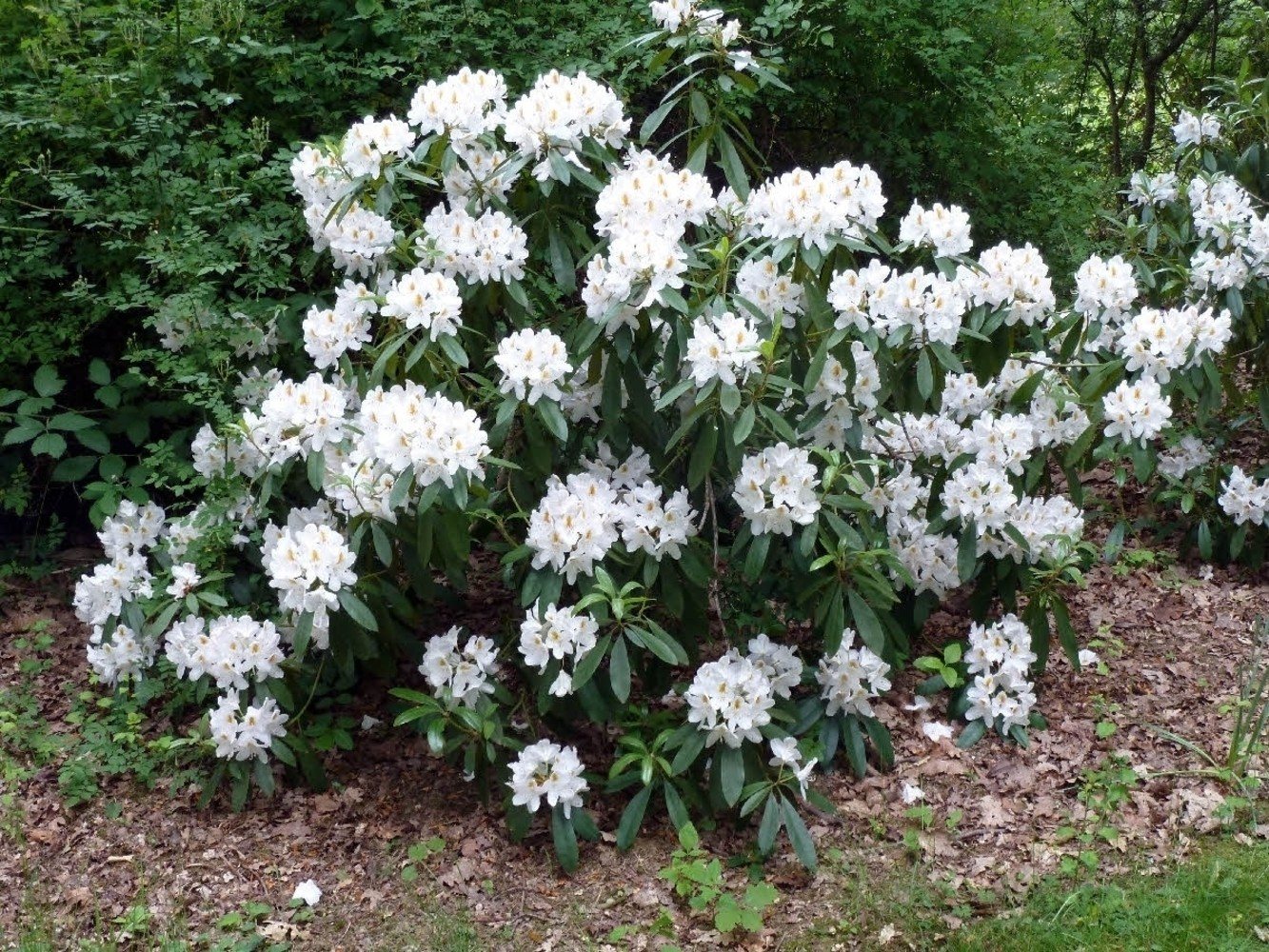
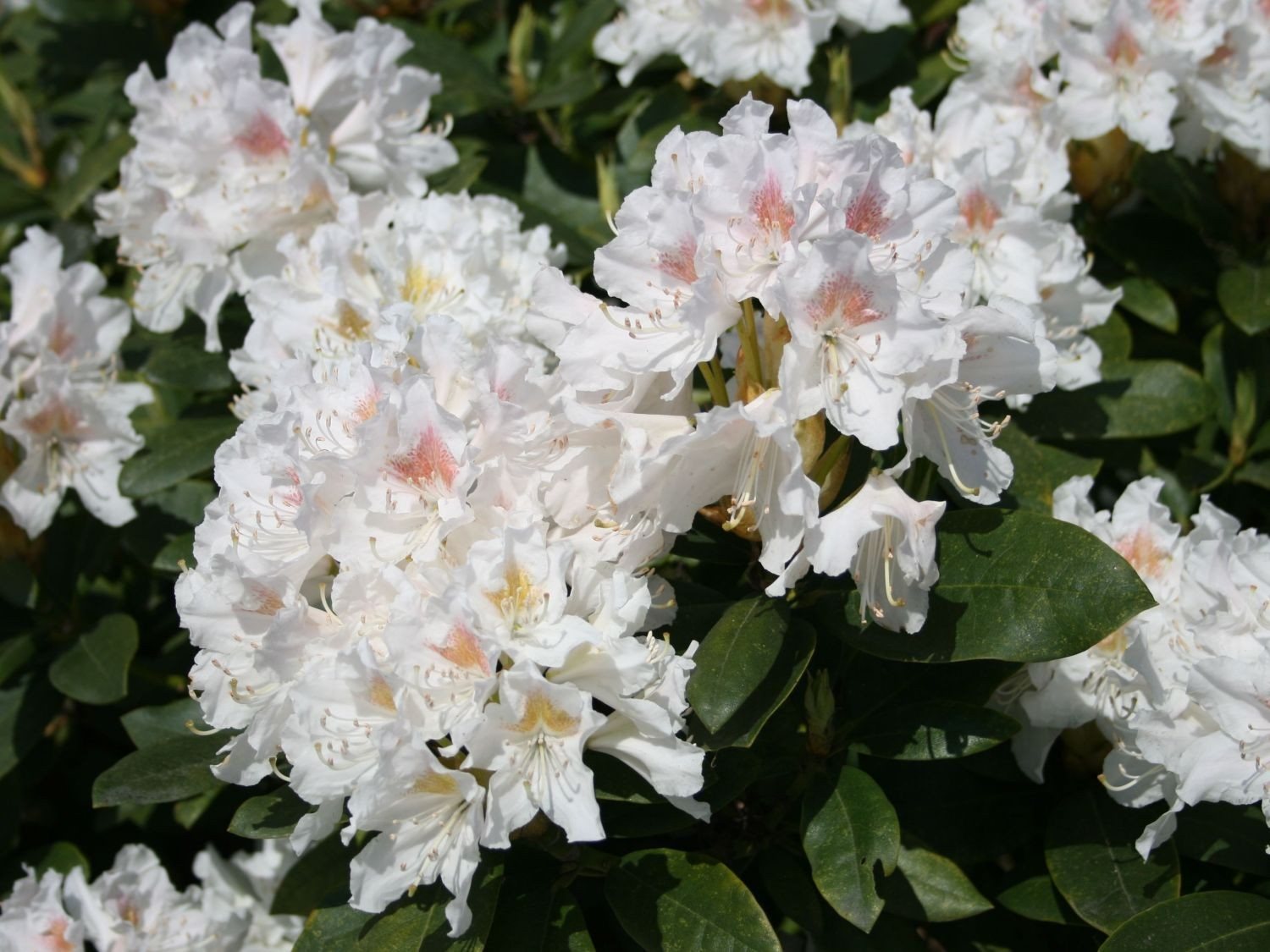
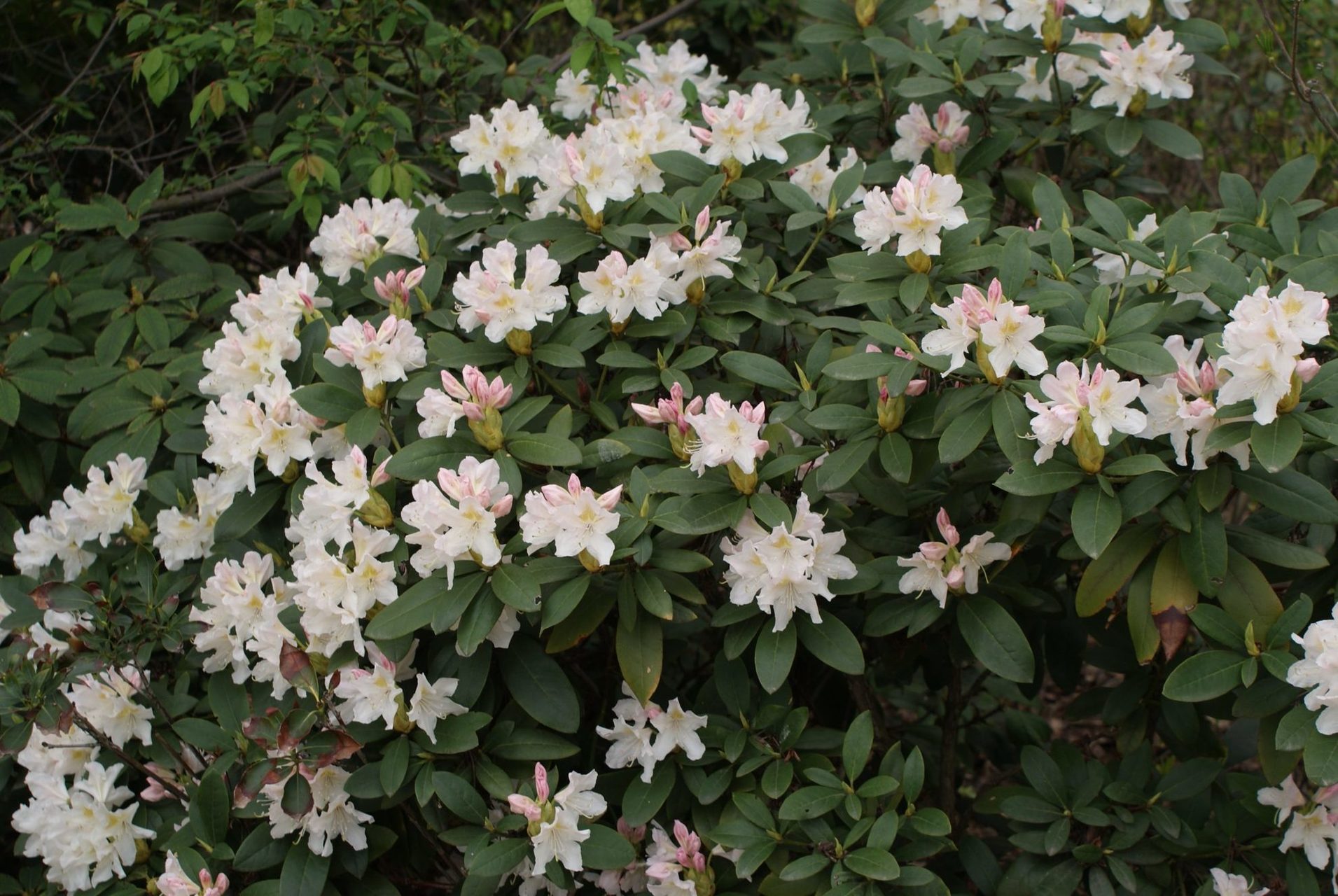
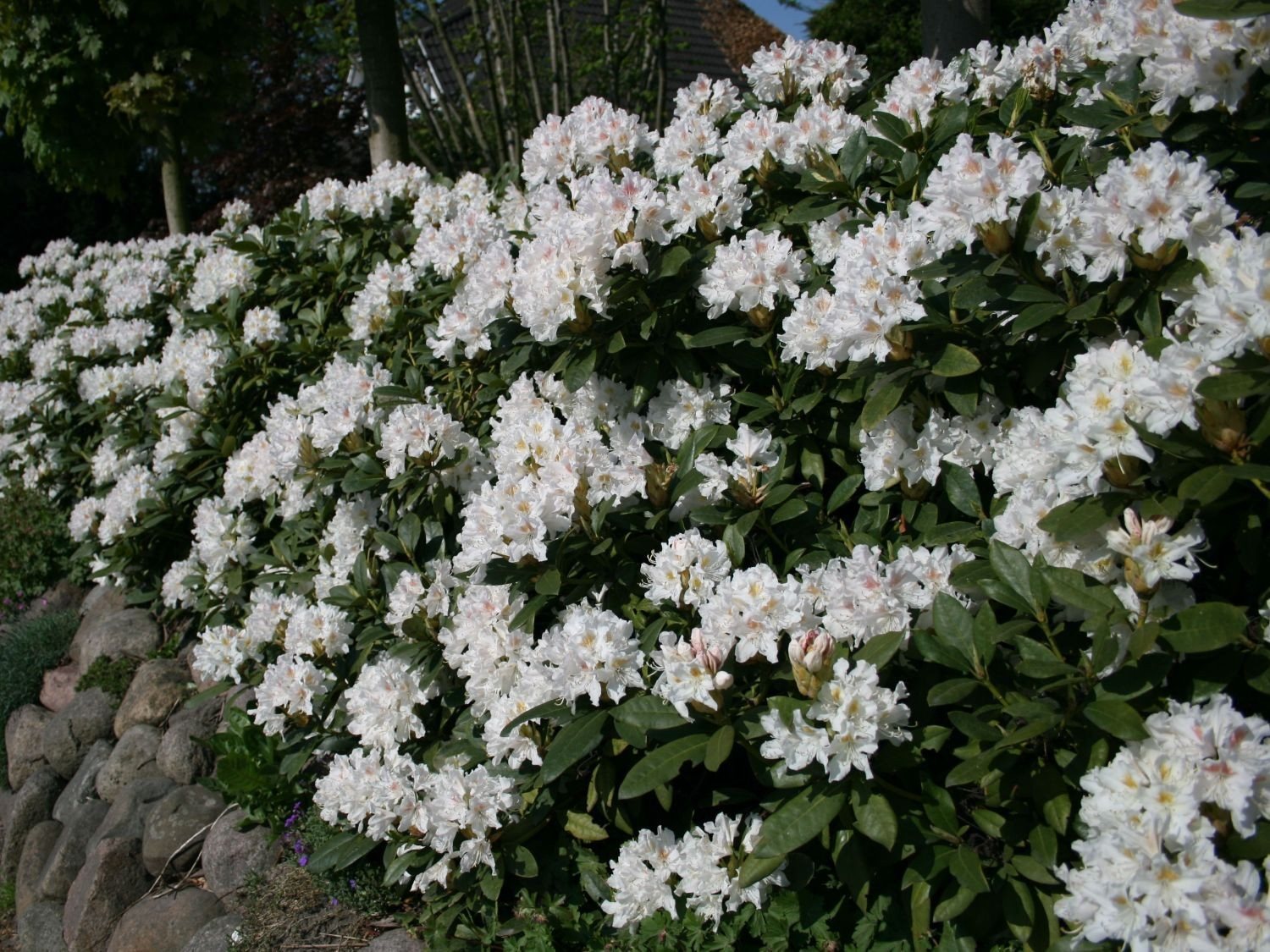
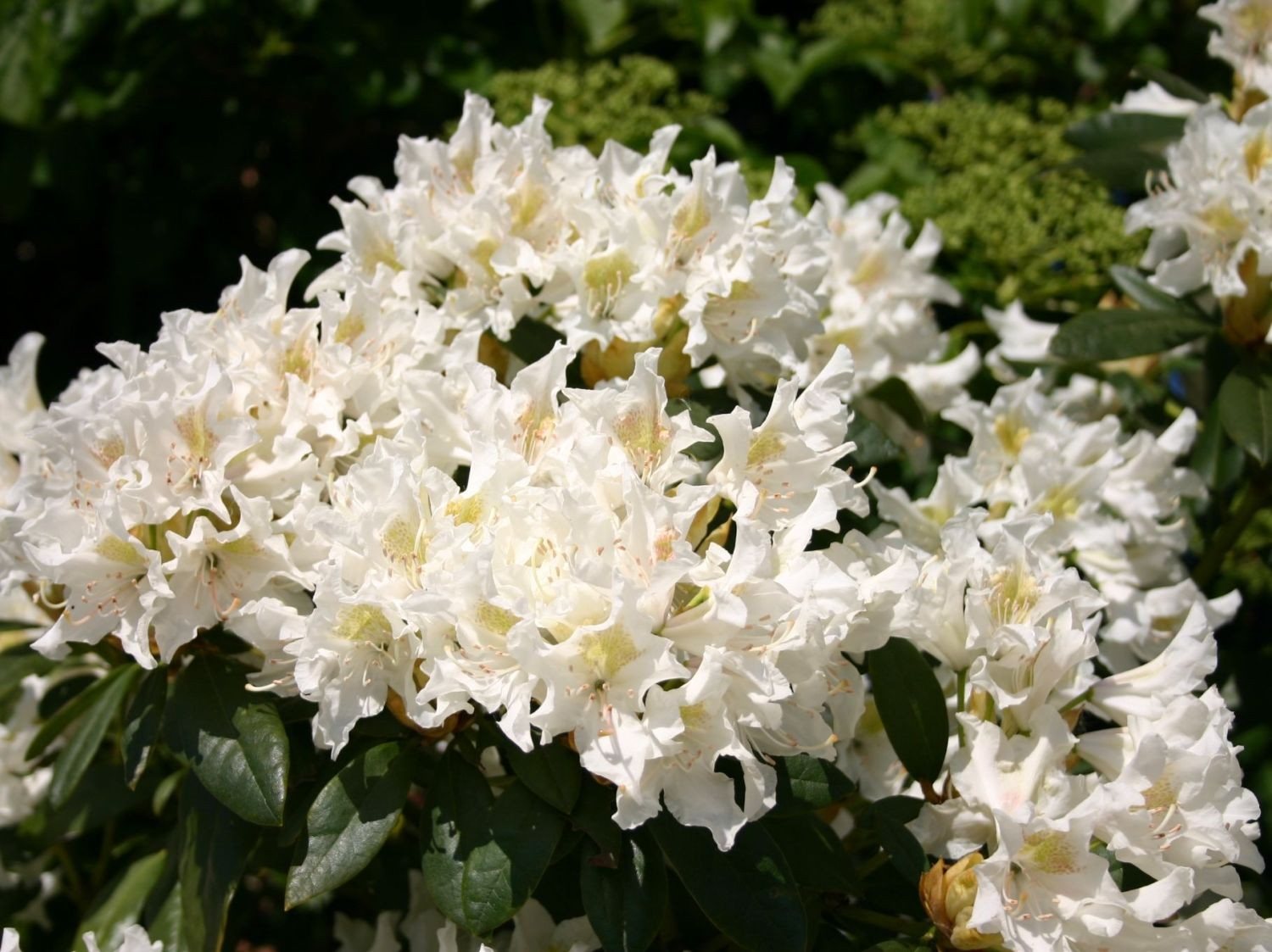





Smirnova
Evergreen shrub with a lush crown. The height does not exceed 1.5 m. The oval leaves are green and shiny on the outside, and brown on the underside. The flowers are funnel-shaped and purple-pink in color, covered with yellow spots. The buds are collected in inflorescences of 10-14 pieces.
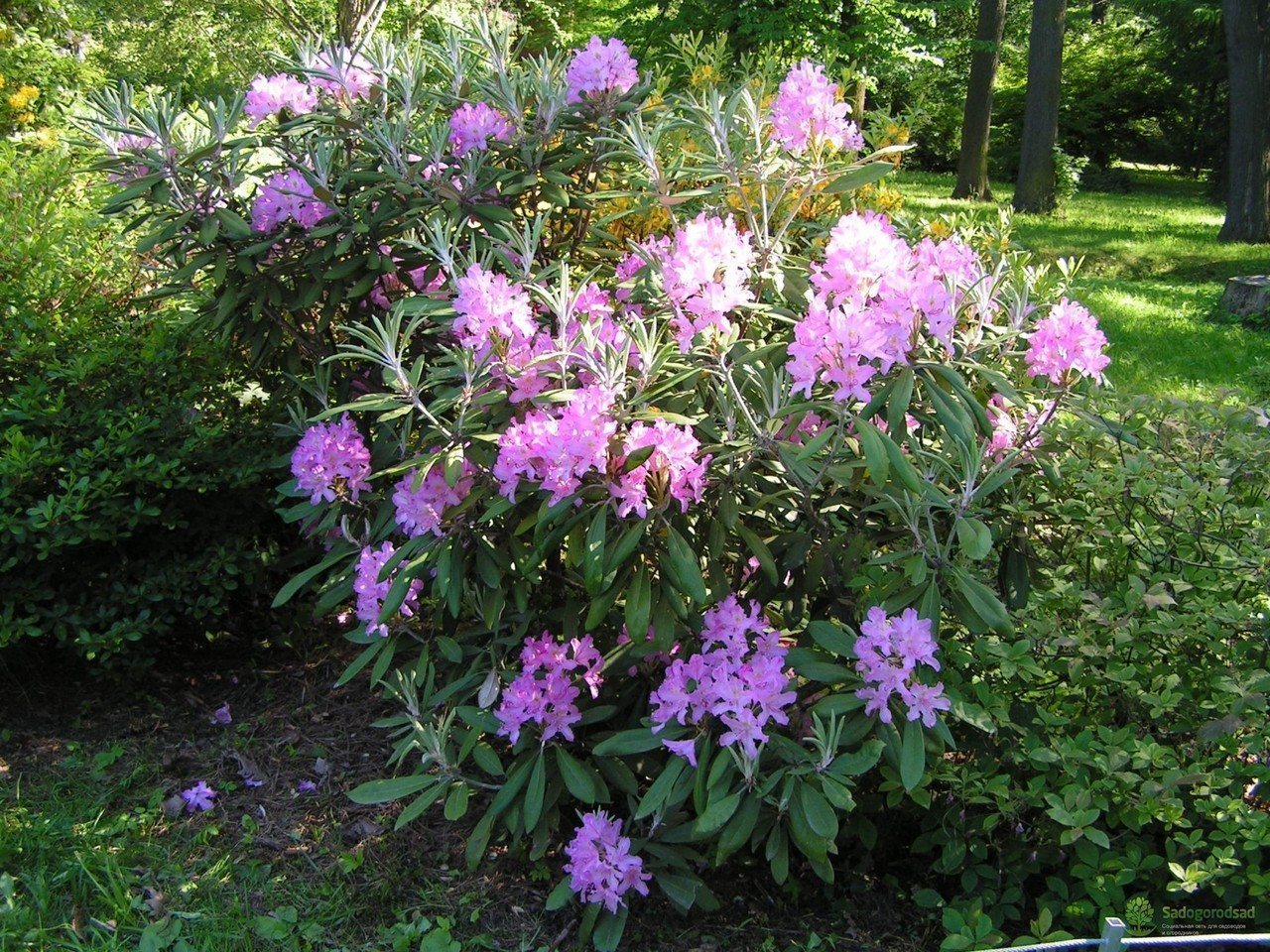
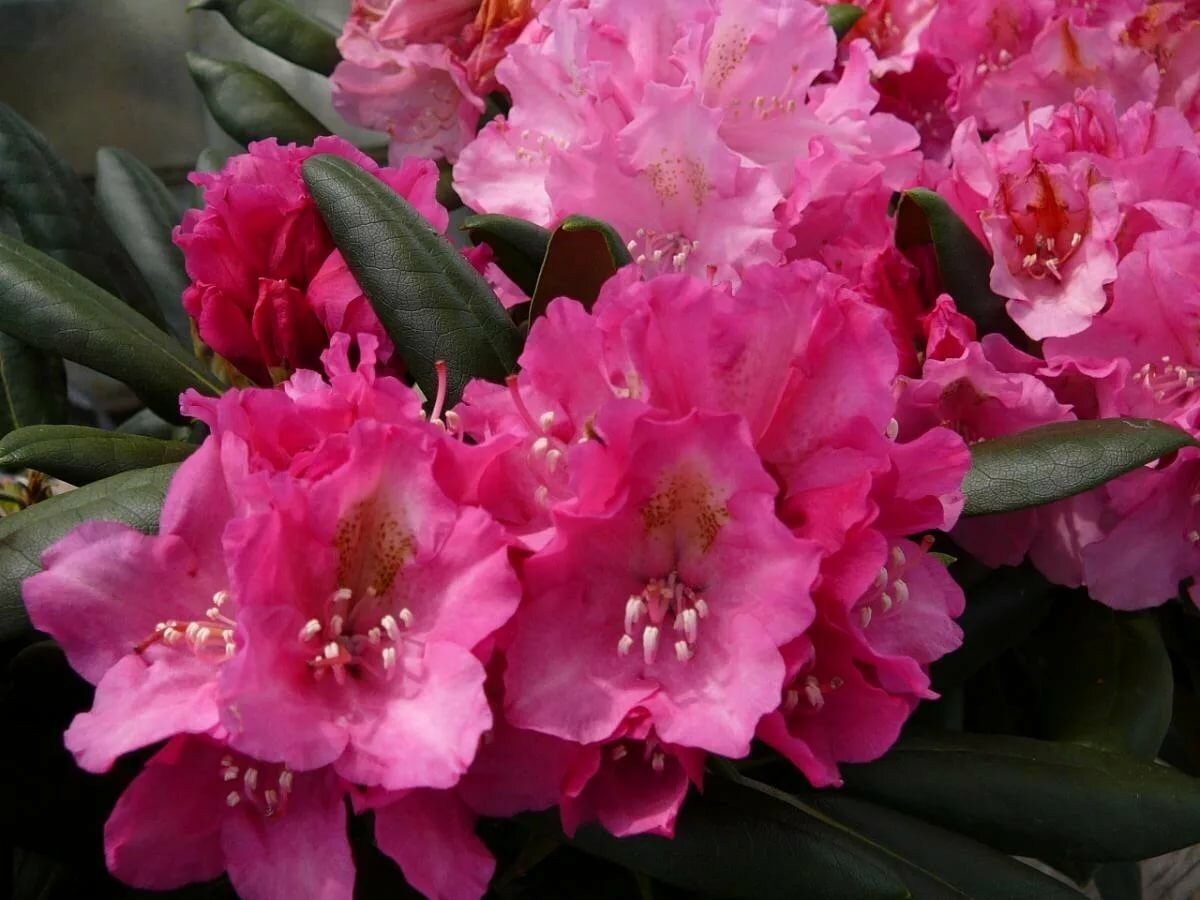
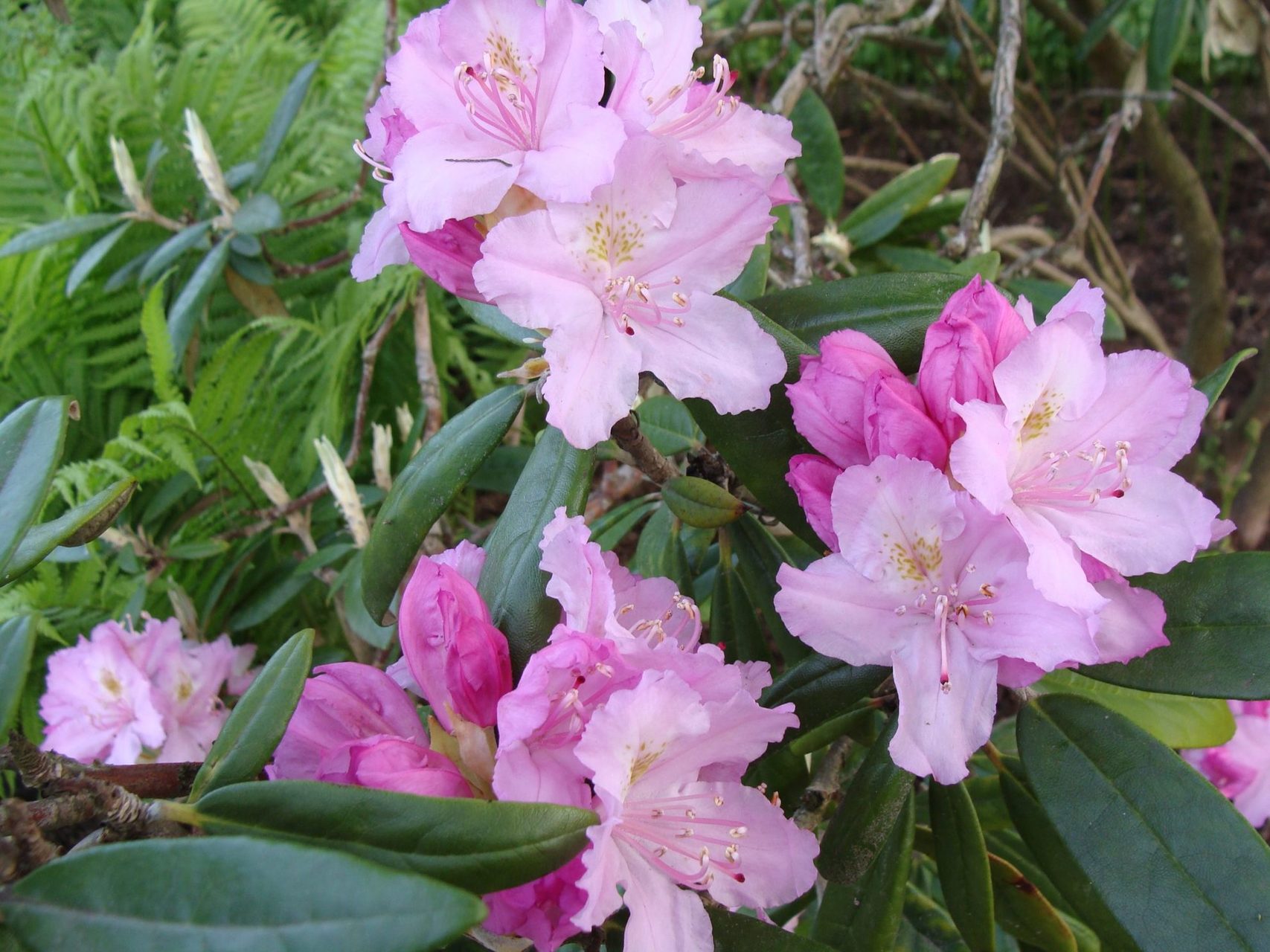





Impeditum
Also known as dense rhododendron. The shrub is covered with fragrant small leaves that form a neat crown.Impeditum blooms earlier than other species with bluish-lilac flowers.
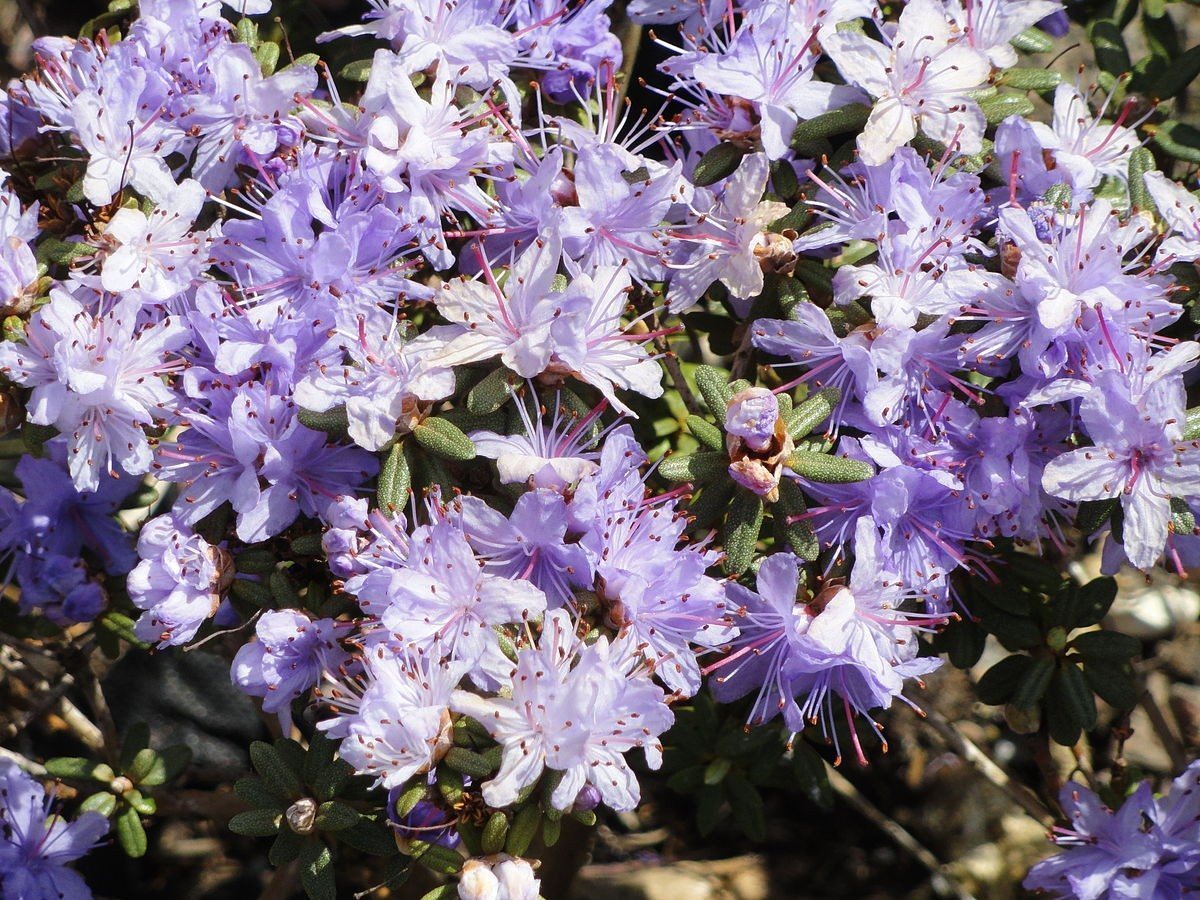
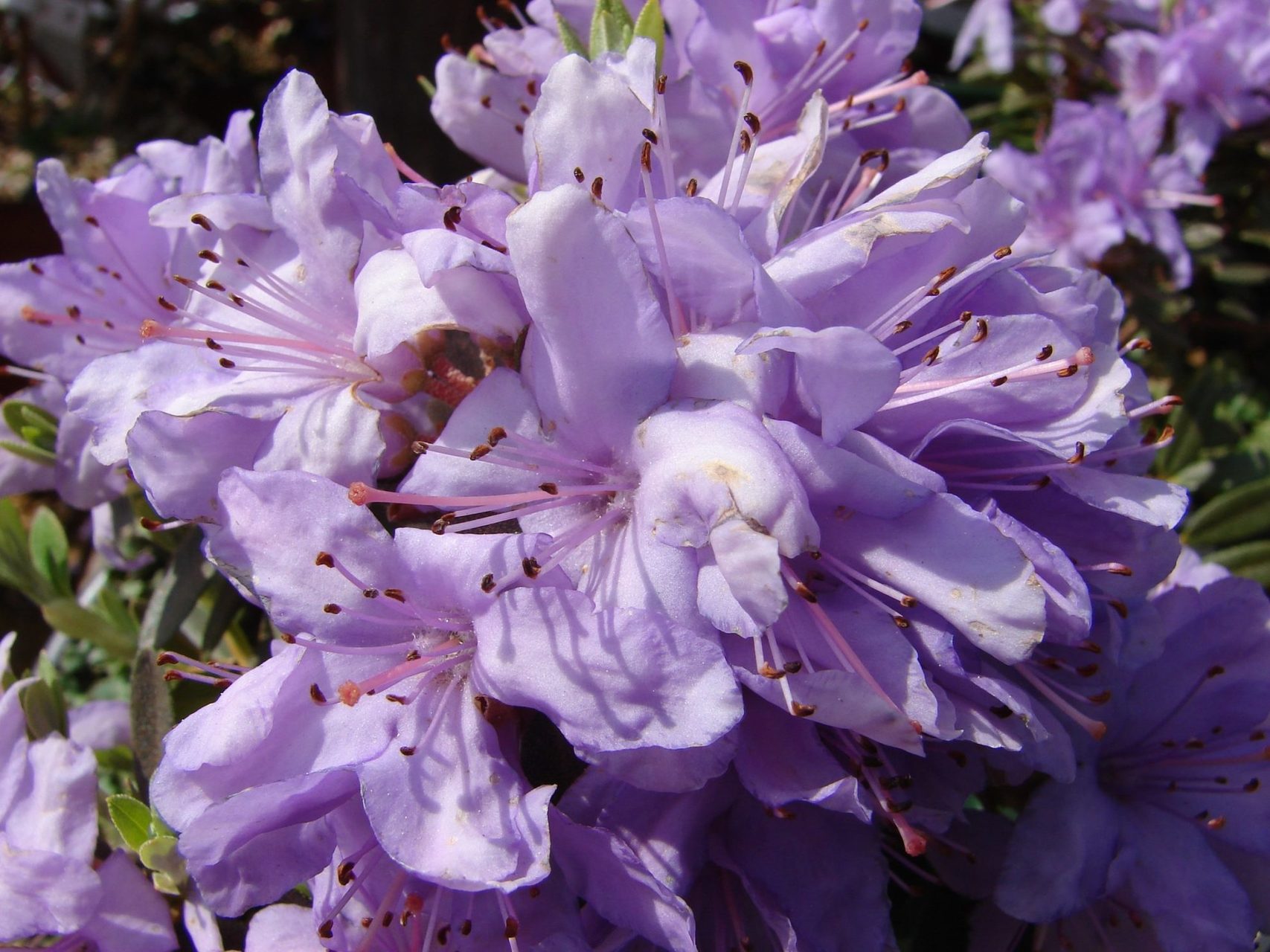
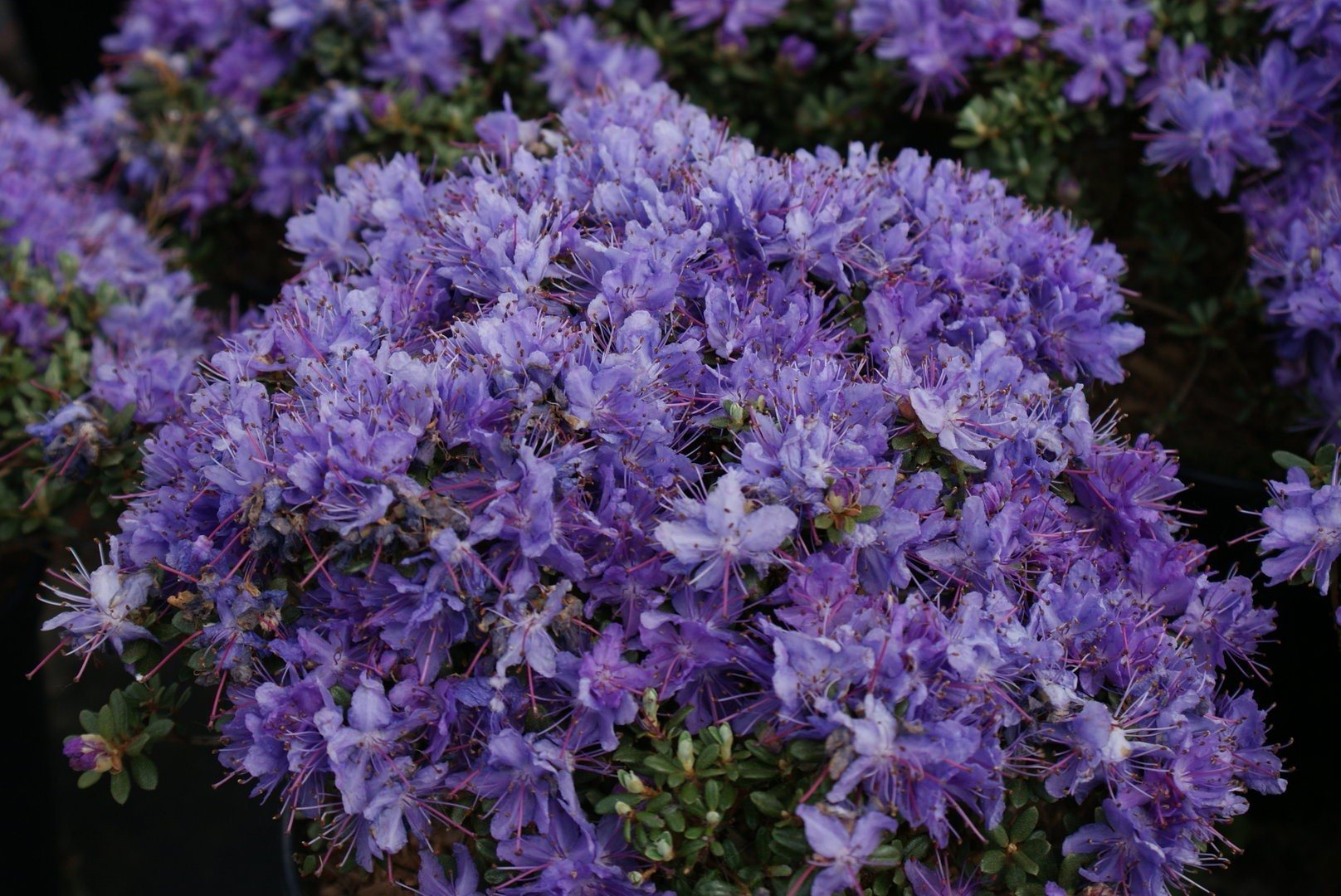
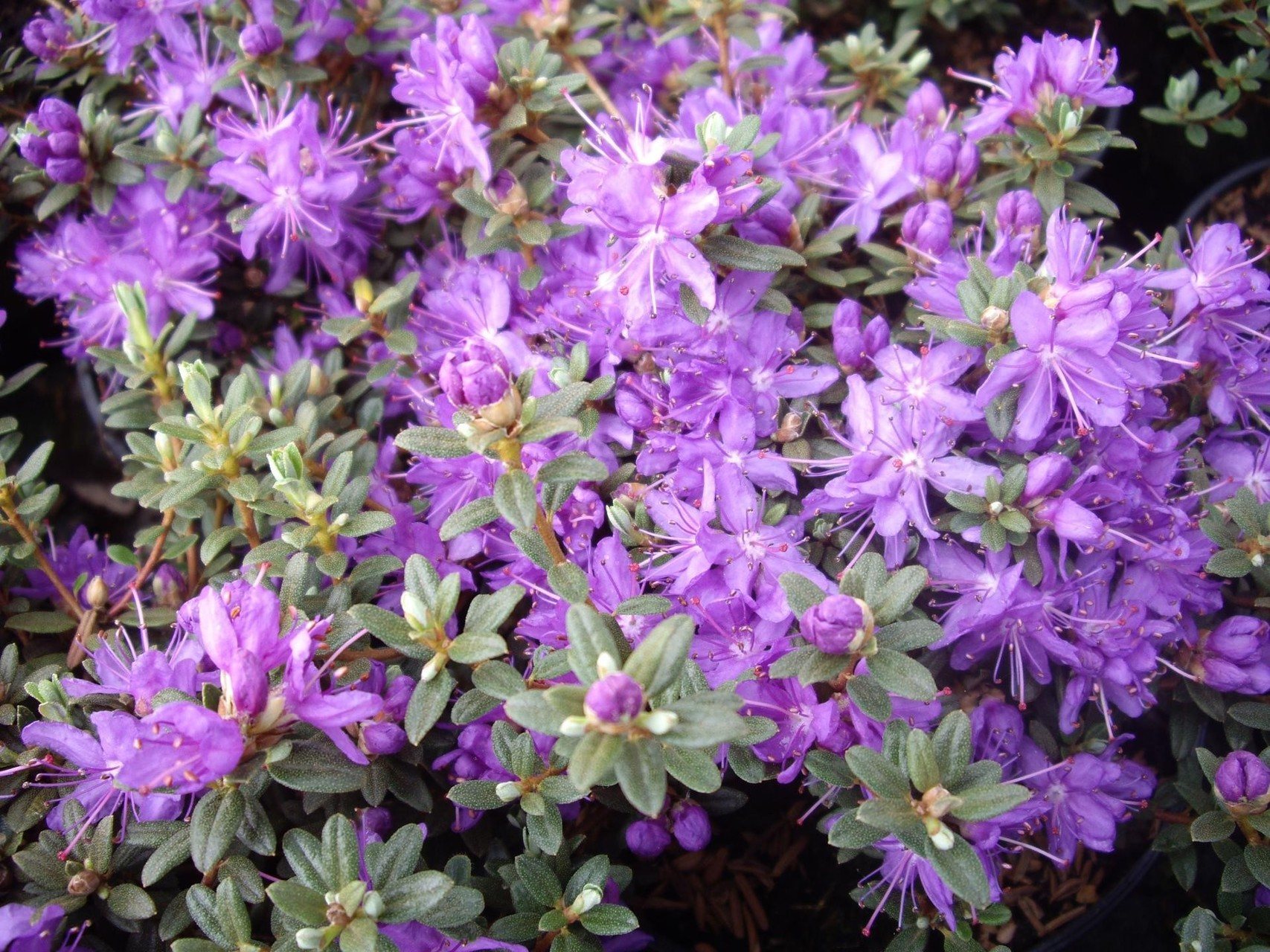
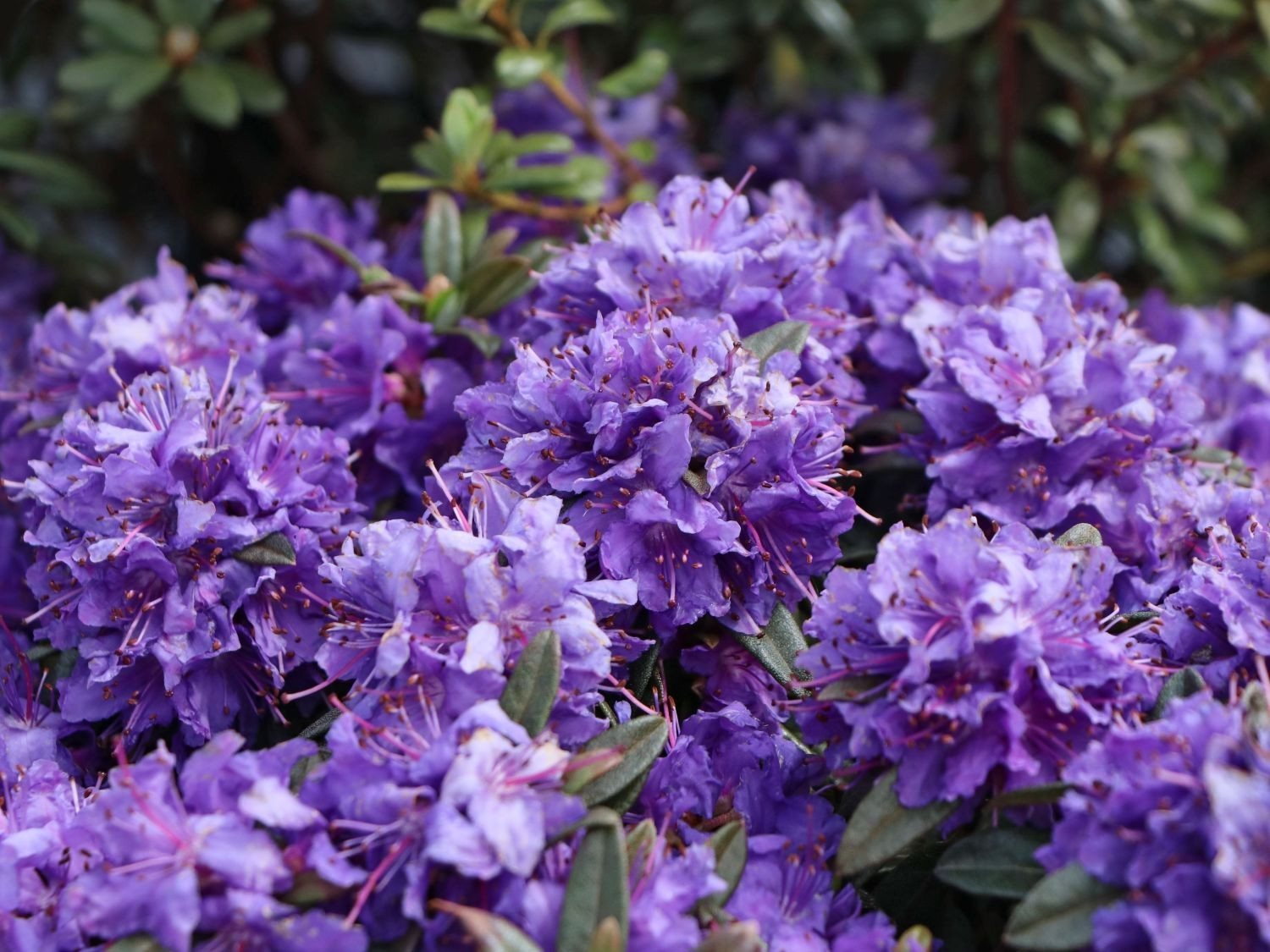





Caroline
A shrub that grows to a height of 1-1.5 m. Ellipse-shaped leaves form a rounded, wide crown. The leaves reach 6-10 cm in length and 3-4 cm in width. On the front side they are bare, on the reverse side they are densely covered with dark green scales.
The flowers are shaped like a funnel with a pink, white or soft lilac color. They are odorless and collect inflorescences of 4-9 pieces.
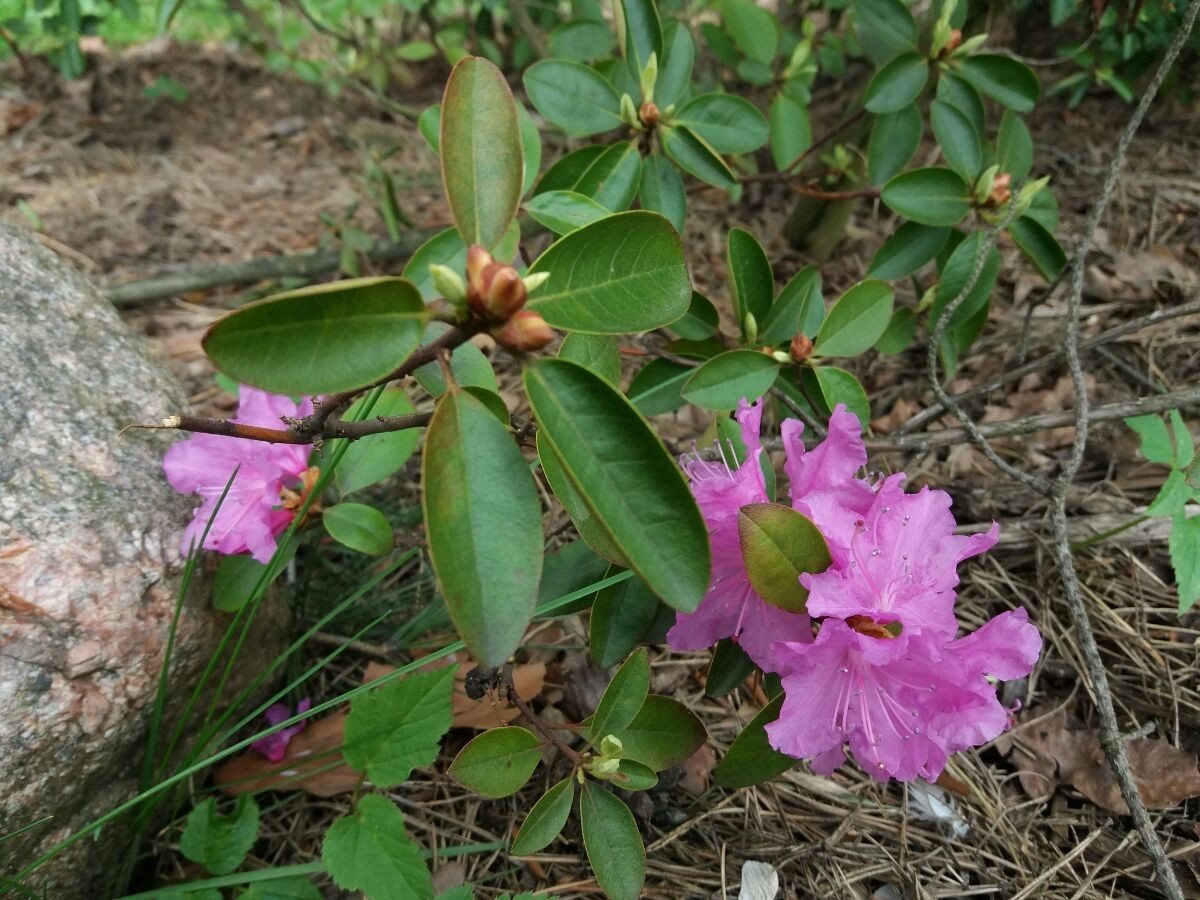
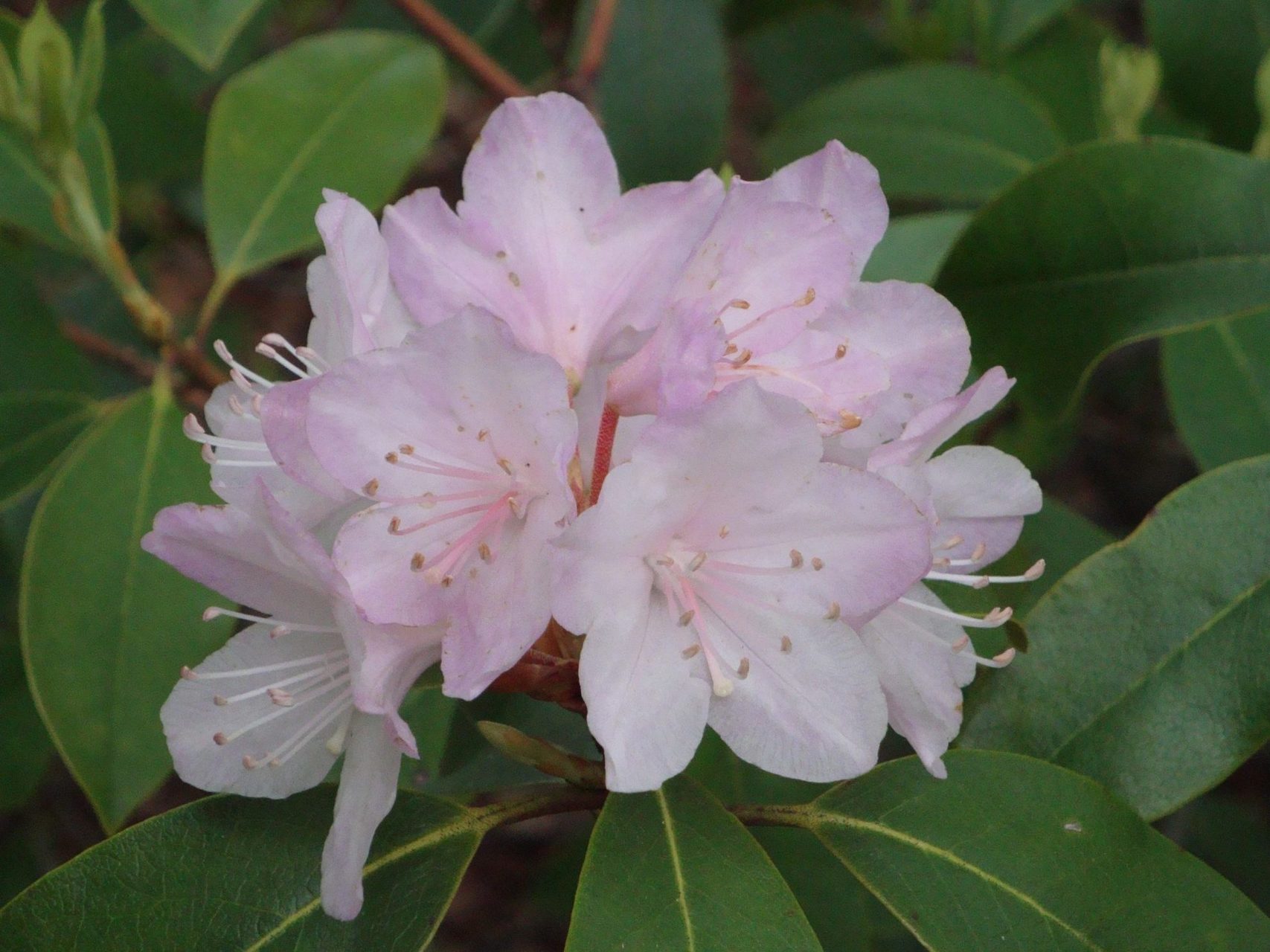
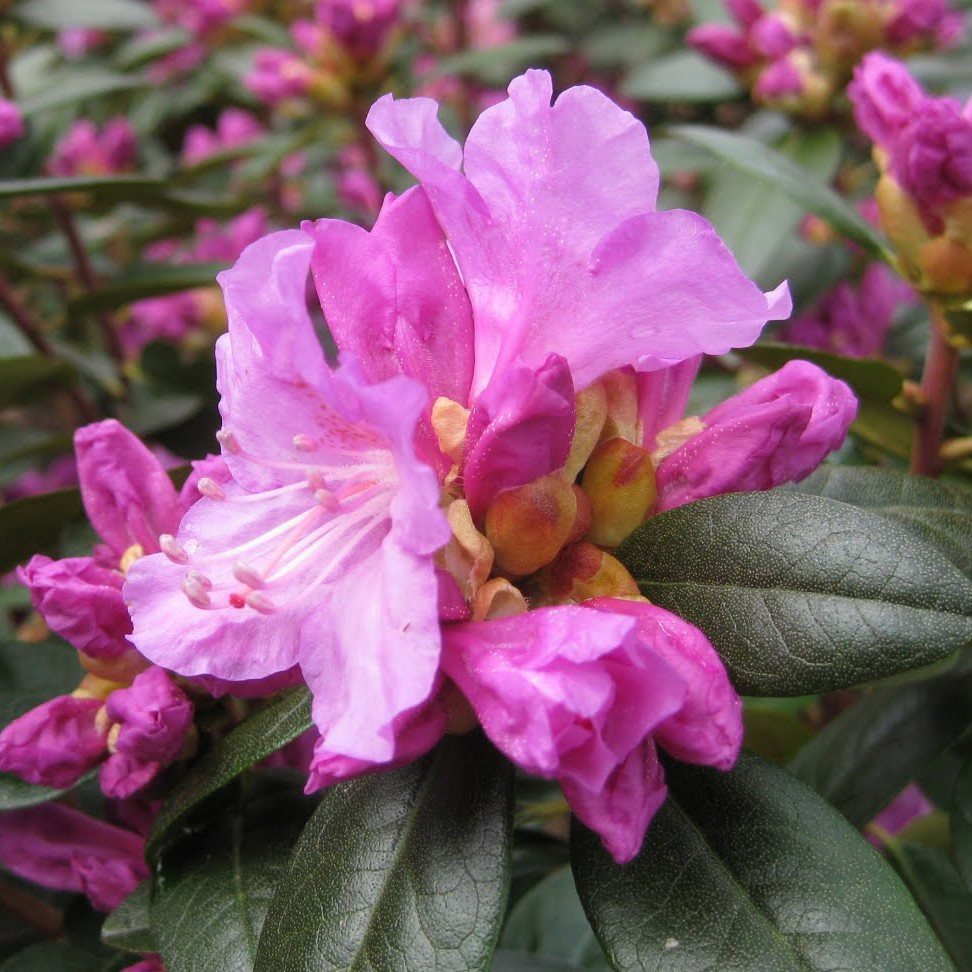

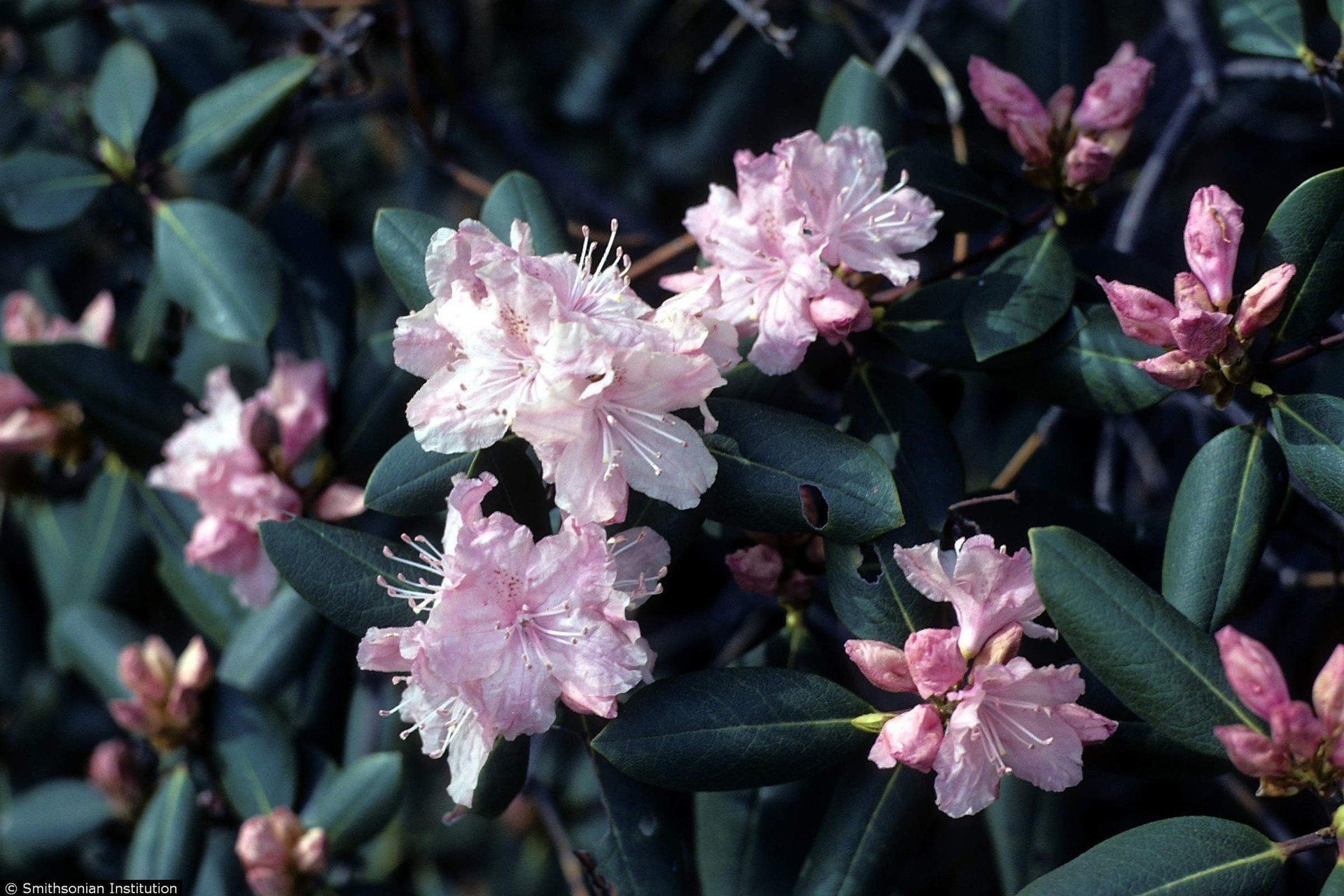





Deciduous
Shrubs reaching 1 m or more in height. They bloom with funnels or bells. The inflorescences of this variety of rhododendron can be either voluminous or consist of 2 flowers. The flowers themselves are large, differing in different shades: yellow, soft pink, deep red, scarlet.
Deciduous rhododendrons bloom very profusely, unlike other varieties. Plants in this group shed their leaves every year.
Daursky
This is a medium-sized shrub with a height of 2-4 m. Its beautiful branches are directed upward. The shoots closer to the tip are covered with short hair. The leaves are leathery, reach 2 cm in length, smooth on the front and scaly on the back.
The flowering of Daurian rhododendron can last 20 days. The large flowers are shaped like a funnel with a purple-pink color.
Daurian rhododendron has long been considered a single variety with Ledebur rhododendron. And only in 1952 these two varieties were developed into separate ones.
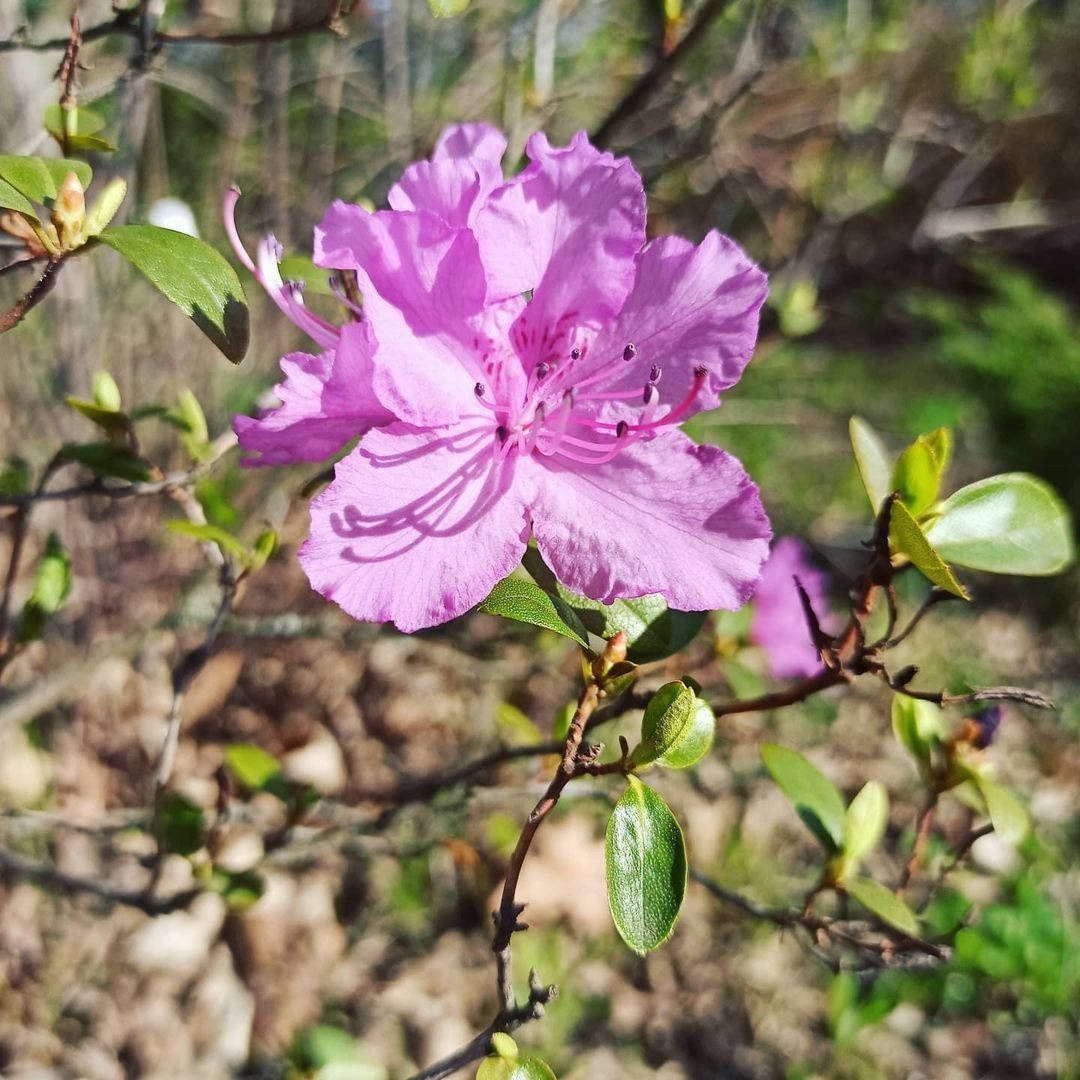
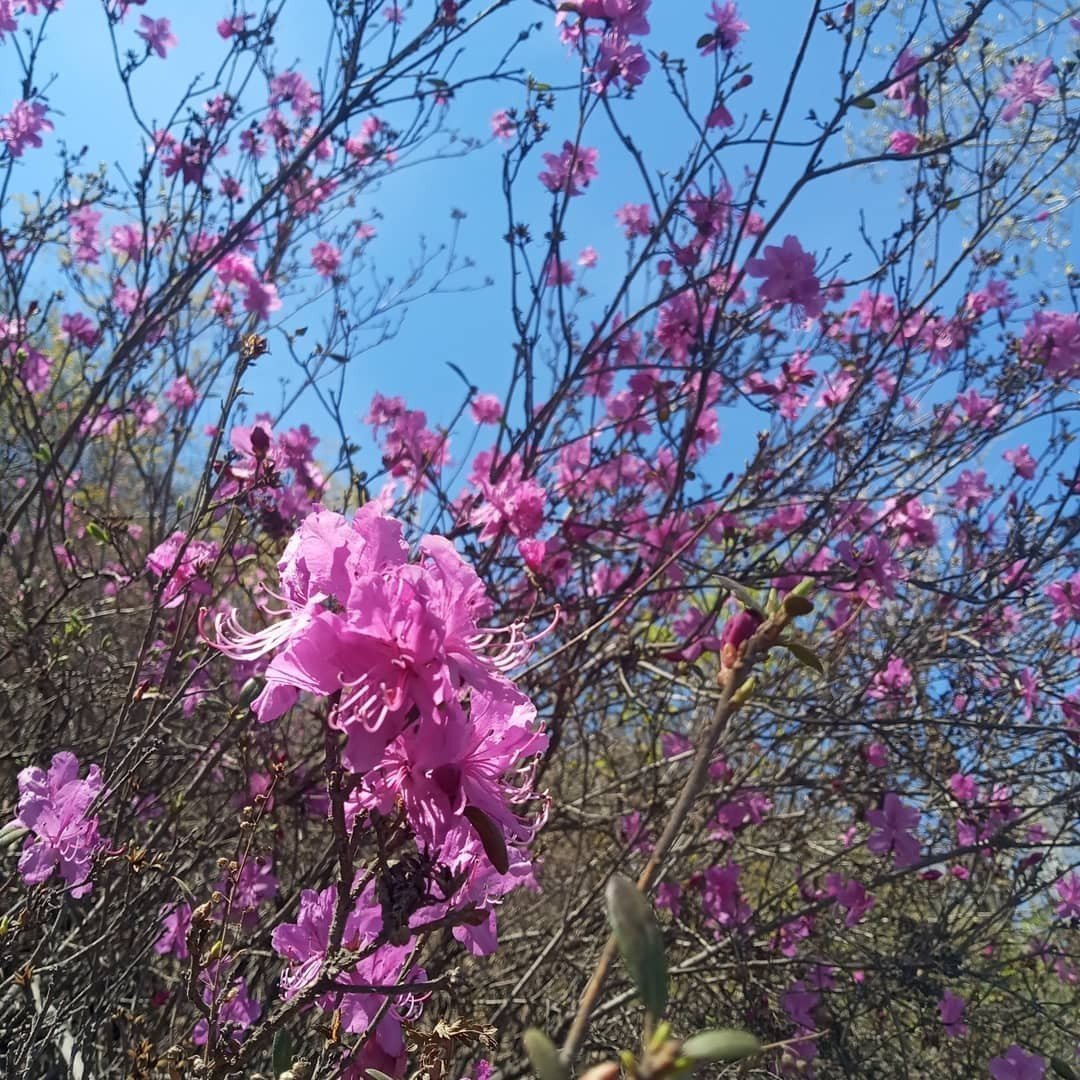

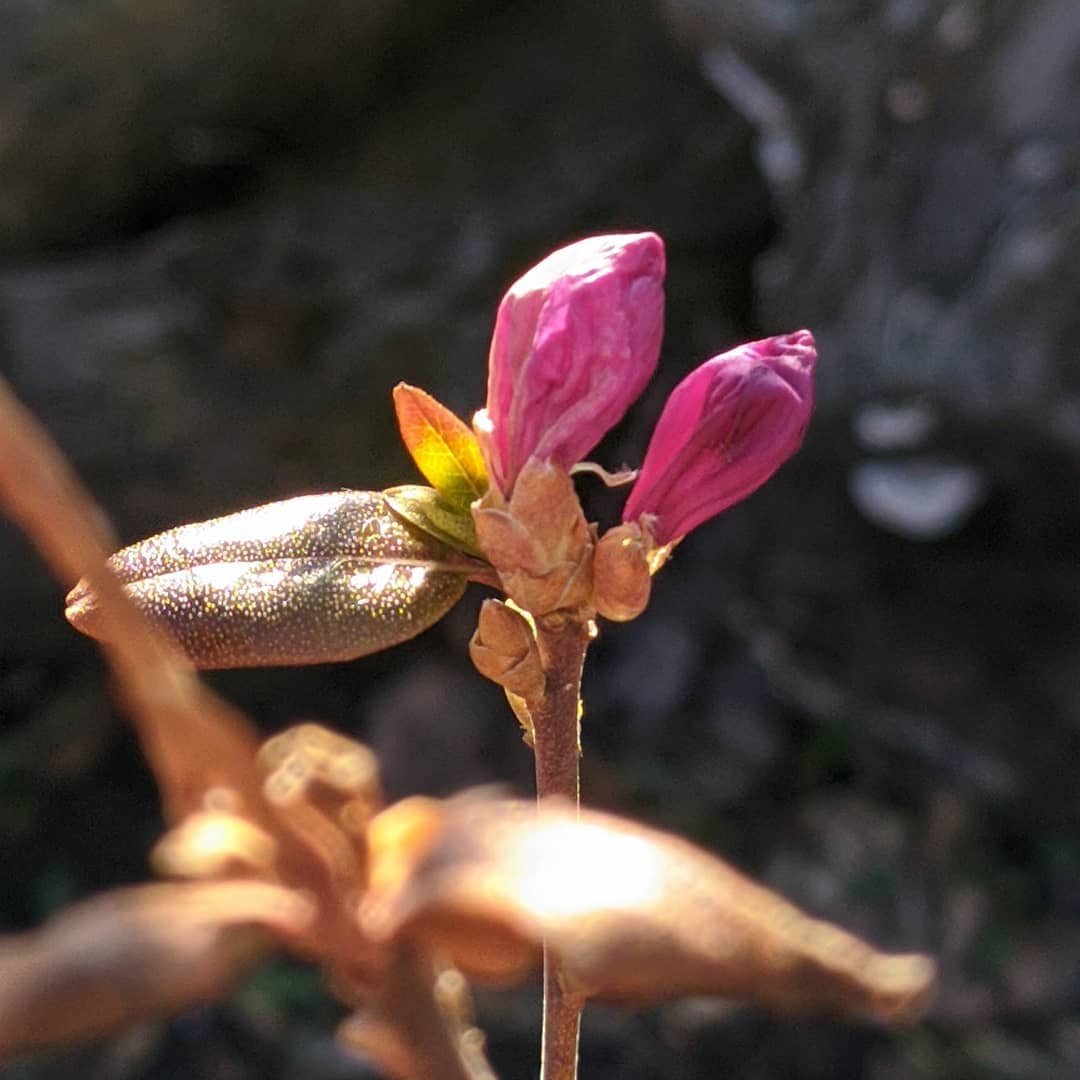
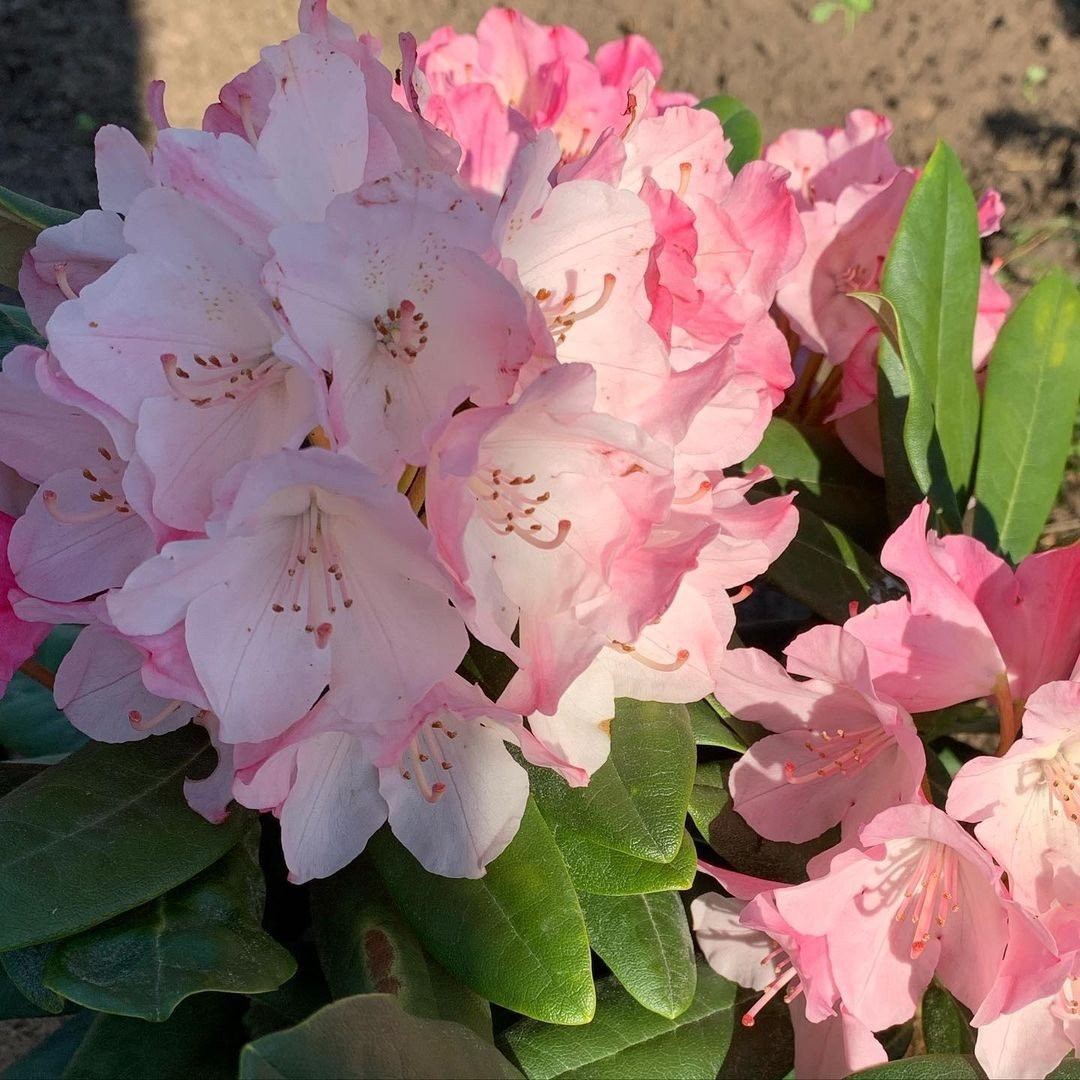





Golden Lights
Hybrid deciduous variety. Reaches a height of 1.5-2 m. It blooms in May with buds of a salmon-orange hue. They resemble a funnel in shape and are medium in size. Collected in inflorescences of 8-10 flowers.
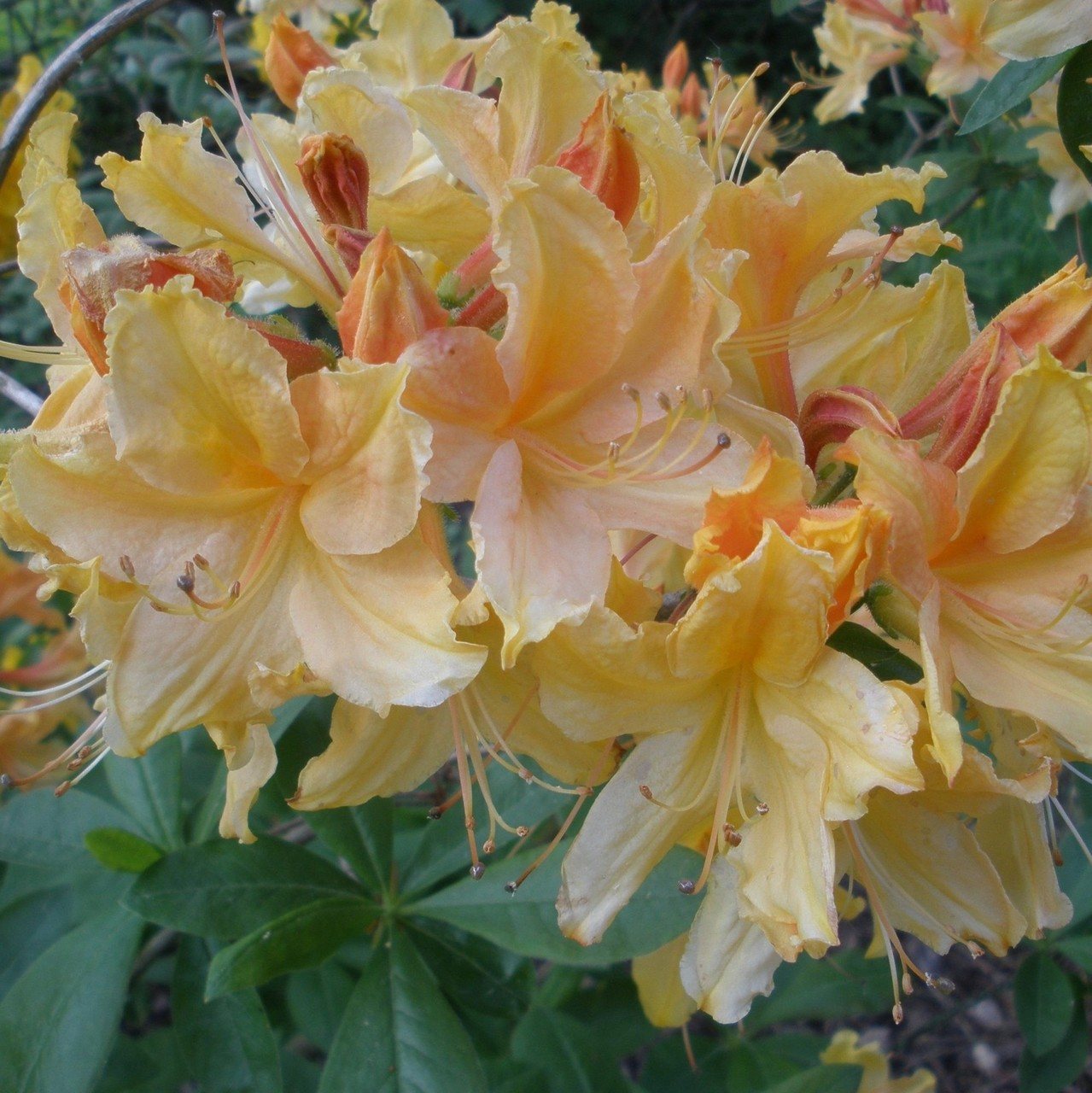
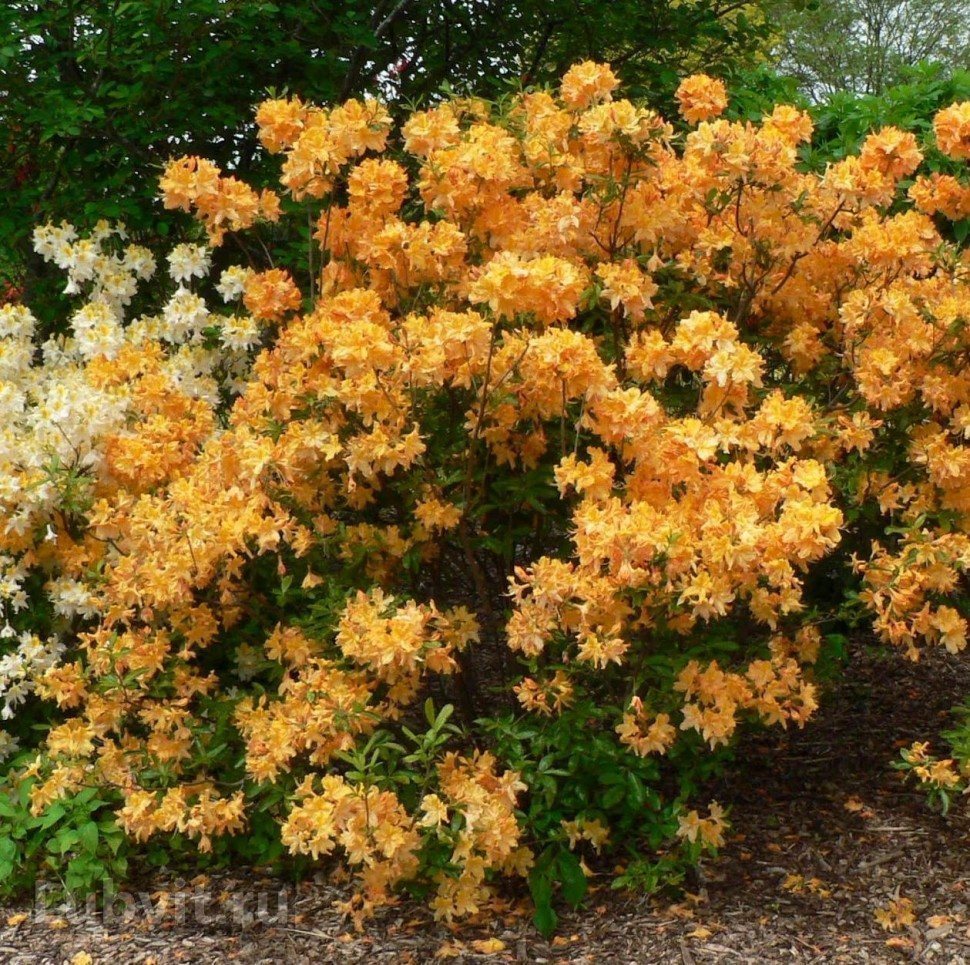
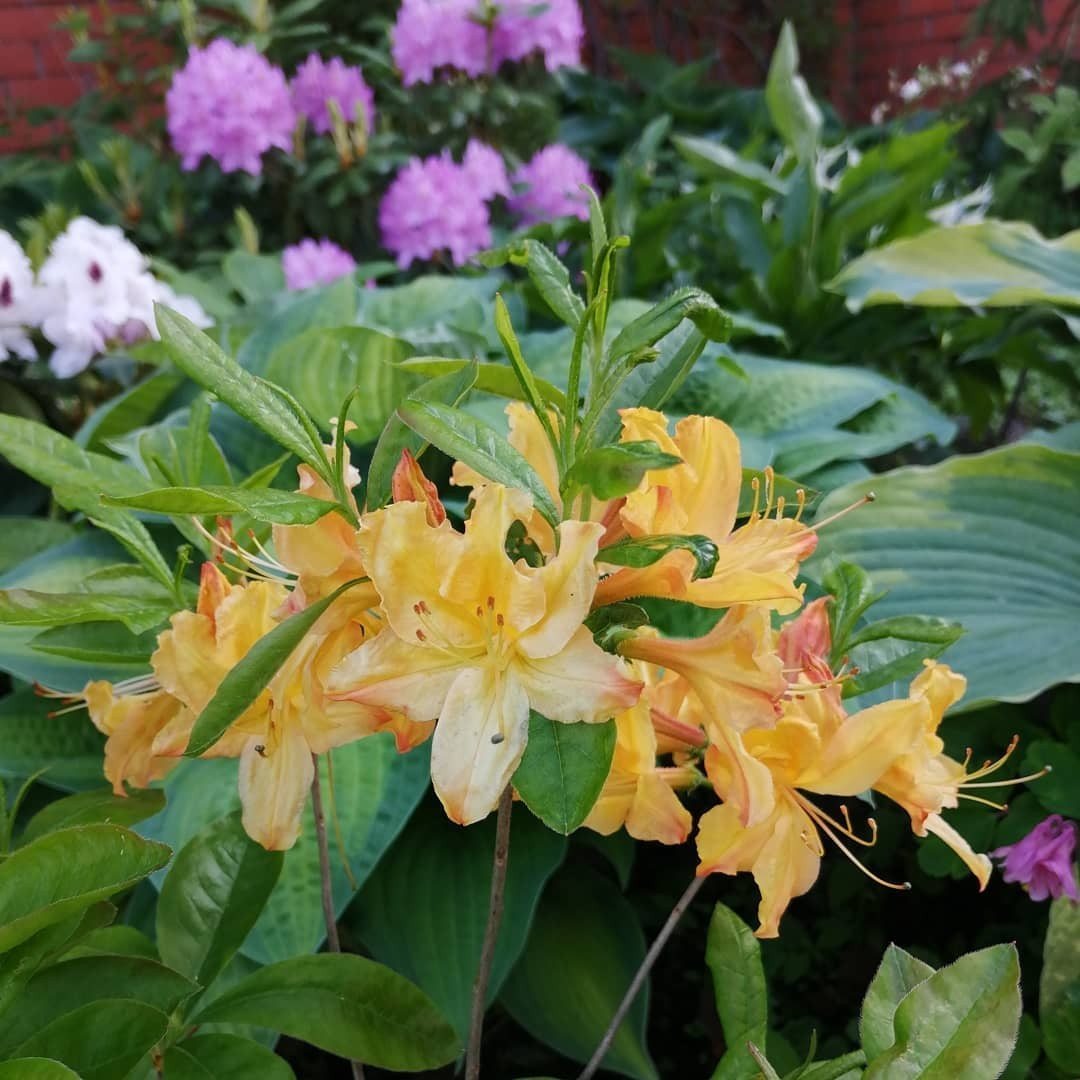
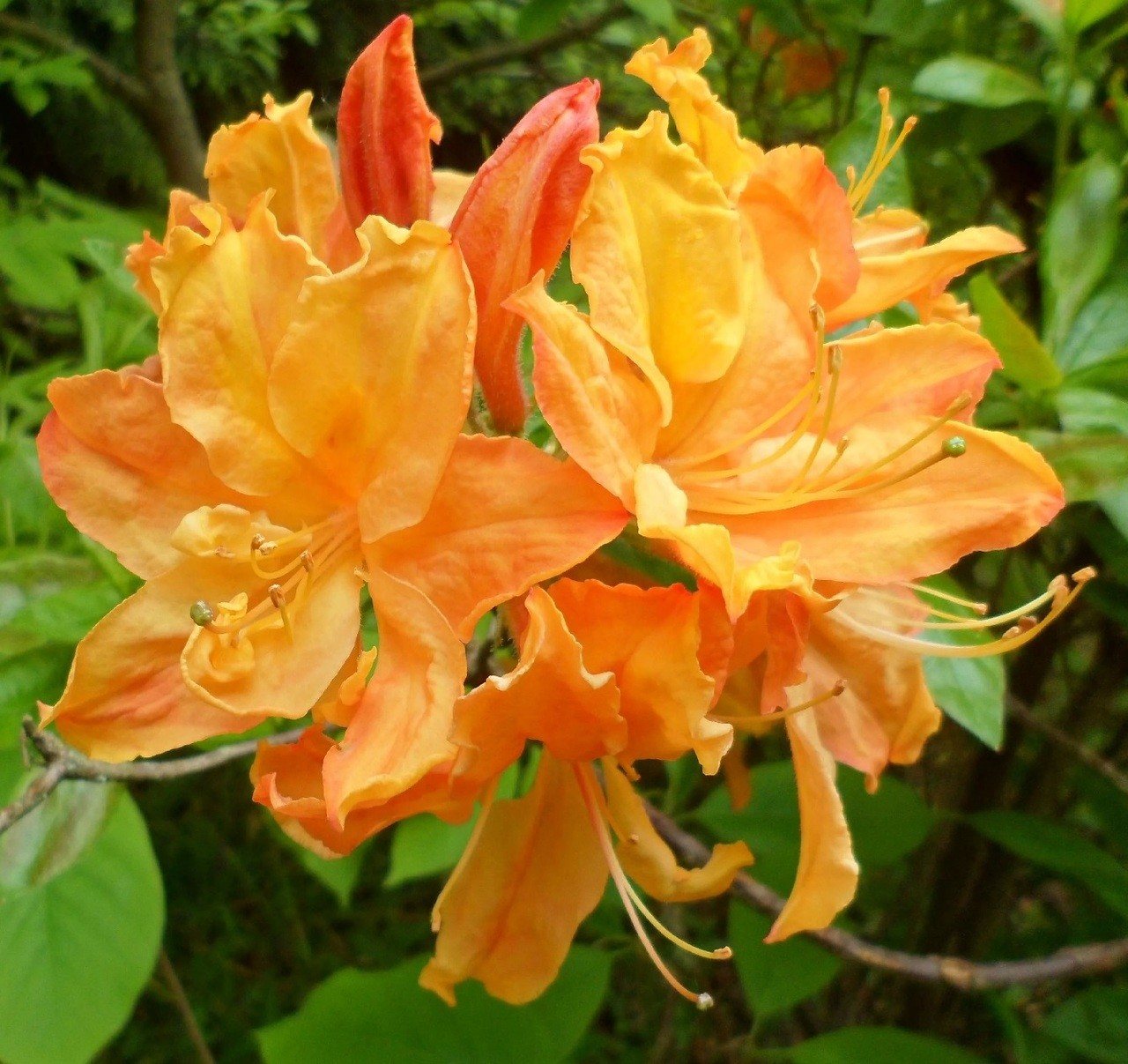
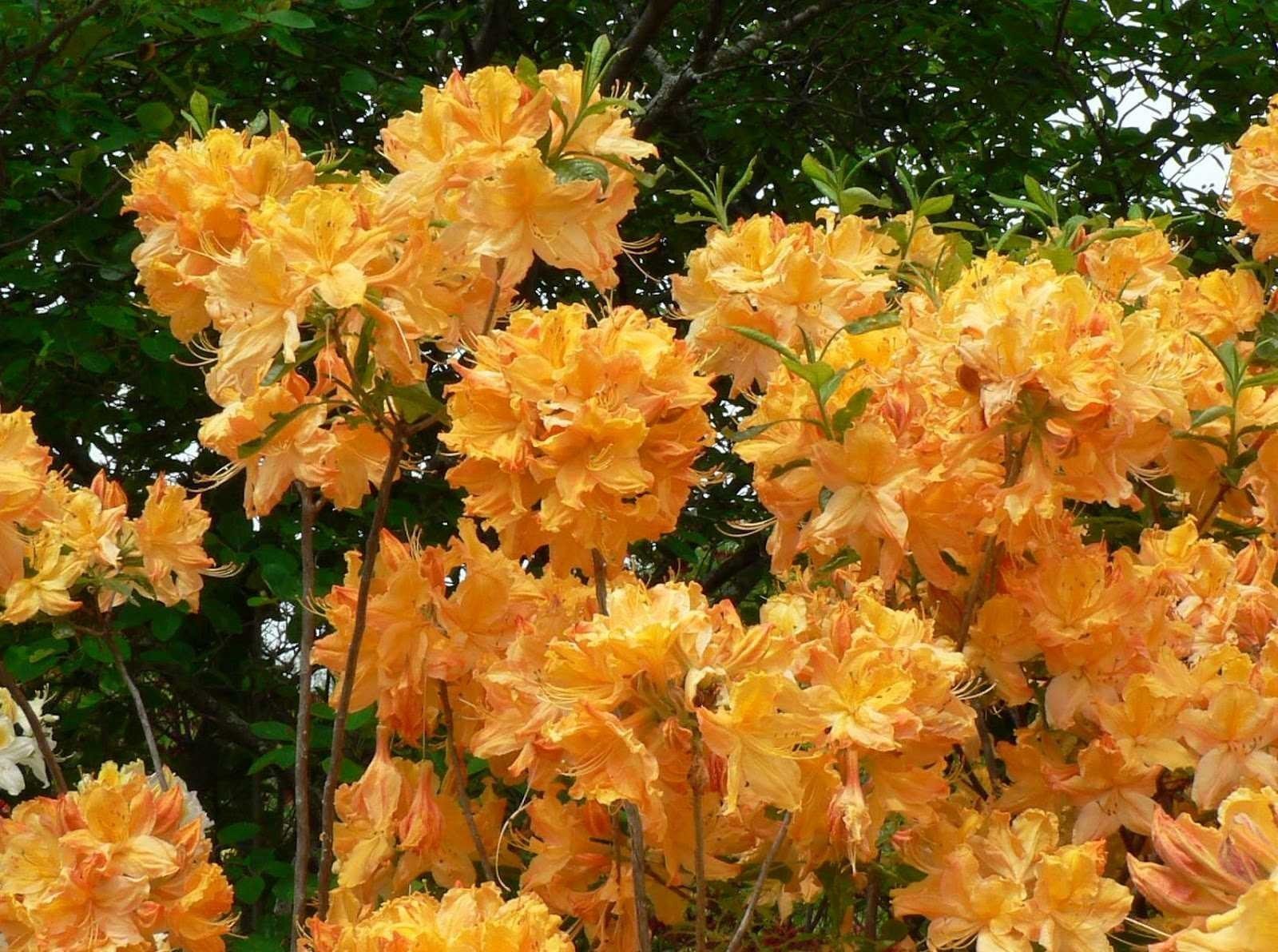





Mandarin Lights
It can reach a height of 1.8 m. The crown is rounded and wide.The leaves are shaped like an oval with a flat base and sharp tips.
Rhododendron Mandarin Lights blooms profusely. The fragrant flowers are funnel-shaped and reddish-orange in color. They are collected in spherical inflorescences of 7-10 pieces.
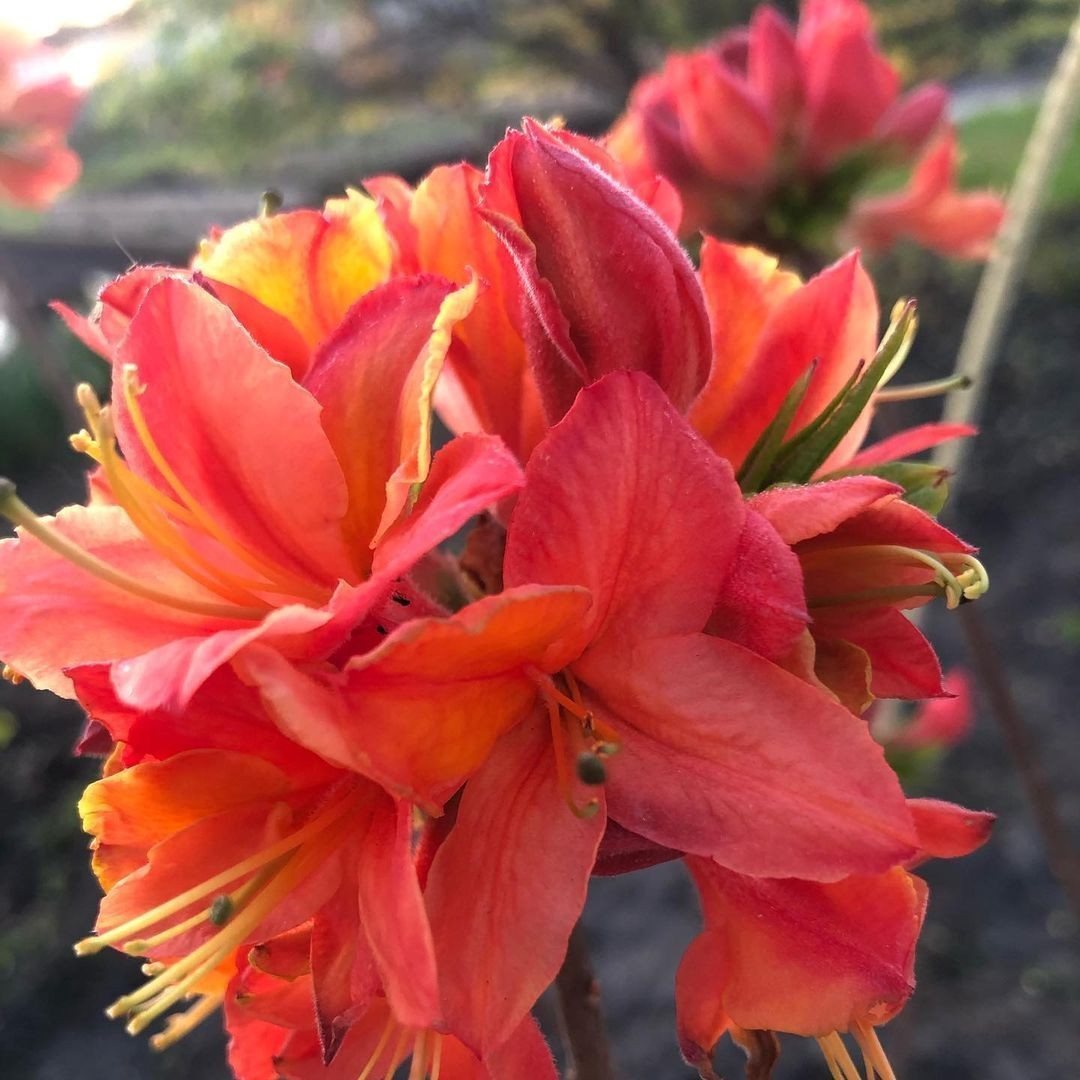

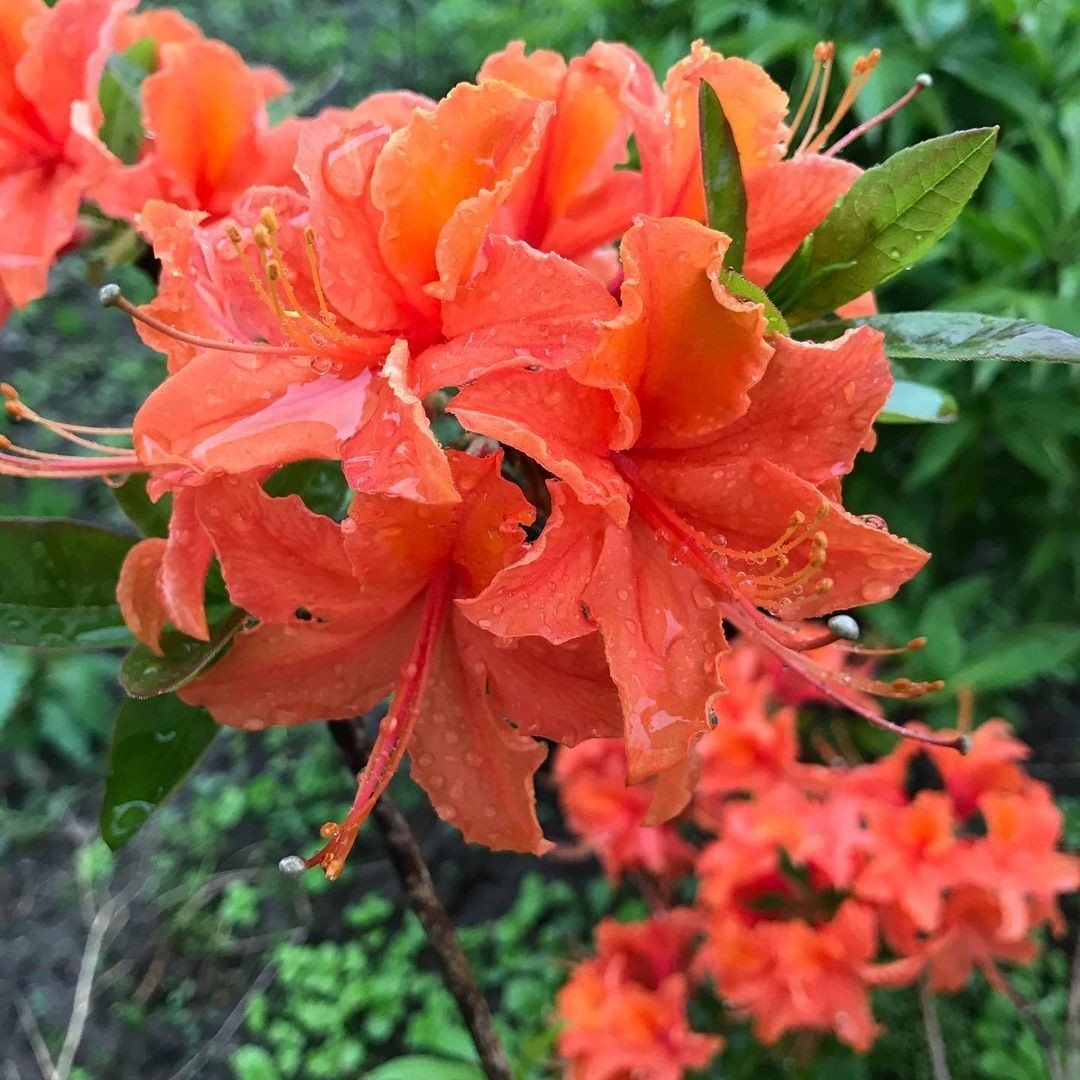
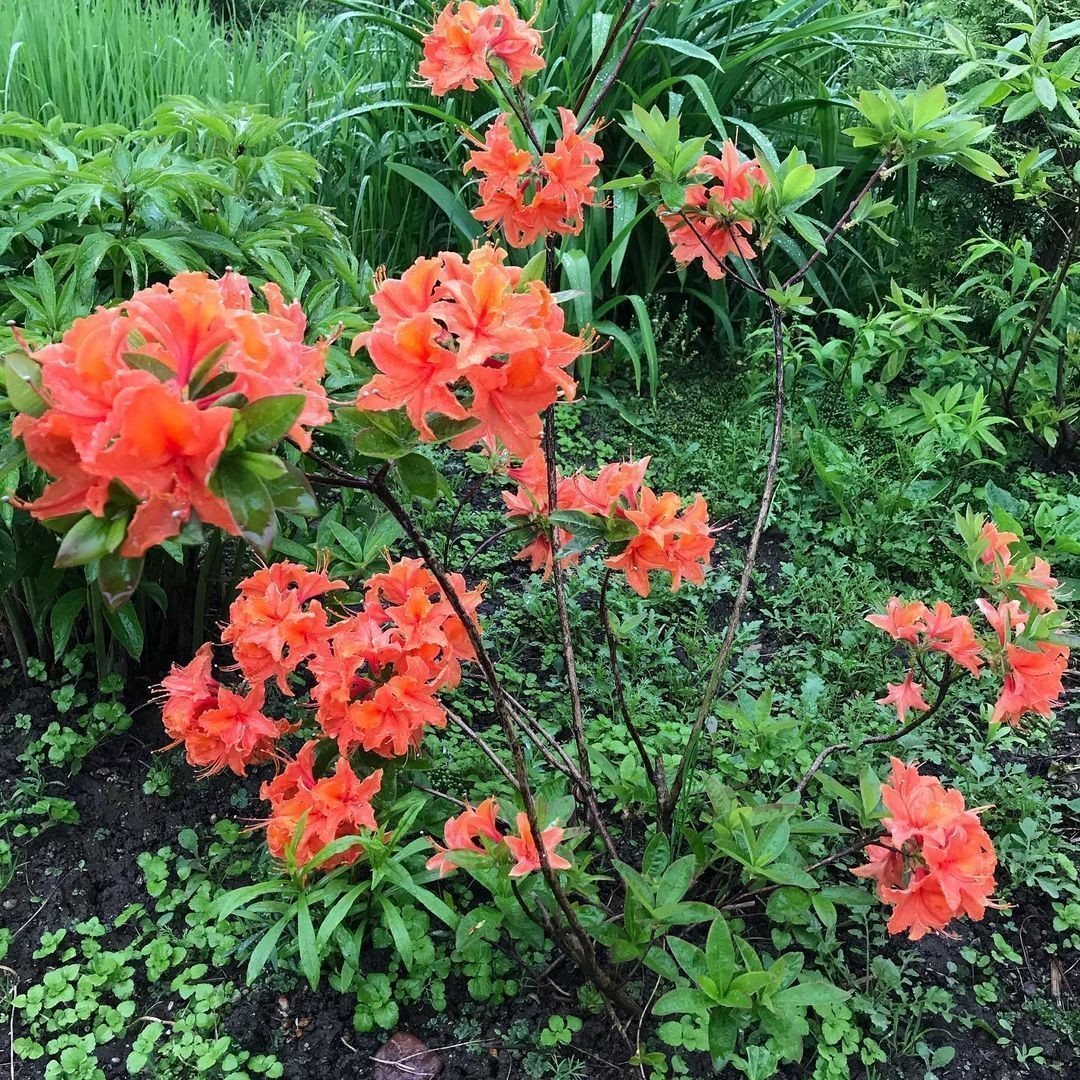
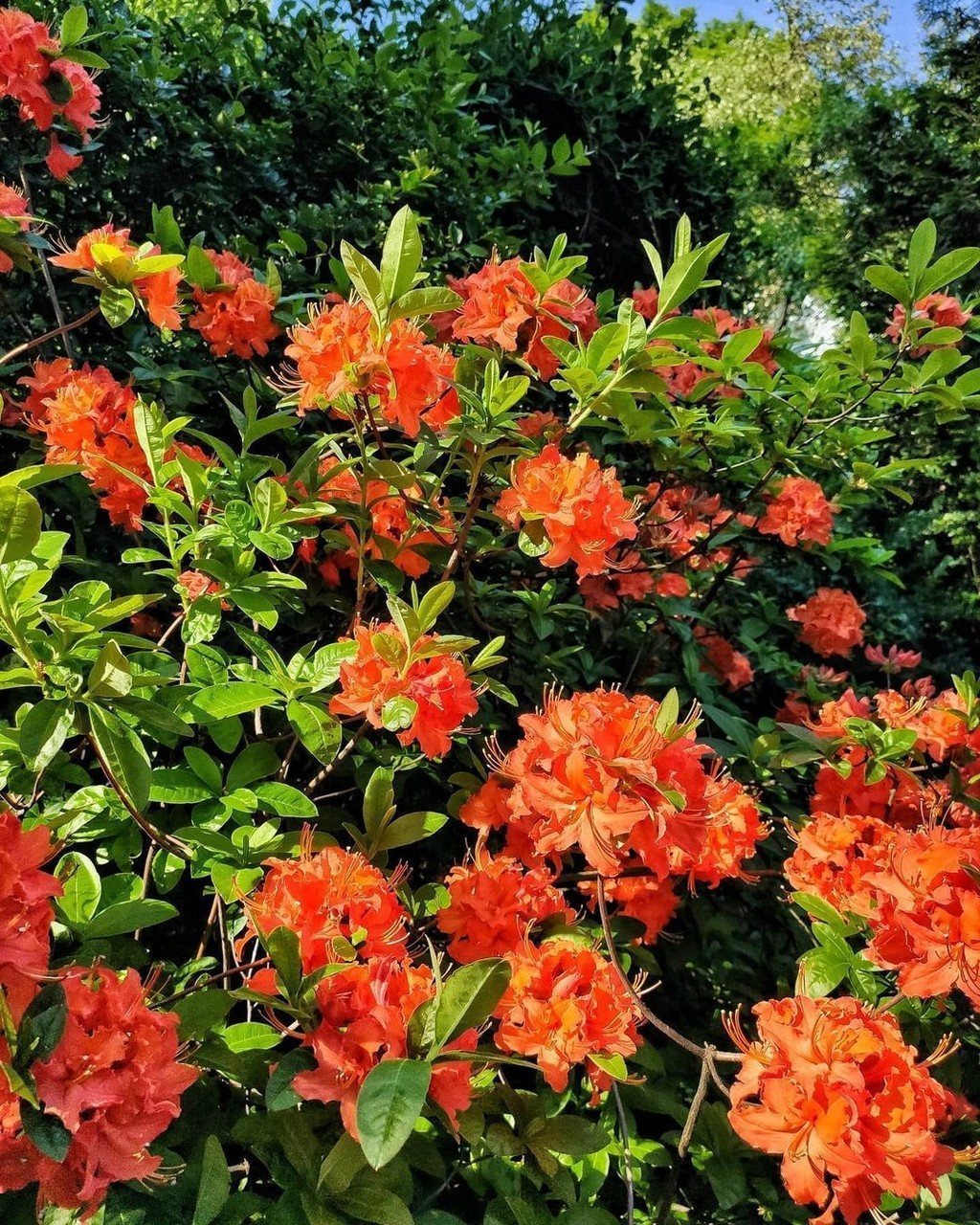





Japanese
The shrub comes from the sunny Japanese island of Honshu. It is considered one of the most beautiful varieties of deciduous rhododendrons.
The height of the bush can reach 2 m. The stems are bare or covered with silvery bristles. The leaves are oblong, green, pubescent on the underside and bare on the front. In autumn the leaves turn red-orange.
Bell flowers are collected in racemes of 6-12 pieces. The buds are distinguished by bright orange or soft salmon shades.
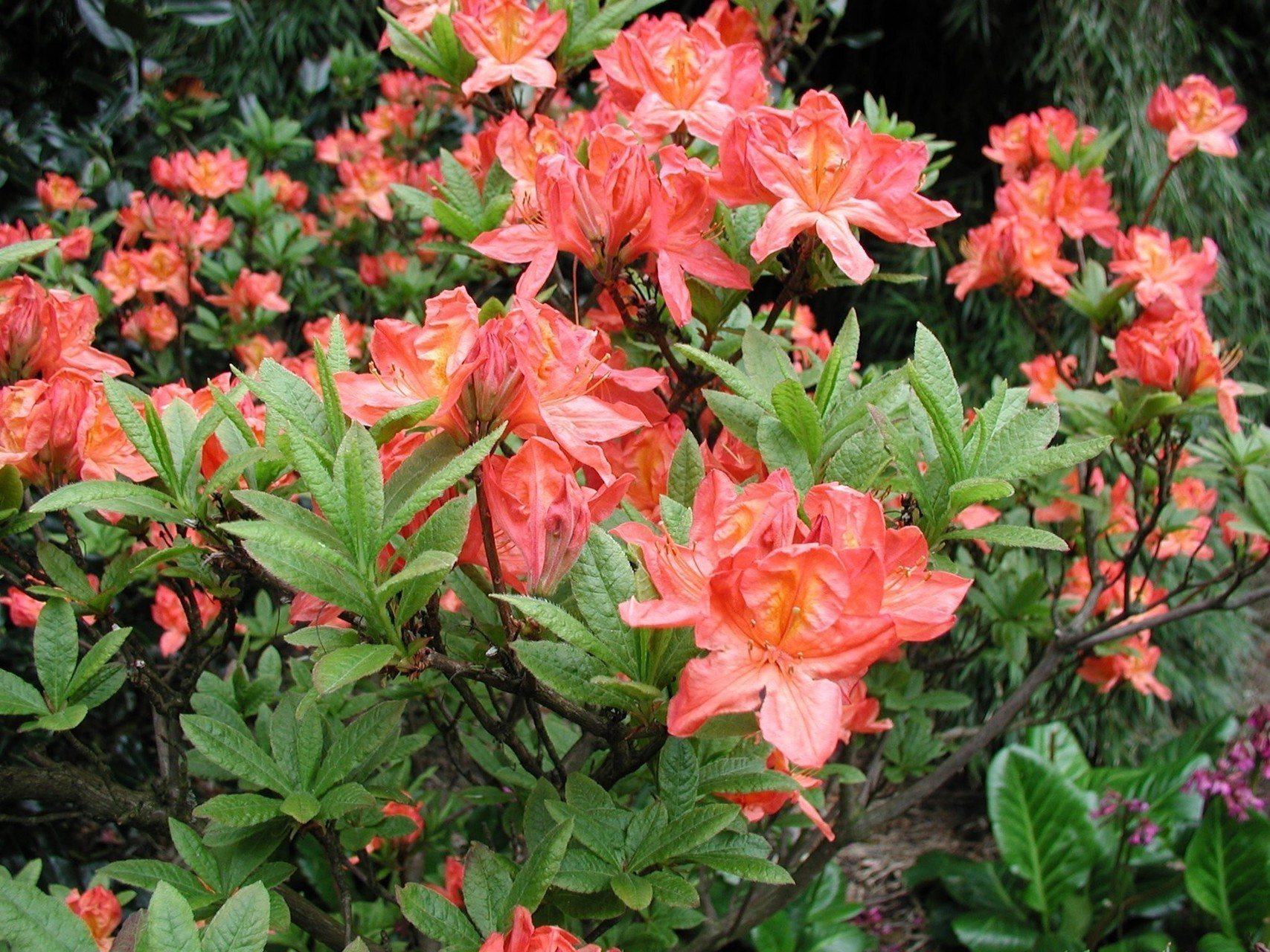
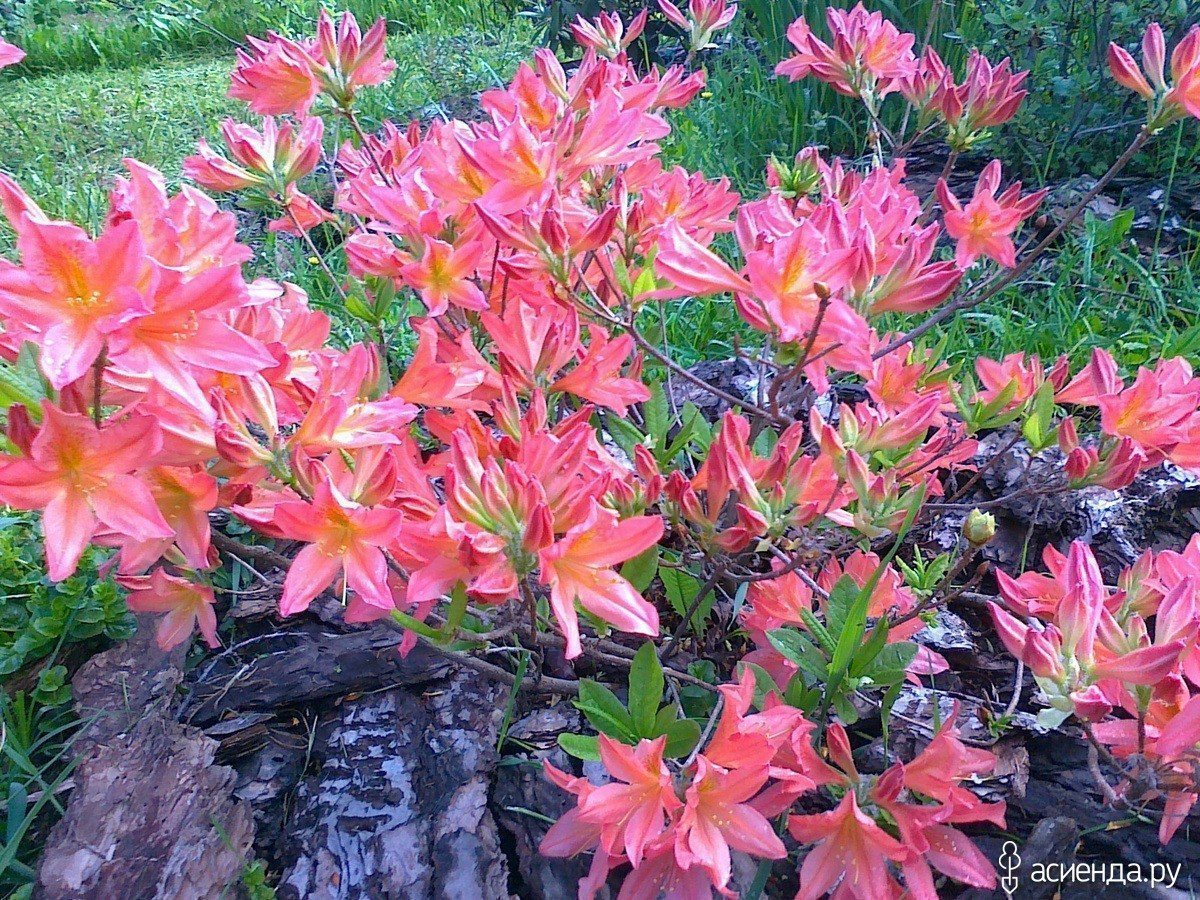
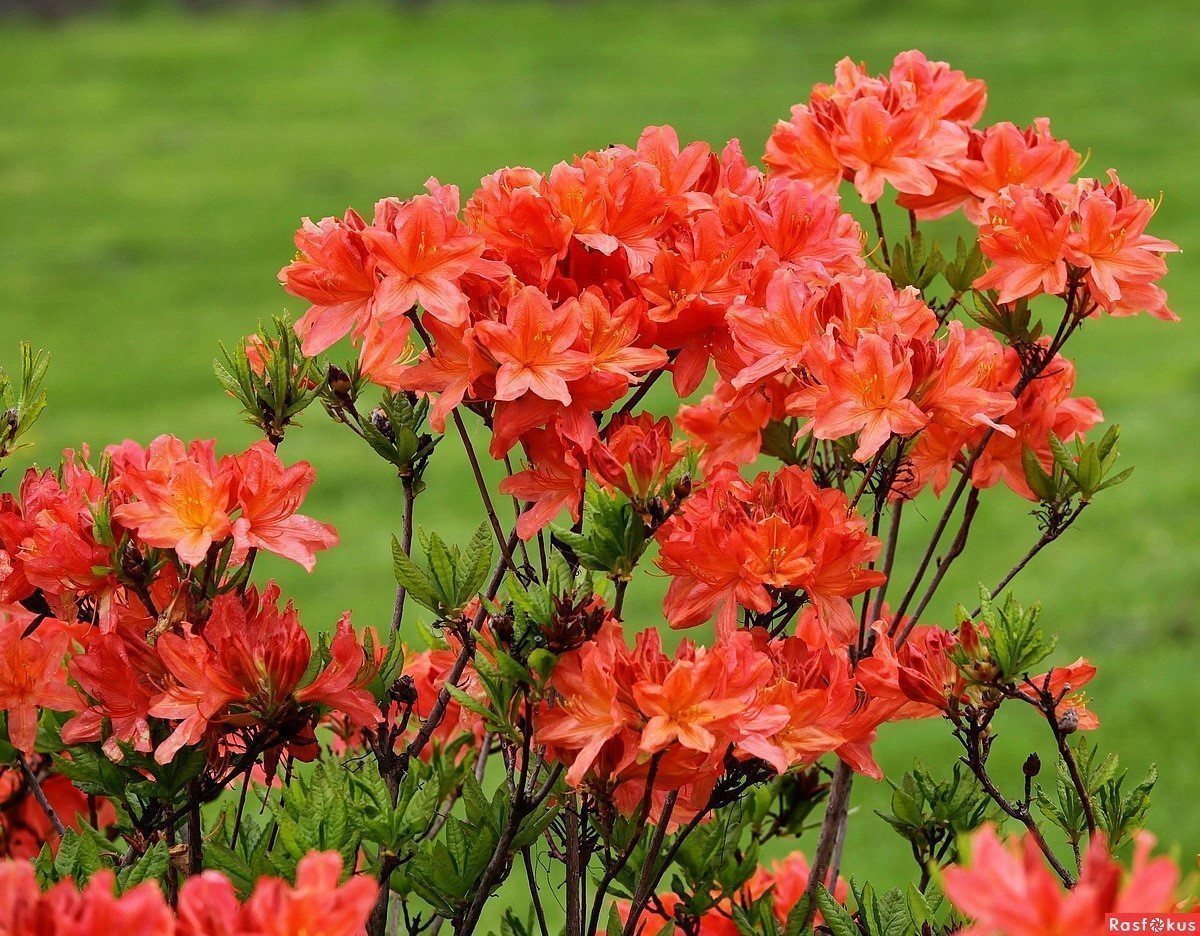
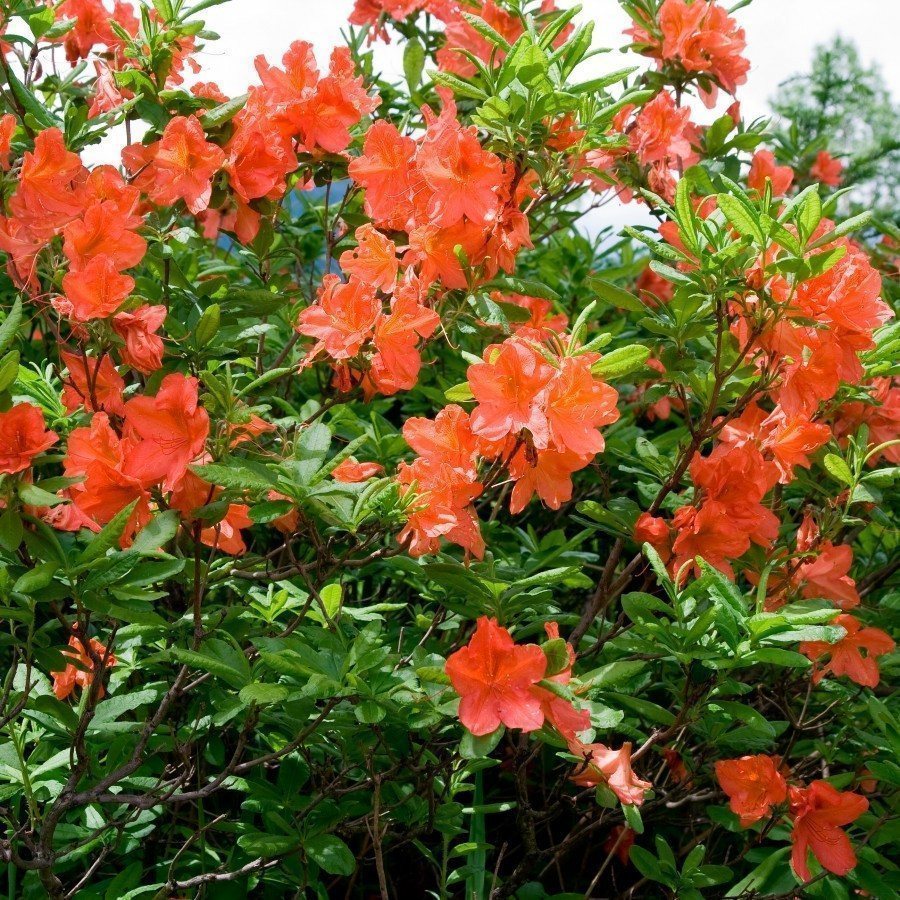
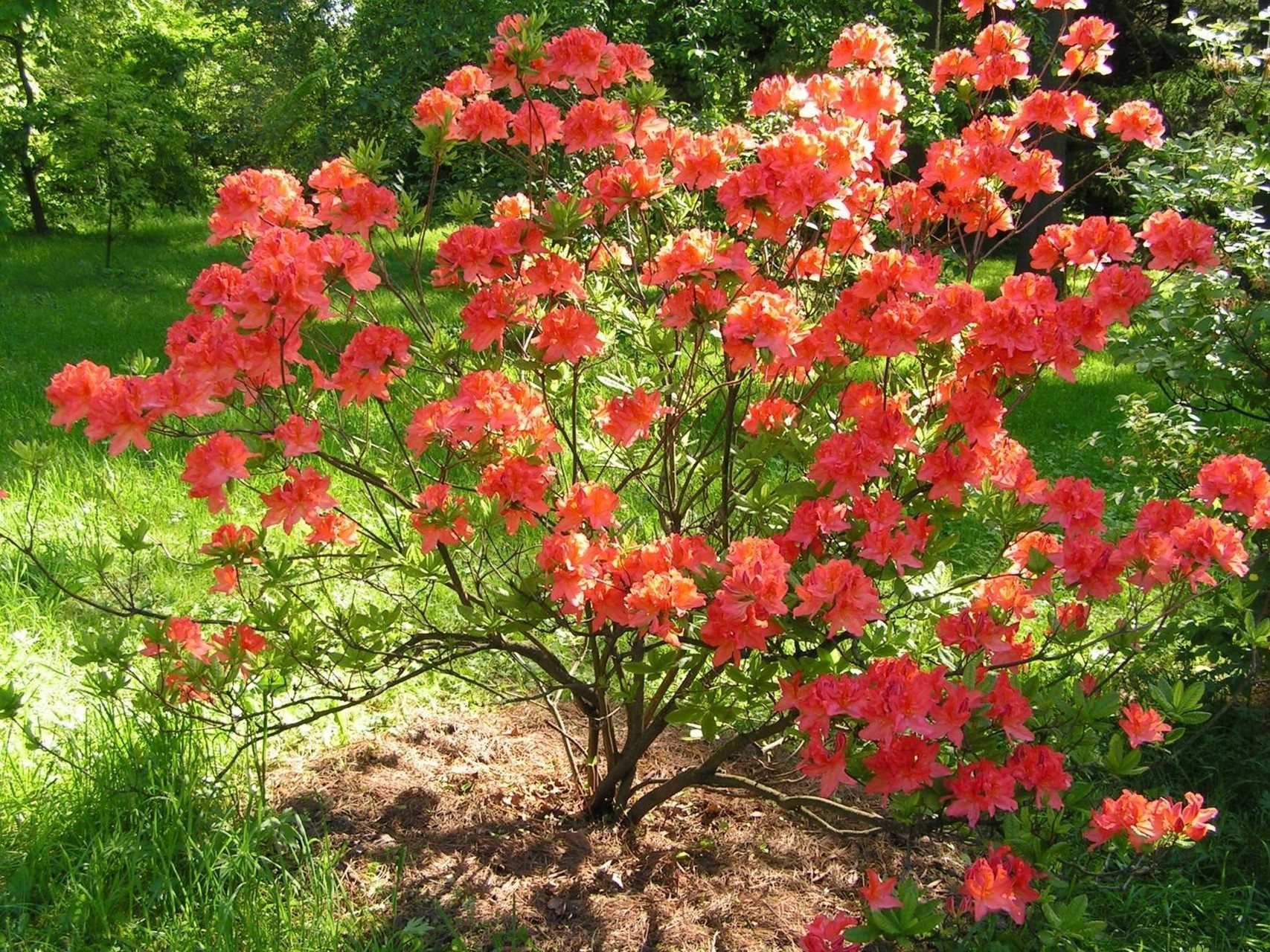





Schlippenbach
This rhododendron reaches a height of 2-4 m. The leaves are shaped like an egg, green and wavy at the edges. Bell-shaped flowers are collected in umbrella inflorescences. Their shade is pale pink with purple specks inside the bud.
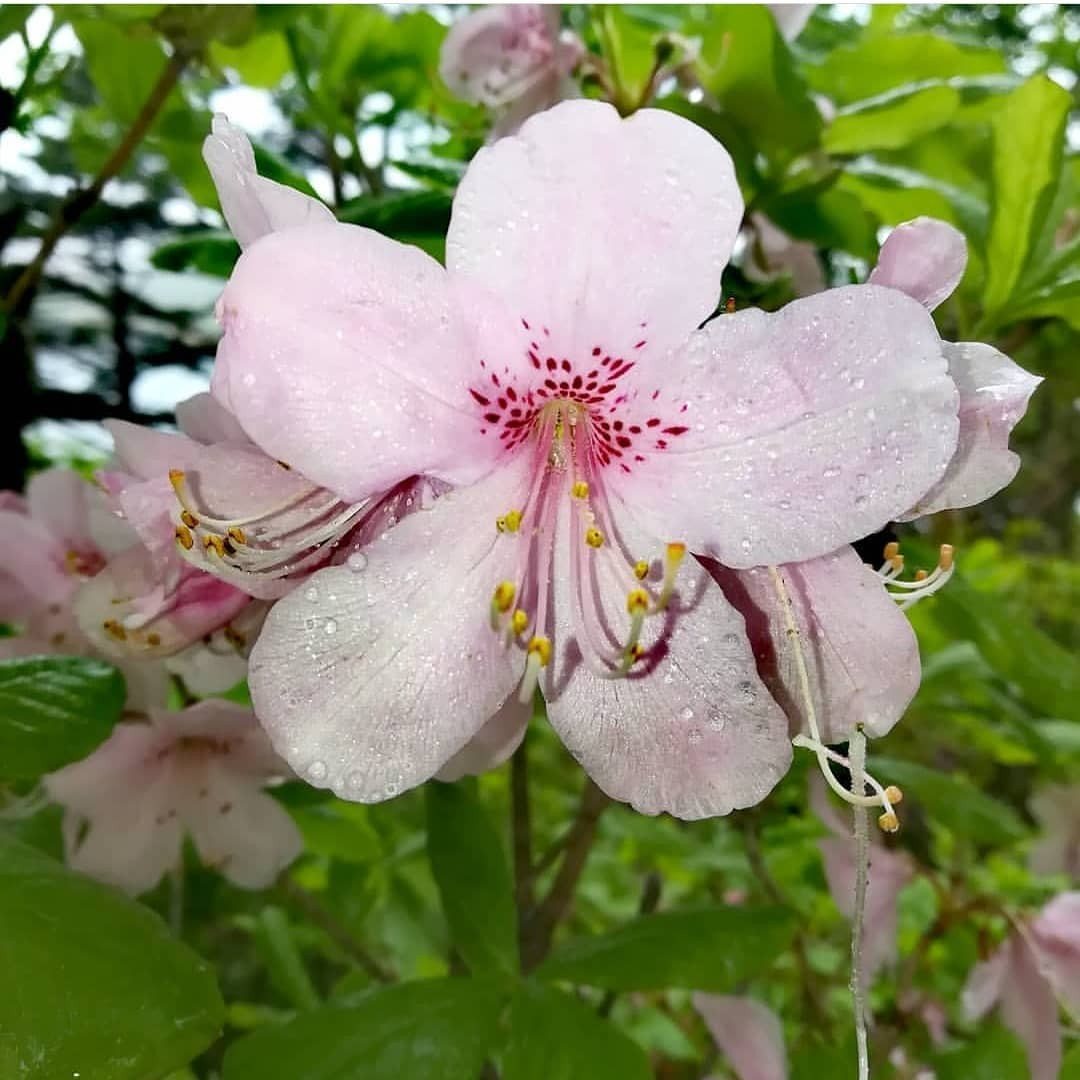
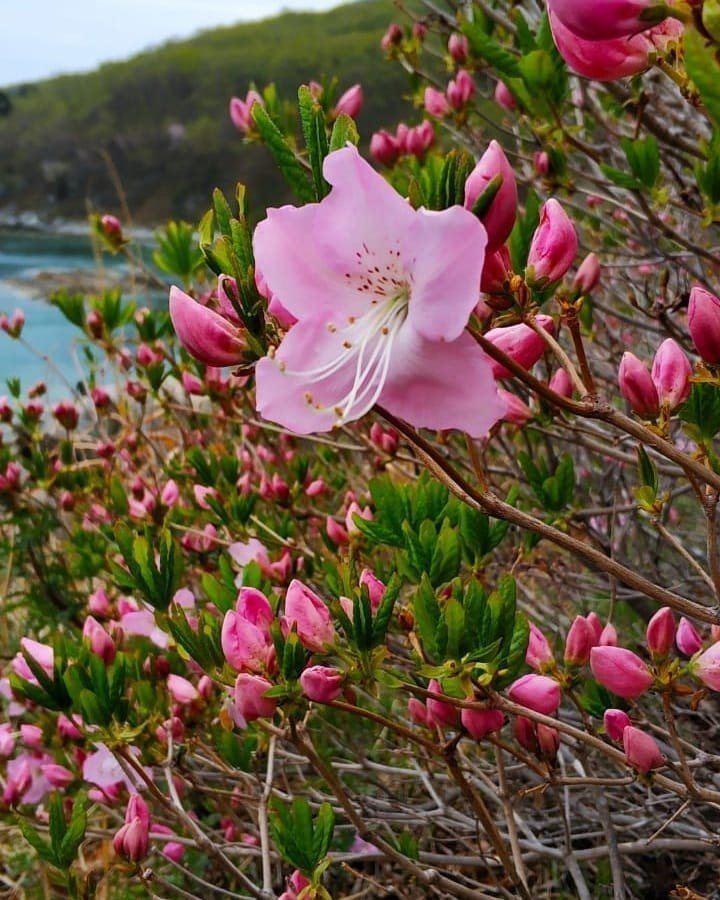
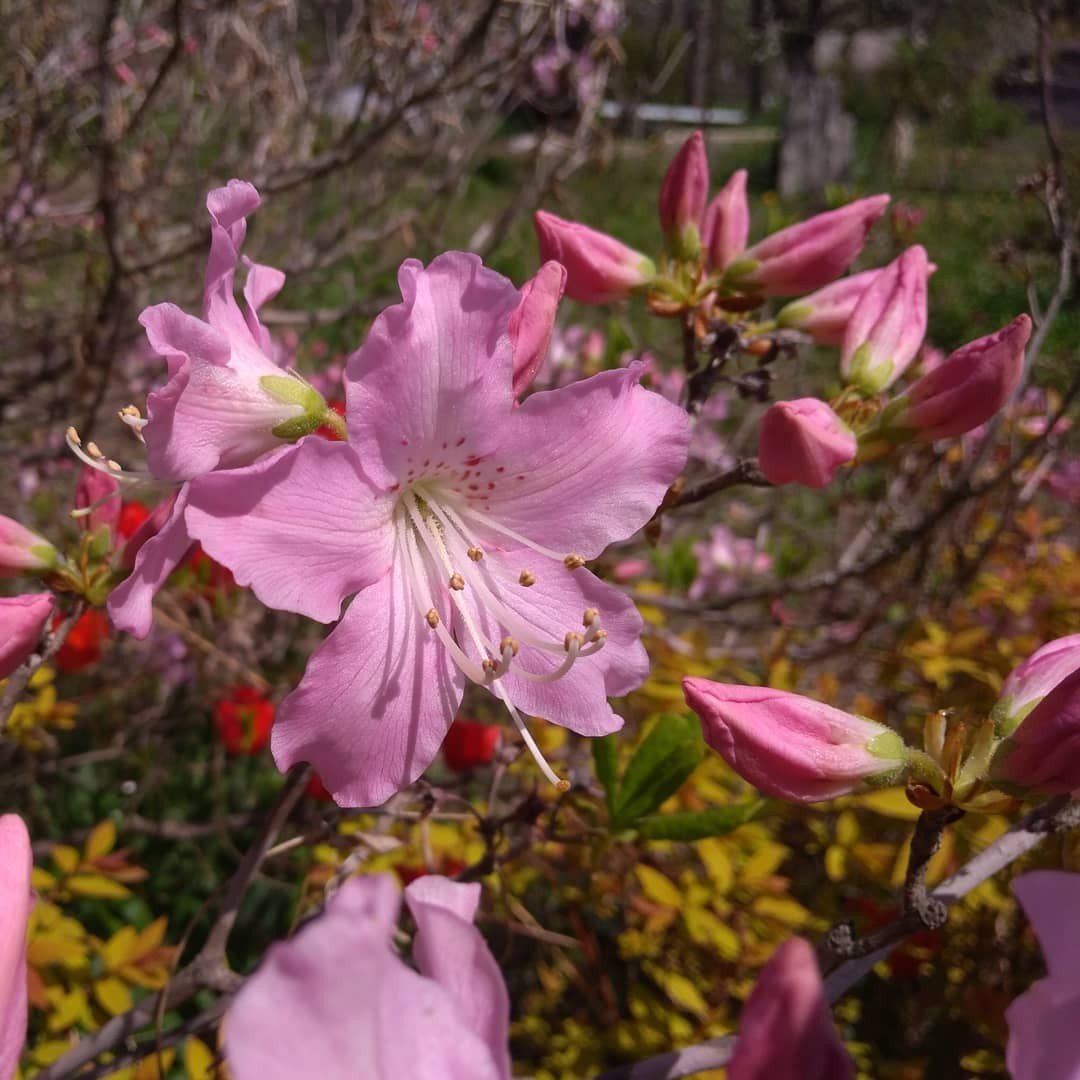
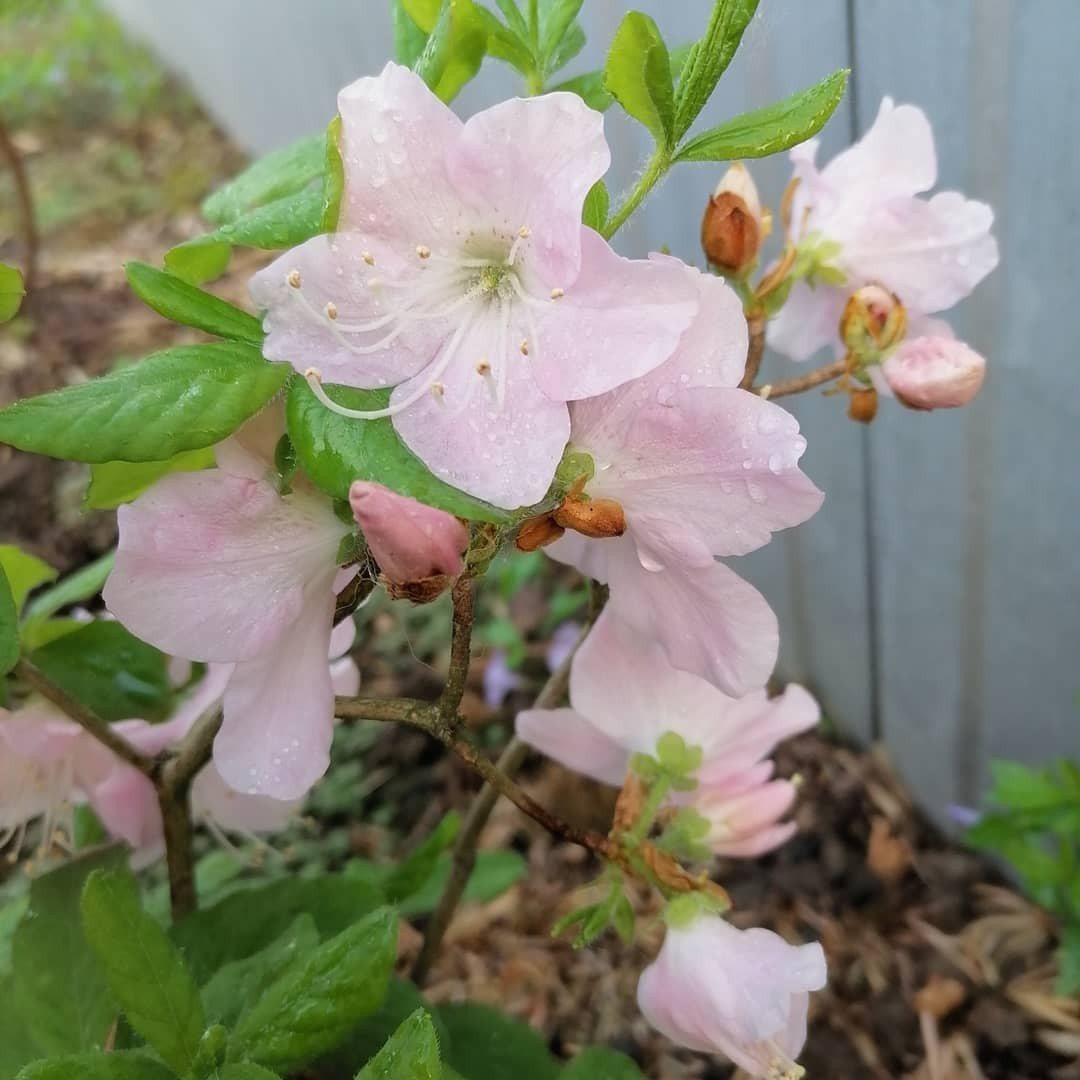
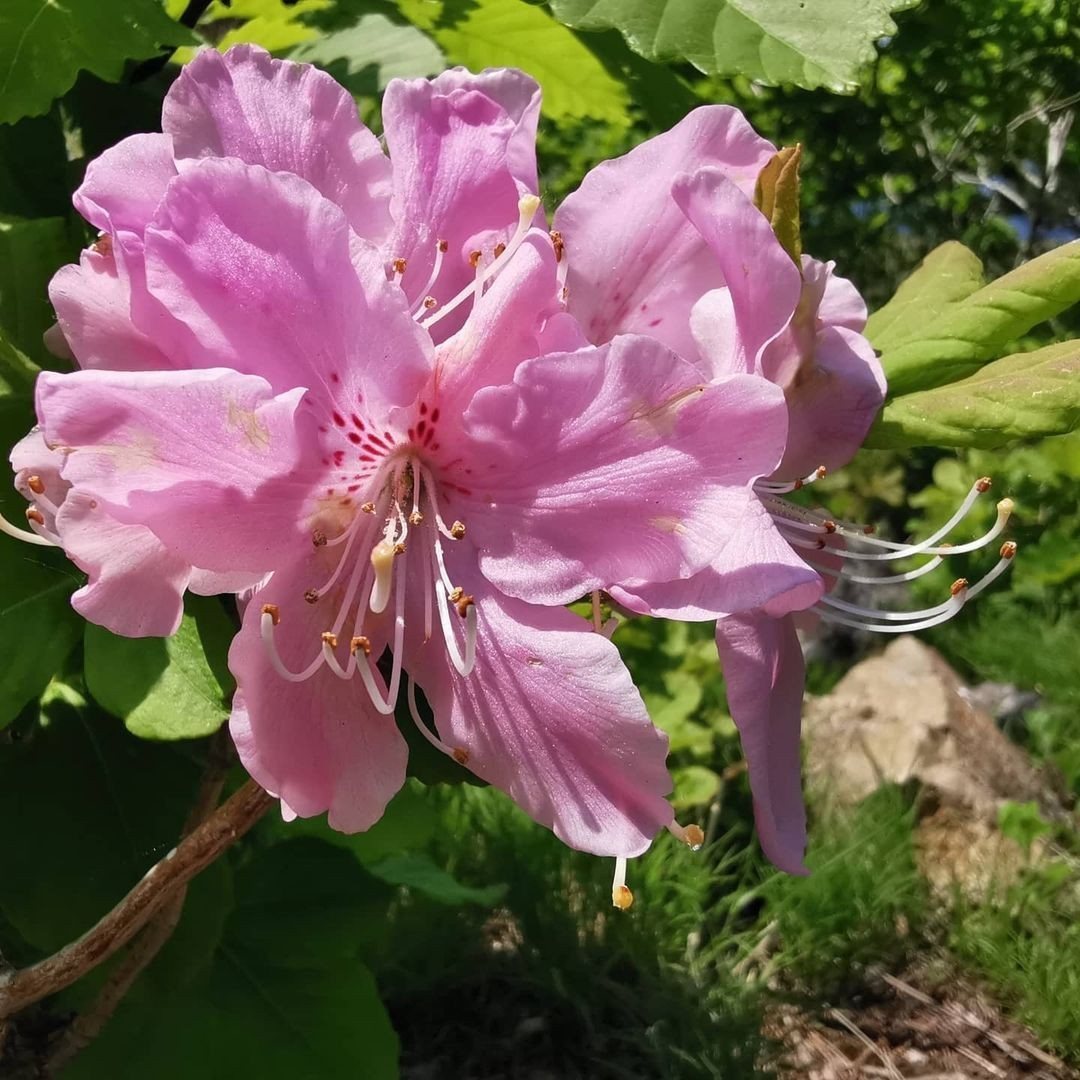





Geisha Orange
The height of the bush can reach 50 cm, the diameter of the crown is 80 cm. This dwarf rhododendron is considered the most decorative.
The shoots of the plant are short, the leaves are dark green, leathery, and by autumn they turn yellow and partially fall off.
Bell-shaped flowers form inflorescences (2-4 pieces each). Geisha Orange blooms at the end of May, flowering duration is 14 days. Due to its compact size it is suitable for growing indoors.
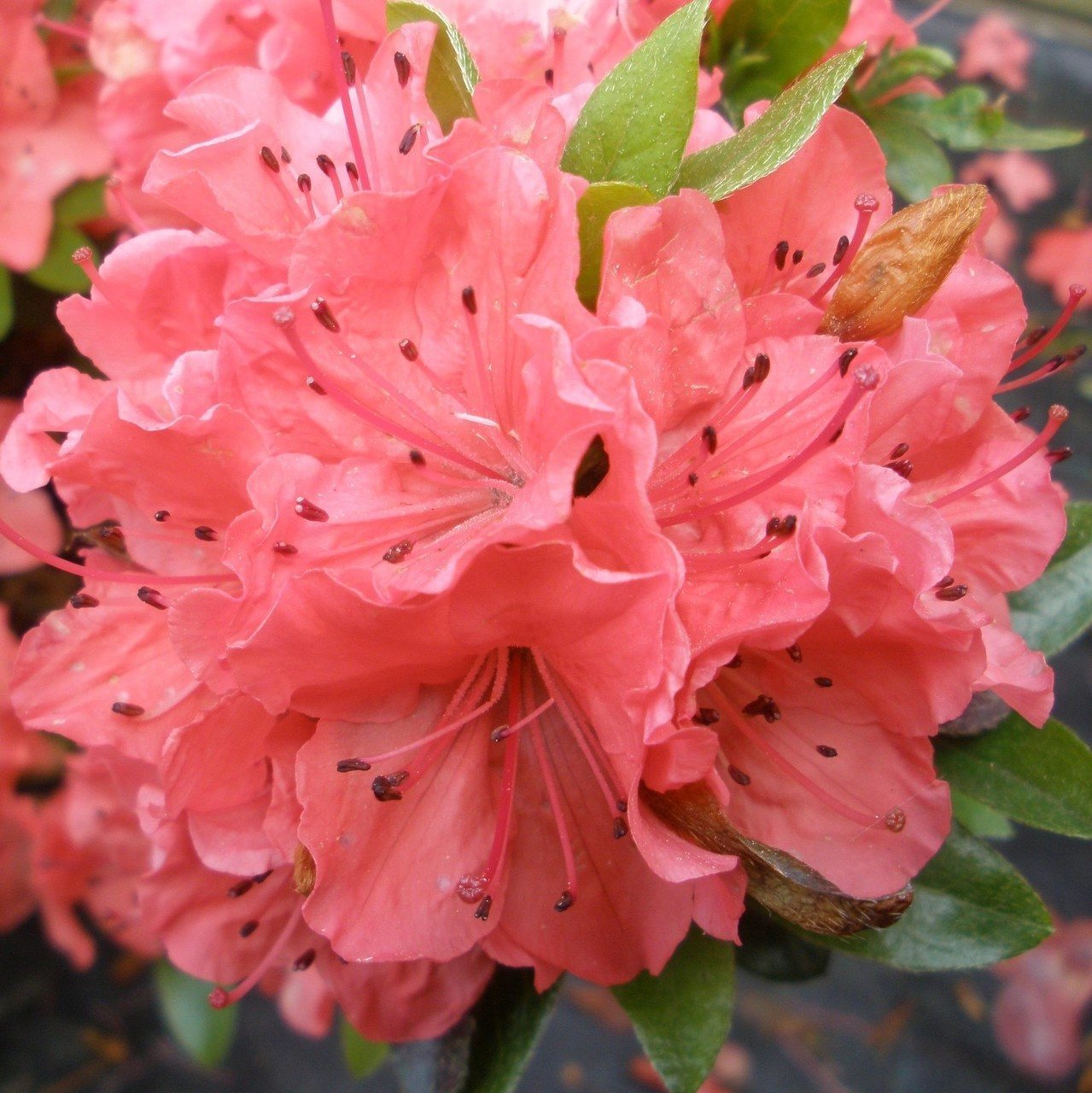
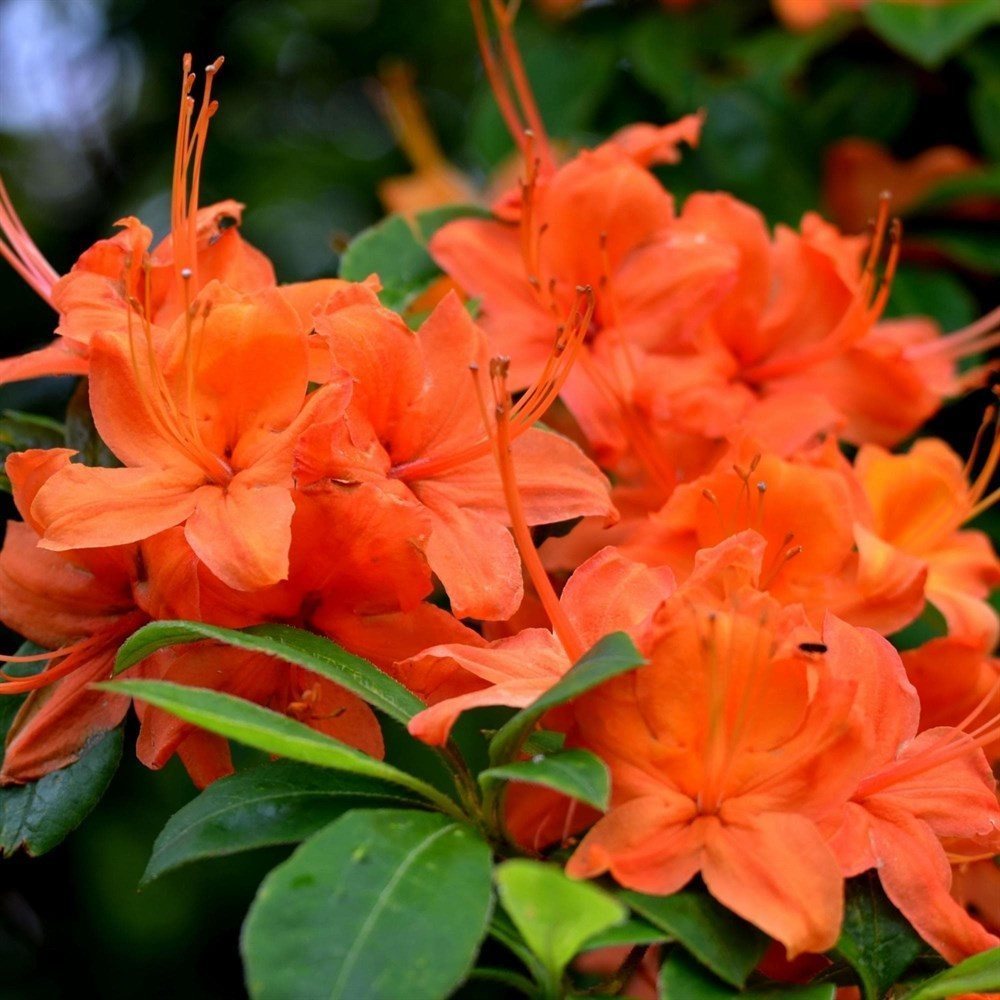
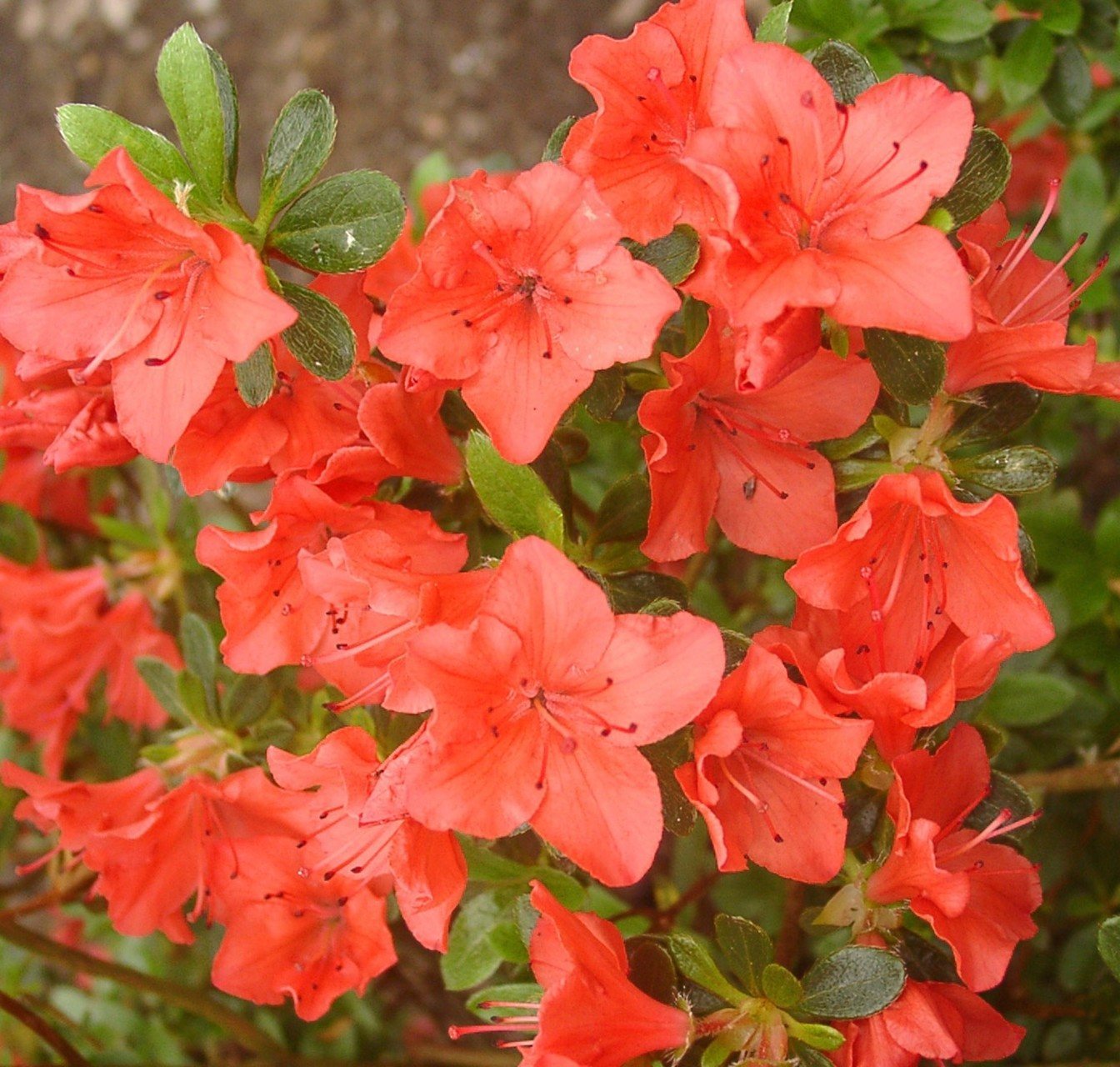
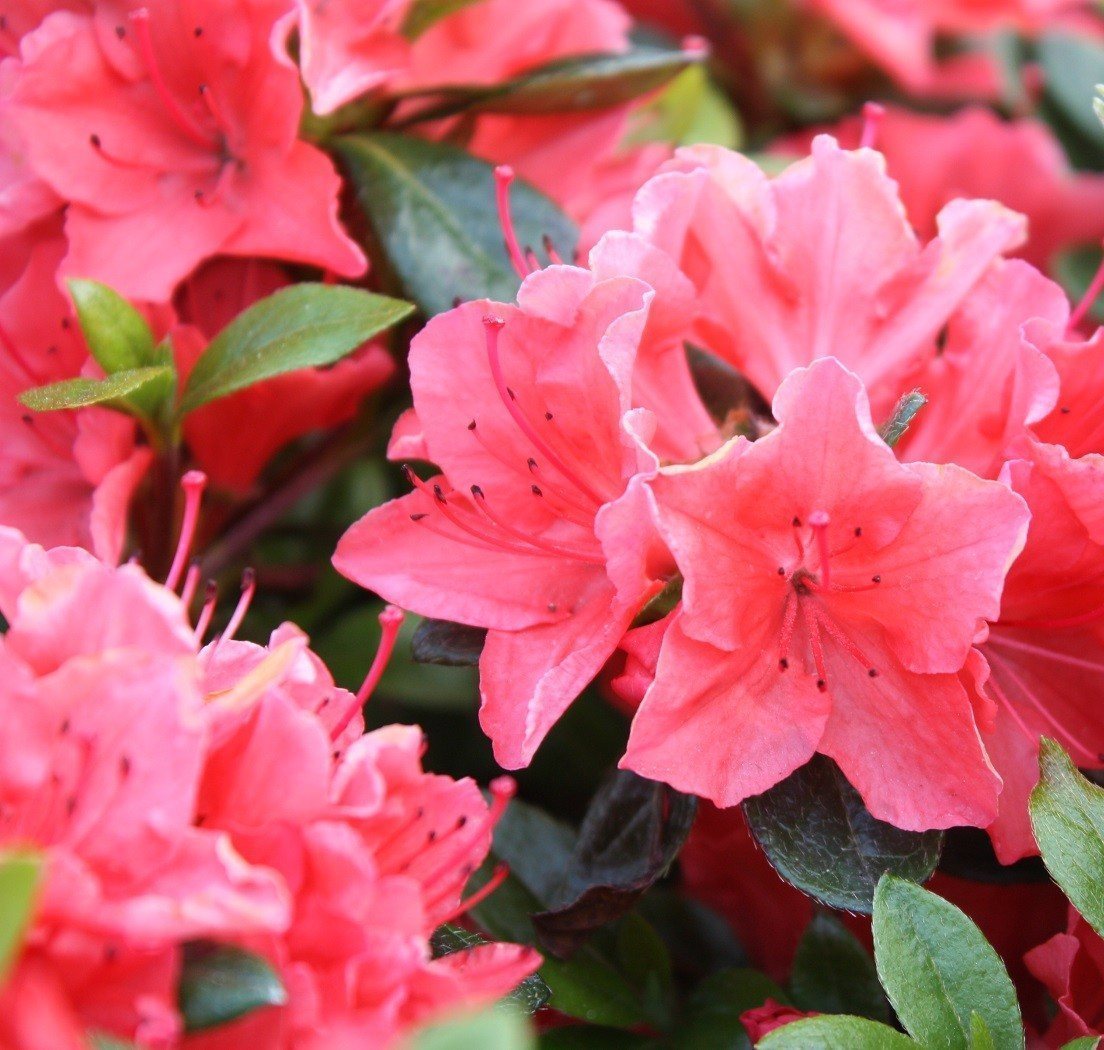
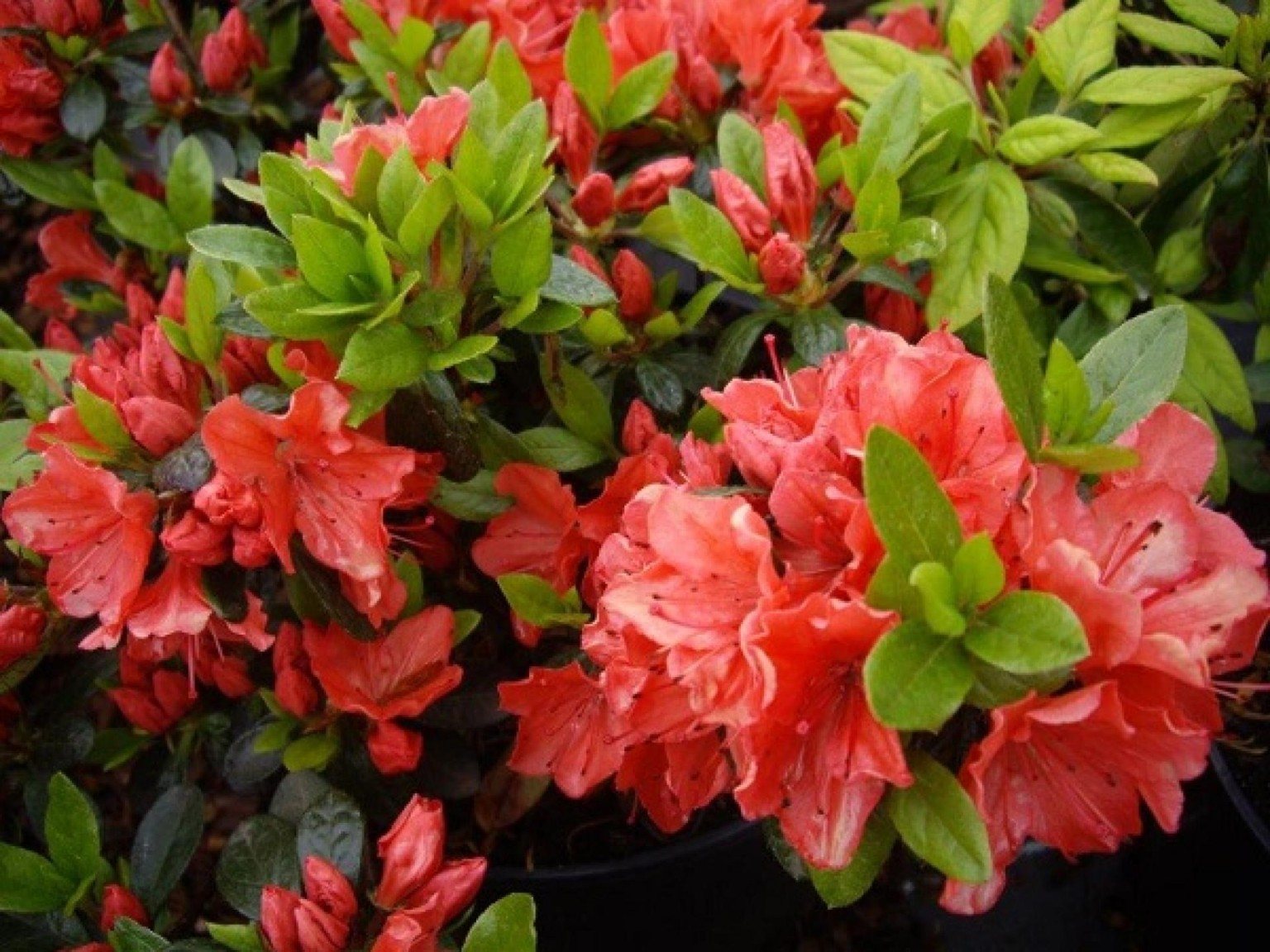





Canadian
A low-growing plant with a height of 1.2 m. The branches are smooth, the leaves are oblong, curled at the edges. The leaves are bluish-green at the top and bluish-gray underneath. The shoots are thin, yellow-red, and become grayish-brown over time.Canadian rhododendrons bloom with purple or pink flowers. The inflorescence has from 3 to 7 flowers.
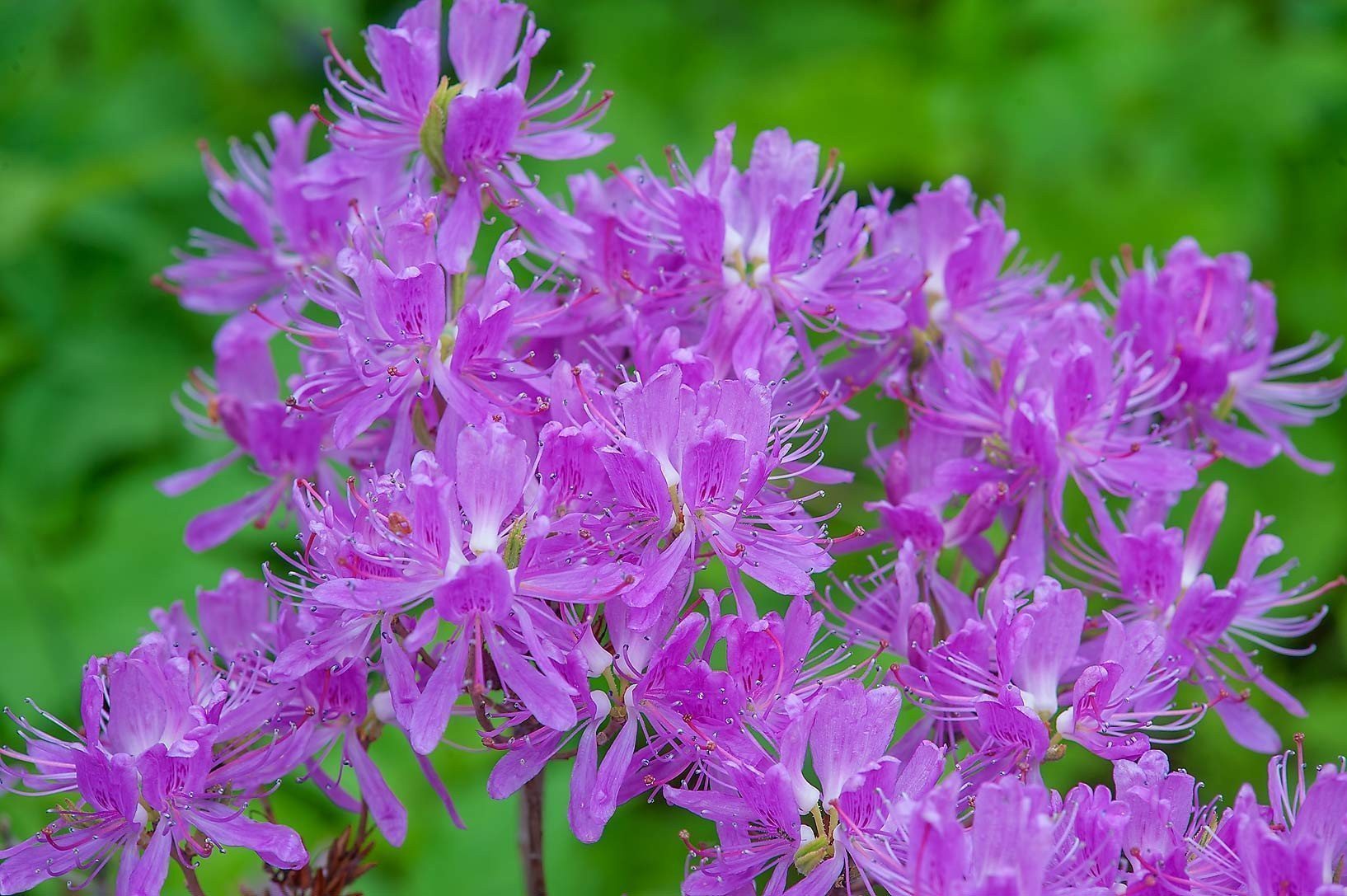
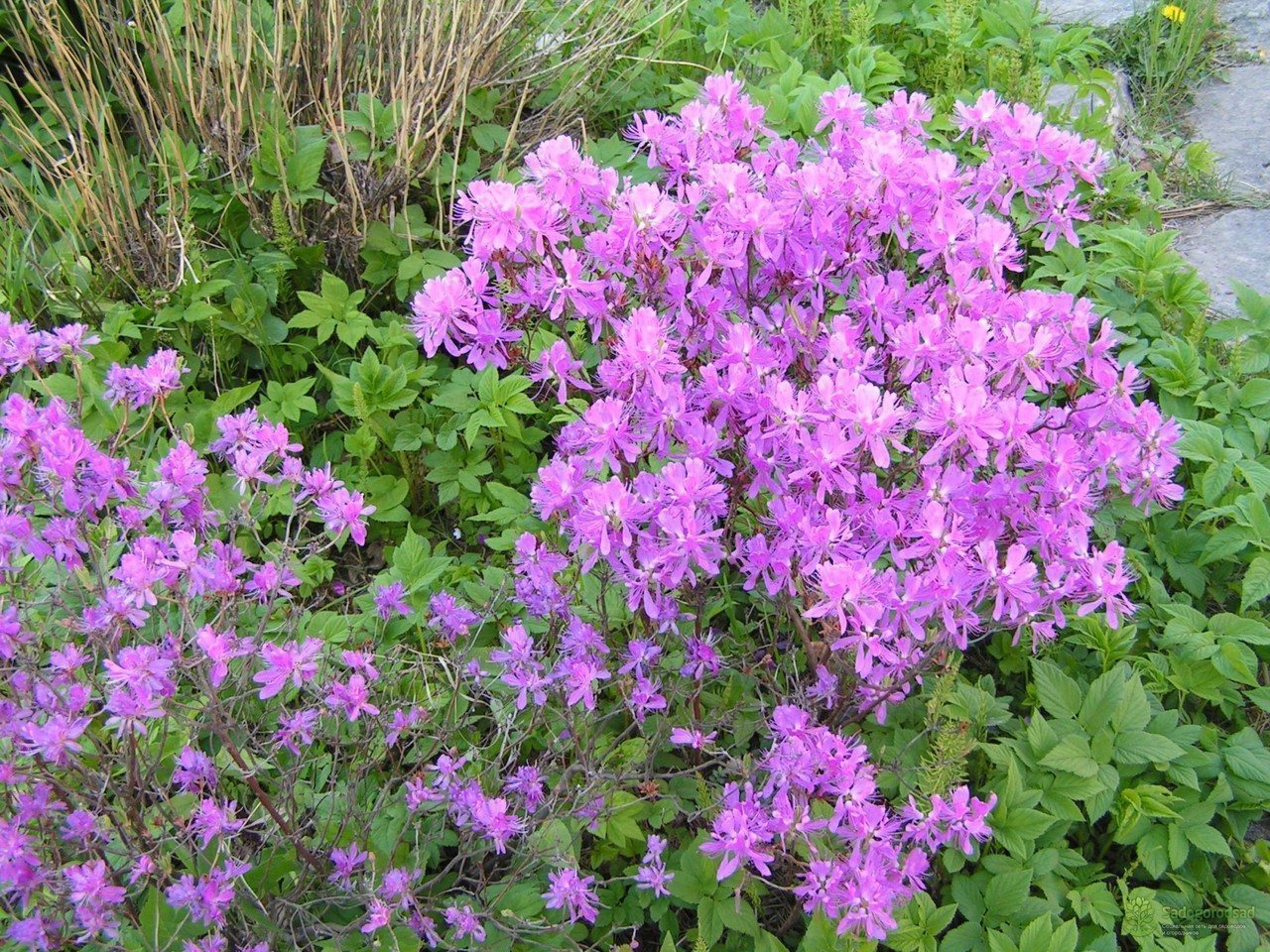
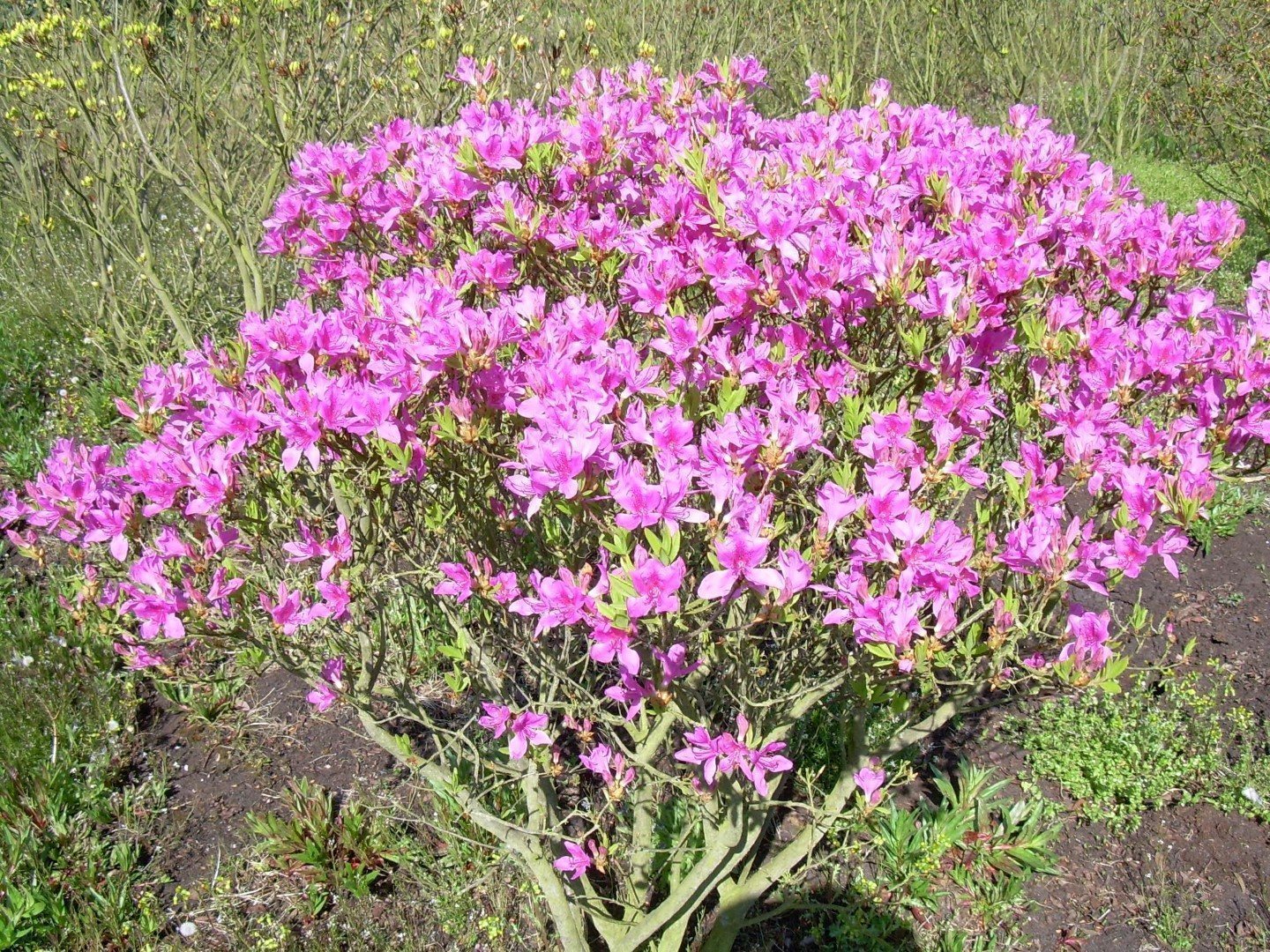
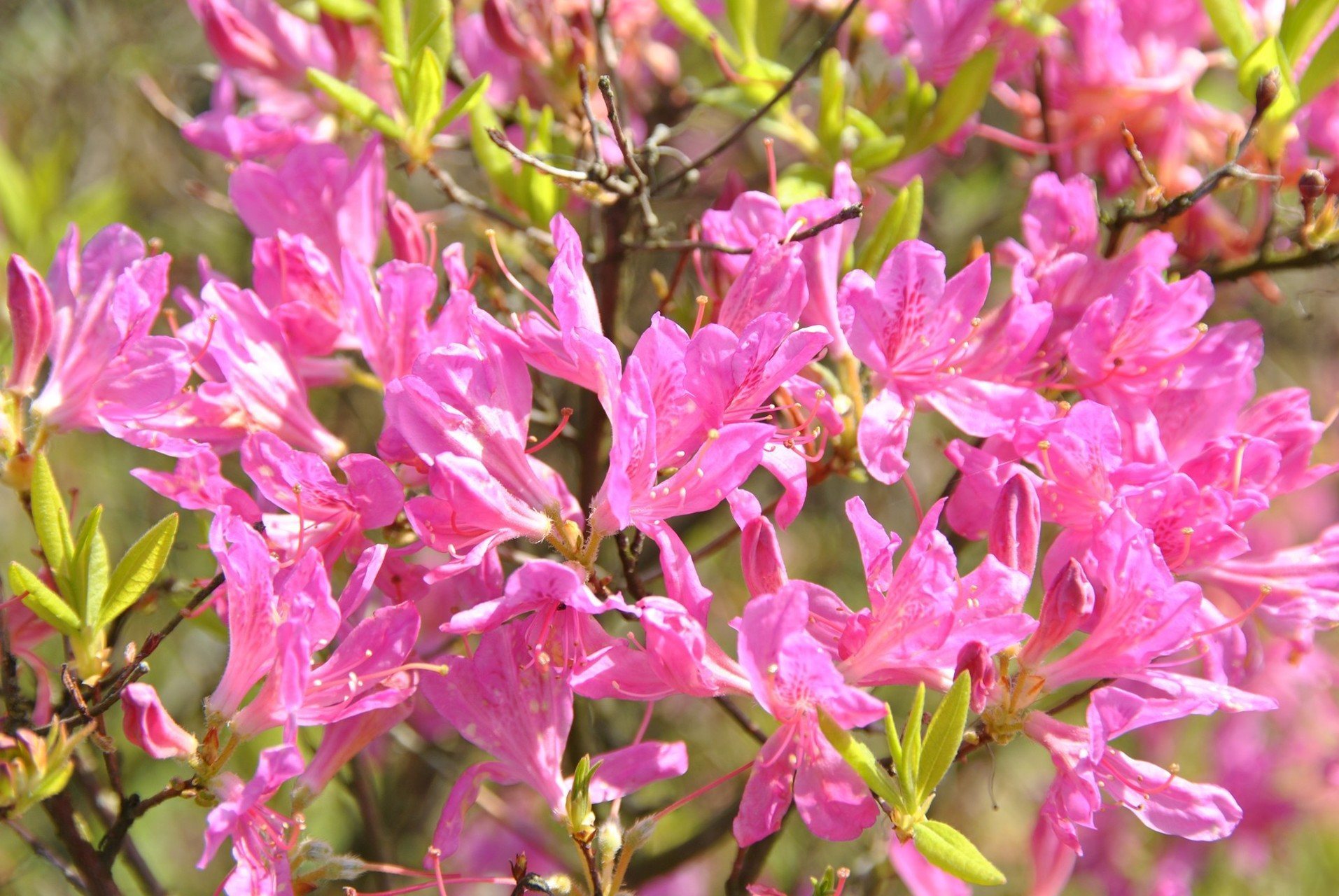




Hybrid
Such varieties arise as a result of cross-pollination of different types of rhododendron. The hybrid varieties bred by breeders are distinguished by beautiful unusual shades of flowers. The sizes of plants vary widely - from dwarf rhododendrons 50 cm high to real giants growing up to 3 m in length.
Nova Zembla
Dutch hybrid variety, the result of crossing rhododendron Persona Gloriosum and Katevbinsky. The shrub reaches a height of 3 m, and the crown in diameter is 3.5 m. The shoots of the plant are vertical, the leaves are large. The flowers are deep red with a black spot, formed in dense inflorescences.
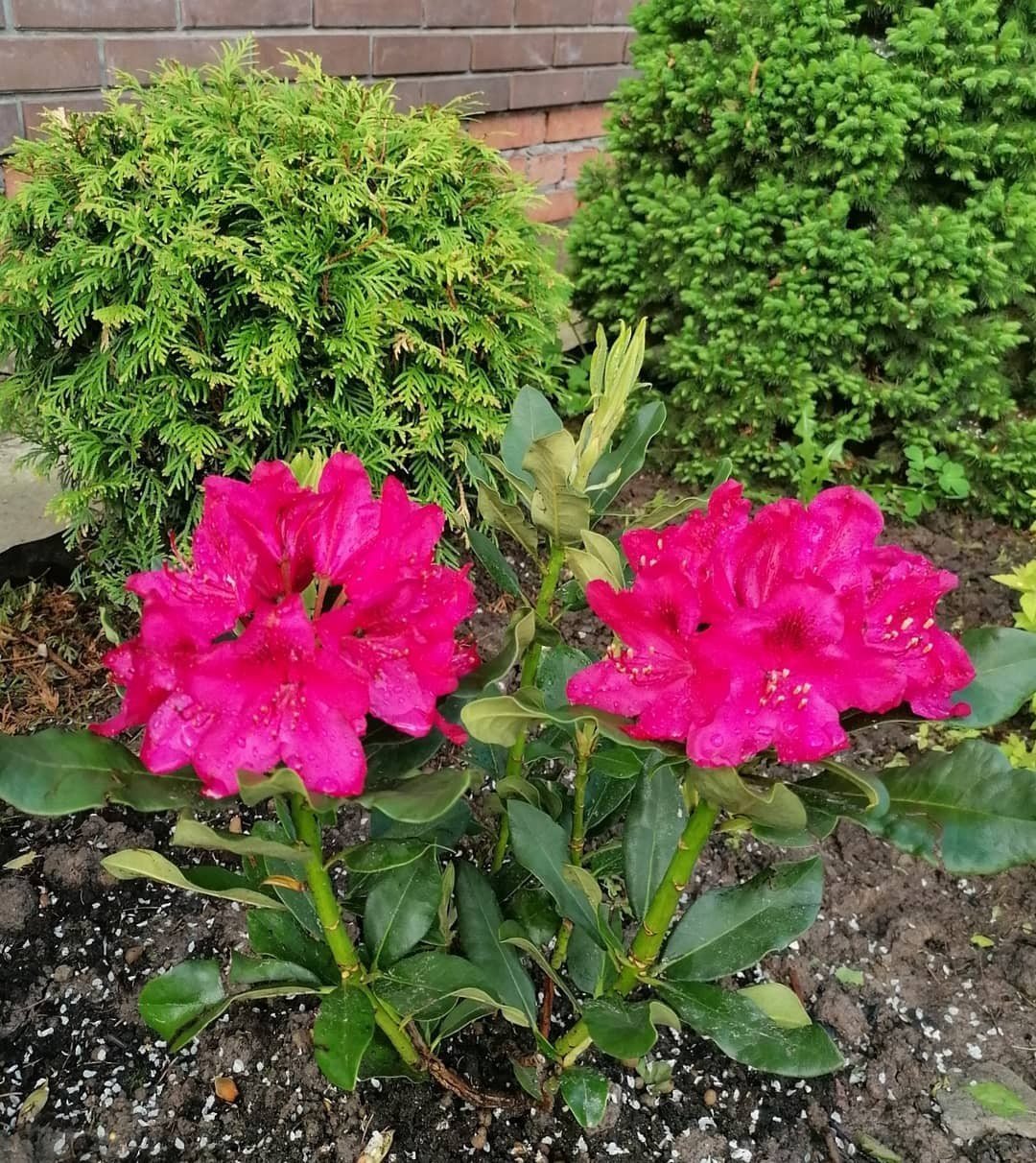
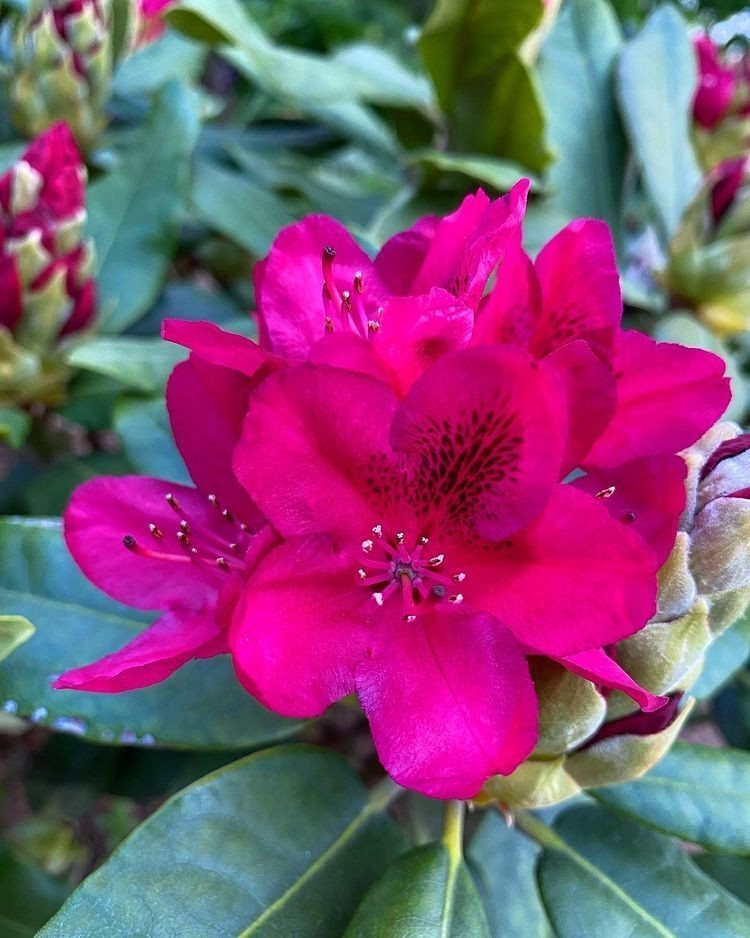
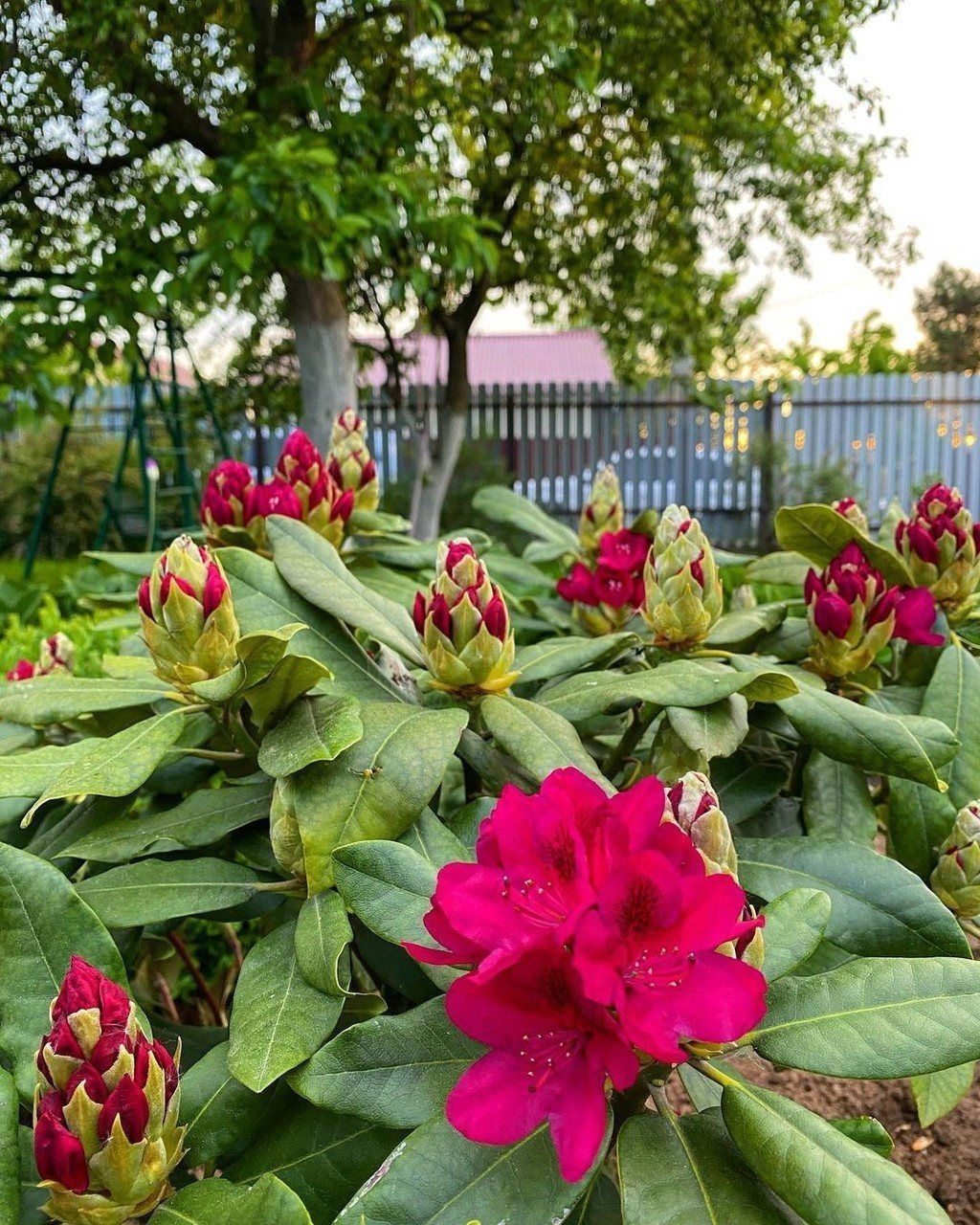
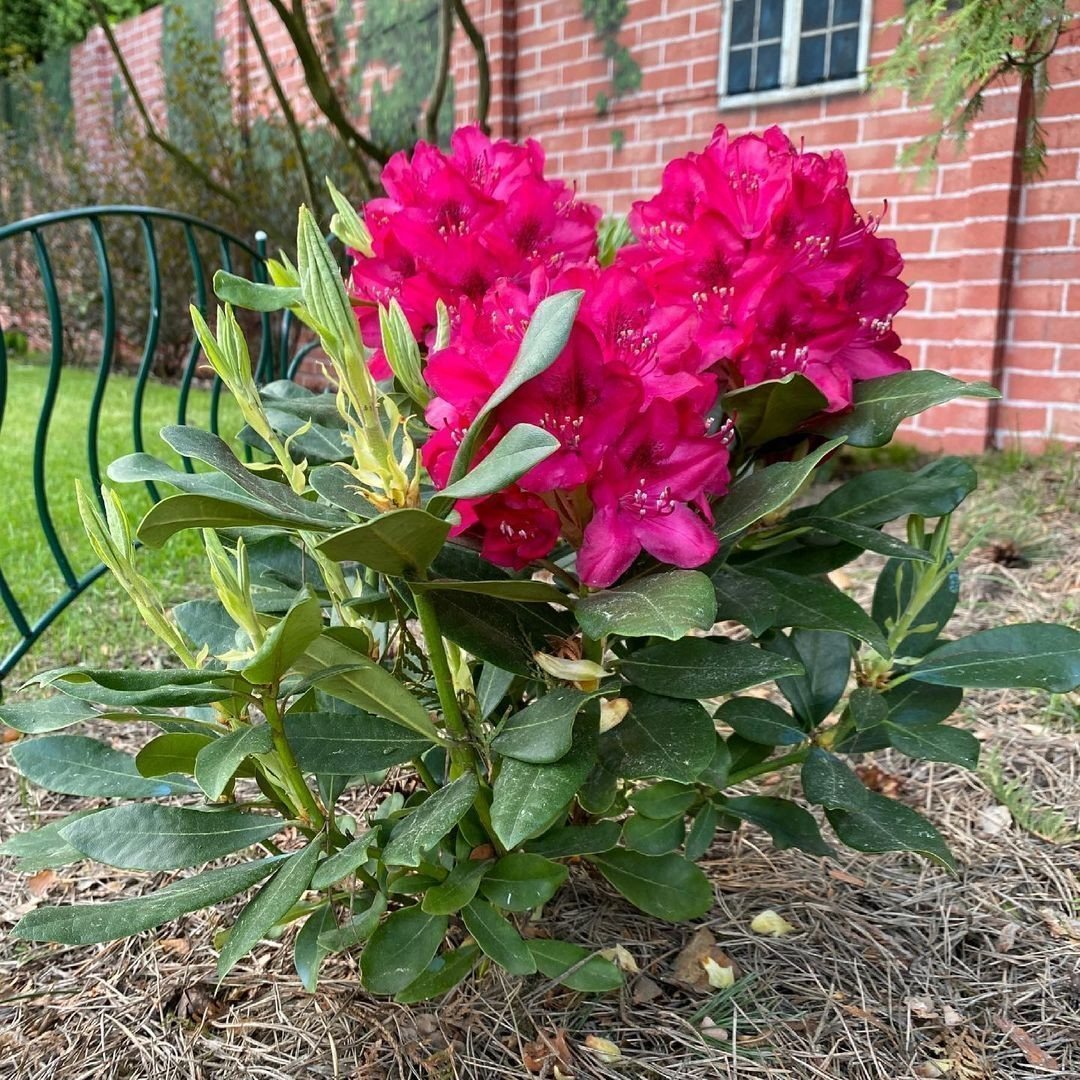
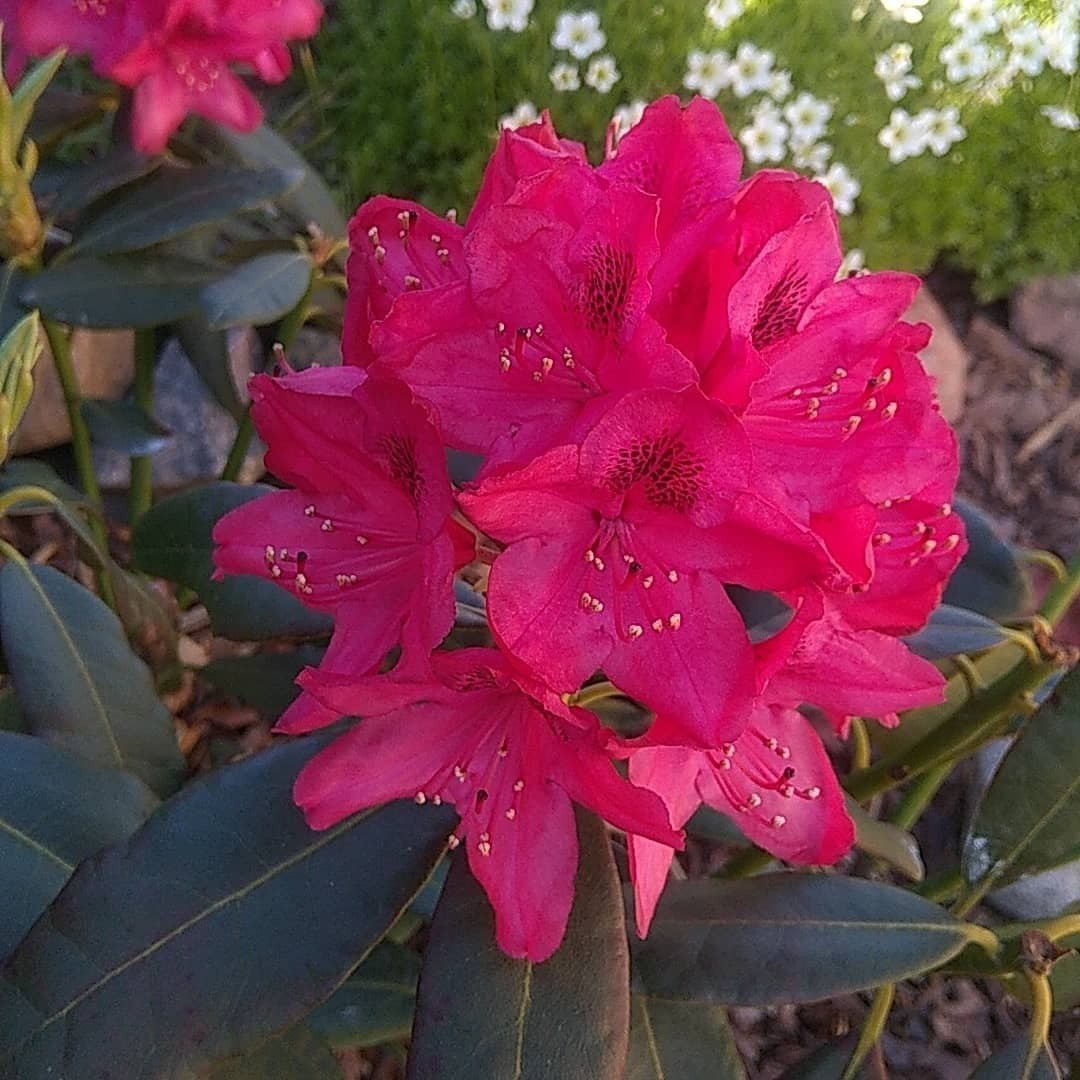





Hague
A shrub reaching 140-150 cm in height, with a regular crown 140 cm in diameter. This variety is the result of crossing Katevbinsky and Short-fruited rhododendrons. The Hague blooms in mid-June. Pinkish-lilac large flowers are collected in dense inflorescences.

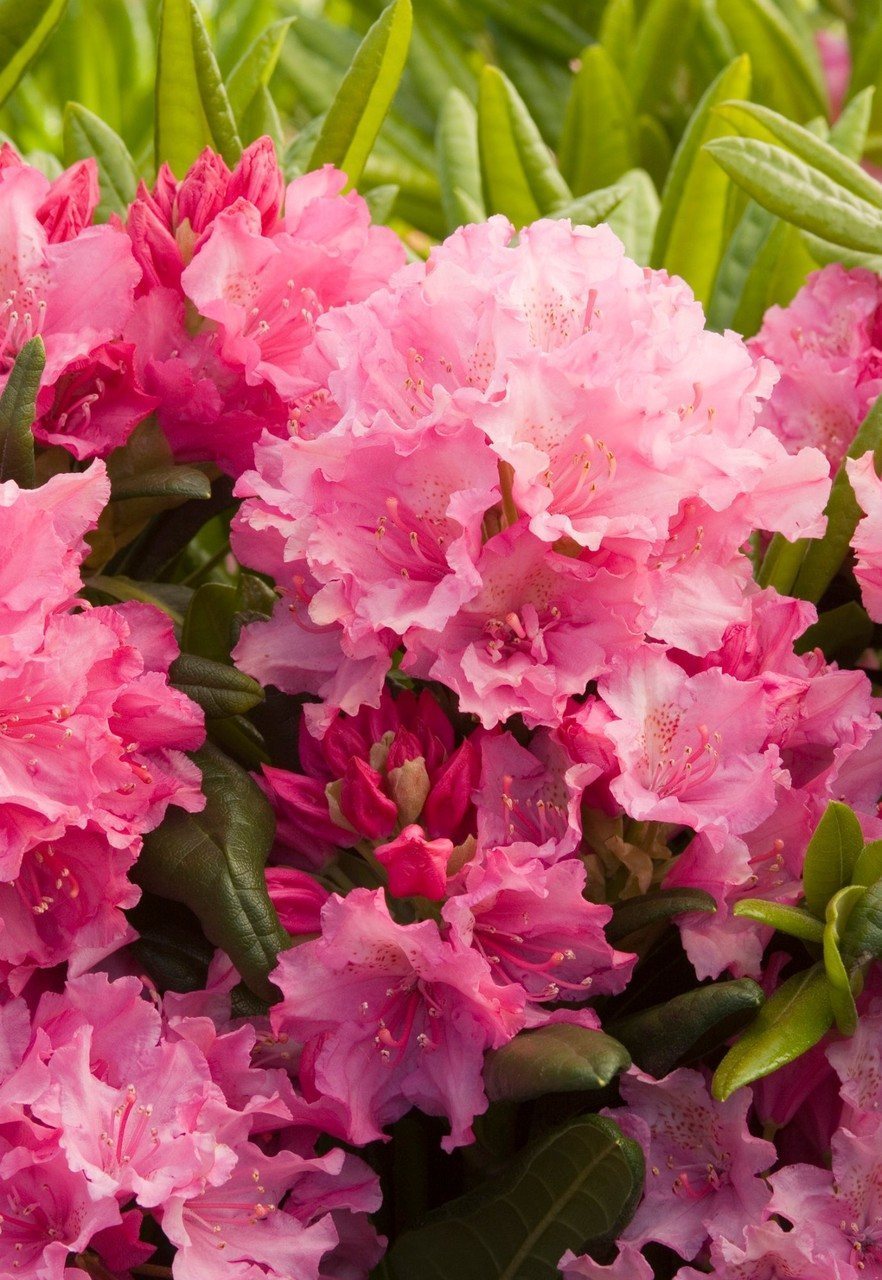
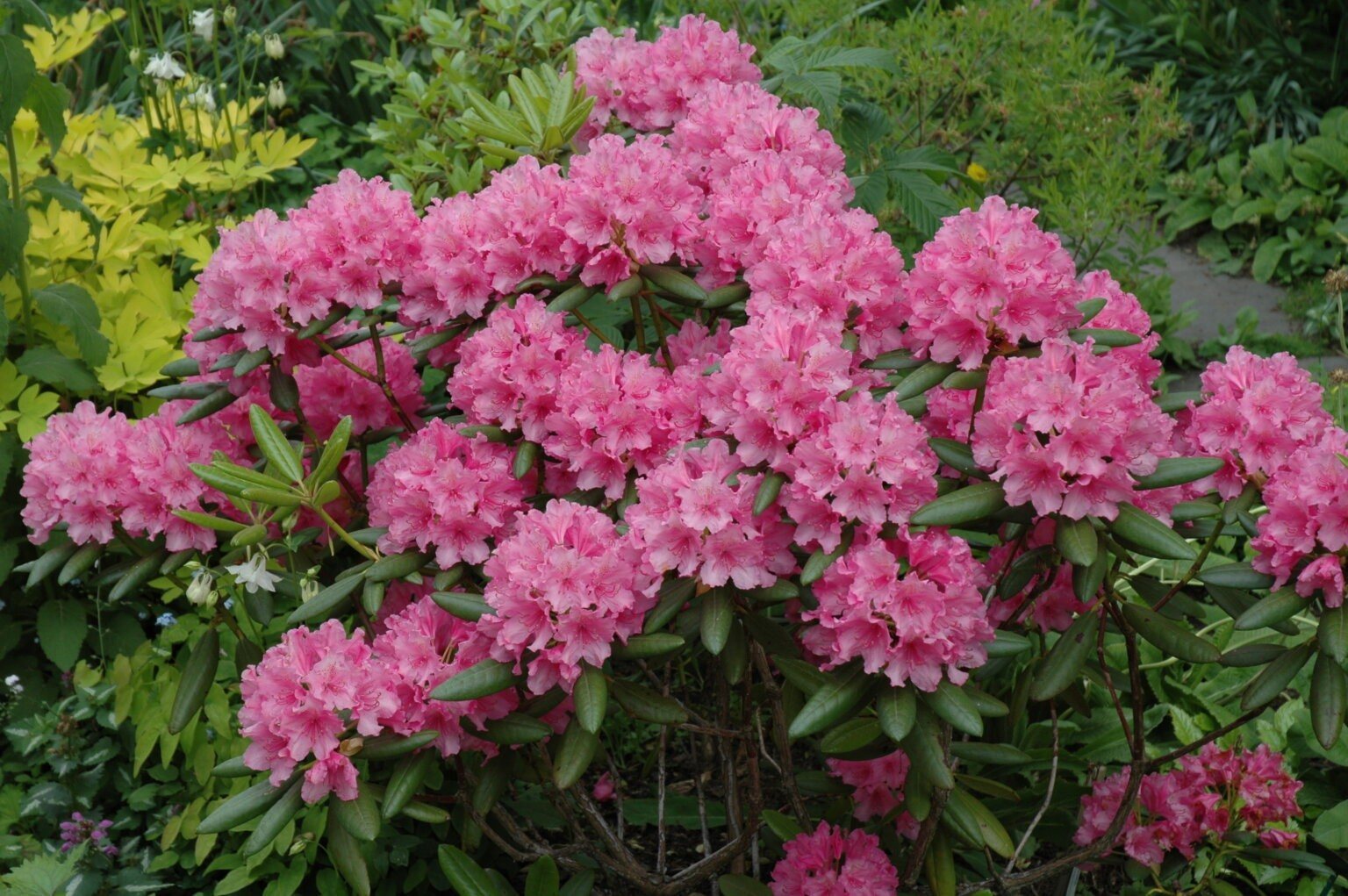
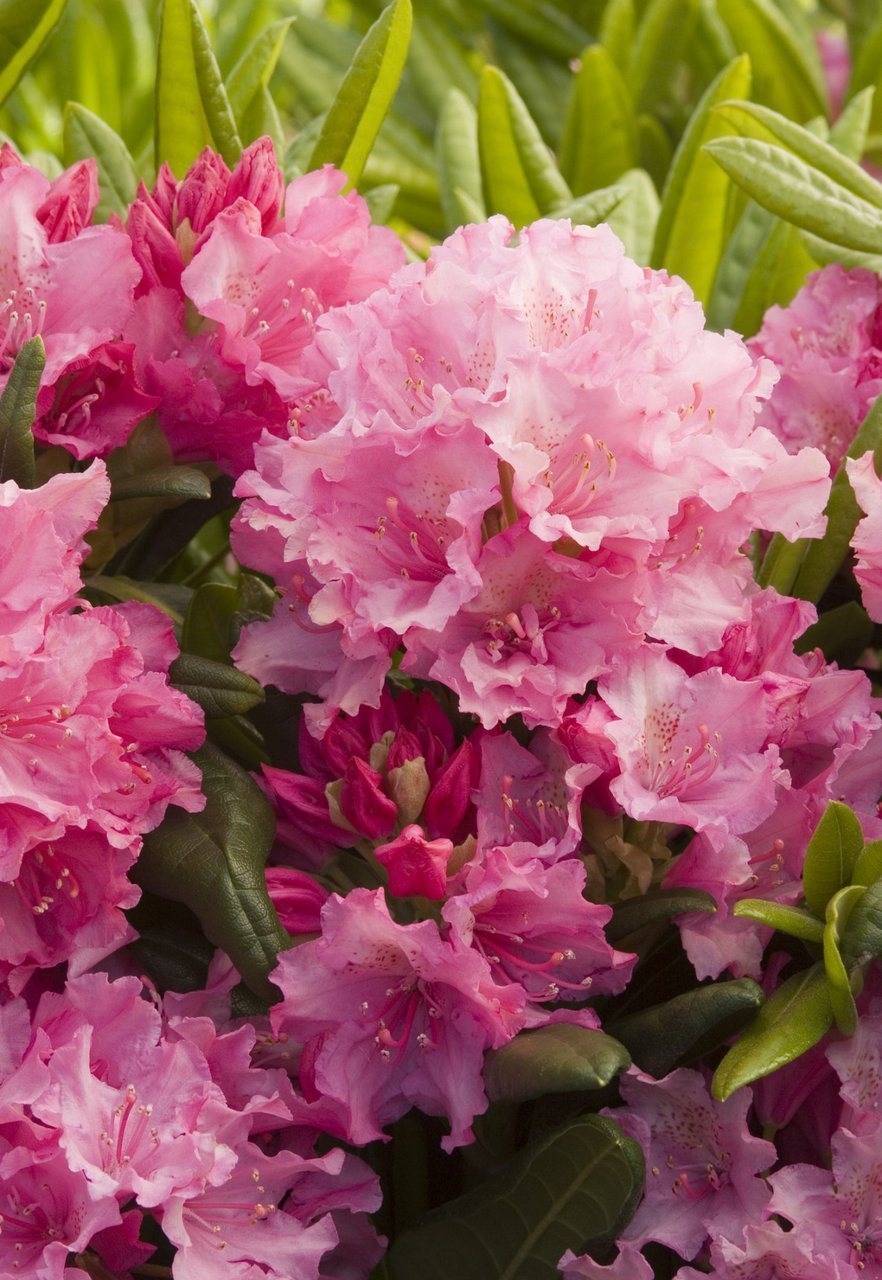
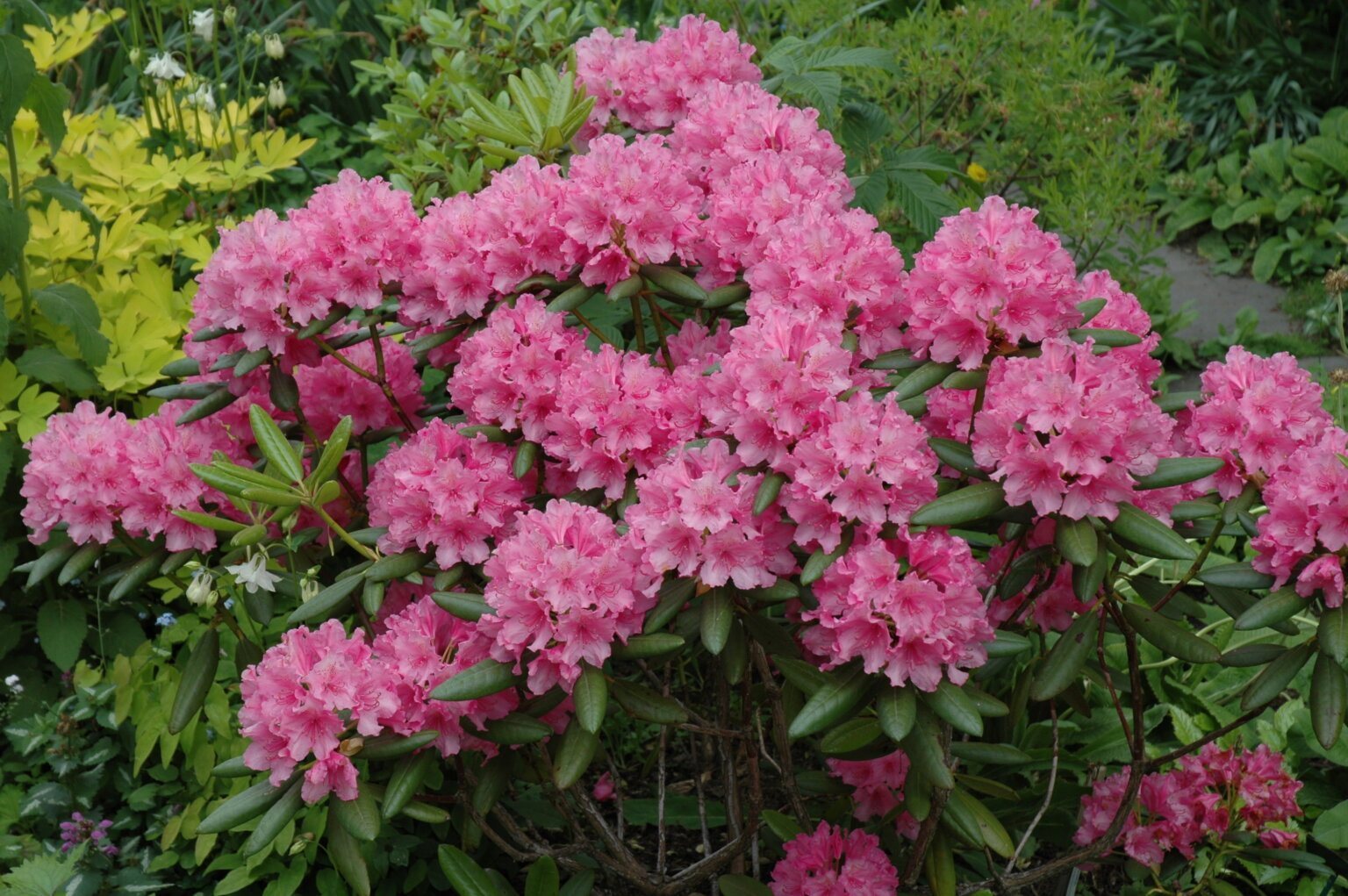





Roseum Elegance
A spreading tall bush, reaching a diameter of 3.5 m in the crown and 3 m in height. In appearance it usually resembles a small tree. Flowering begins in early June and lasts 3 weeks. Pinkish-lilac flowers with a dark spot on the upper petal are shaped like lilies. Collected in inflorescences of 15 pieces.

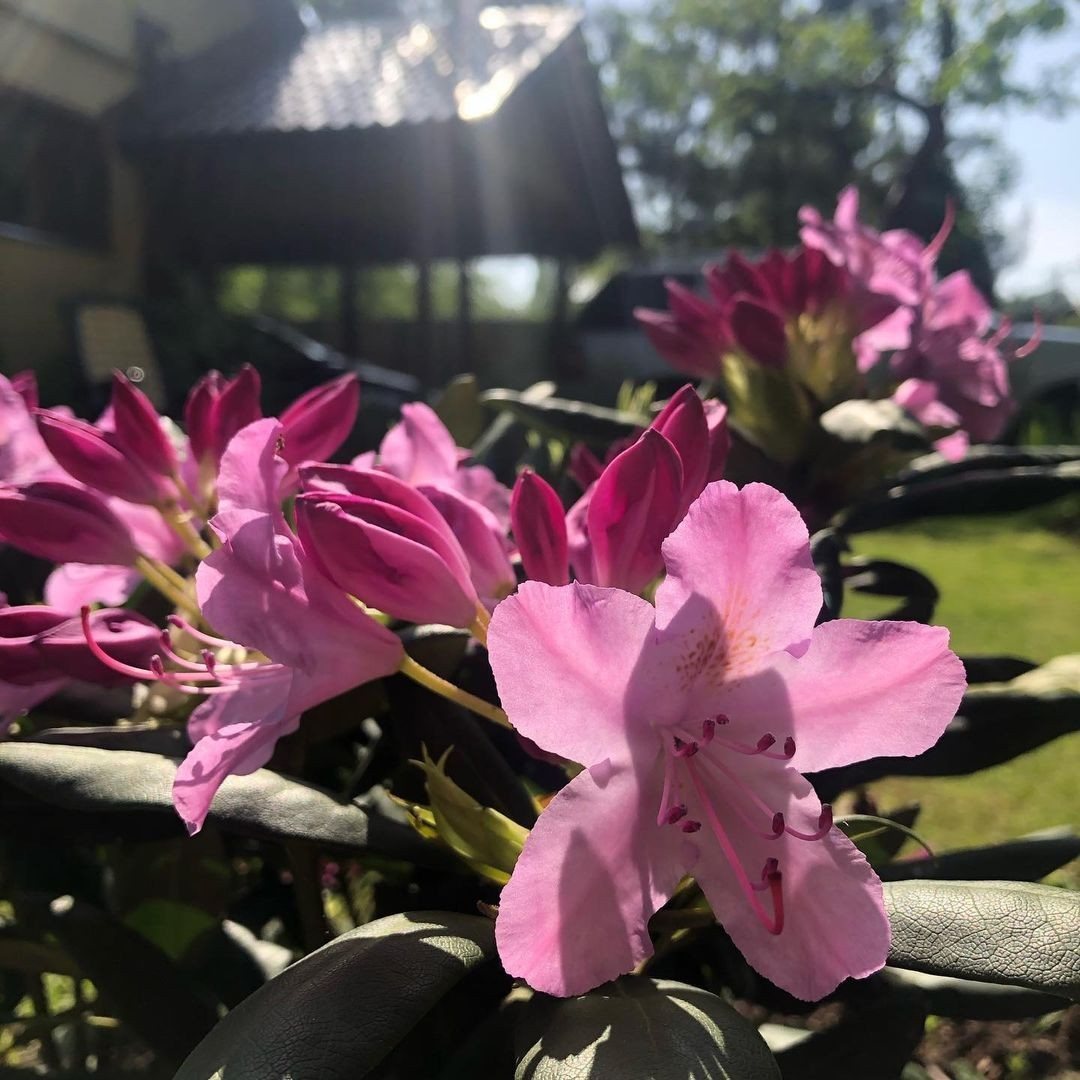
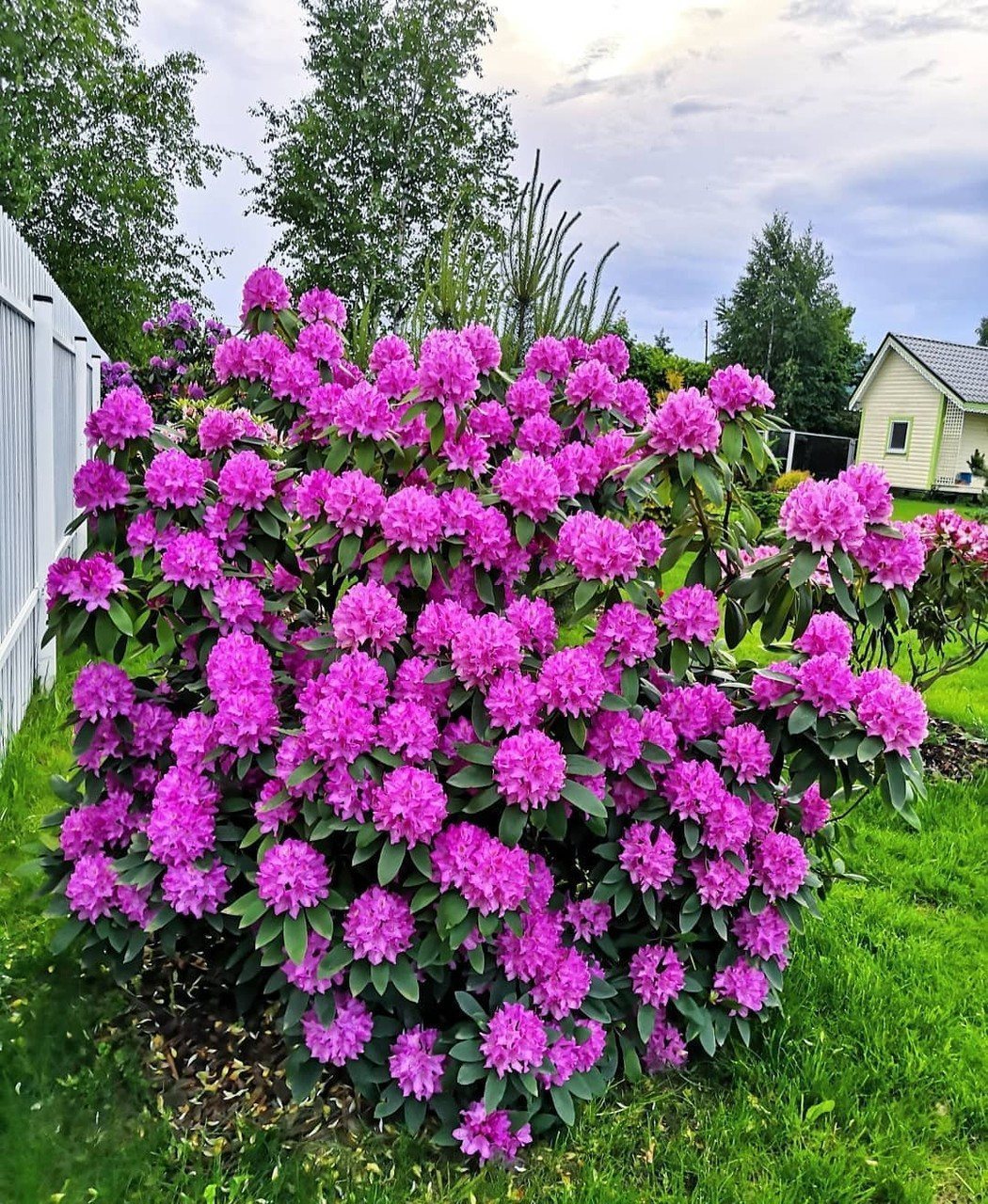
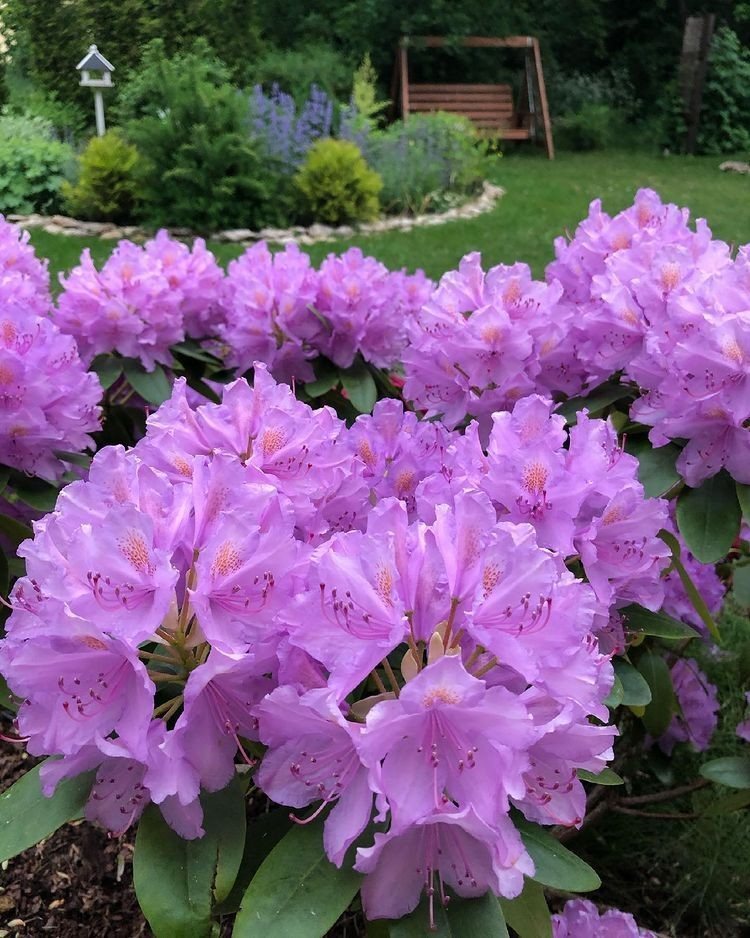
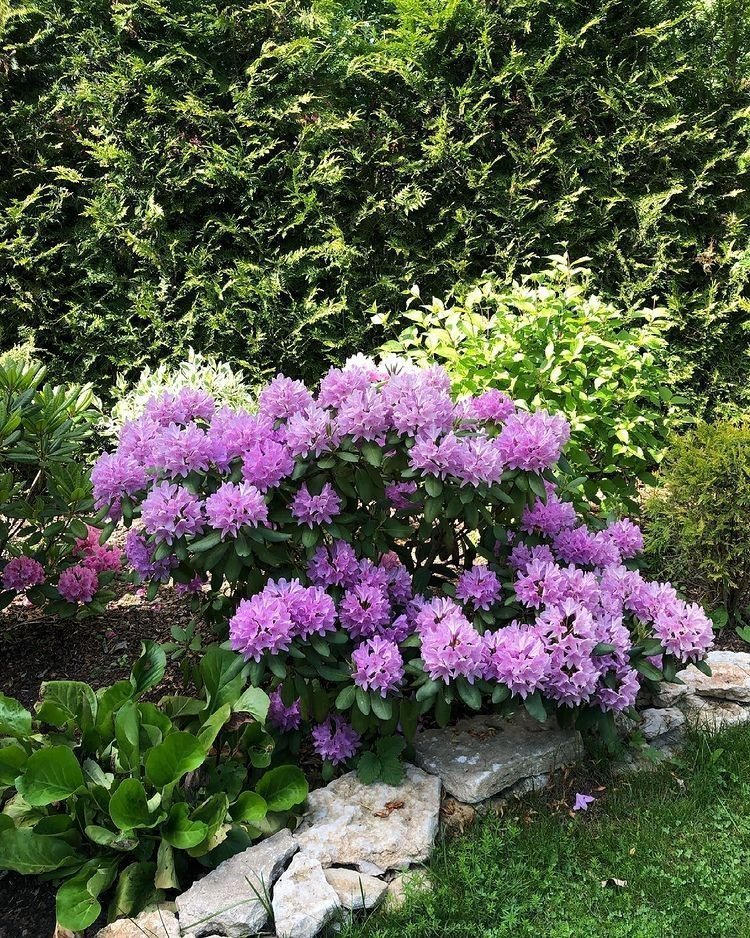





Grandiflorum
The shrub is 2.5 m high with a crown diameter of 2.7 m. The dark green large leaves are grayish below, reaching a length of 8 cm. The spherical inflorescences contain up to 15 flowers of a soft lilac hue.
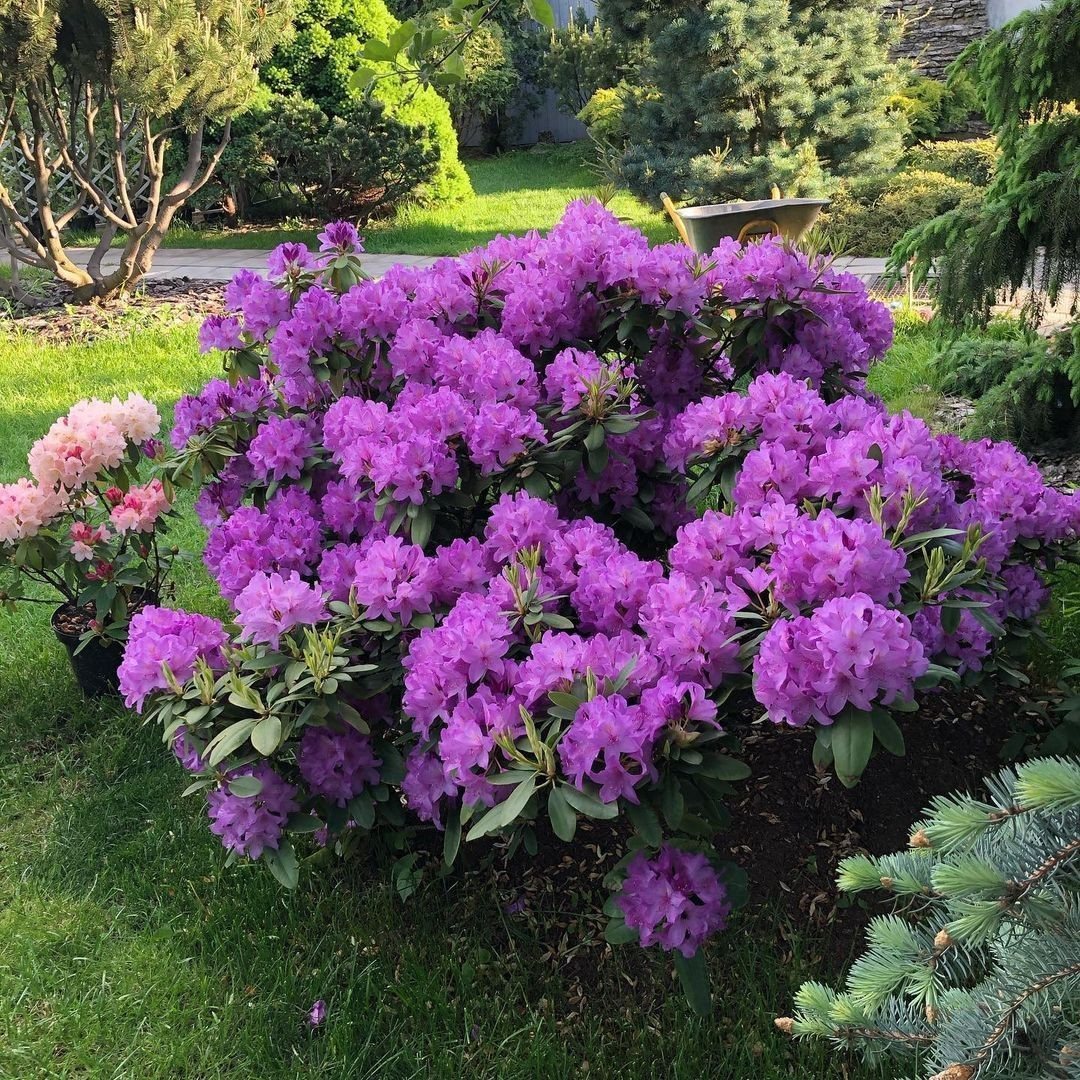

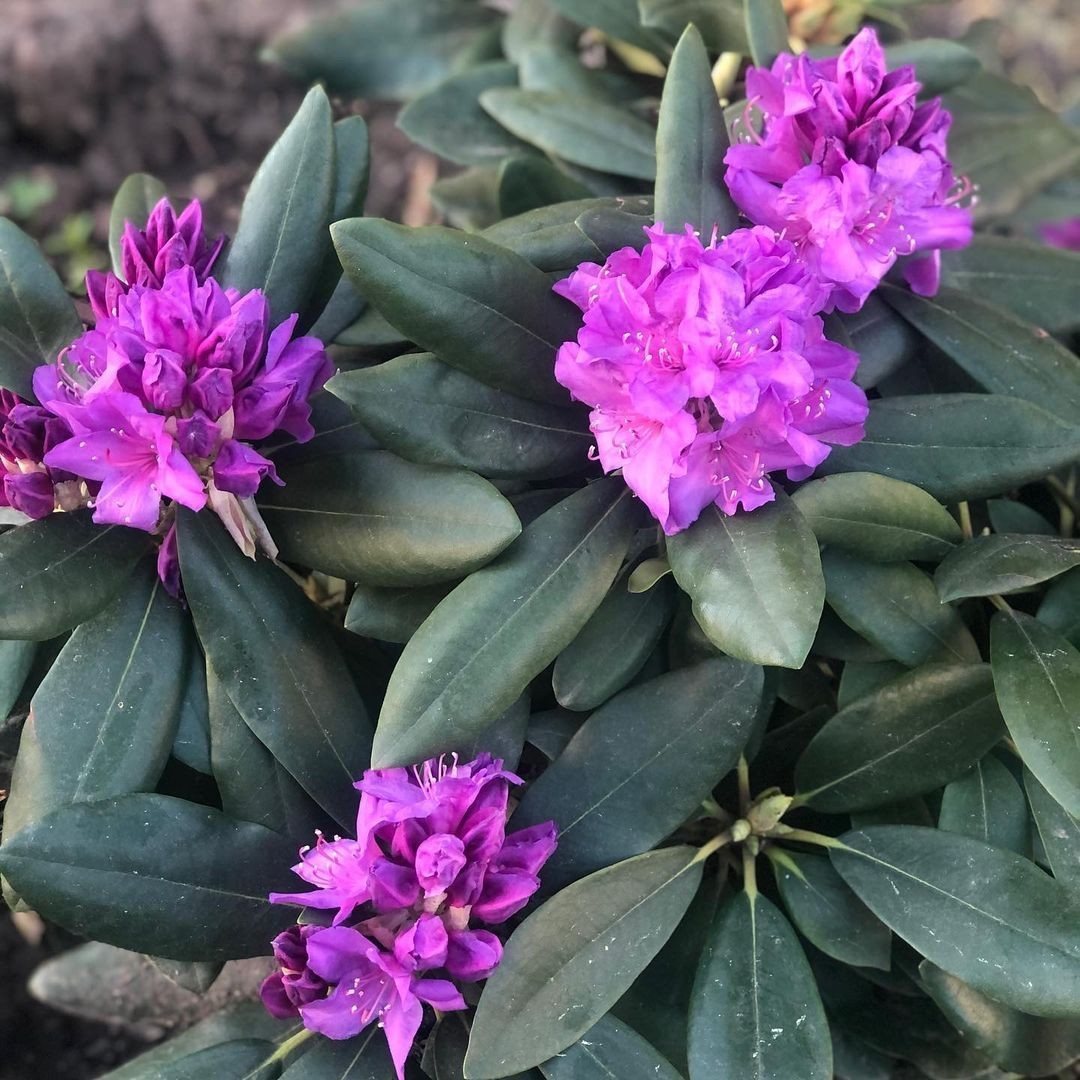
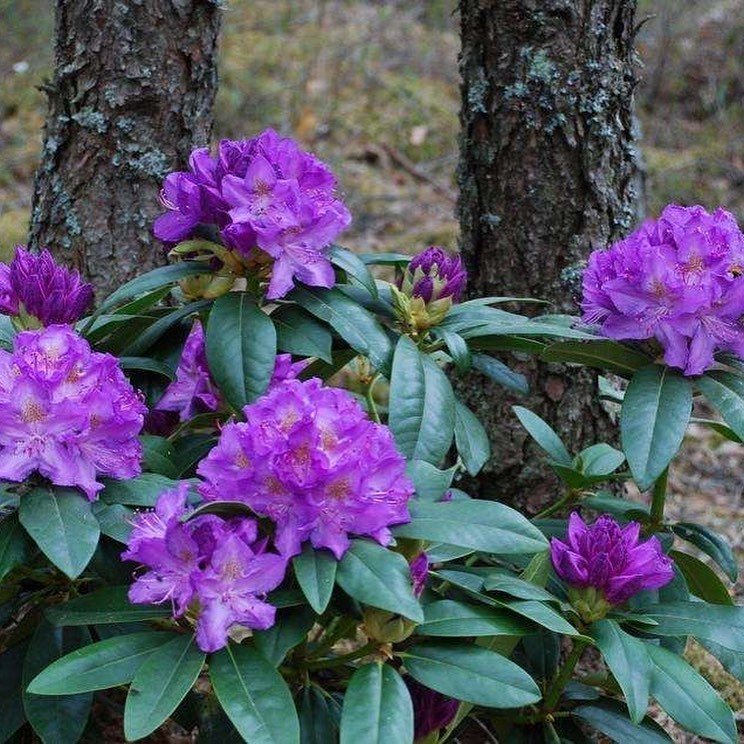
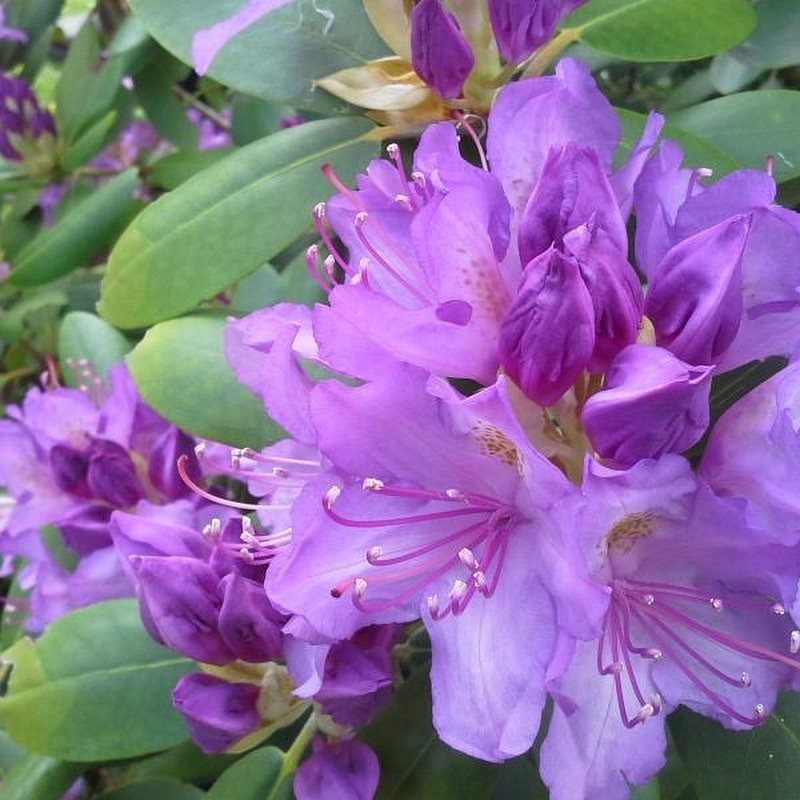





Rasputin
The shrub reaches a height of 1.2-1.6 m.The color of the buds can be different: from soft lilac to deep purple with a burgundy tint and crimson splashes. The flowers are collected in large dense inflorescences.
Rhododendron Rasputin blooms in May-June. The flowers have an inexpressive weak aroma. The leaves are slightly elongated, large, up to 15 cm long. The surface of the leaf plate is dark green, dense and glossy on the outside, lighter on the inside. Rhododendron does not shed its leaves when cold weather sets in. They only turn brown or acquire a brownish-golden hue.
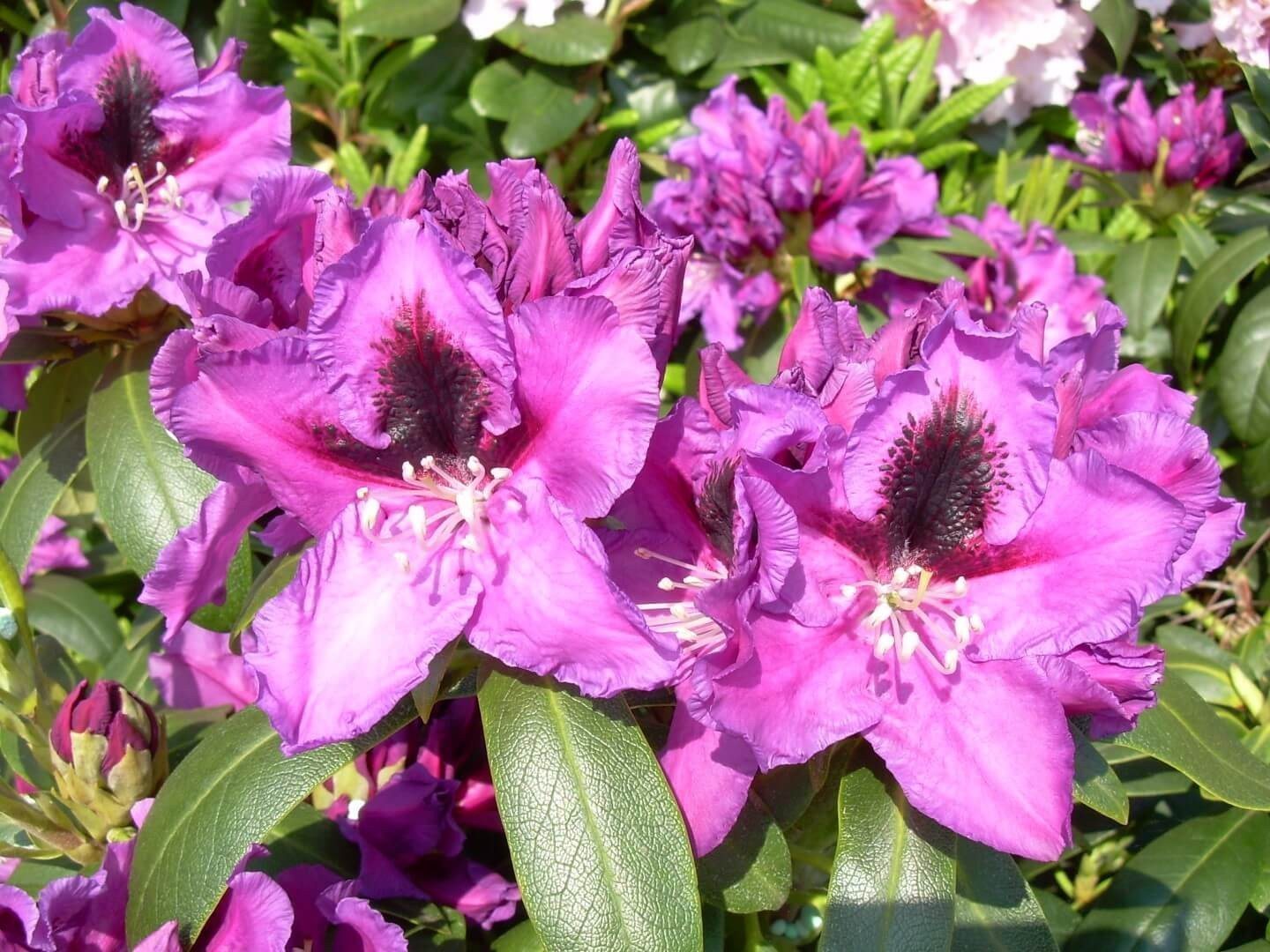
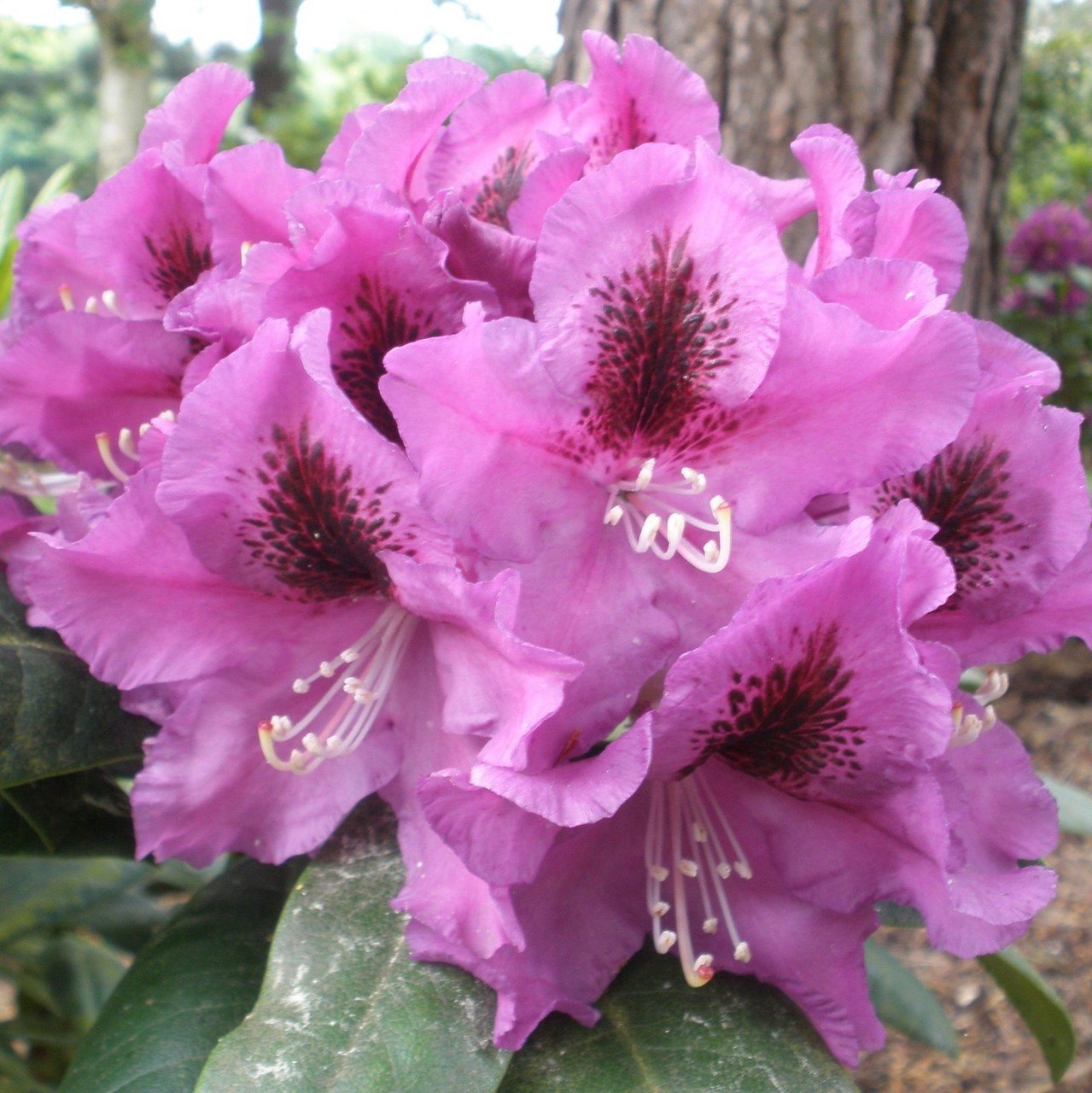
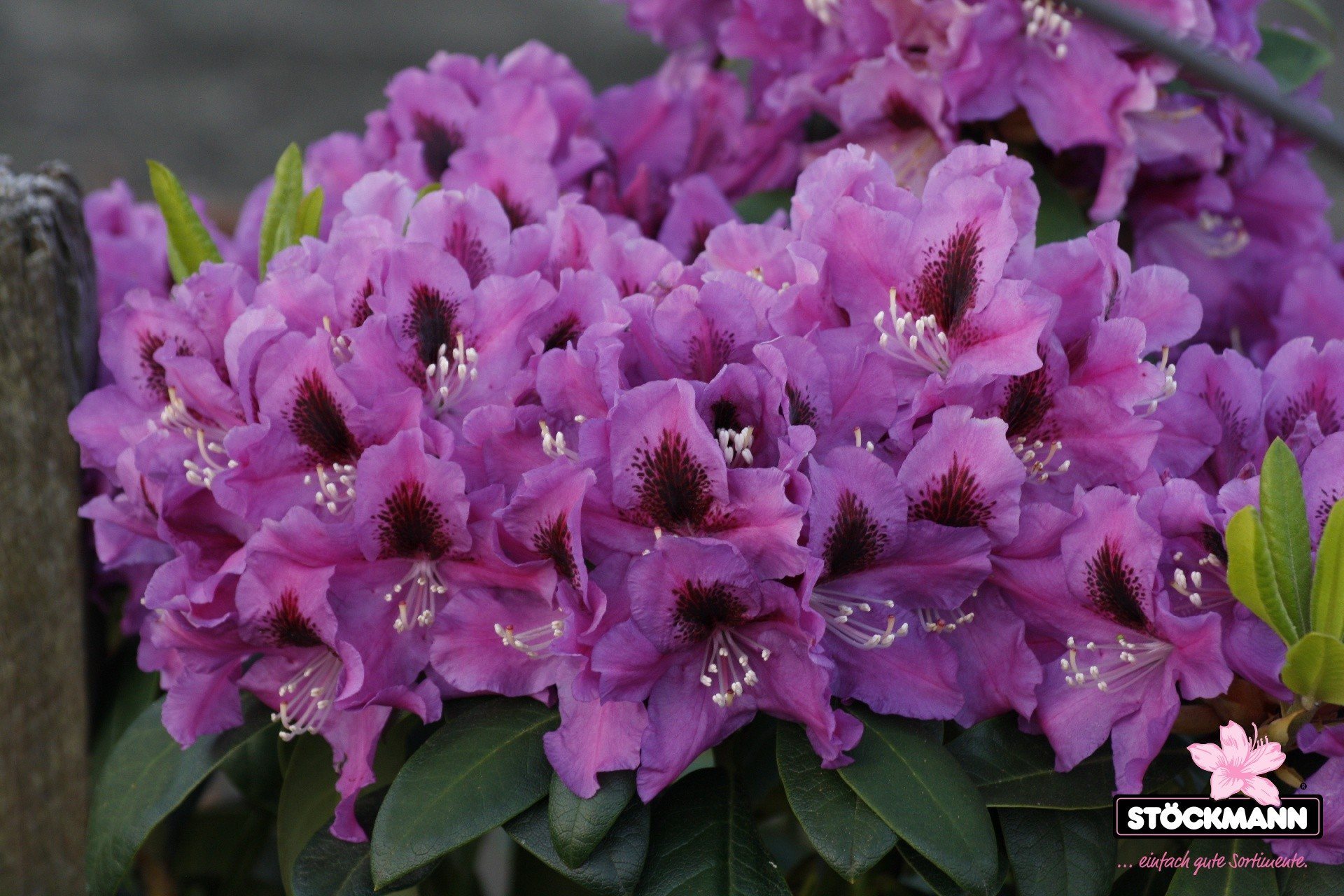
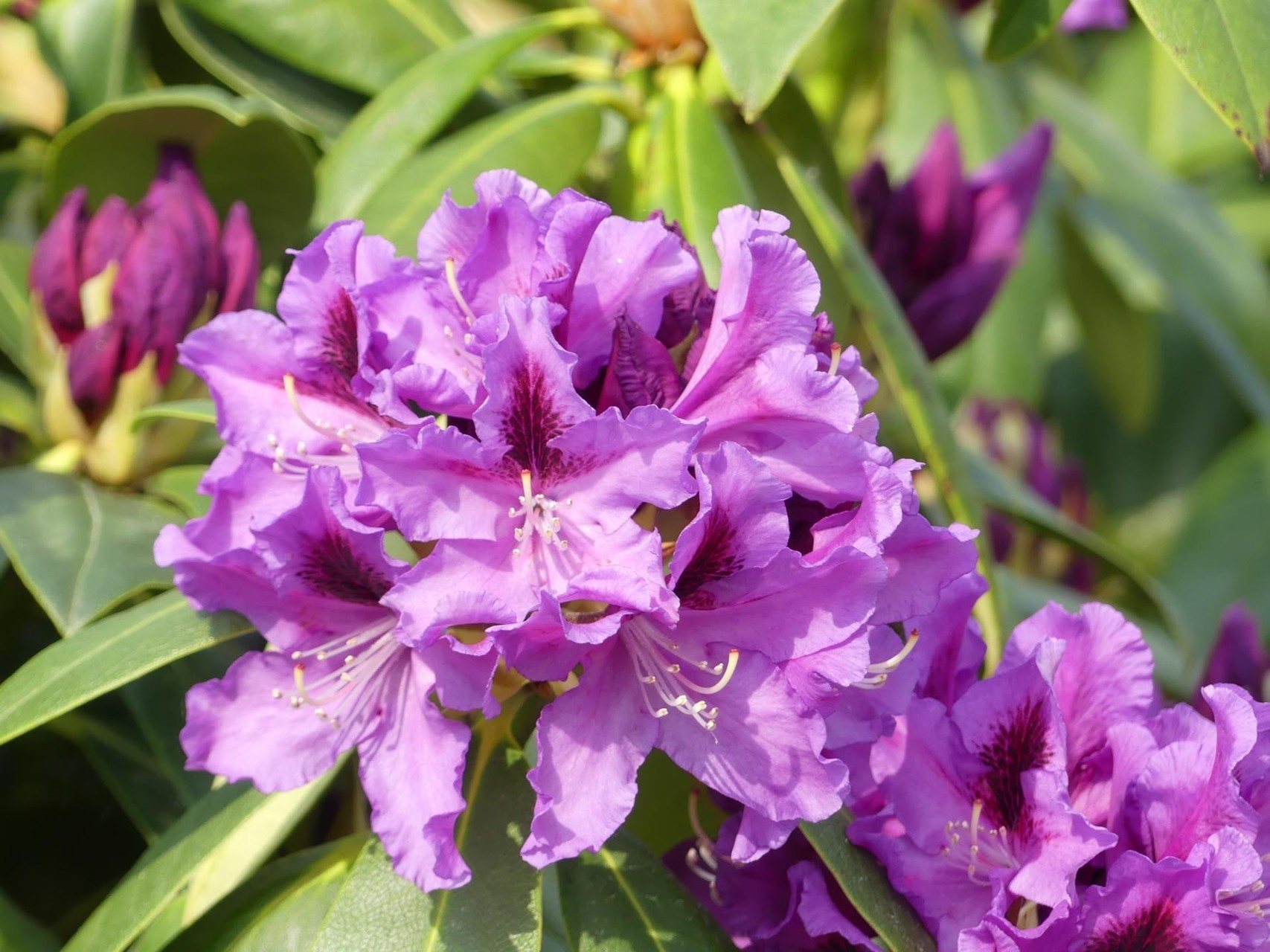
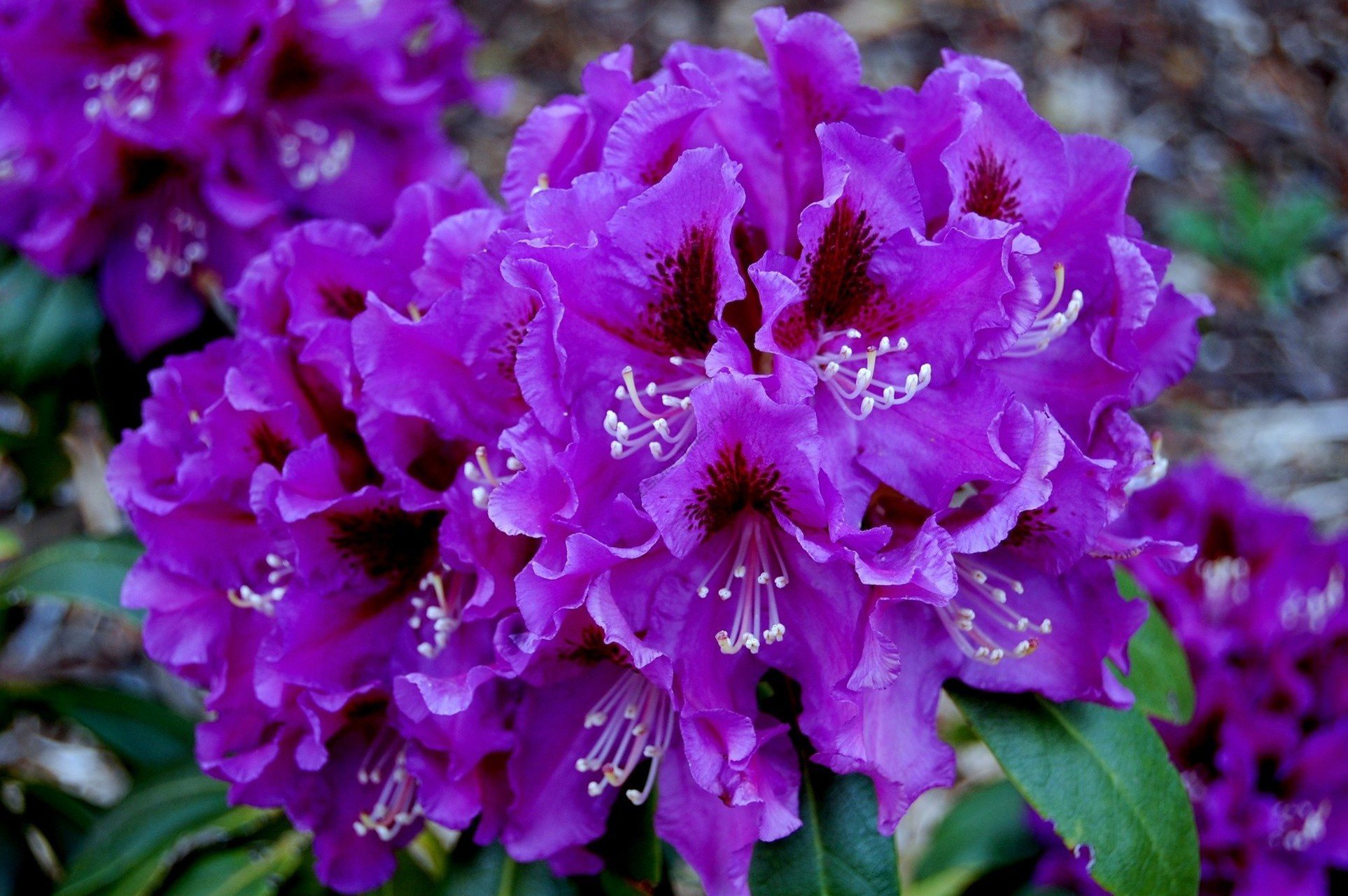





Fireworks
A large hybrid shrub reaching 1.5-2 m in height.
Rhododendron Firecracker blooms in mid-June with beautiful bright scarlet or coral fragrant bell-shaped flowers. They gather in inflorescences of 10 or more pieces. The leaves are shaped like an ellipse and reach a length of 10 cm.
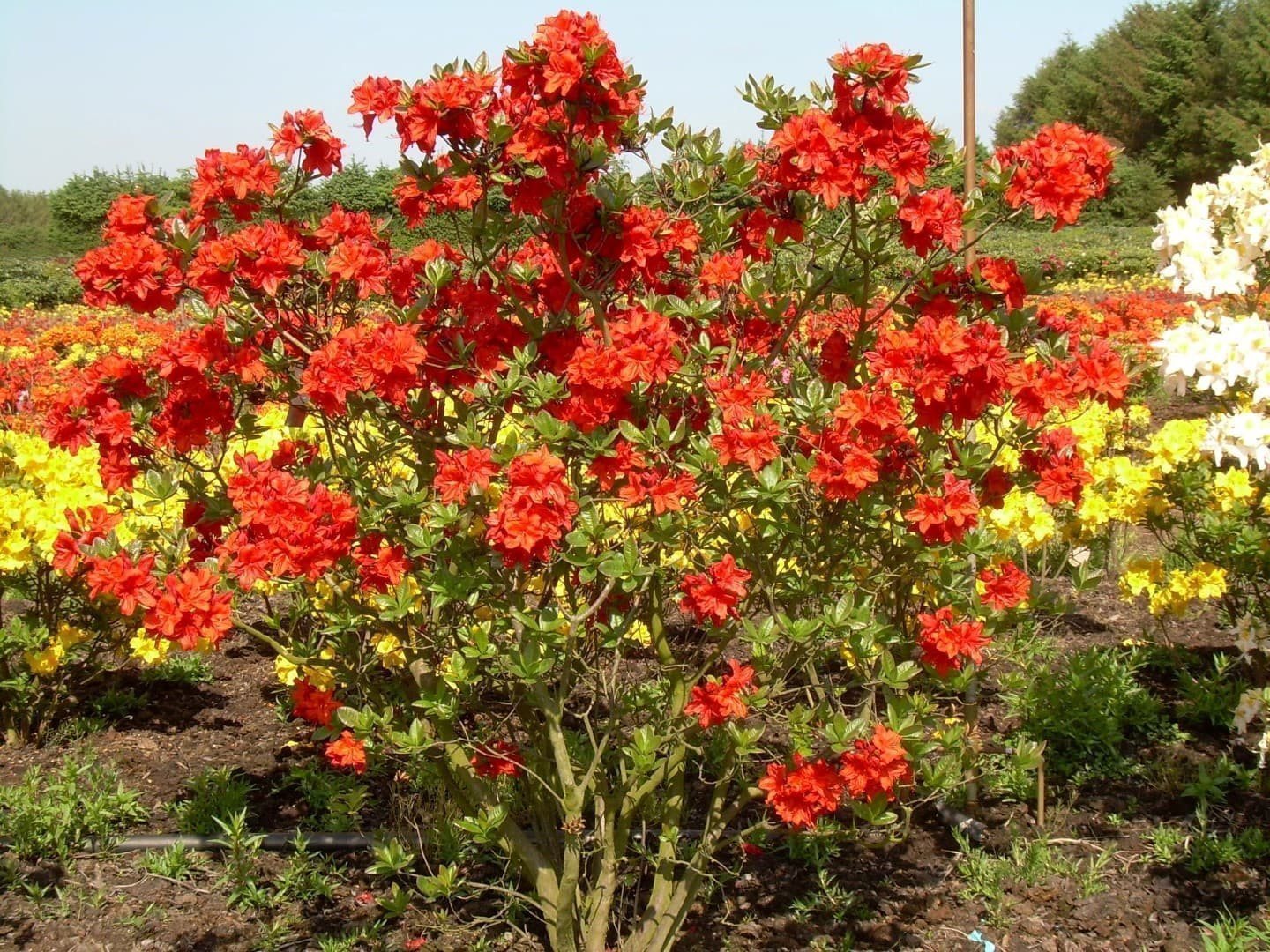
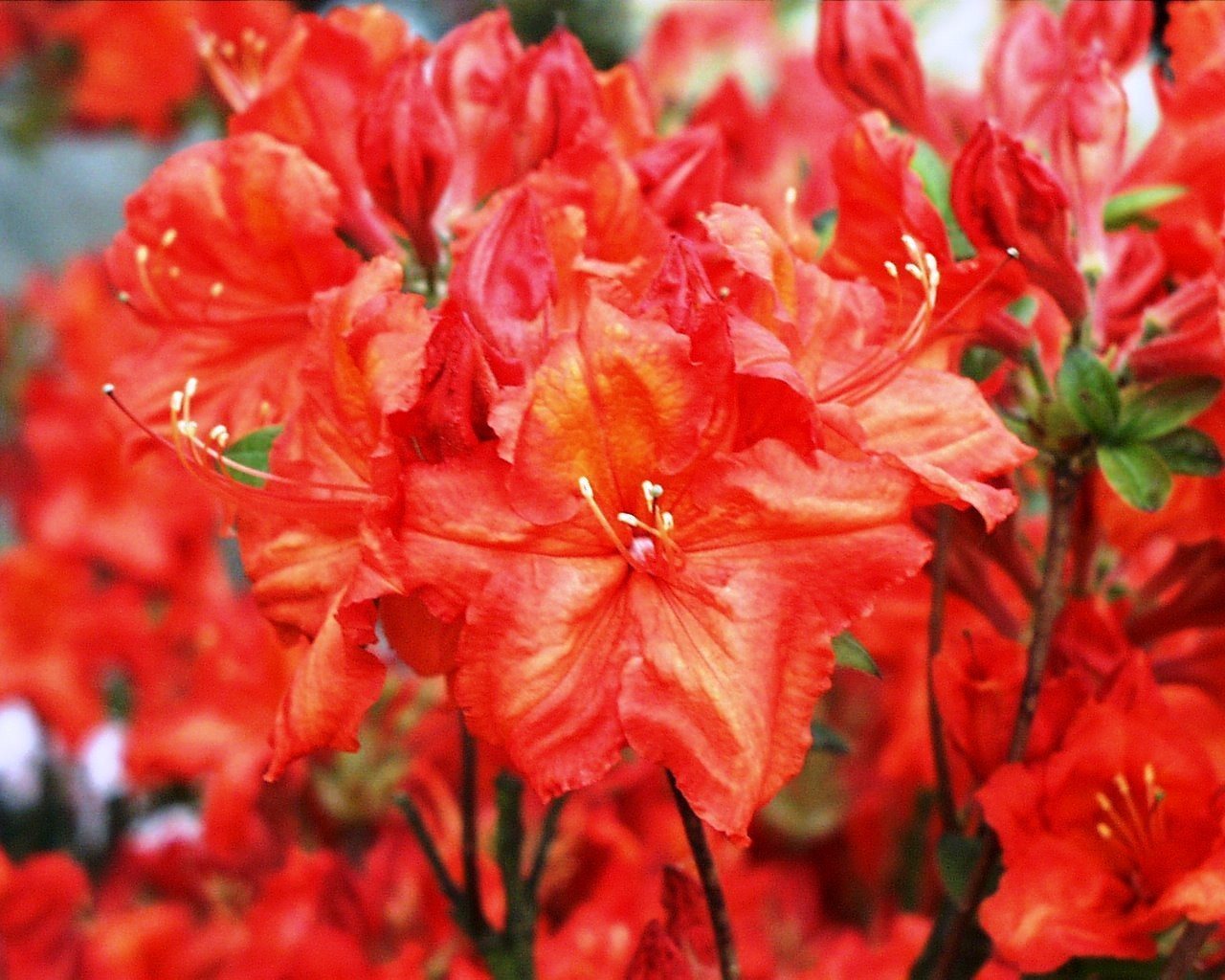
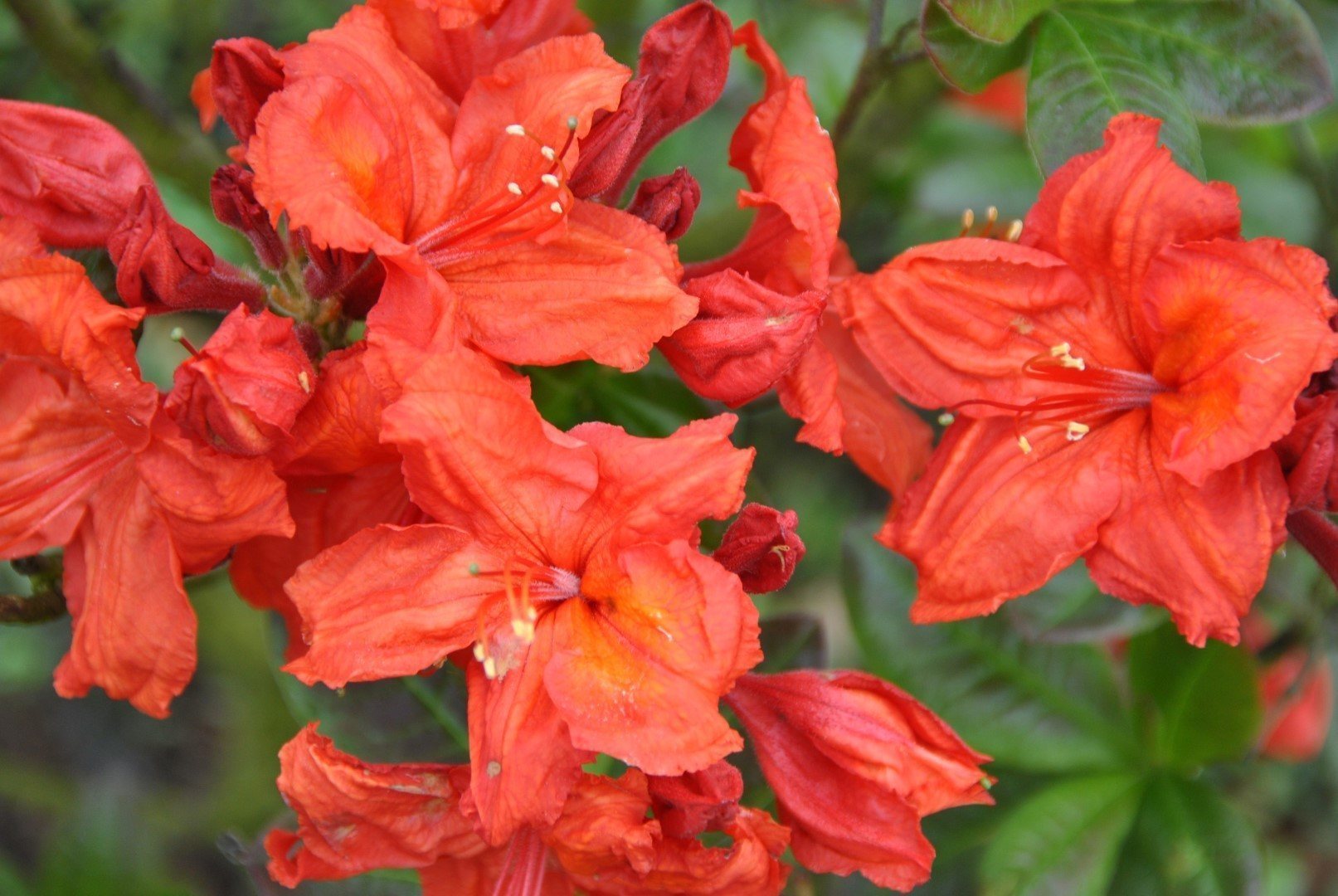
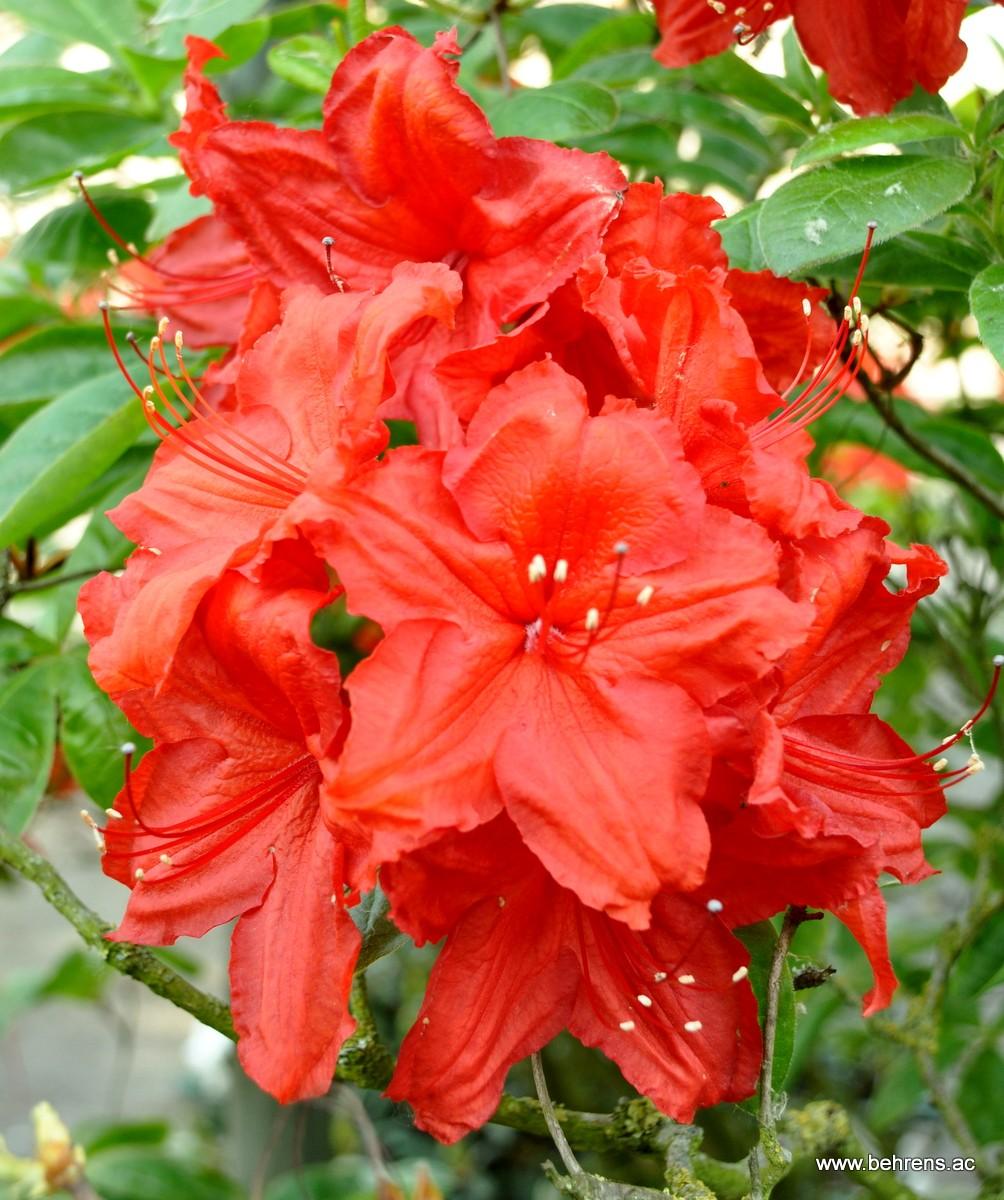




Helsinki University
This rhododendron grows 1.5-1.7 m in length. The crown is compact, its diameter is 1.5 m. Large glossy dark leaves reach a width of 6 cm and a length of 15 cm.
The flowers of the Helsinki University rhododendron are pink, with an orange center and a wavy edge.
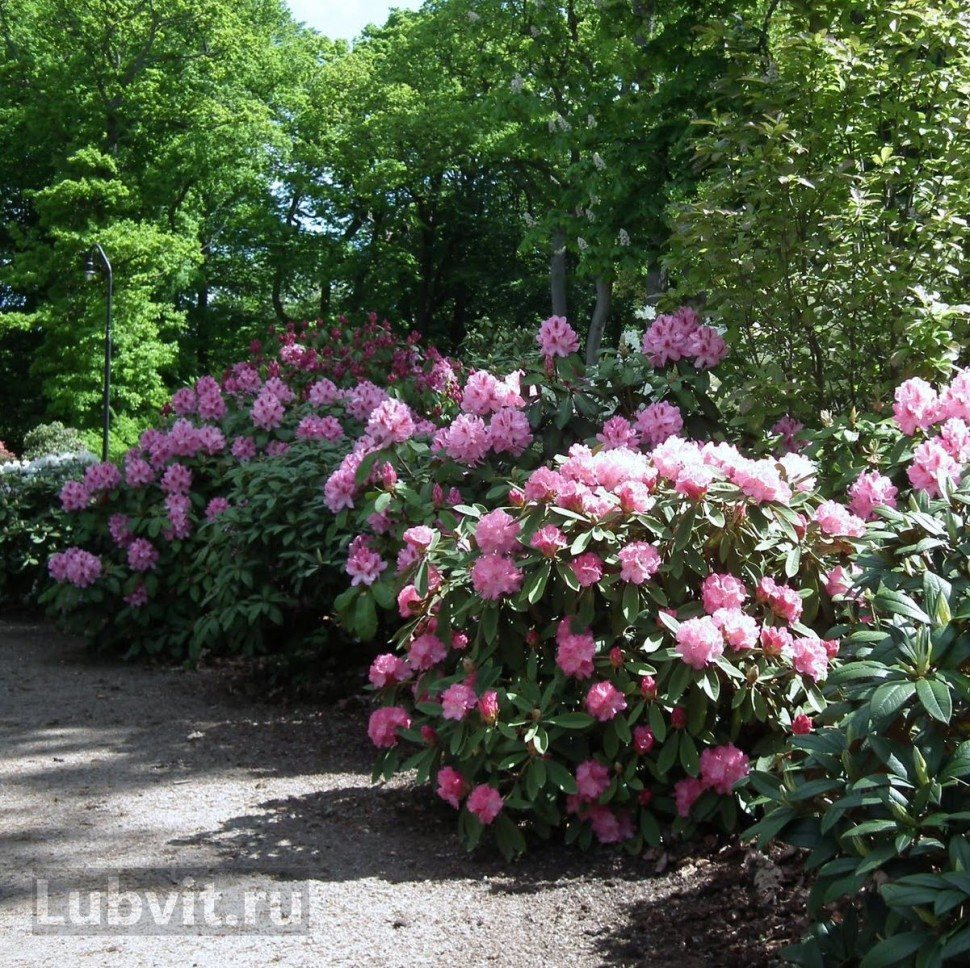

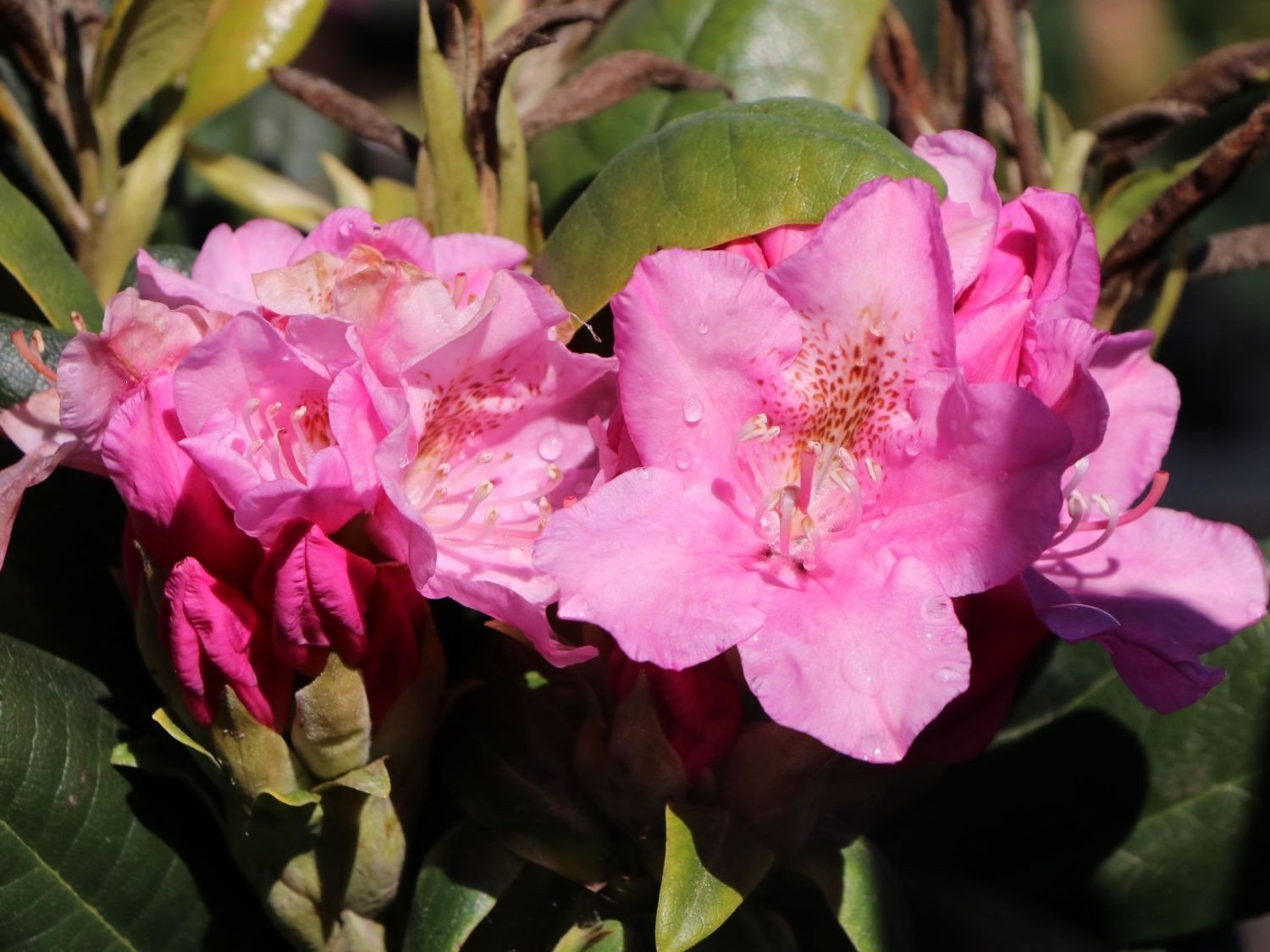
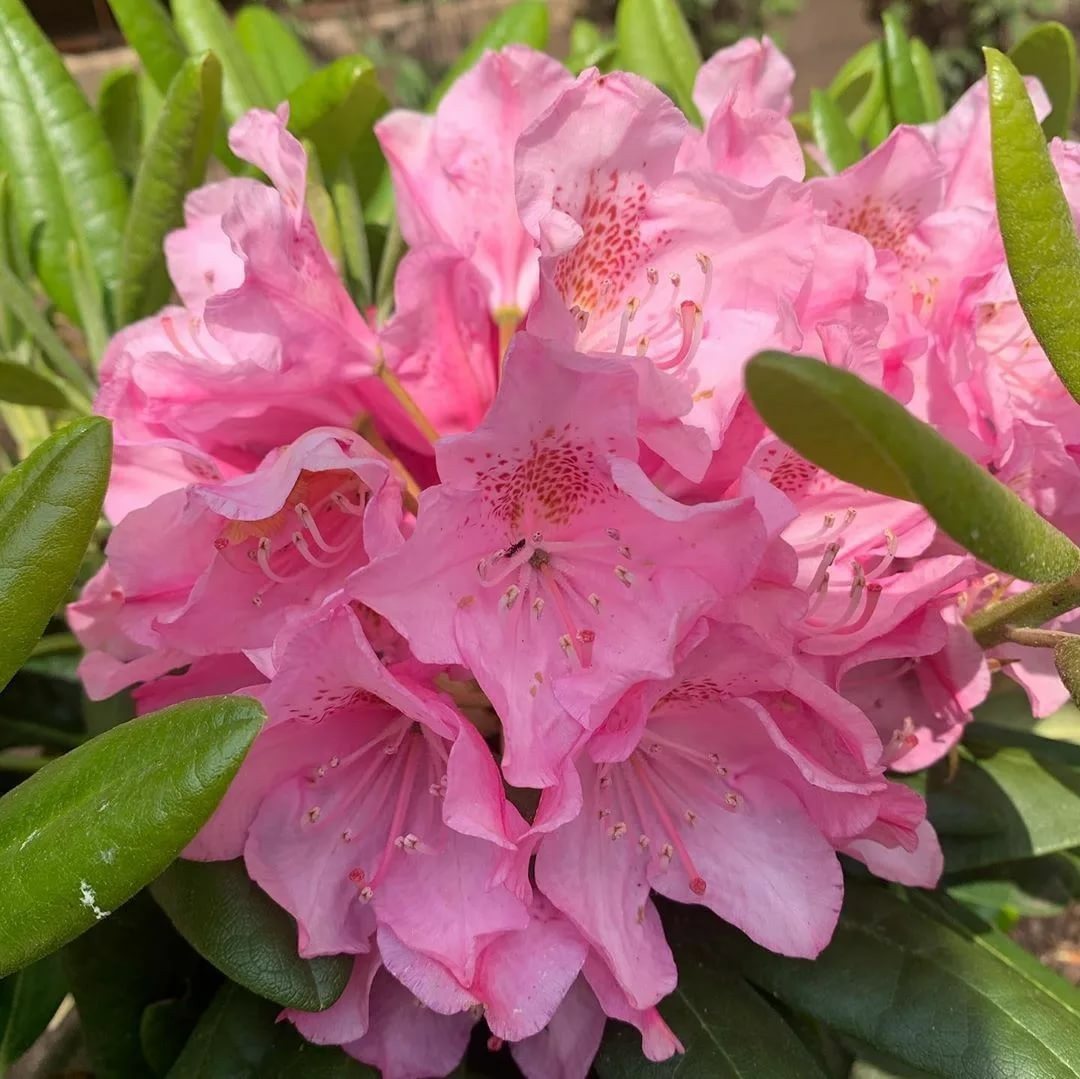
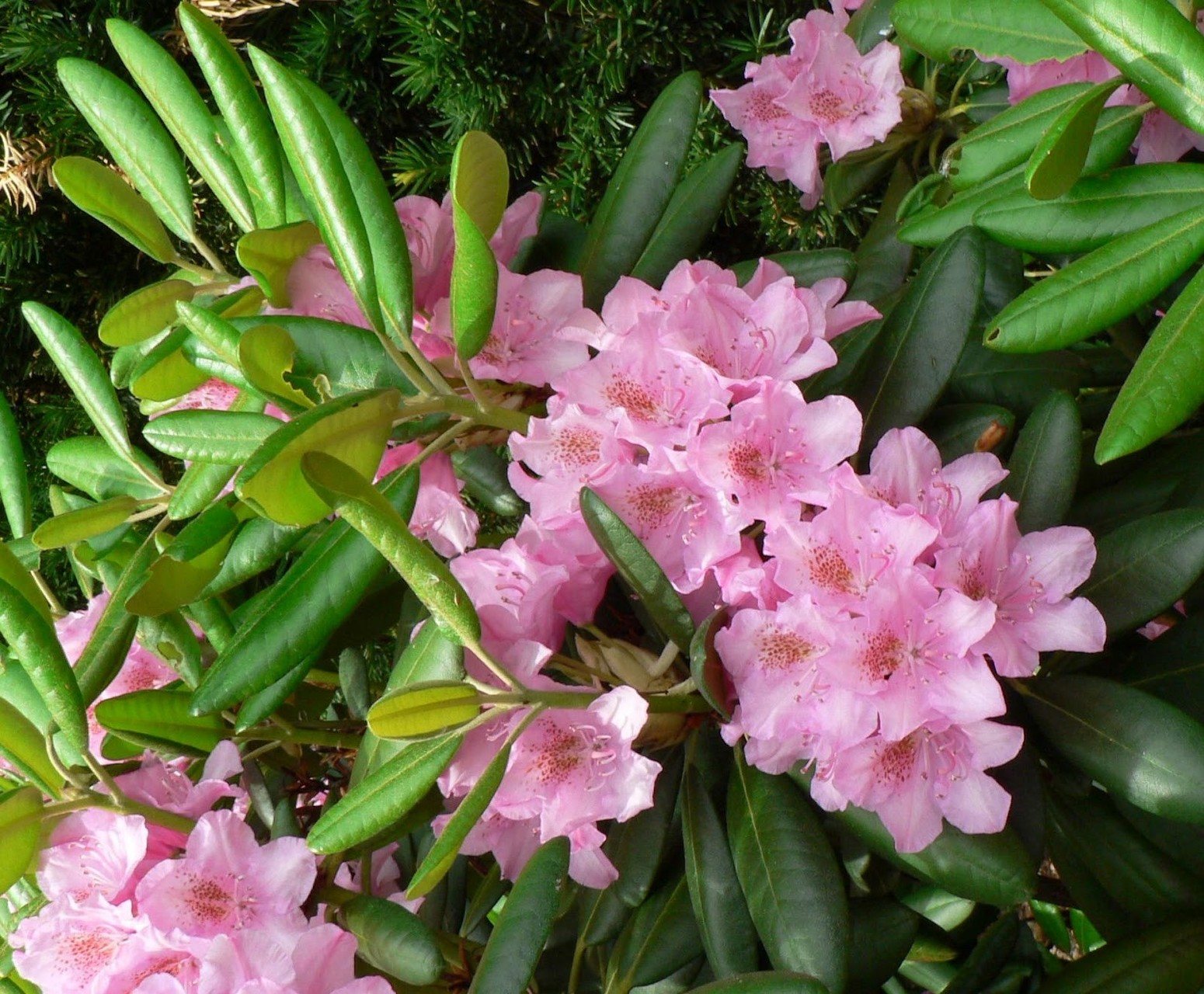





Helliki
Dense shrub with numerous branches. The elongated leaves are smooth on the front side, and pubescent, dark green on the back side. The height of the bush reaches 1-1.2 m.
Large purple-red flowers are collected in inflorescences of 7-10 pieces. Shoots drooping towards the ground are a typical feature of the Helliki rhododendron.
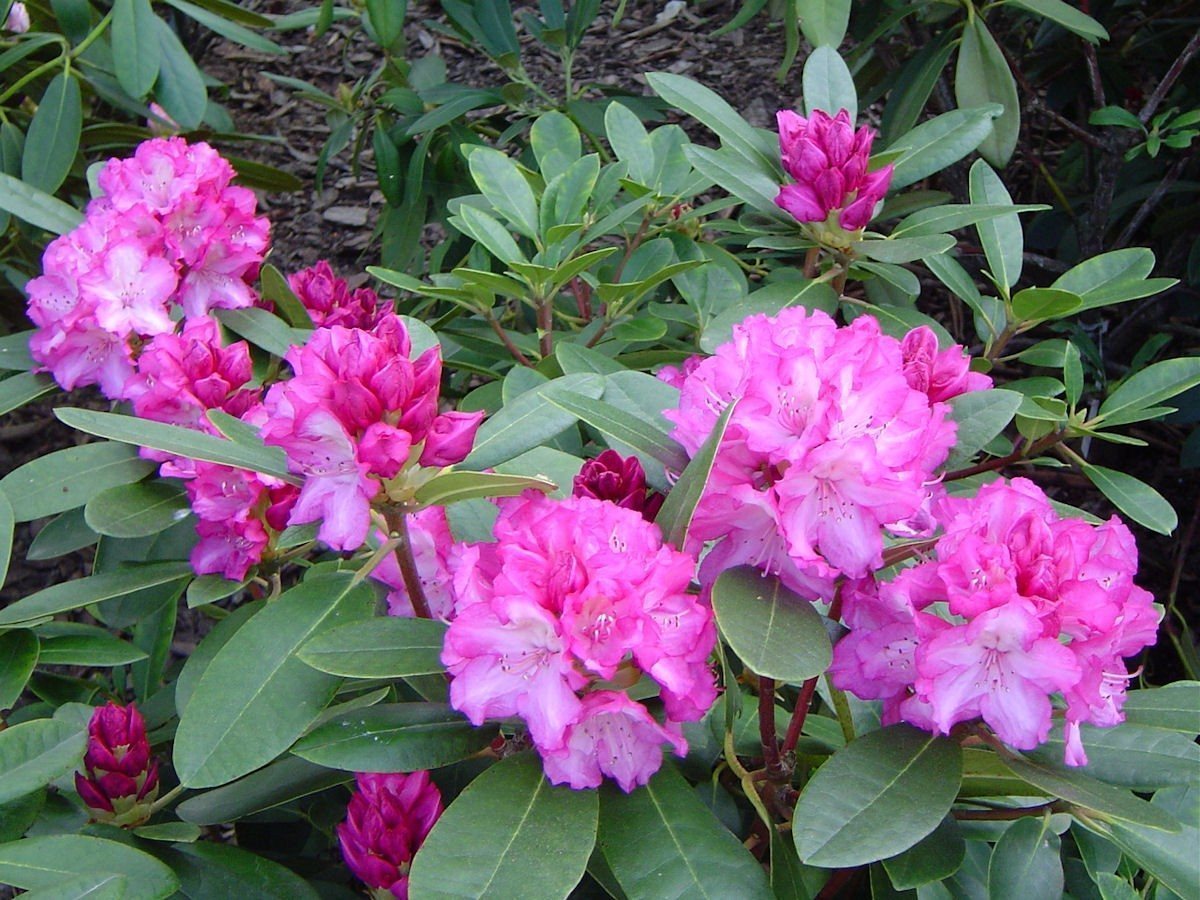
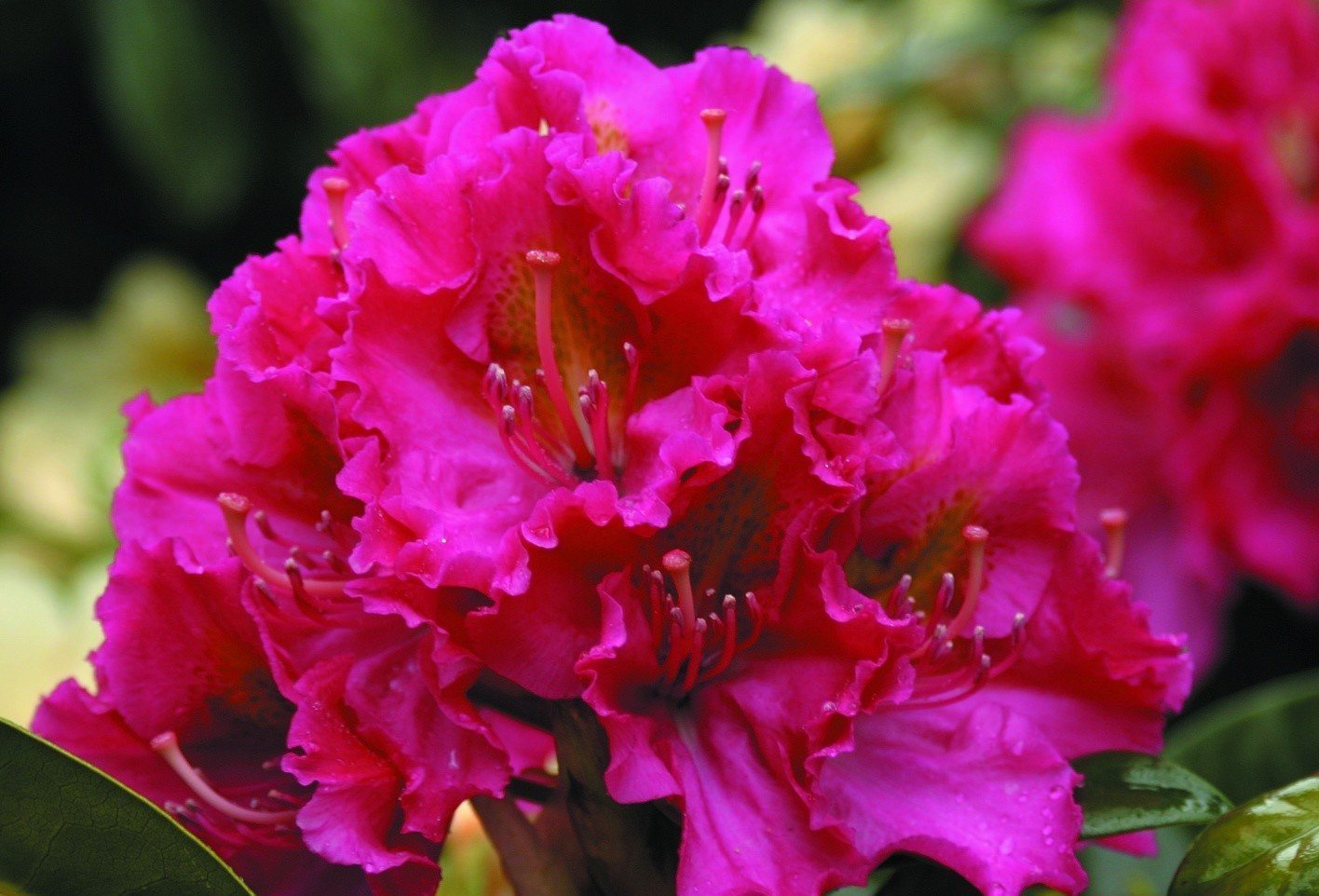
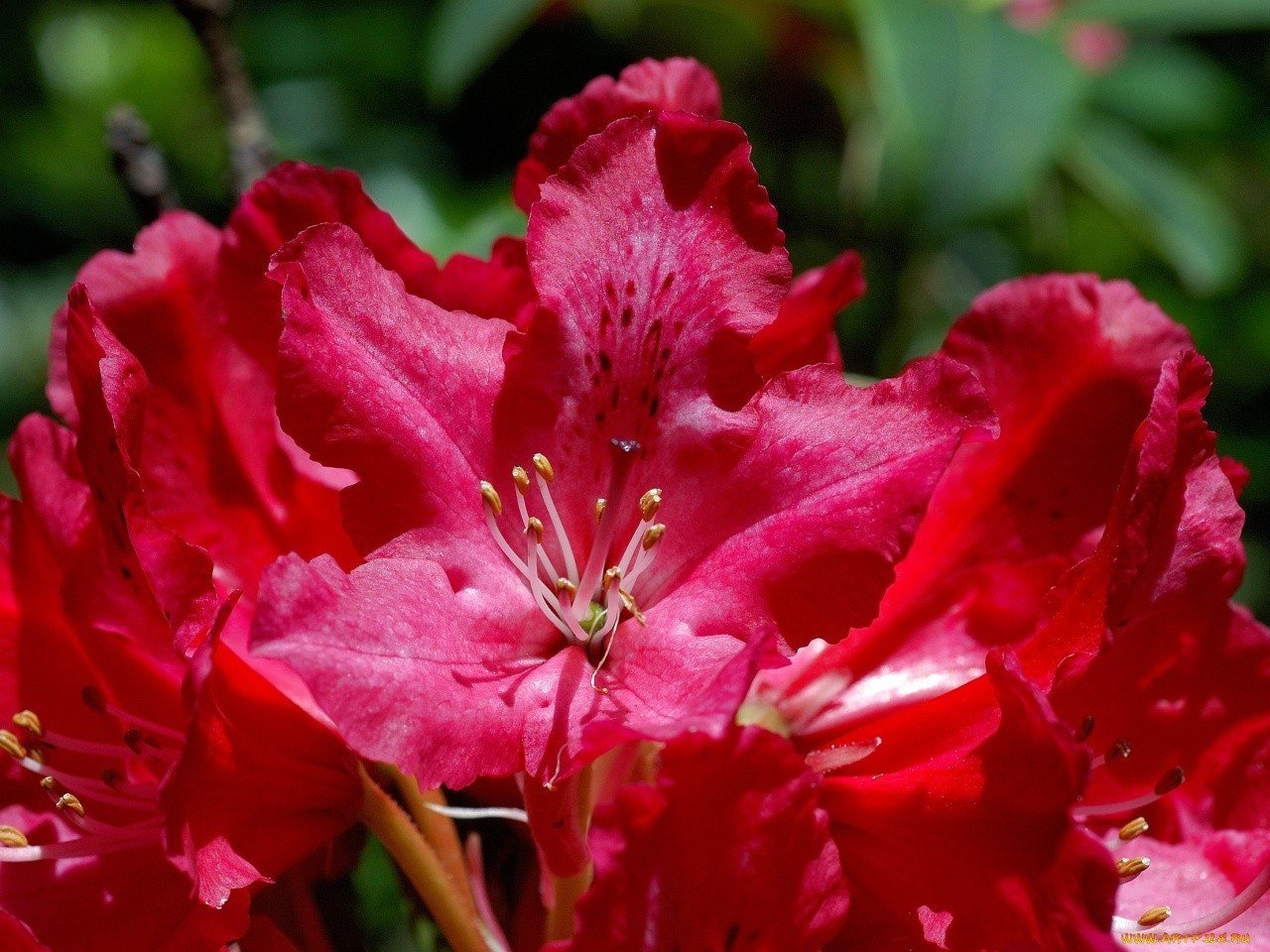
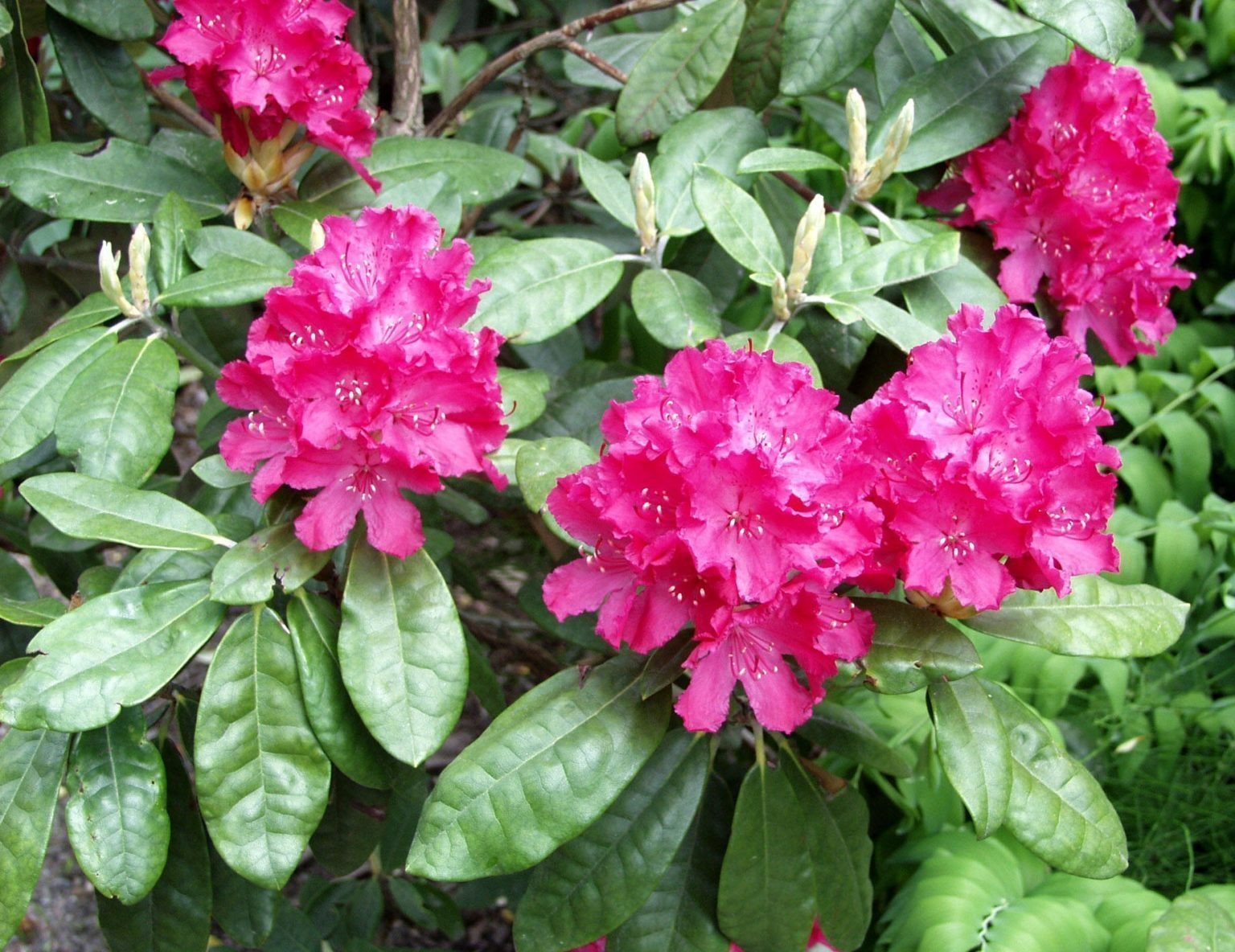
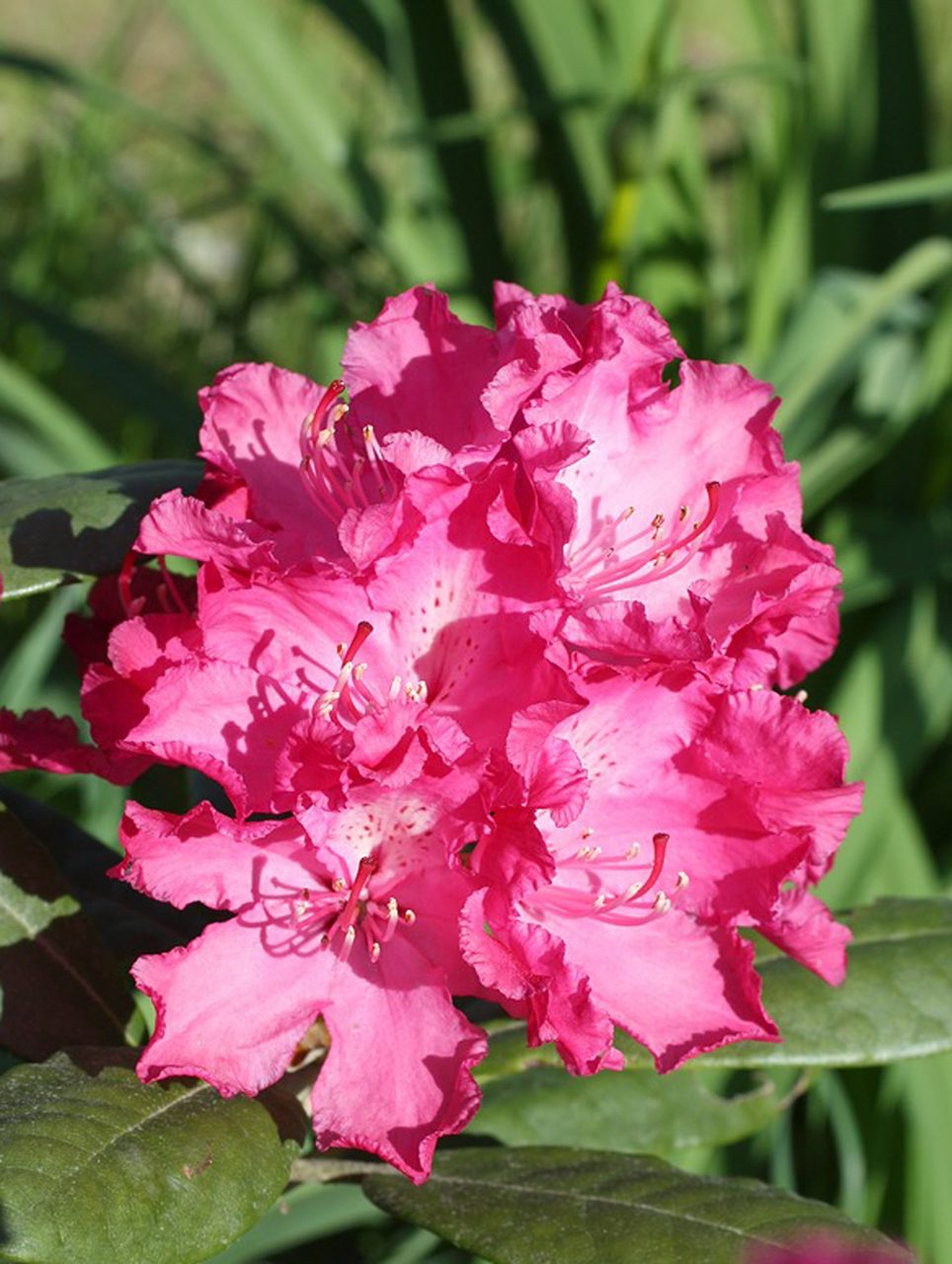





Azurro
This shrub can reach a height of 1.2 m. Rhododendron Azurro is the result of crossing the Purple Splendour and Nova Zembla varieties. It blooms with large purple flowers, wavy along the edges and burgundy specks.
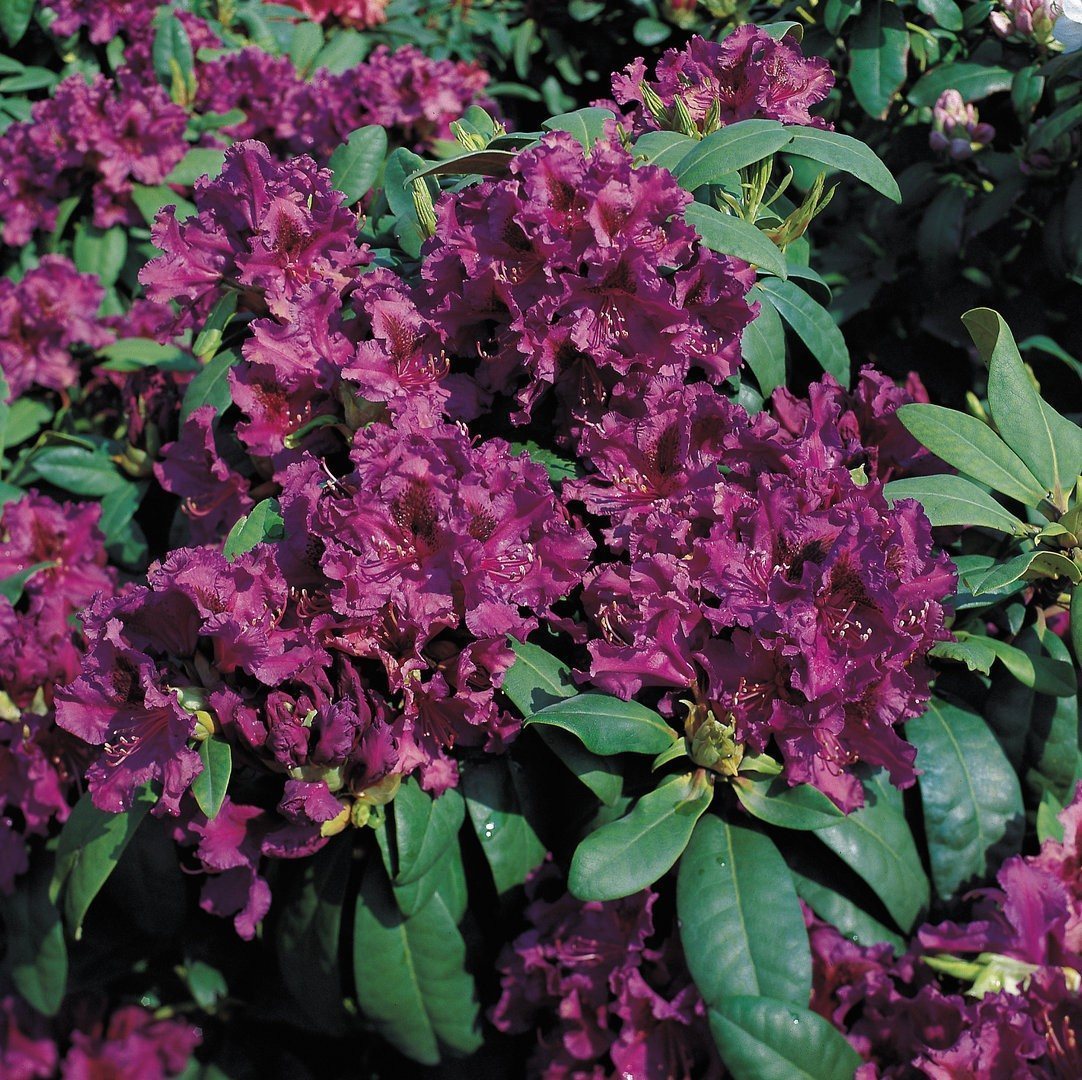
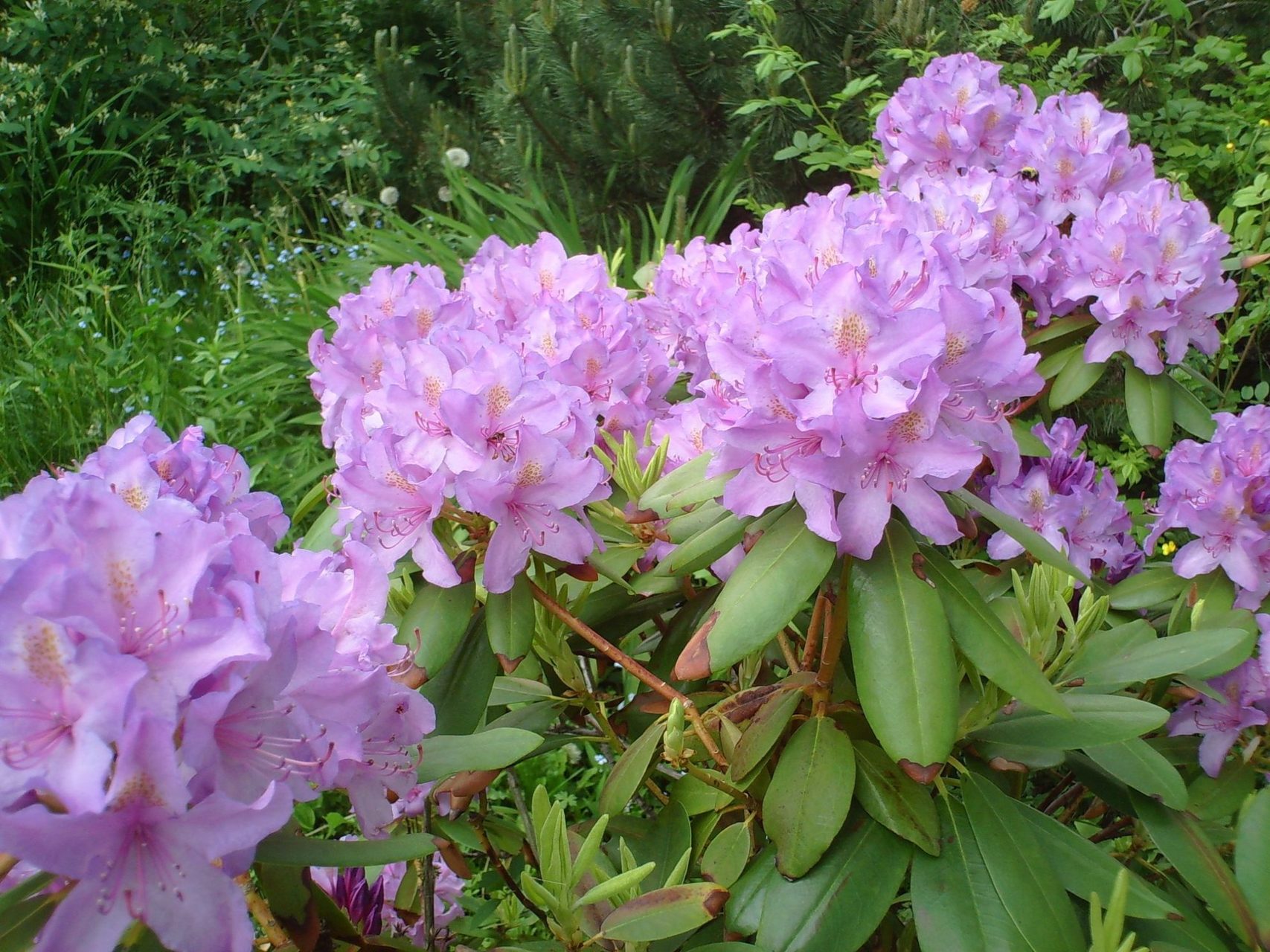

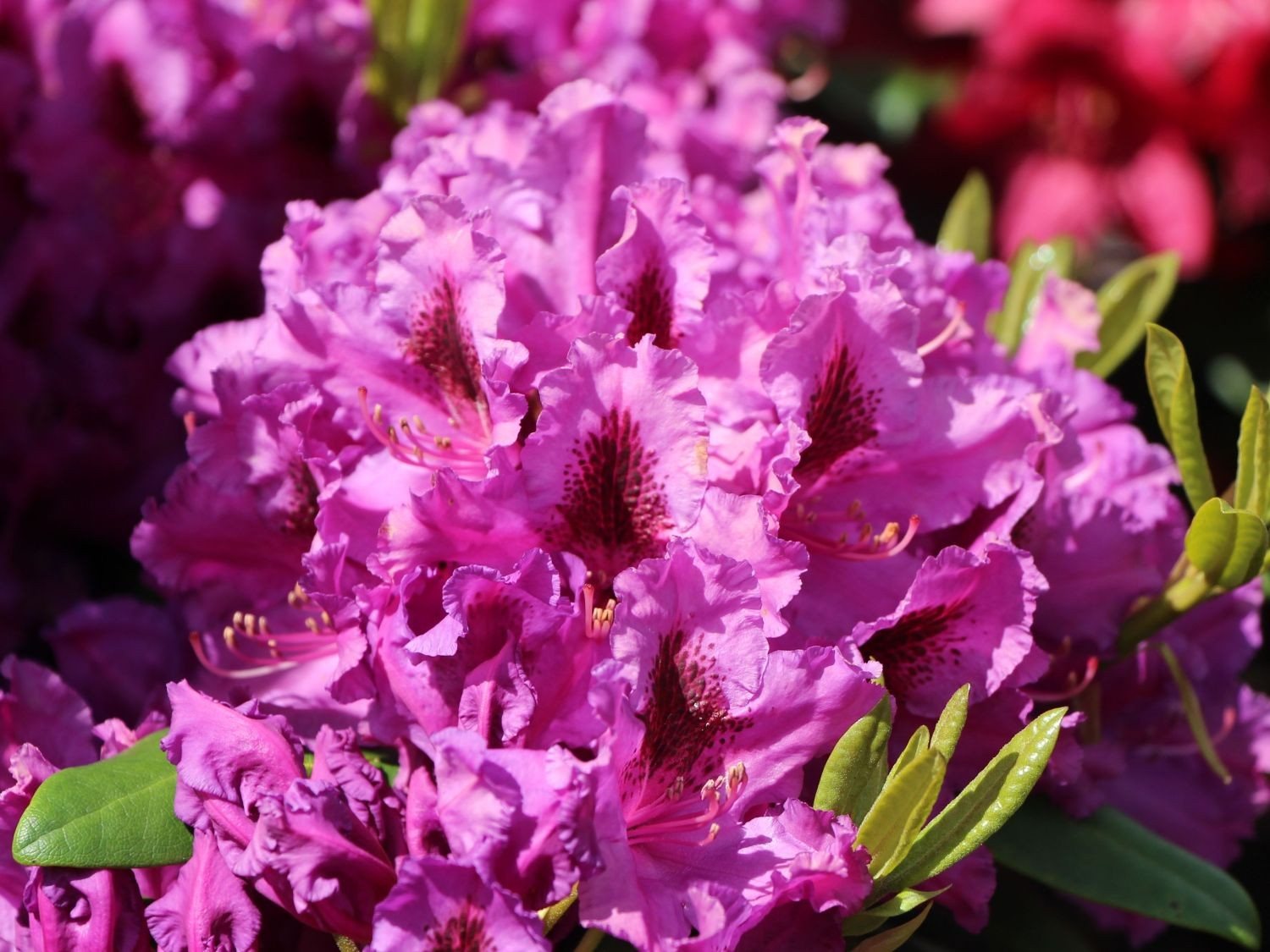
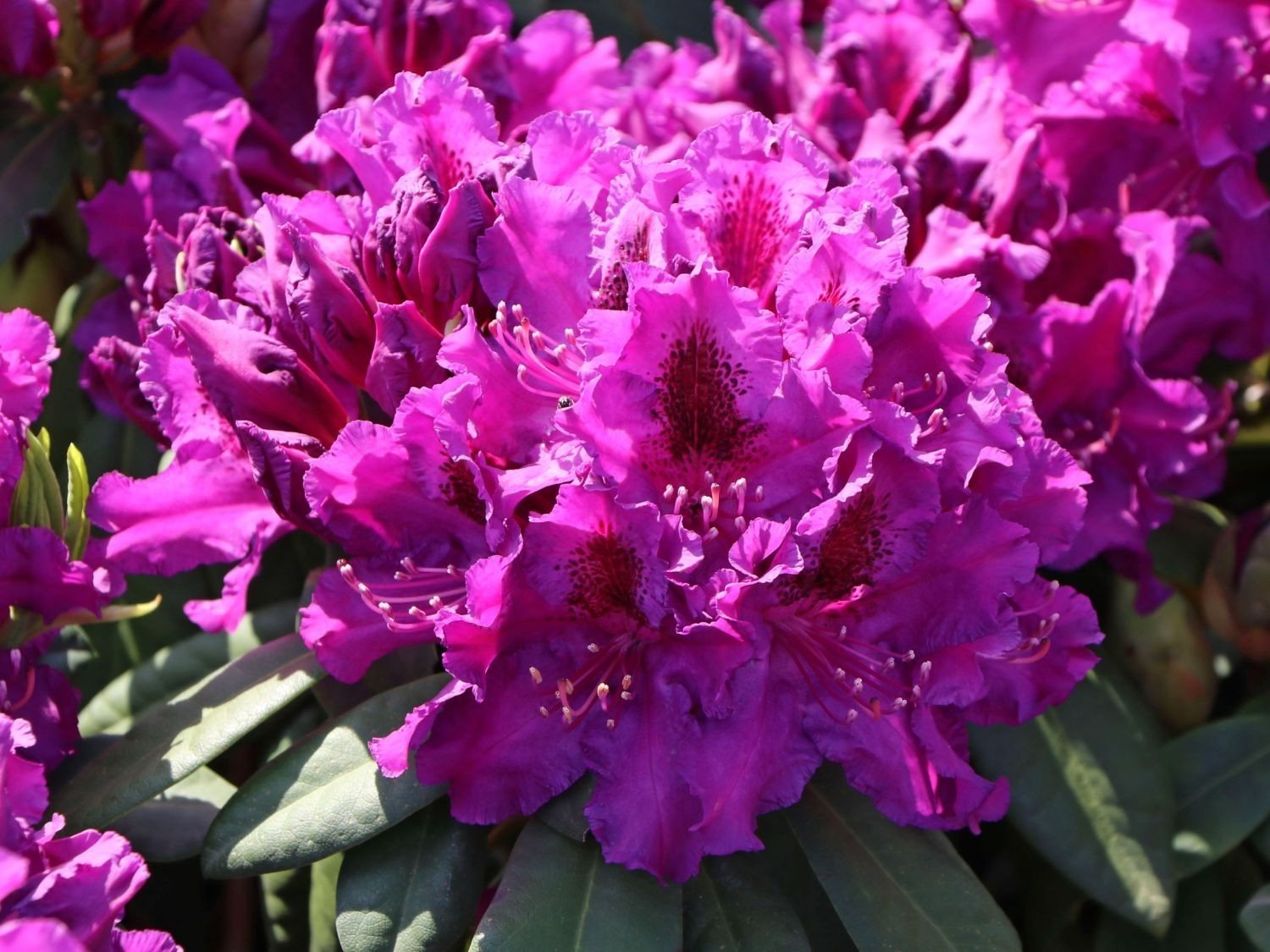





Percy Weissman
A small neat shrub, reaching a height of 90-100 cm. The spreading round crown reaches a diameter of 1.3-1.5 m. The leaves are dark green, pointed. The leaf blades are leathery, dense, glossy, reaching a width of 3.5 cm and a length of 7-8 cm.
The Percy Weissman rhododendron flowers are shaped like a funnel. They gather in spherical inflorescences of 10-15 pieces. Young buds are pinkish at the edges, with a yellowish tint in the center. As they fade, they become creamy.
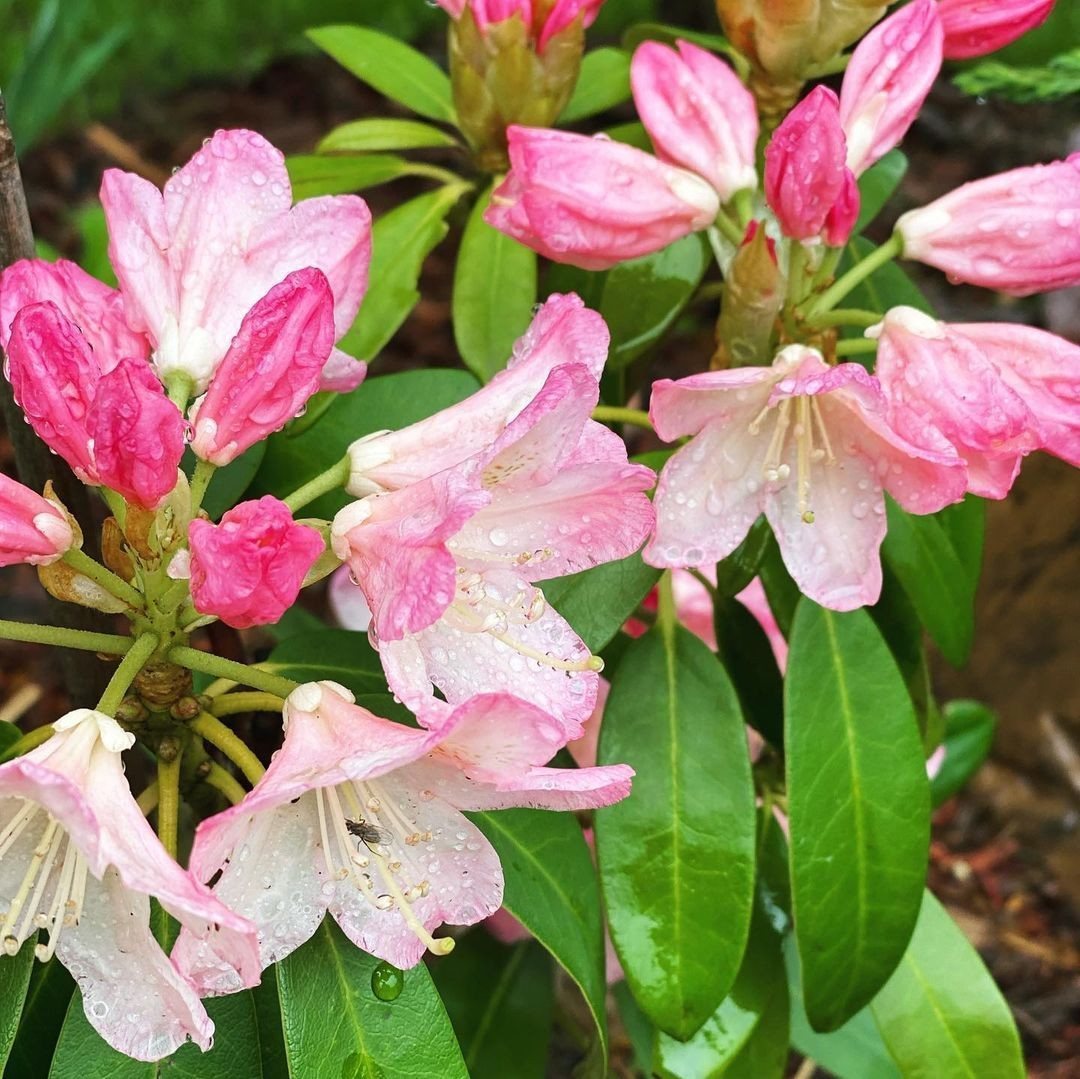
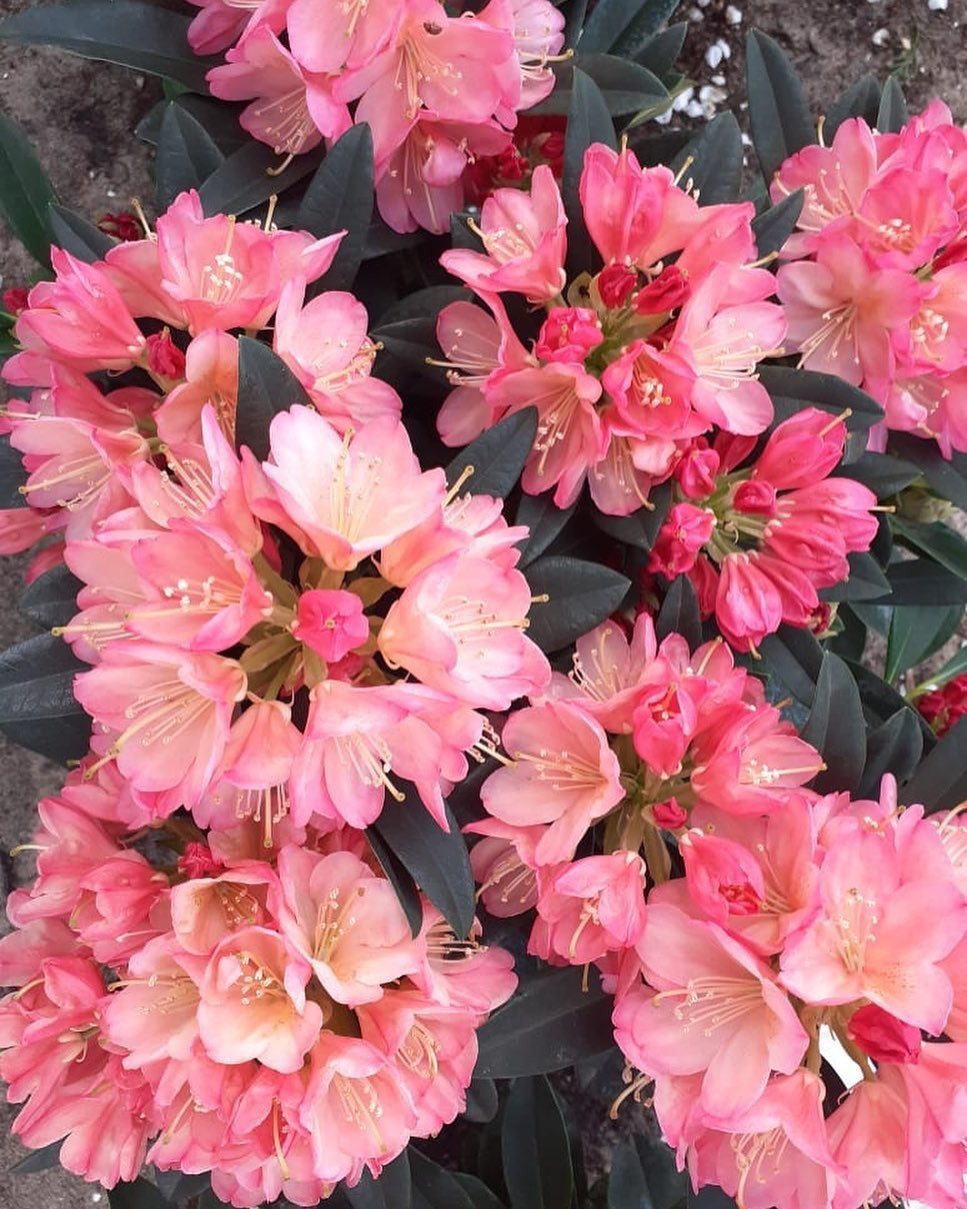

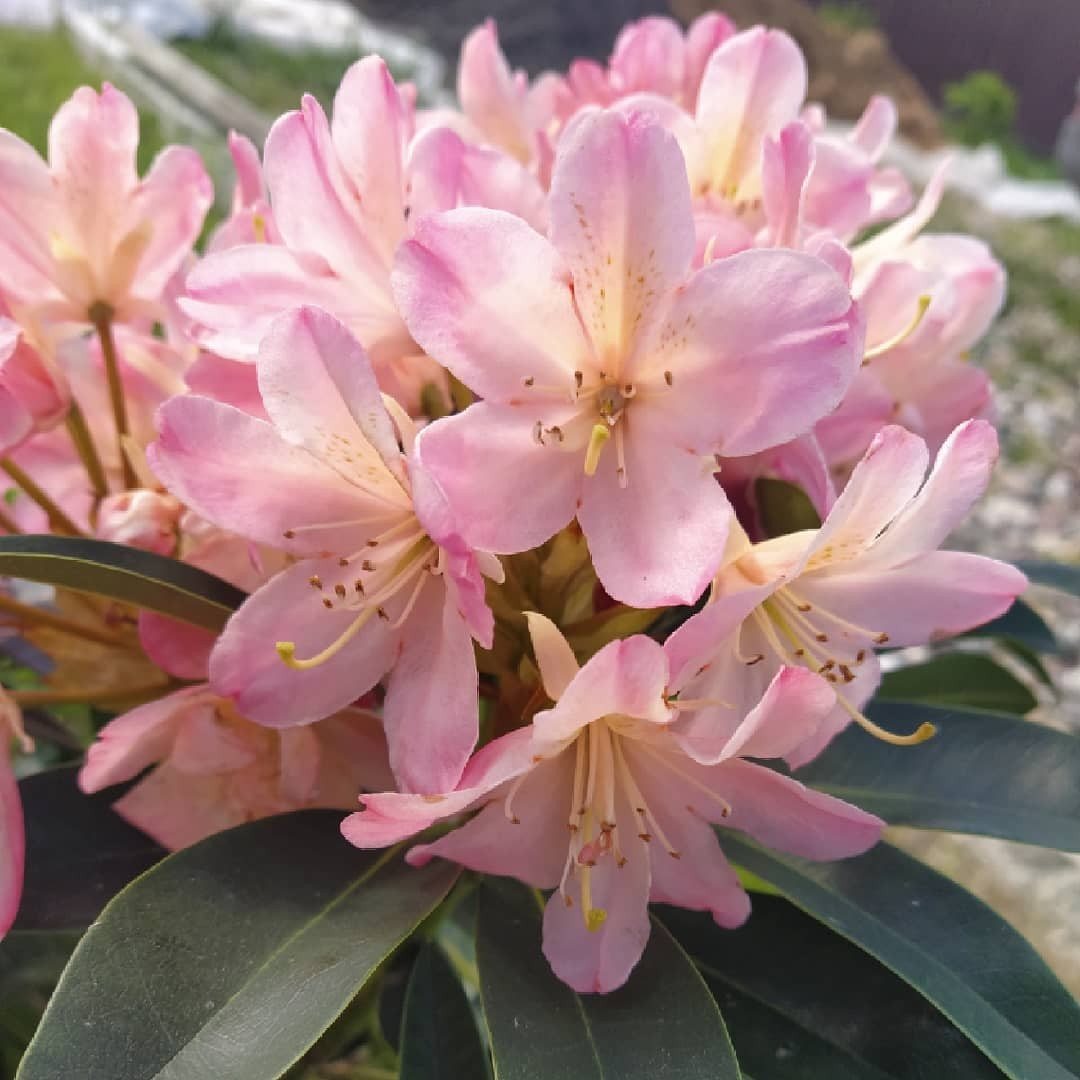
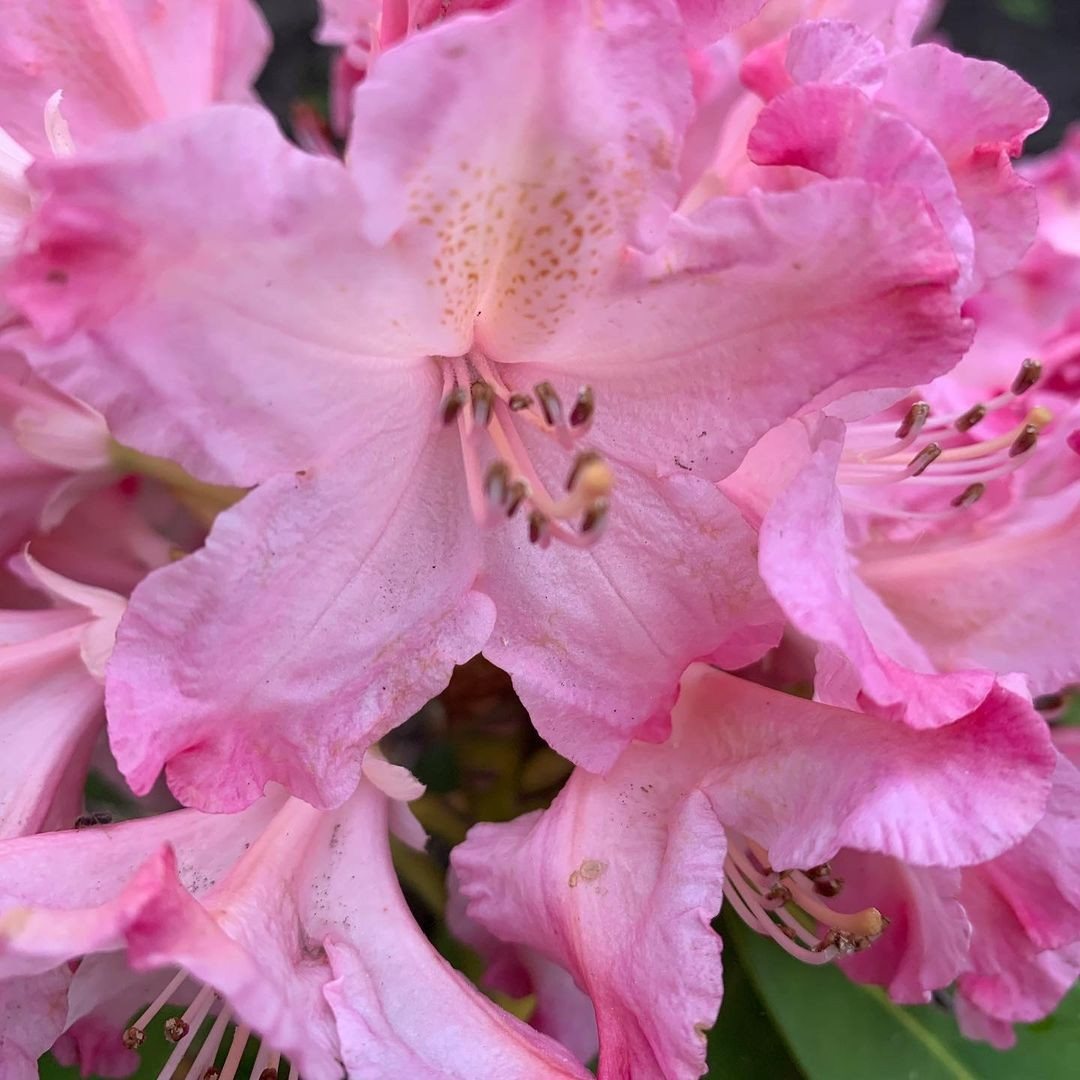





Scarlet Wonder
A shrub with bright flowers that cover the rhododendron profusely. This variety is also called Scarlet Miracle. A dense, low shrub reaches a height of only 40 cm; the diameter of the crown can grow up to 1.5 m.
The bell-shaped flowers are intense red in color. The leaves are neat, small round.

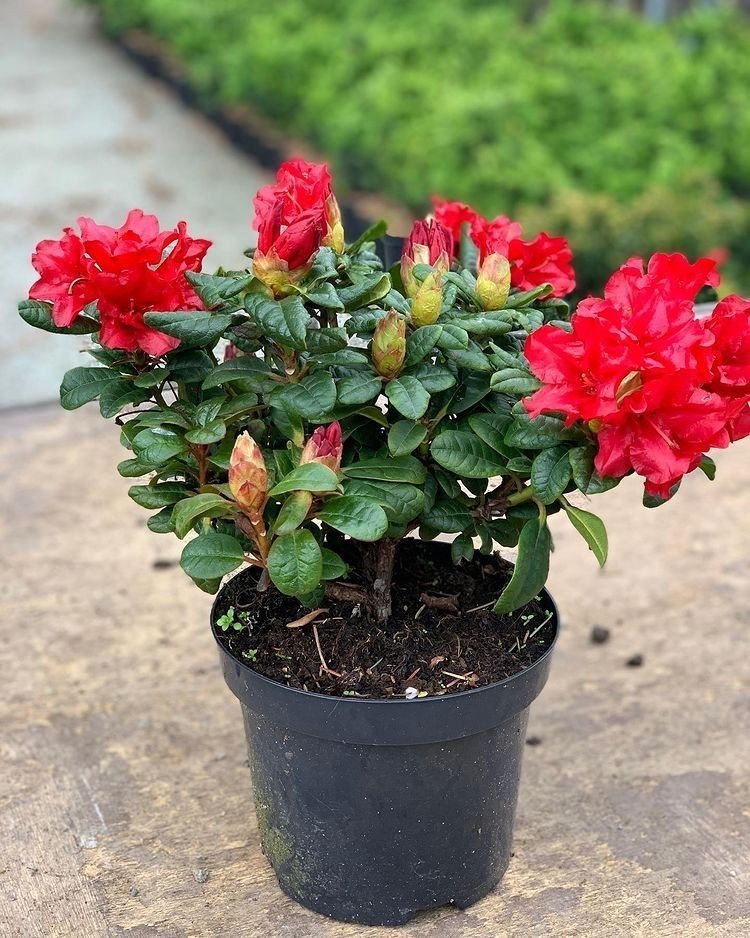

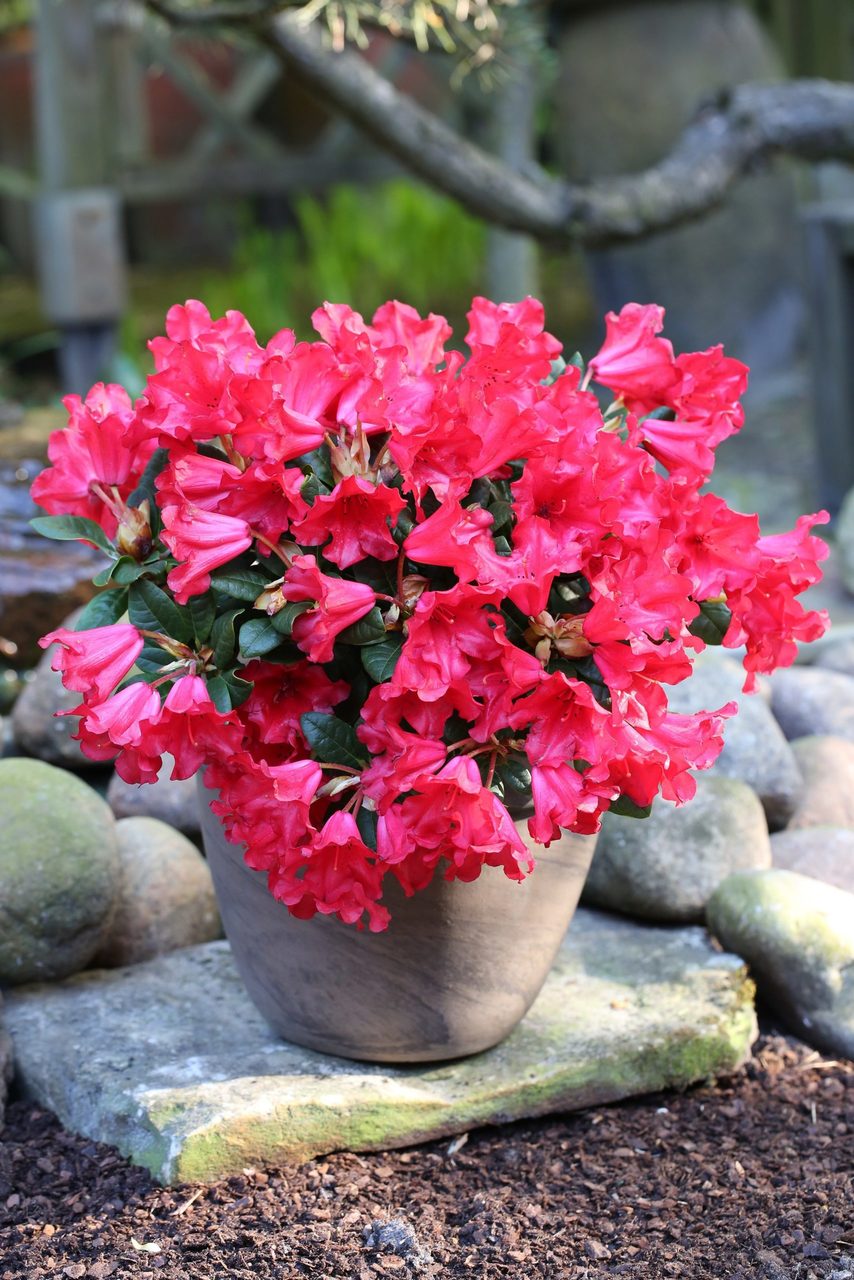
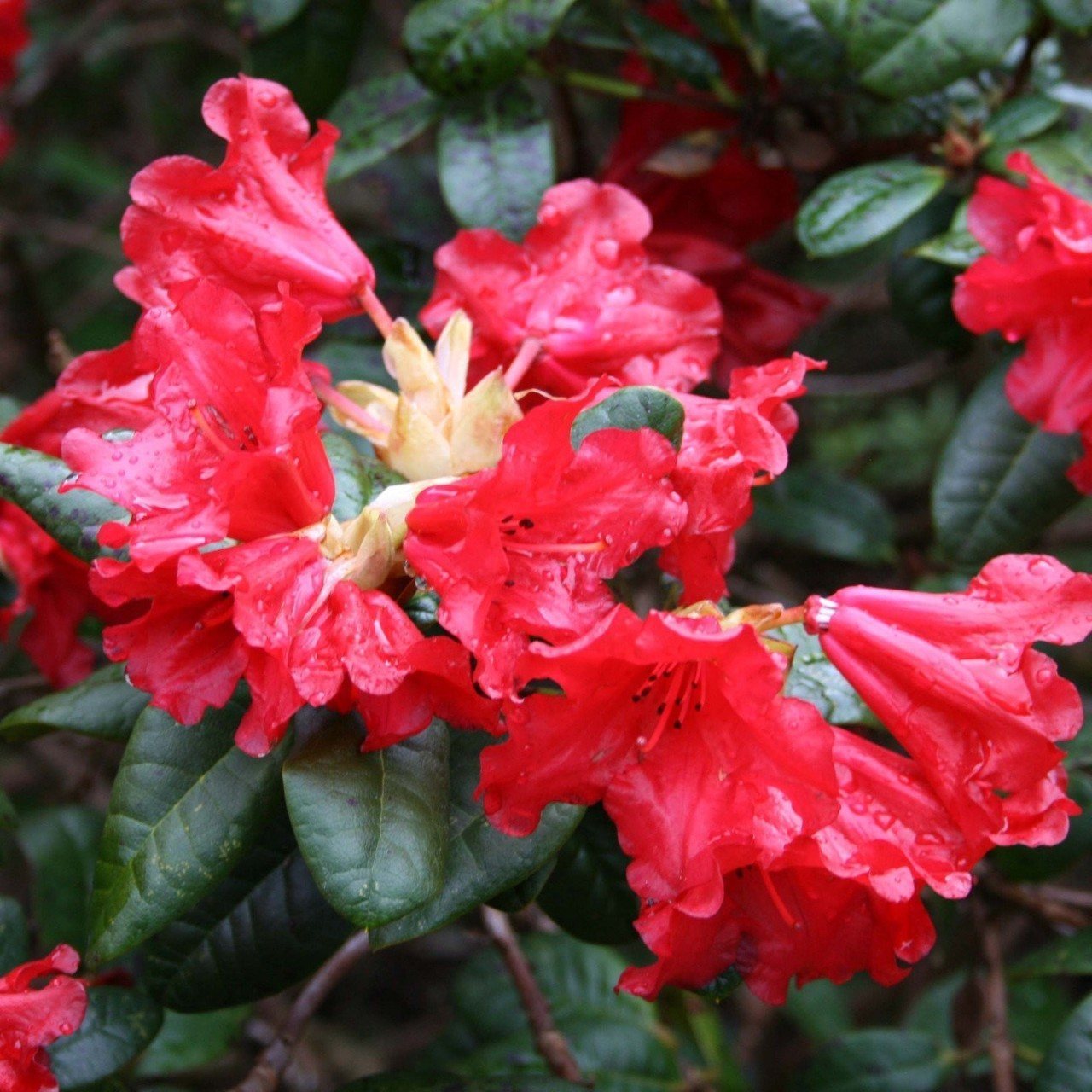





Marcel Menard
A shrub reaching a height of 100-150 cm. The leaves are wide, dense, dark green. Rhododendron Marcel Menard blooms in May and June with deep purple flowers with a gold pattern in the center.
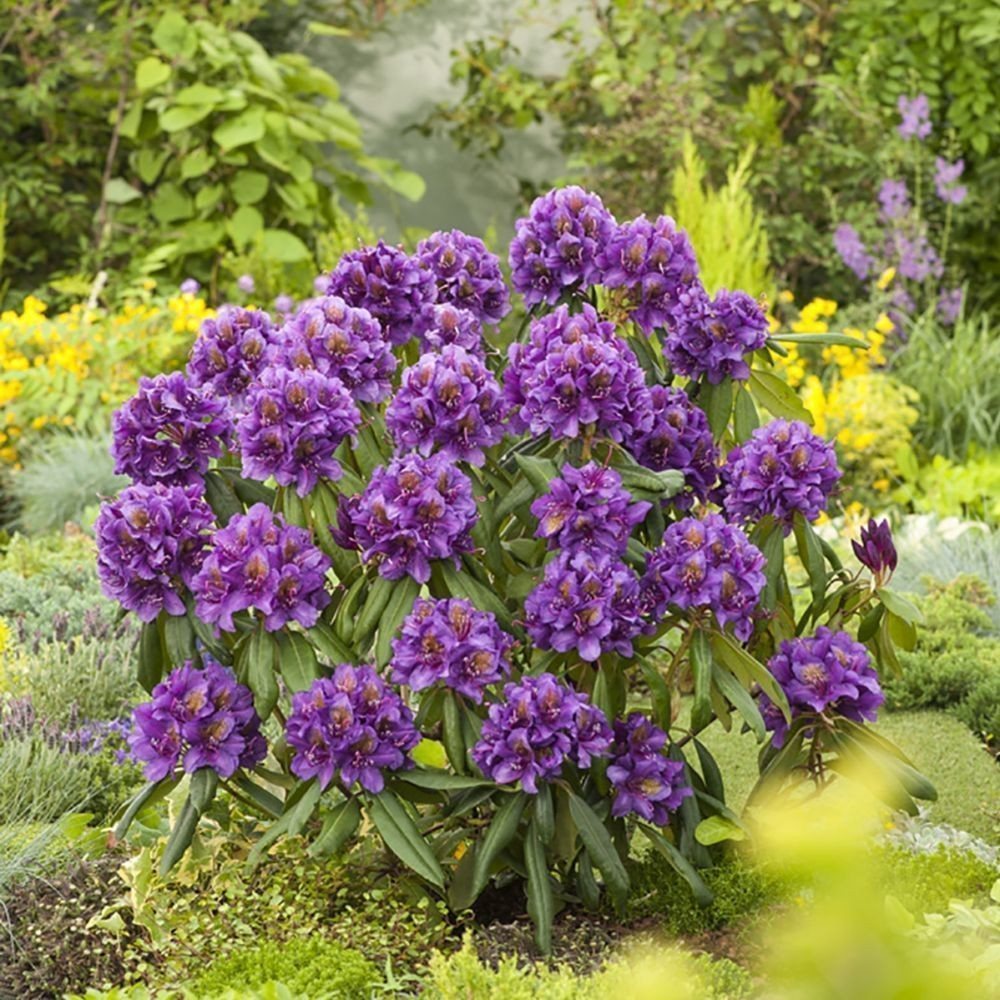
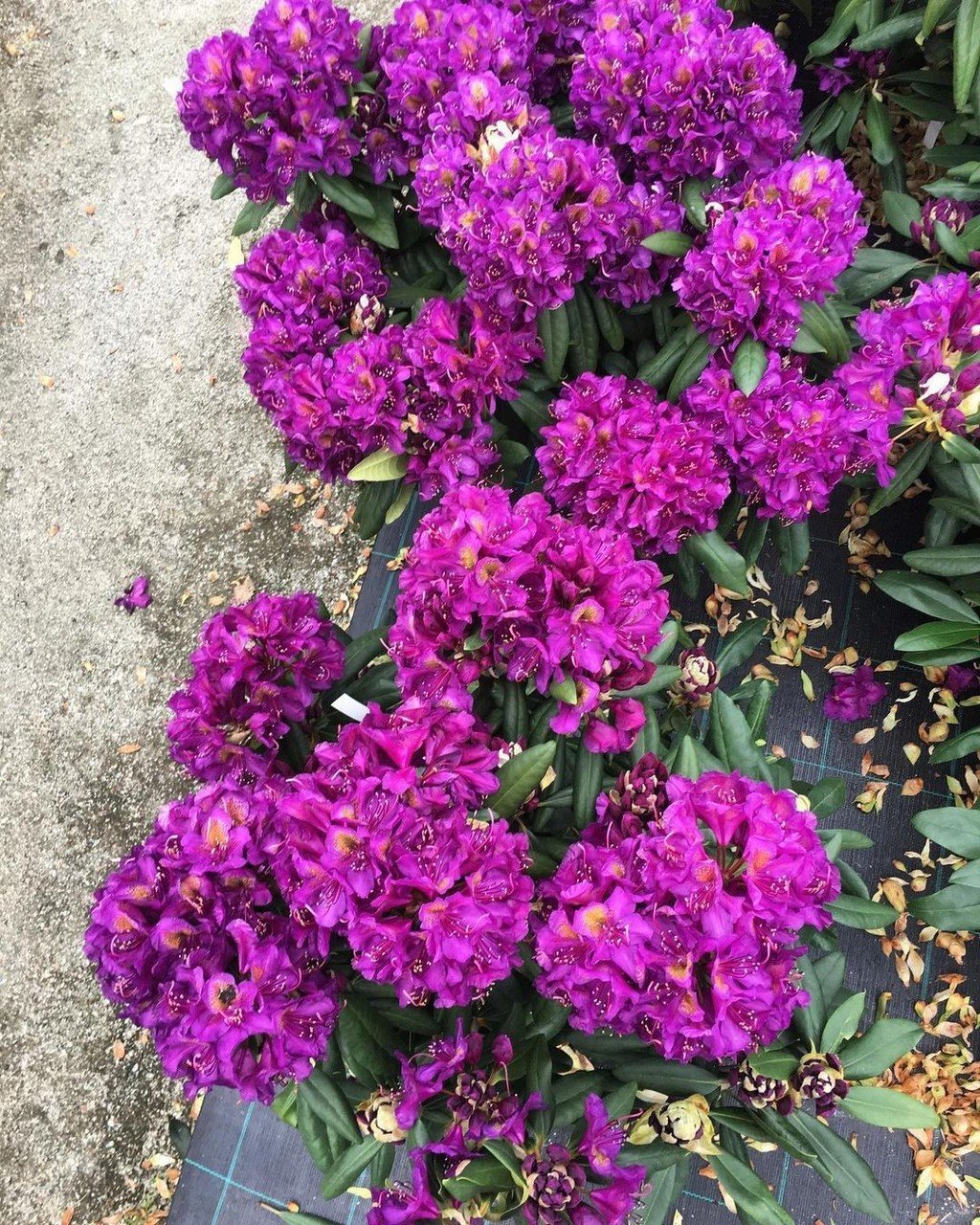

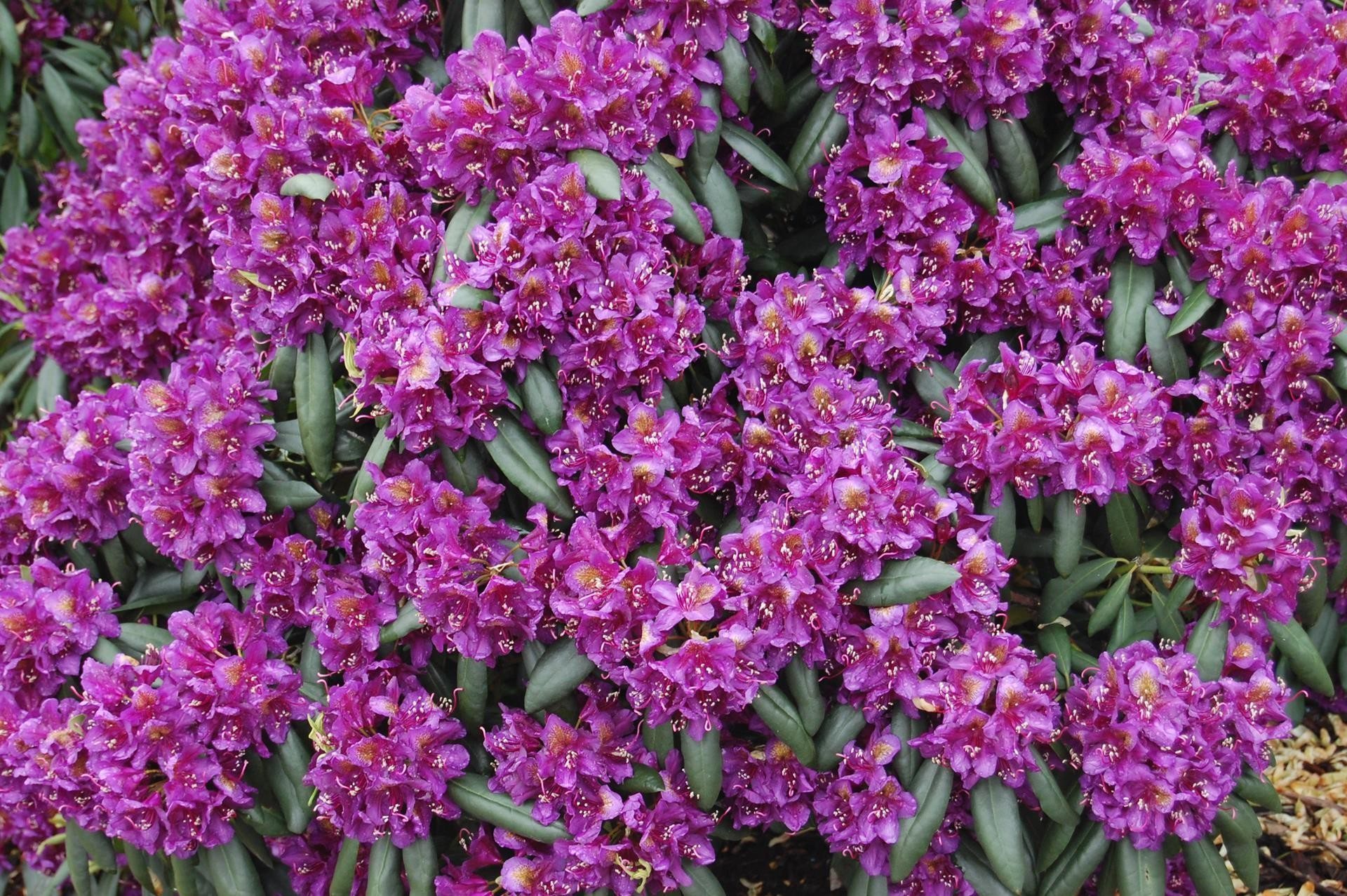
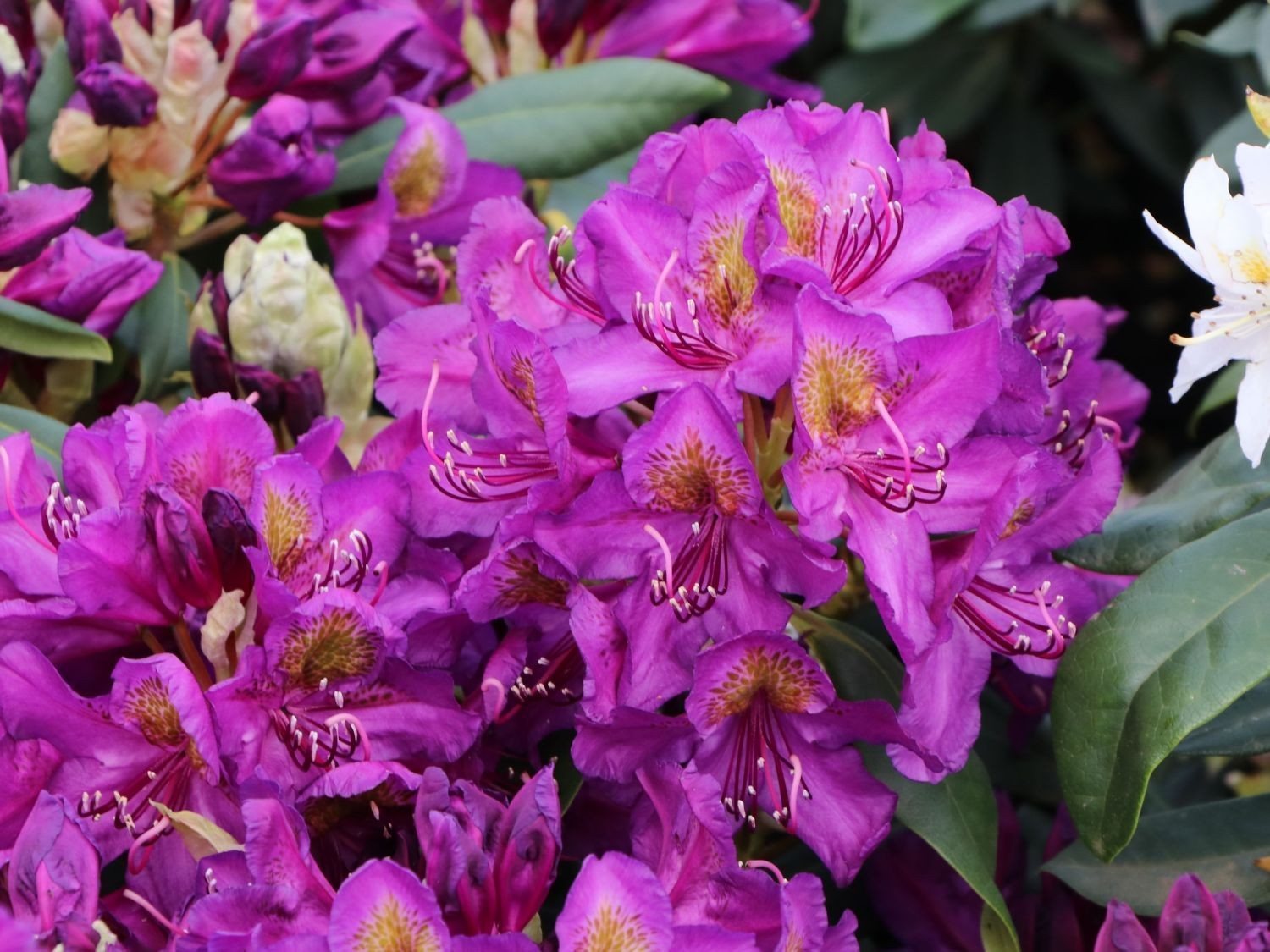





Varieties by color
Many gardeners prefer to grow rhododendrons, which are covered with buds of certain shades. You can choose the appropriate variety by knowing the variety of shrub.
White
These varieties of rhododendrons are covered with cream or snow-white buds during the flowering period:
- Adhesive;
- Short-fruited;
- Atlantic;
- Caucasian;
- Tree-like.
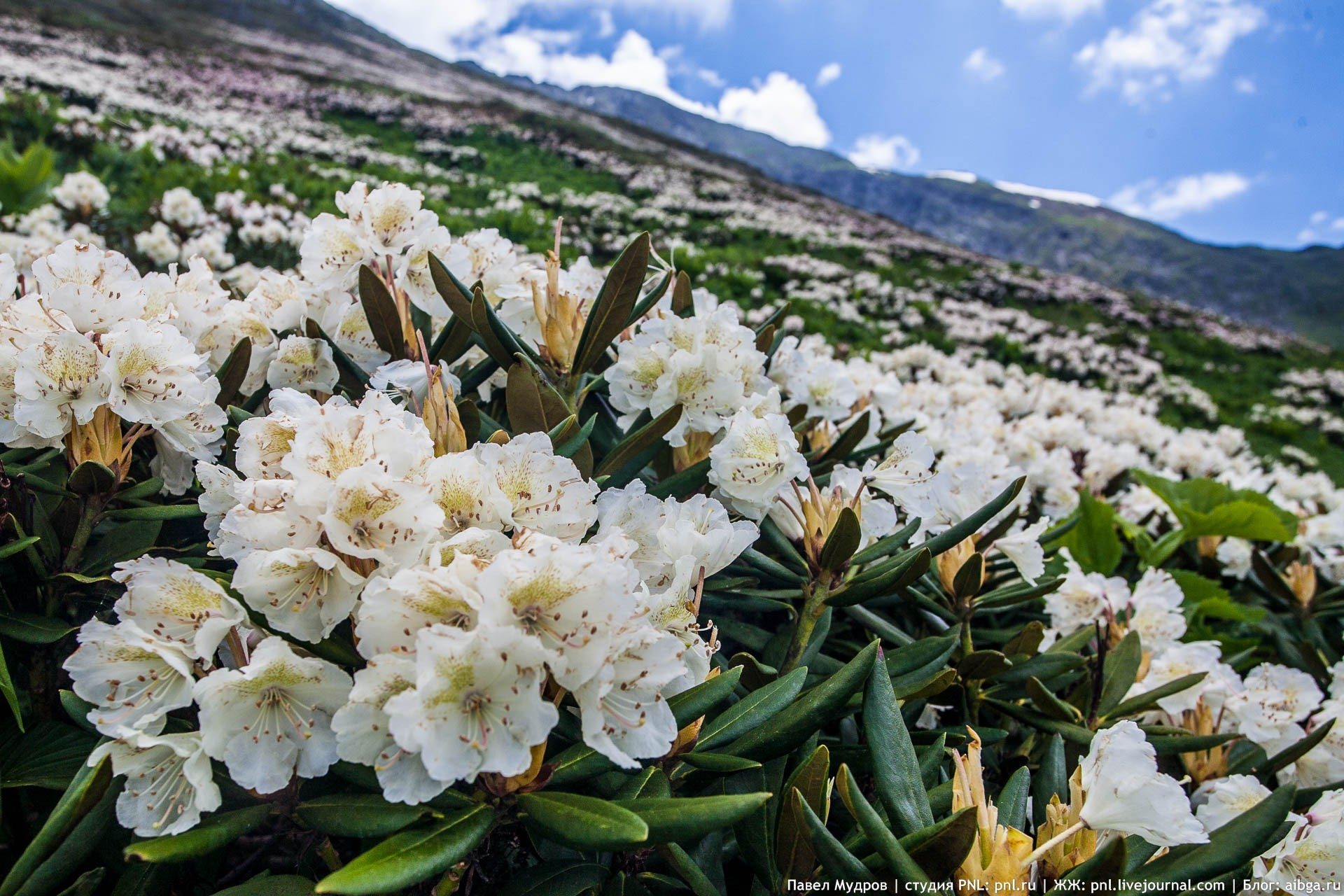
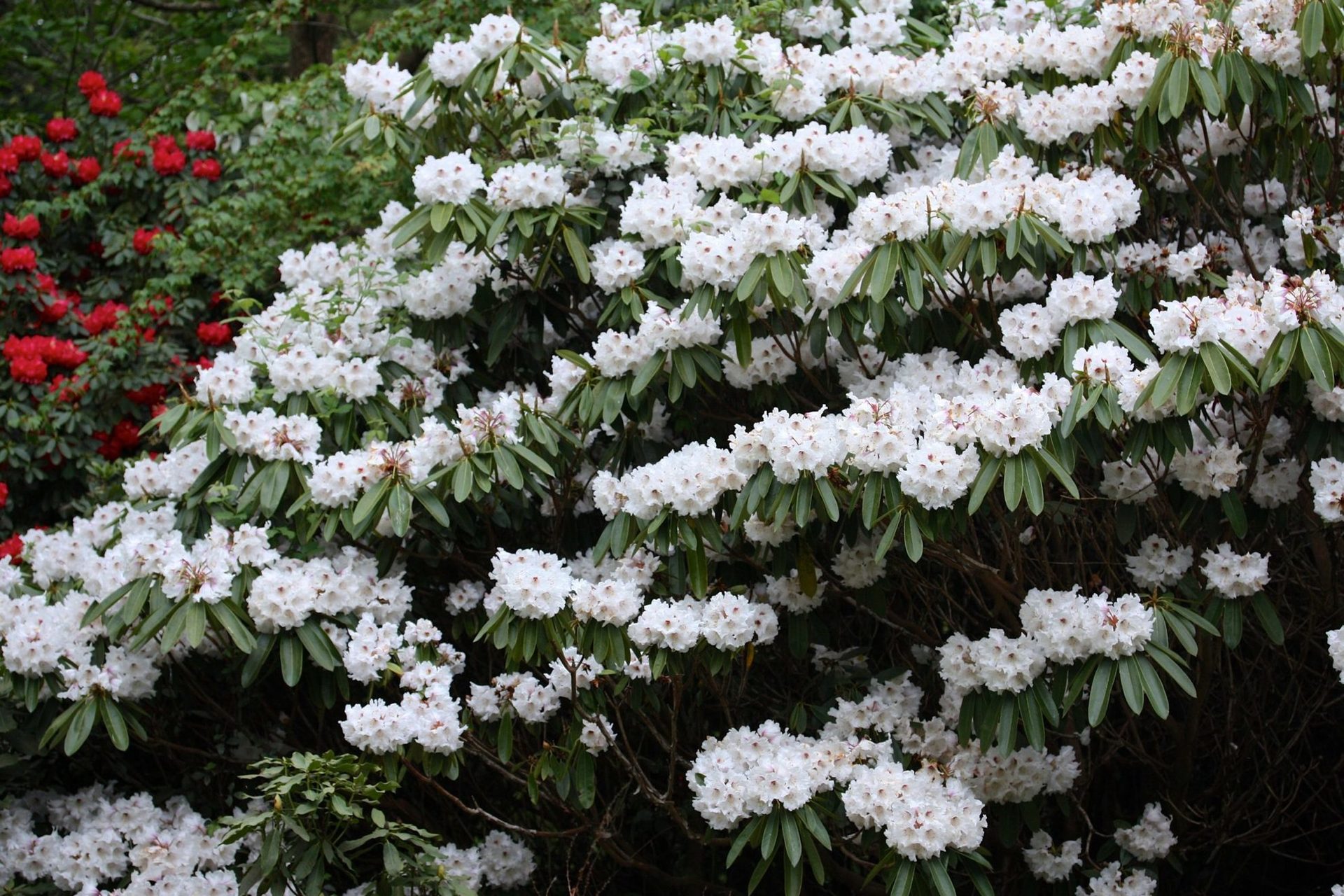
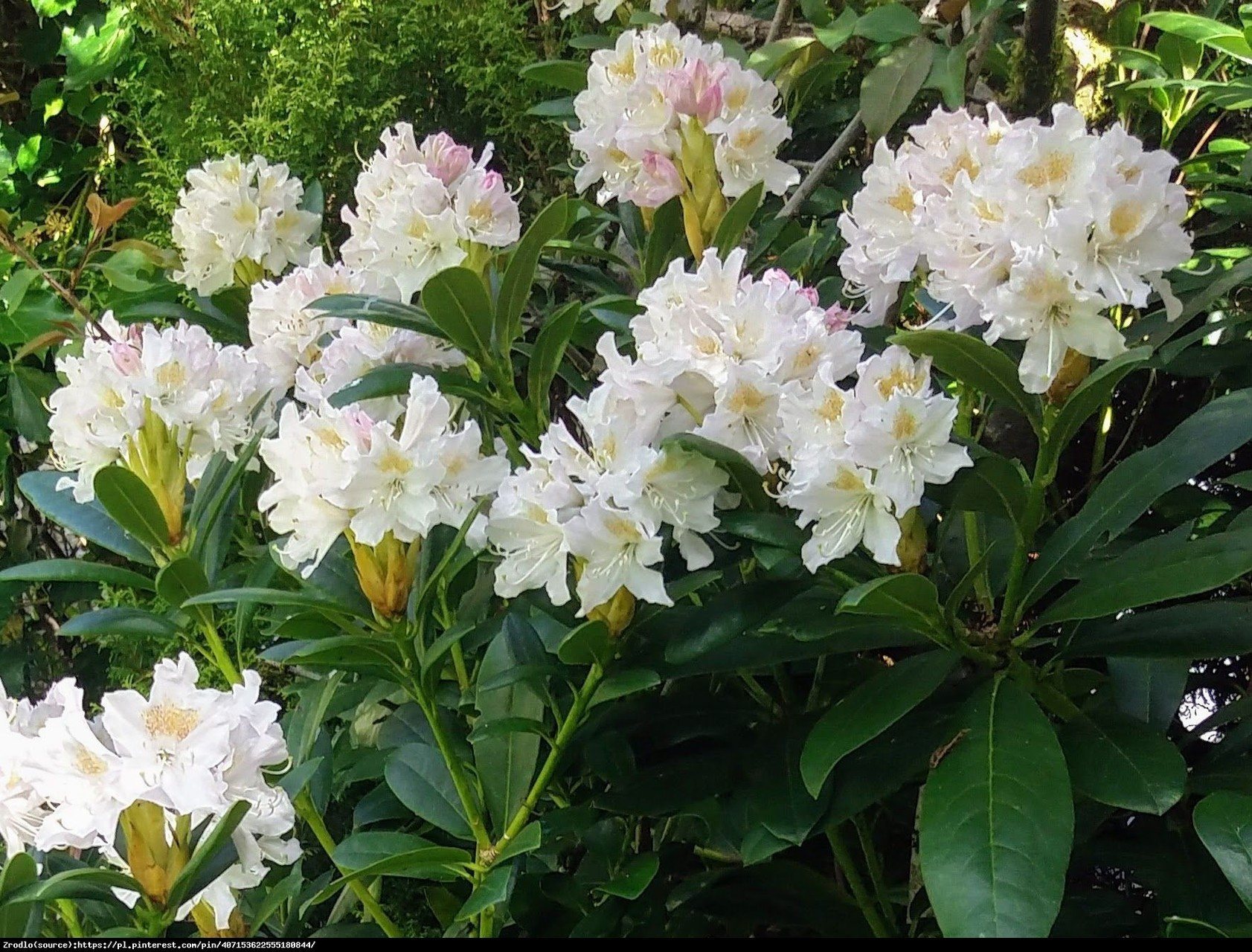
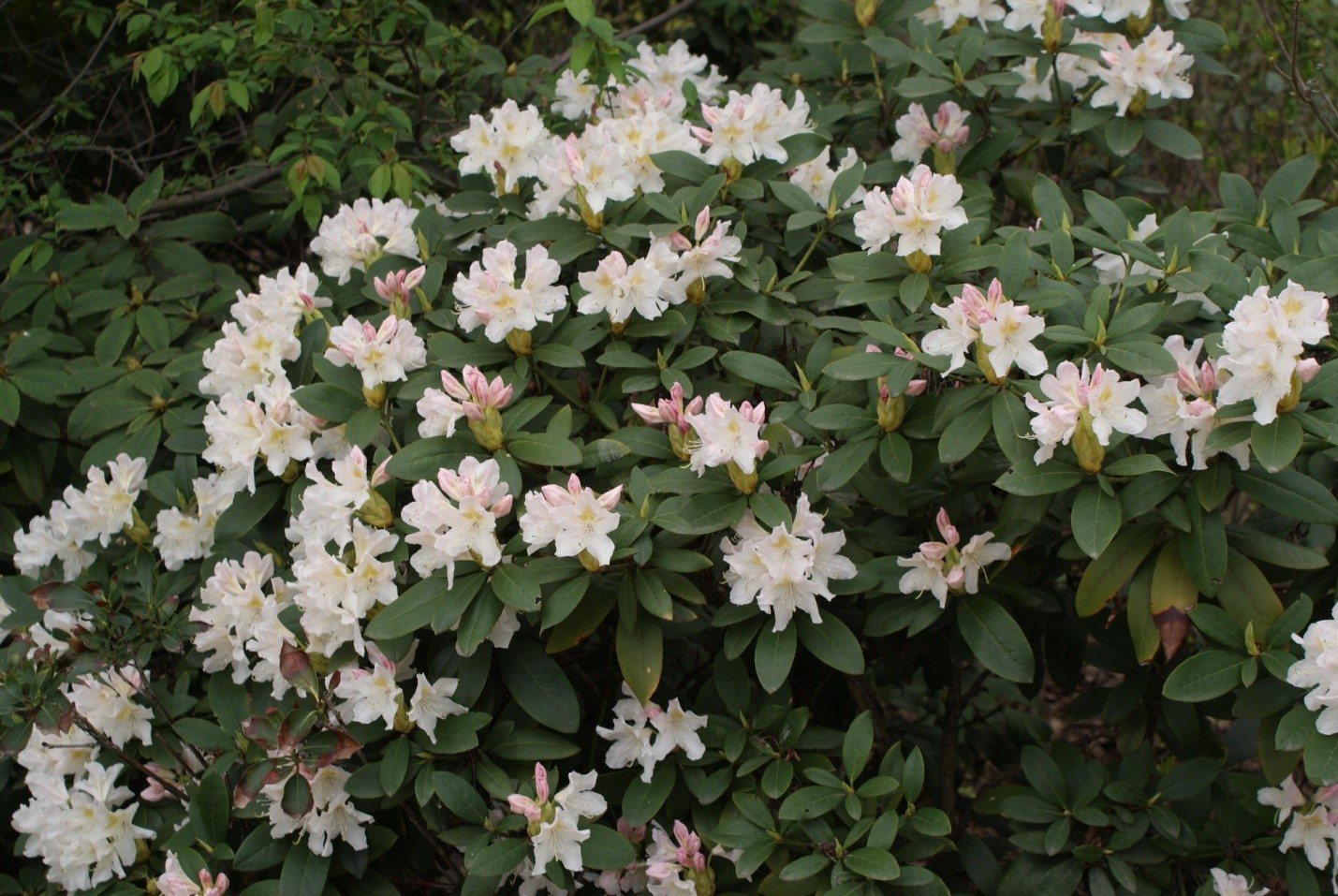
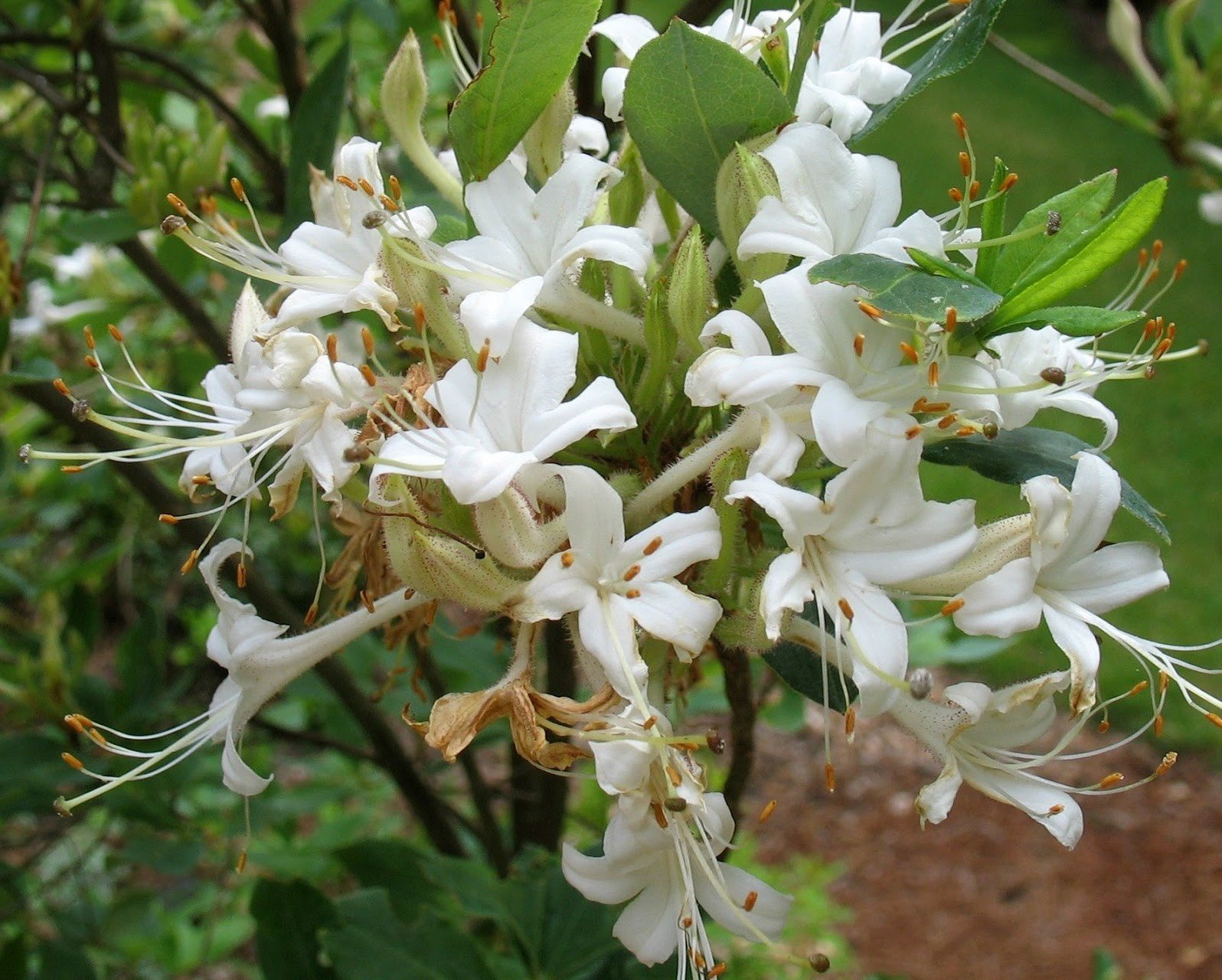





Orange
Rhododendrons of these varieties bloom with rich orange, fiery flowers:
- Japanese;
- Madame Joly;
- Klondike.
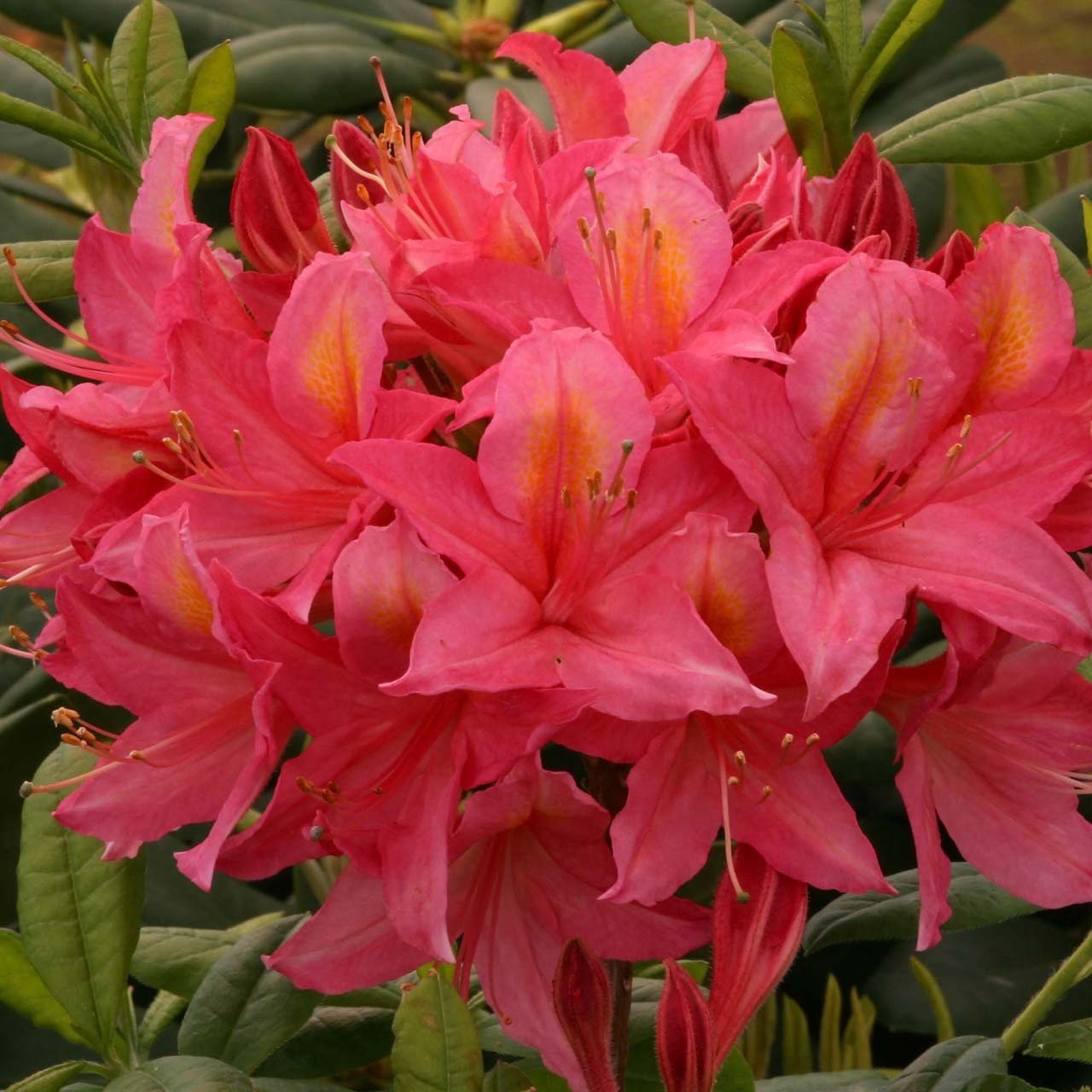
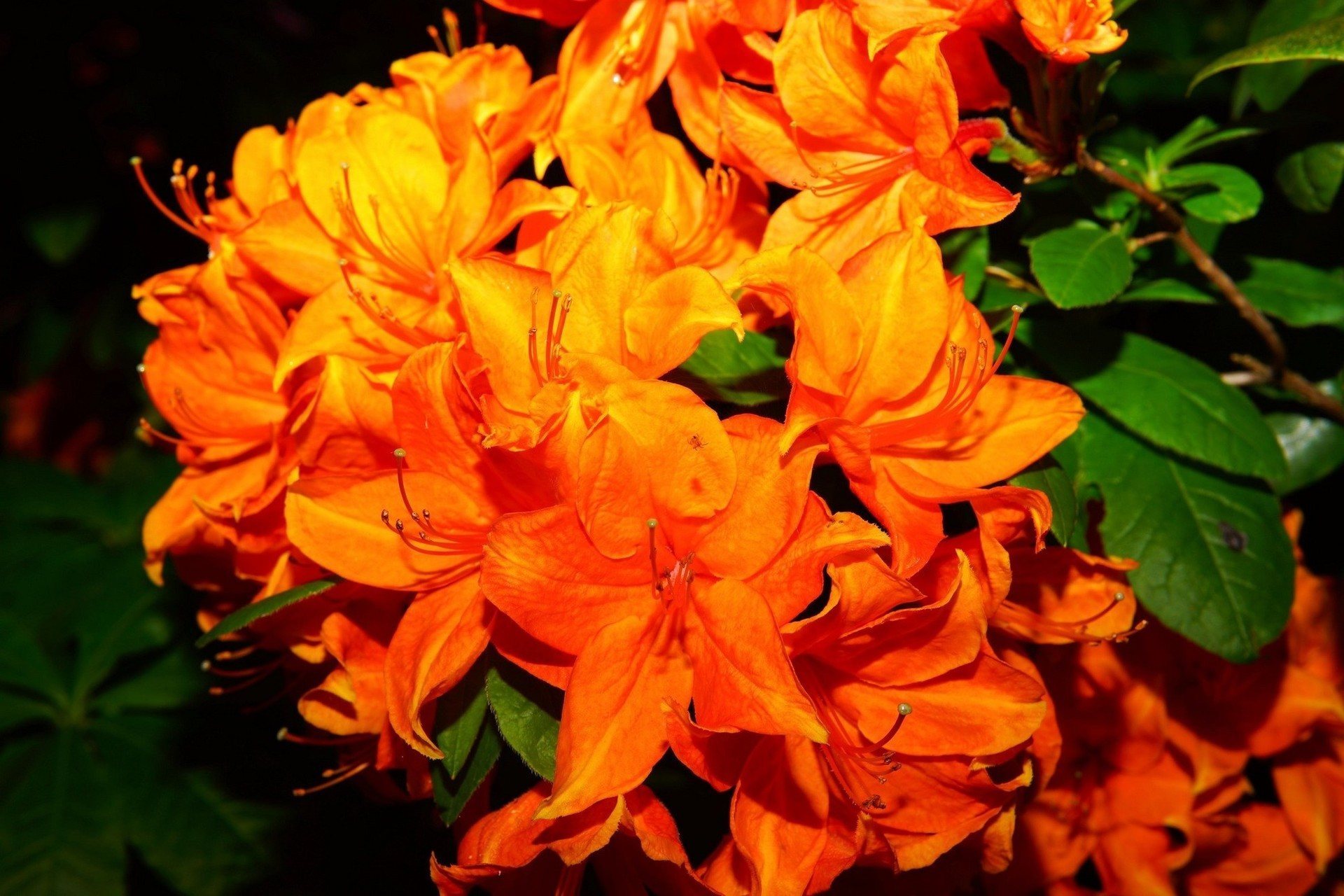
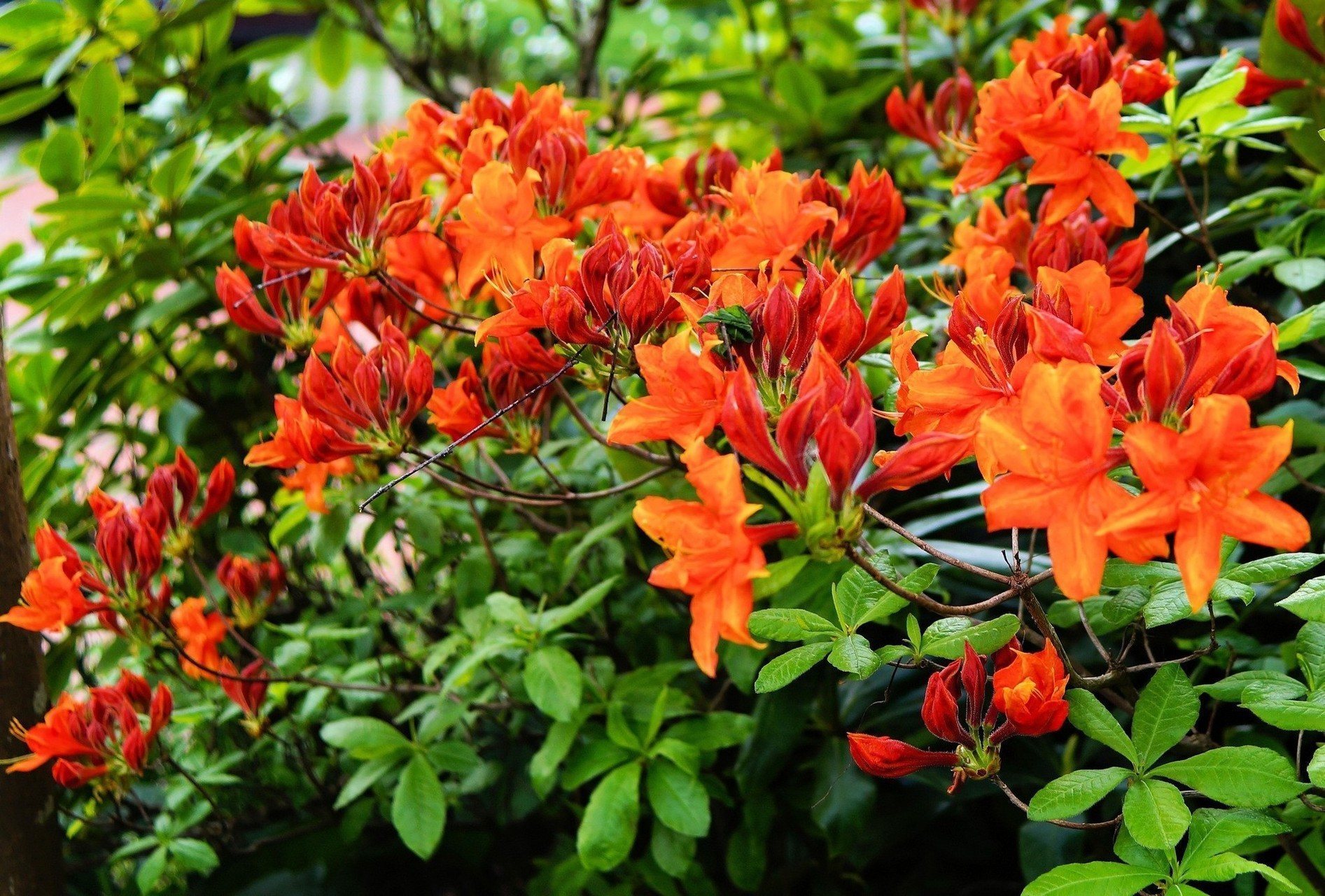
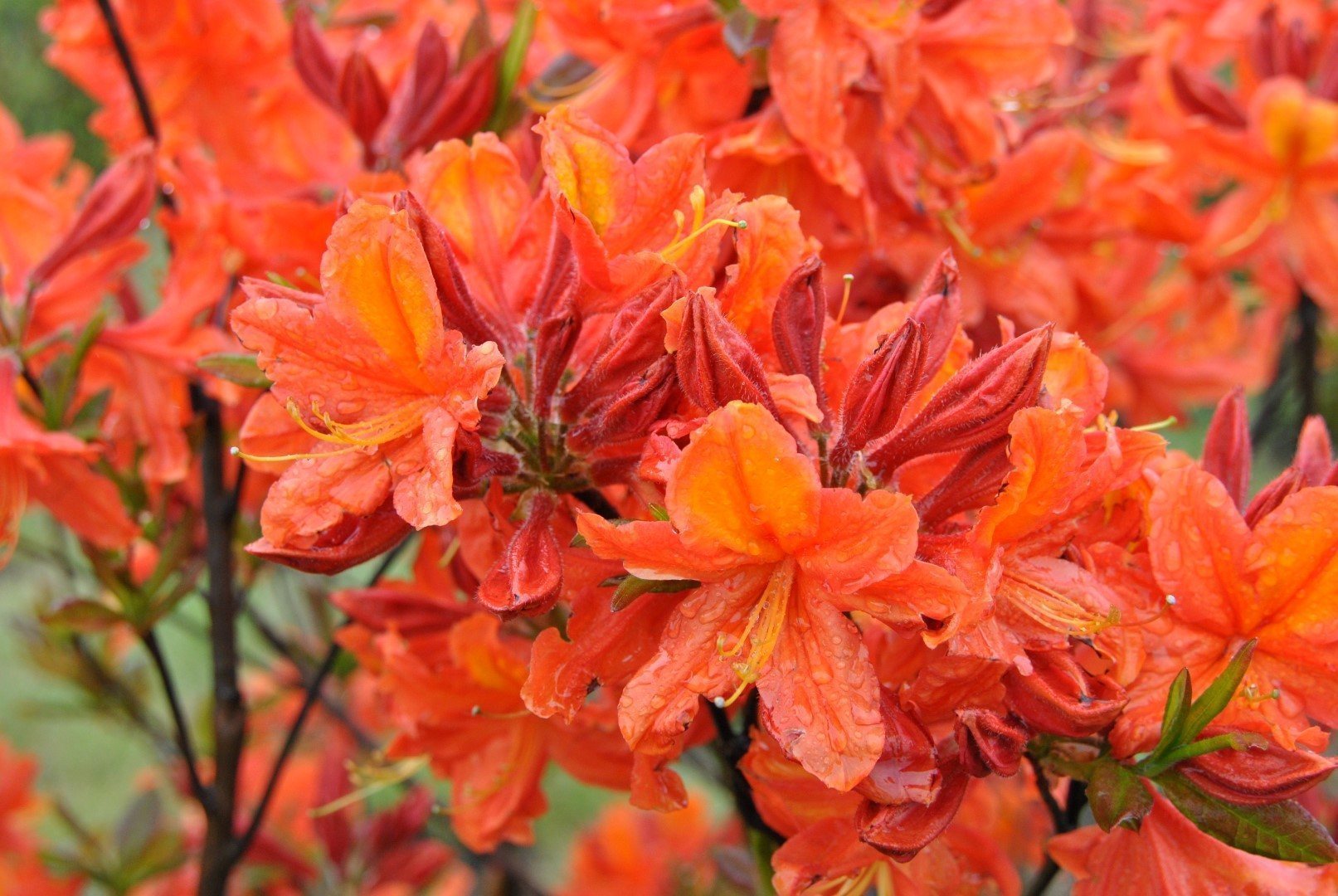
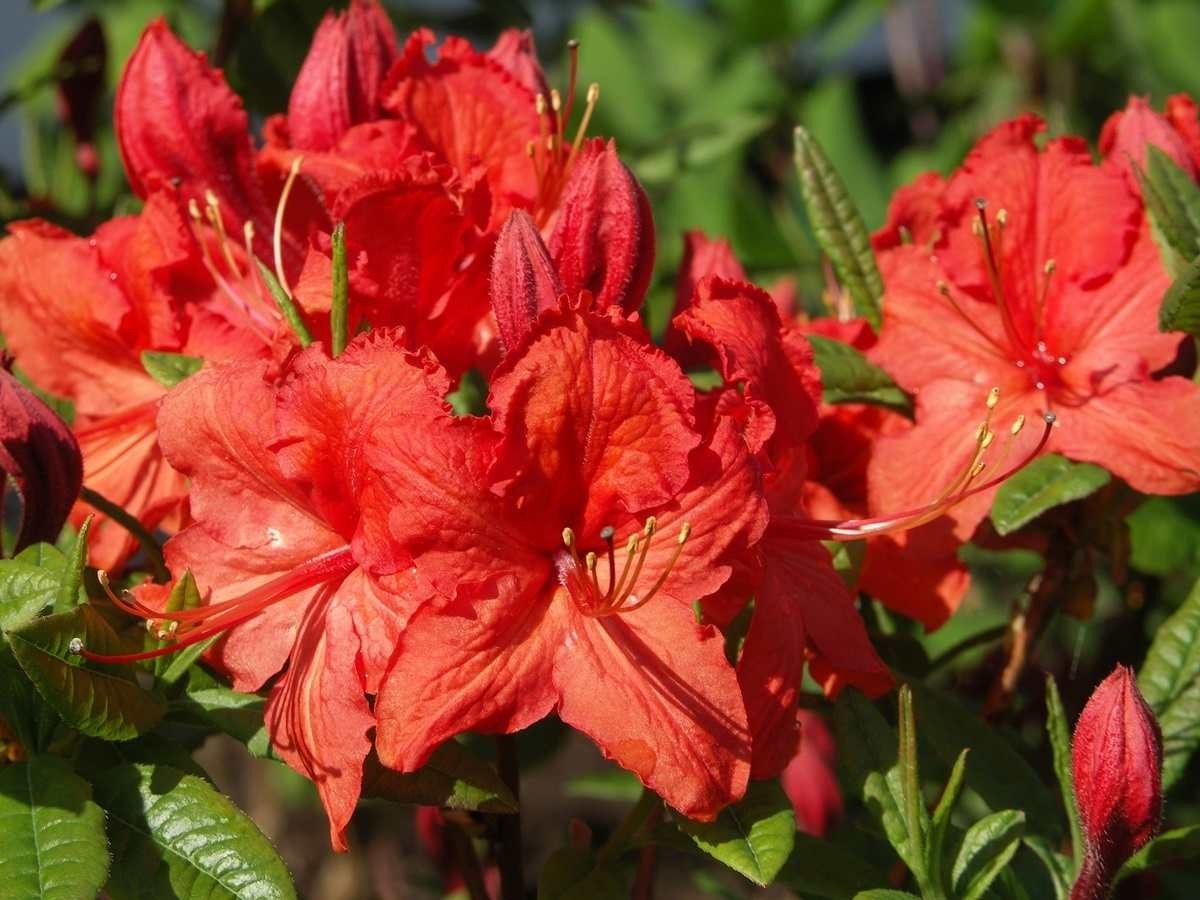





Pink
Varieties of rhododendrons with pink shades of varying color intensities:
- Canadian;
- Largest;
- Daursky;
- Caroline.
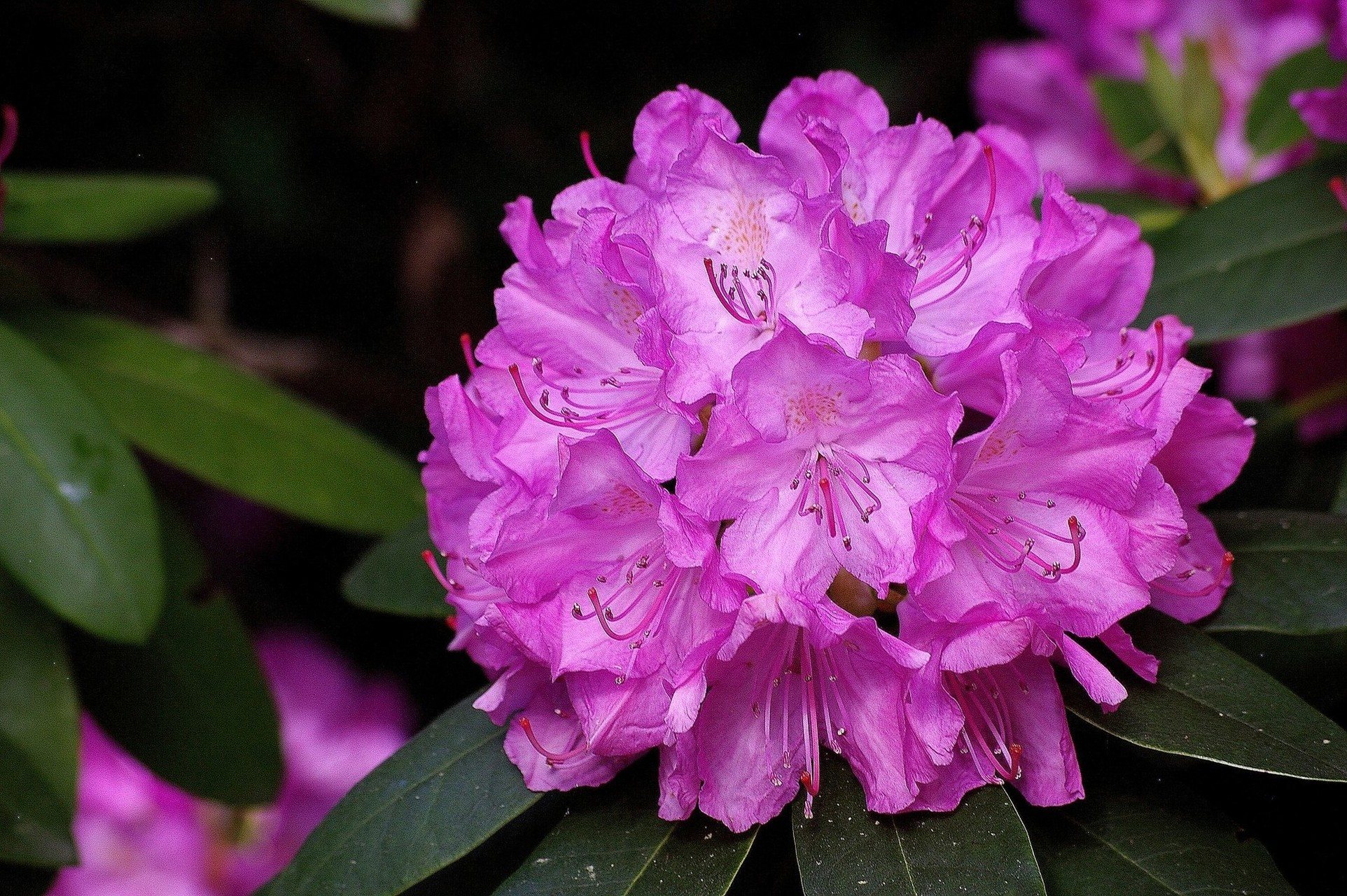
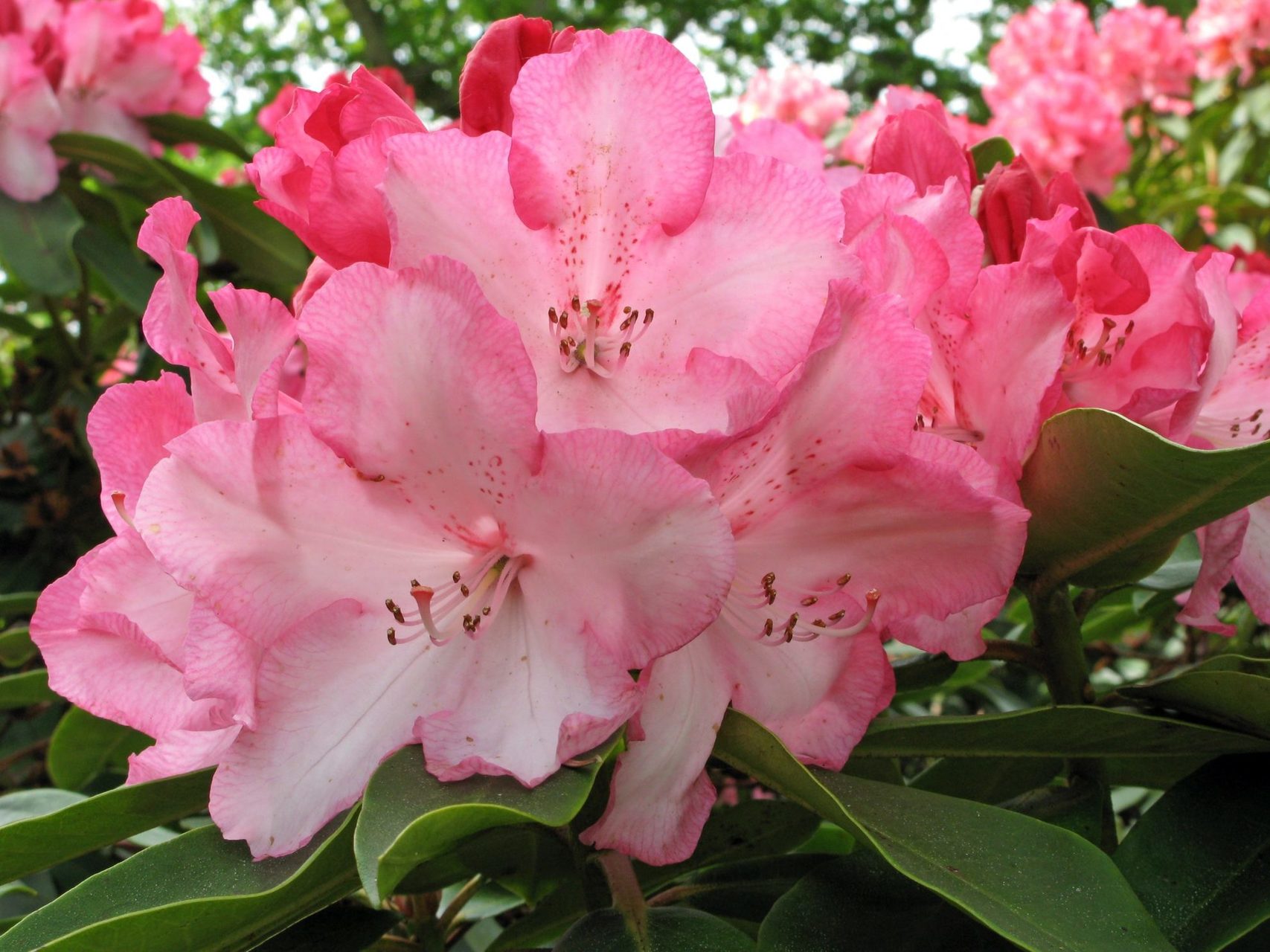
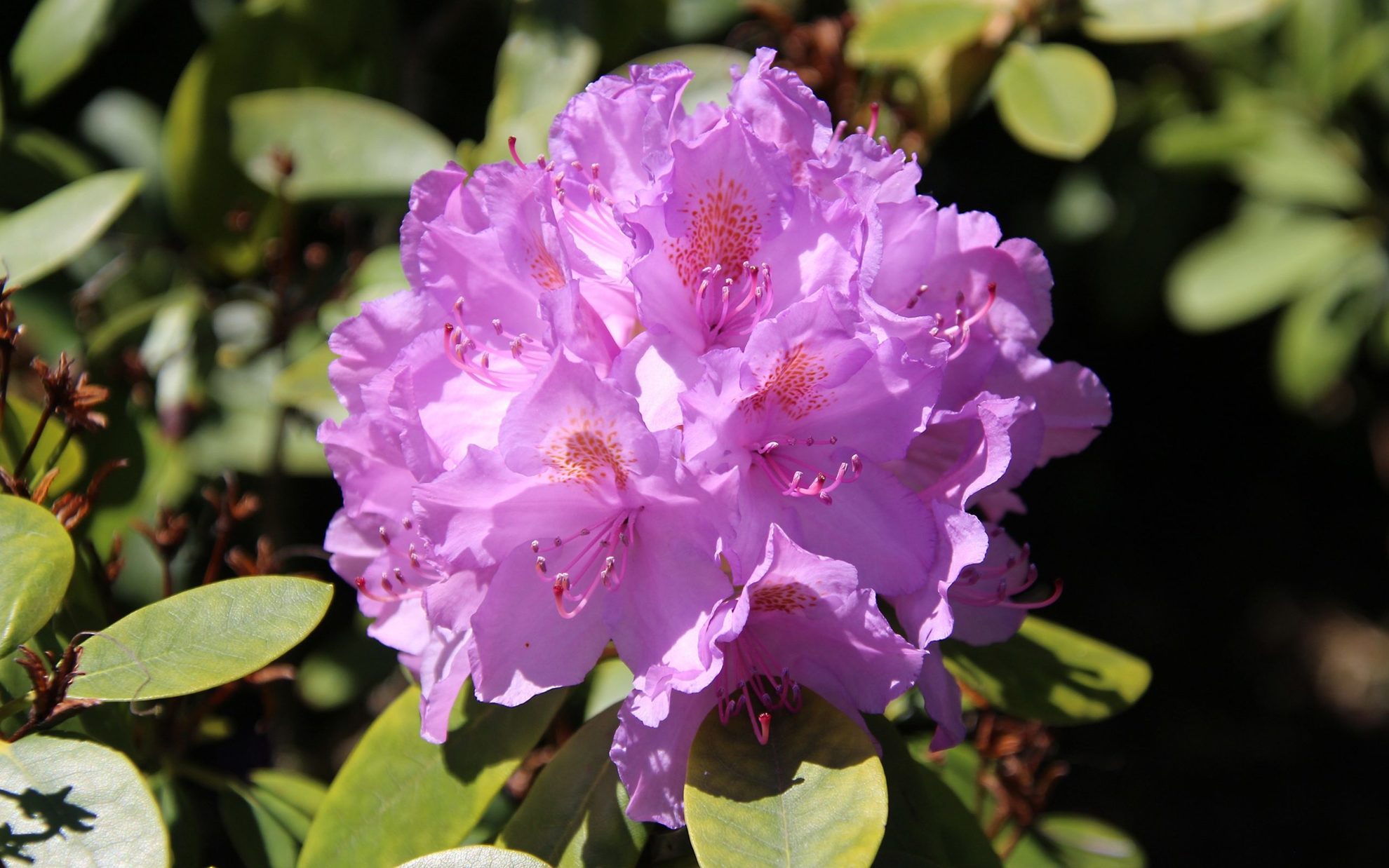
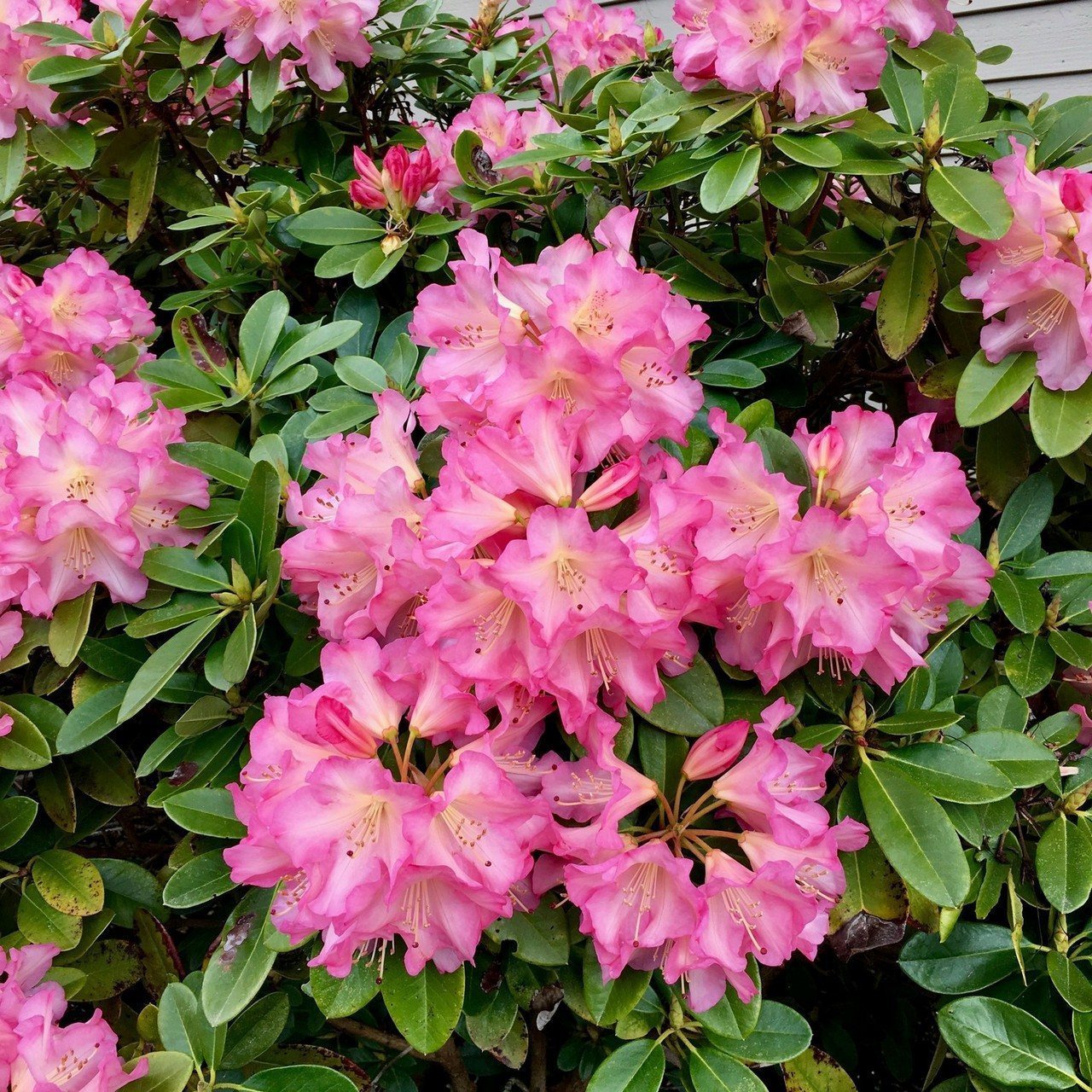
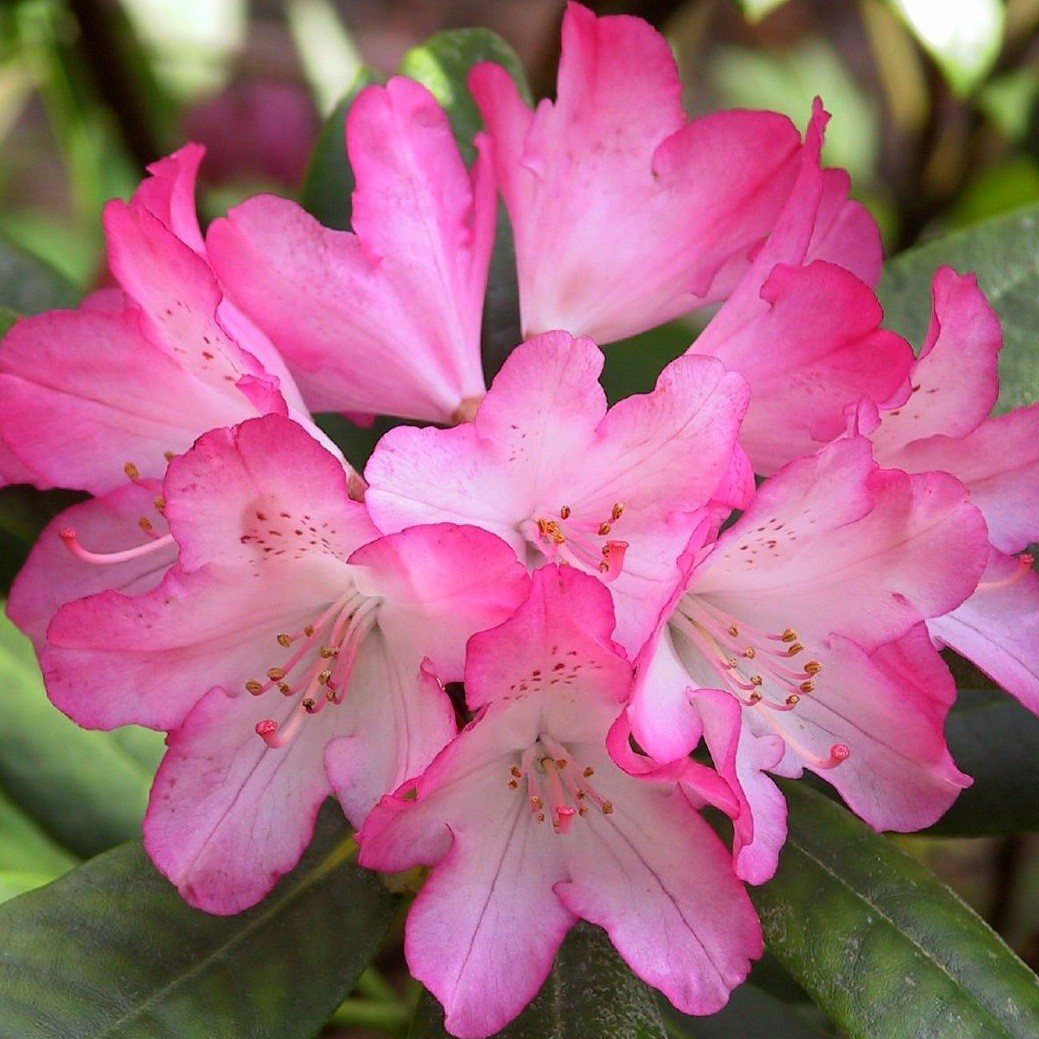





Yellow
The buds of these shrubs resemble the bright spring sun in color:
- Golden;
- Cigoliform;
- Yellow.
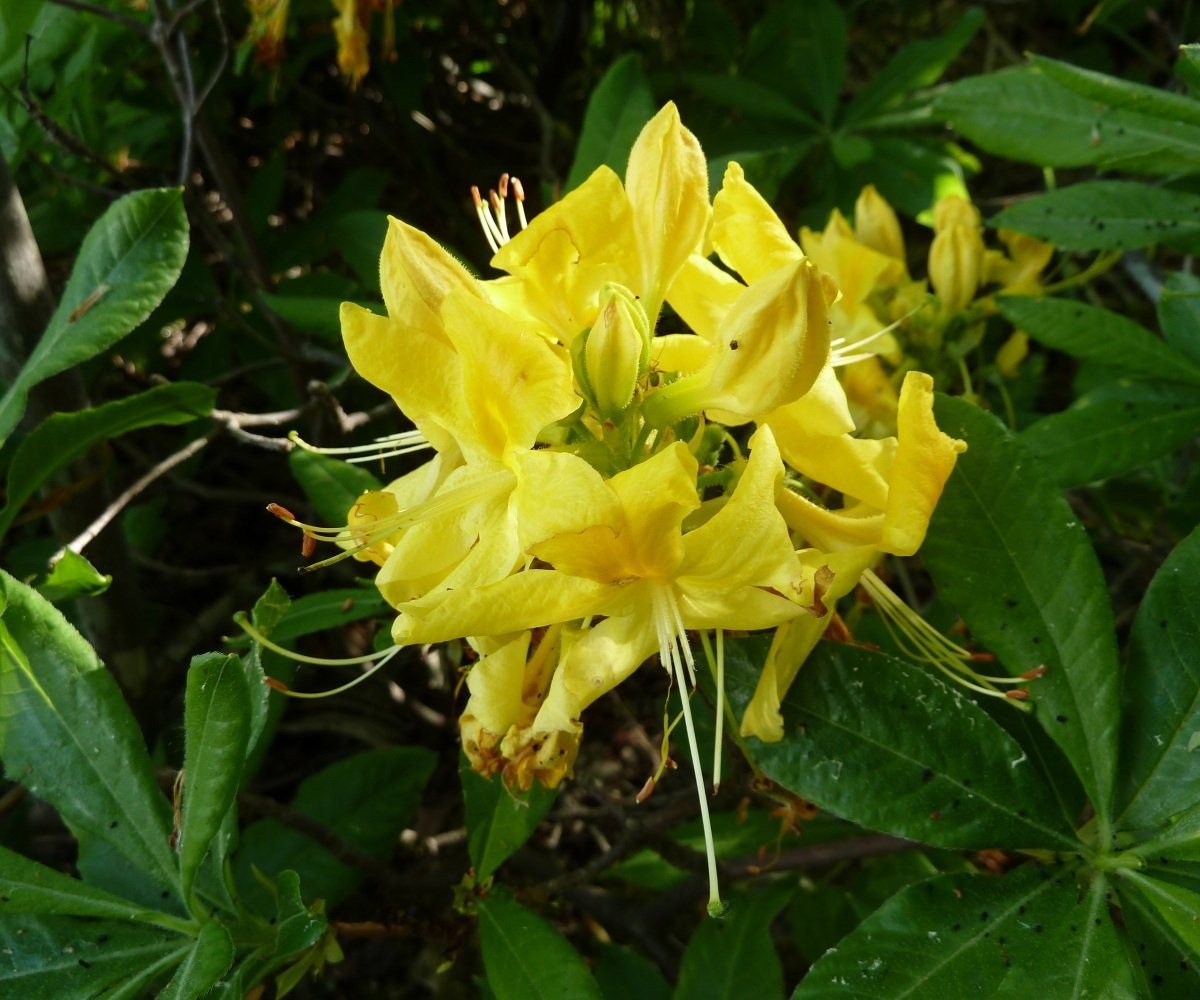

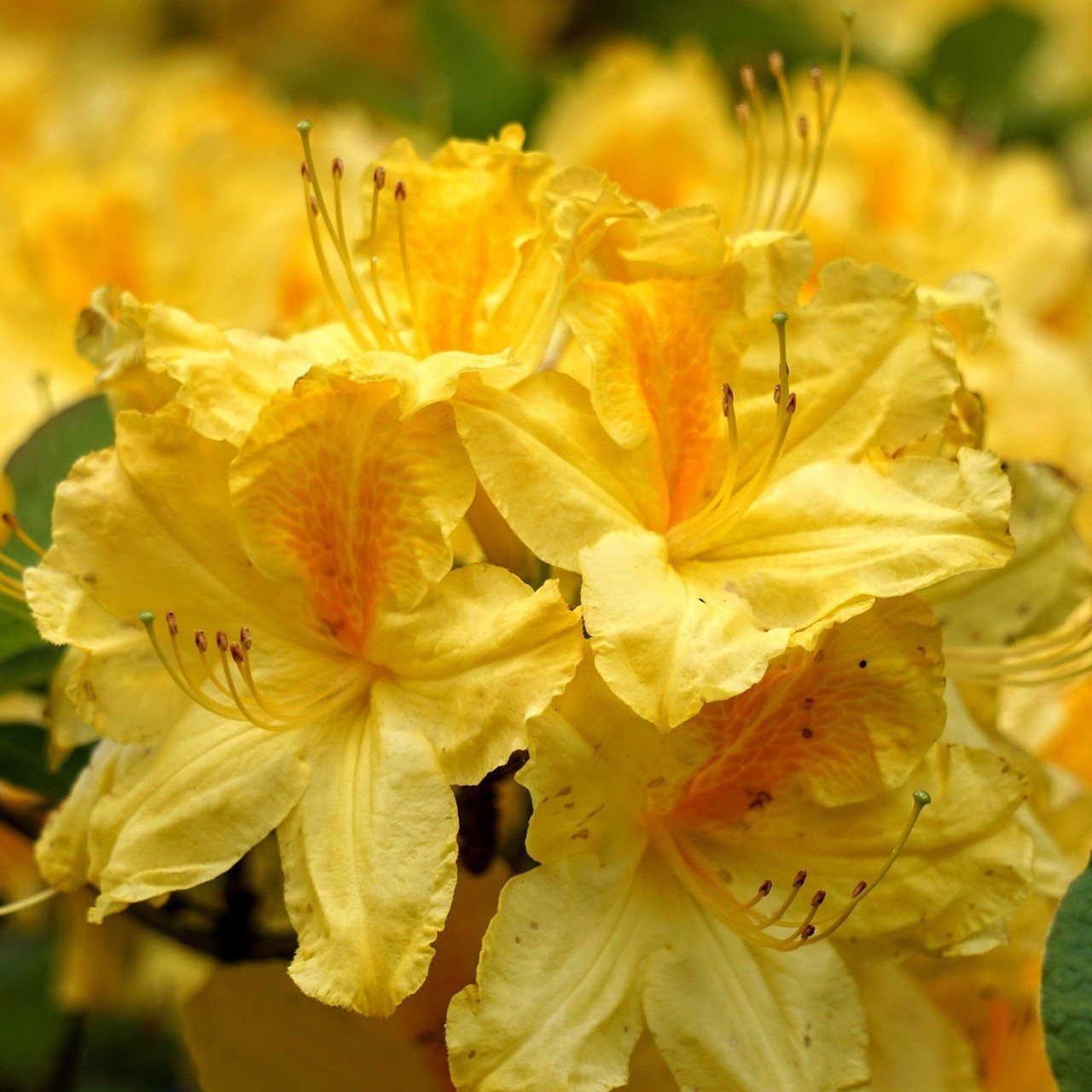

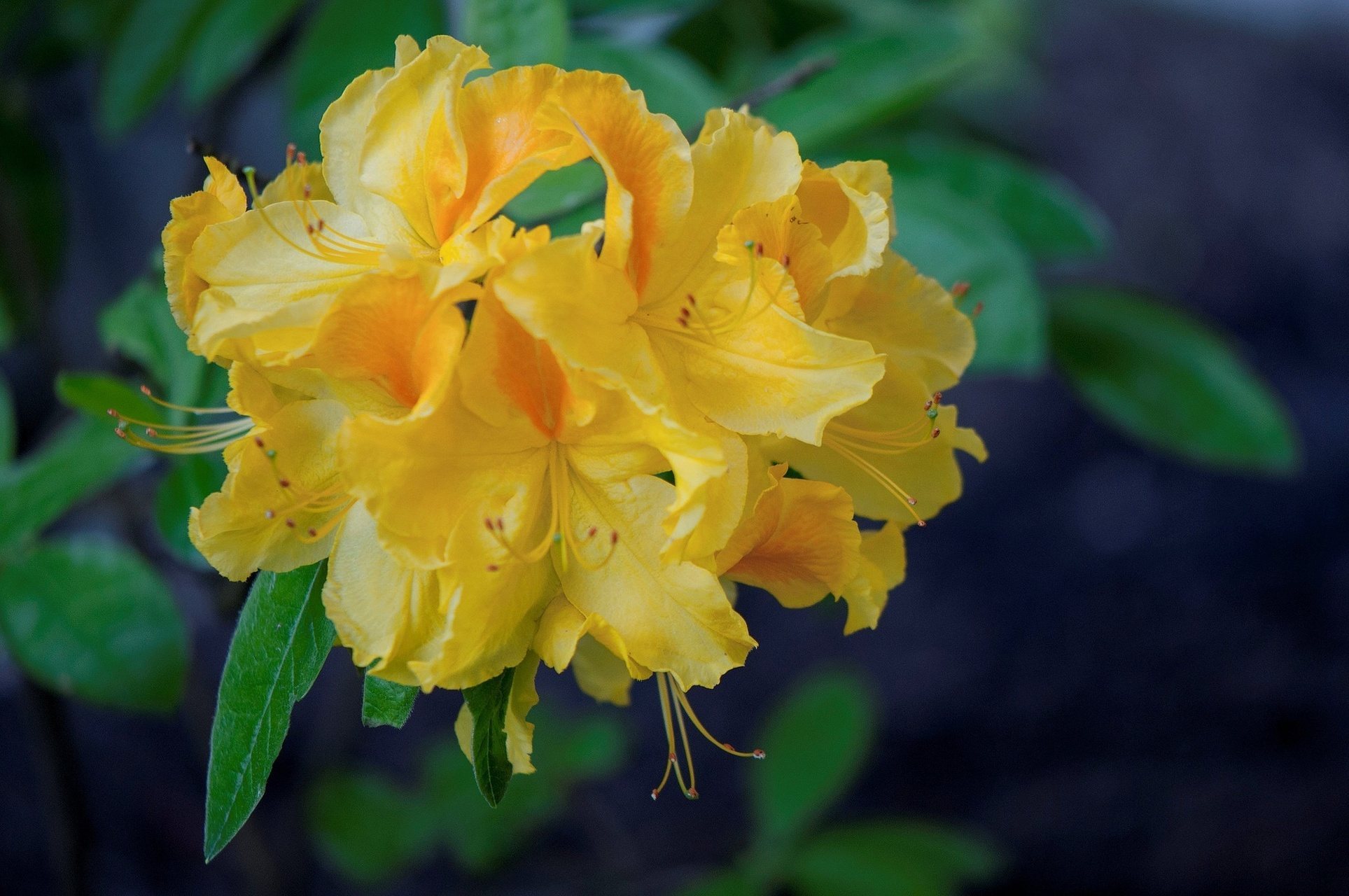





Blue
Varieties of rhododendron varieties with blue flowers:
- Goldflimmer;
- Blue Diamond;
- Impeditum.

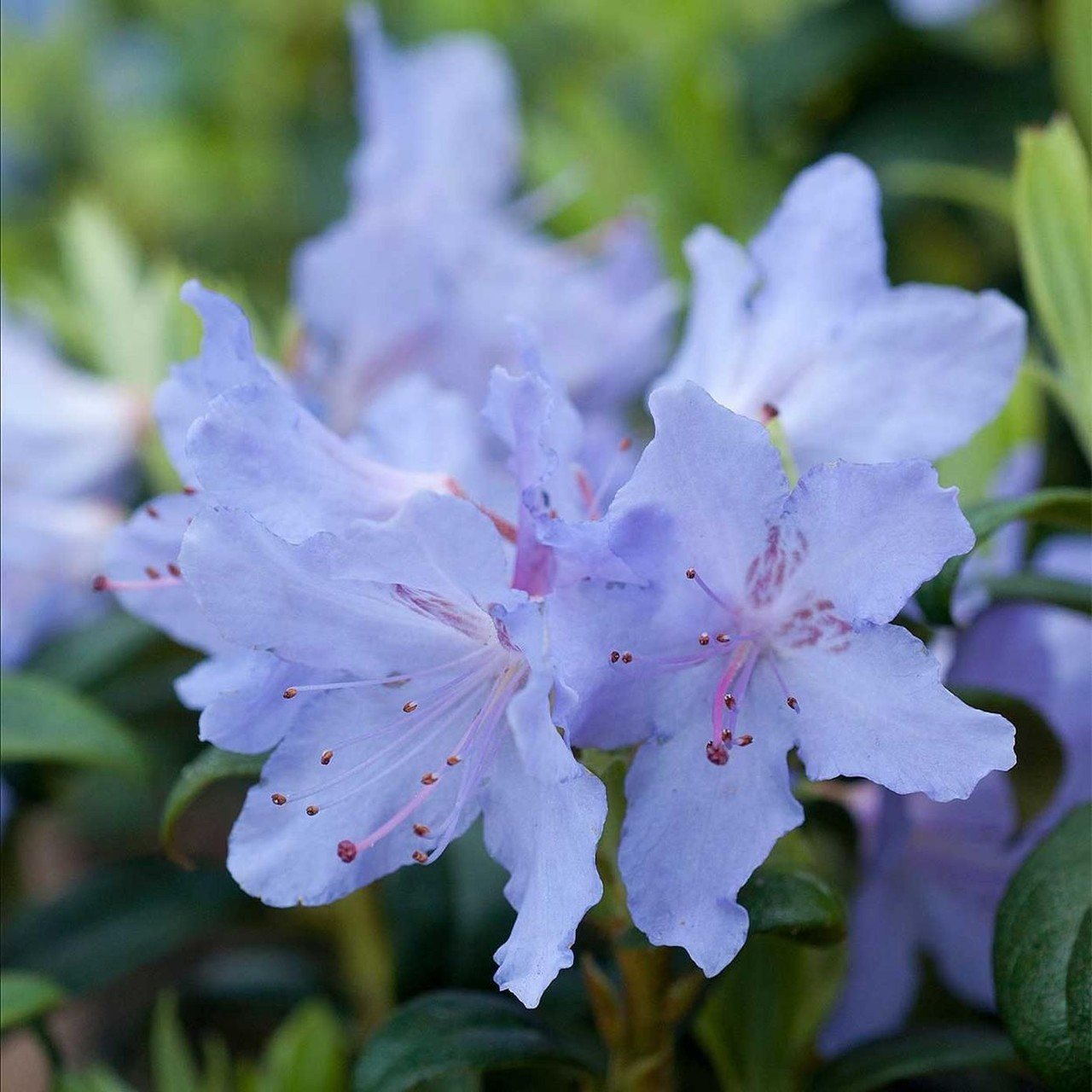
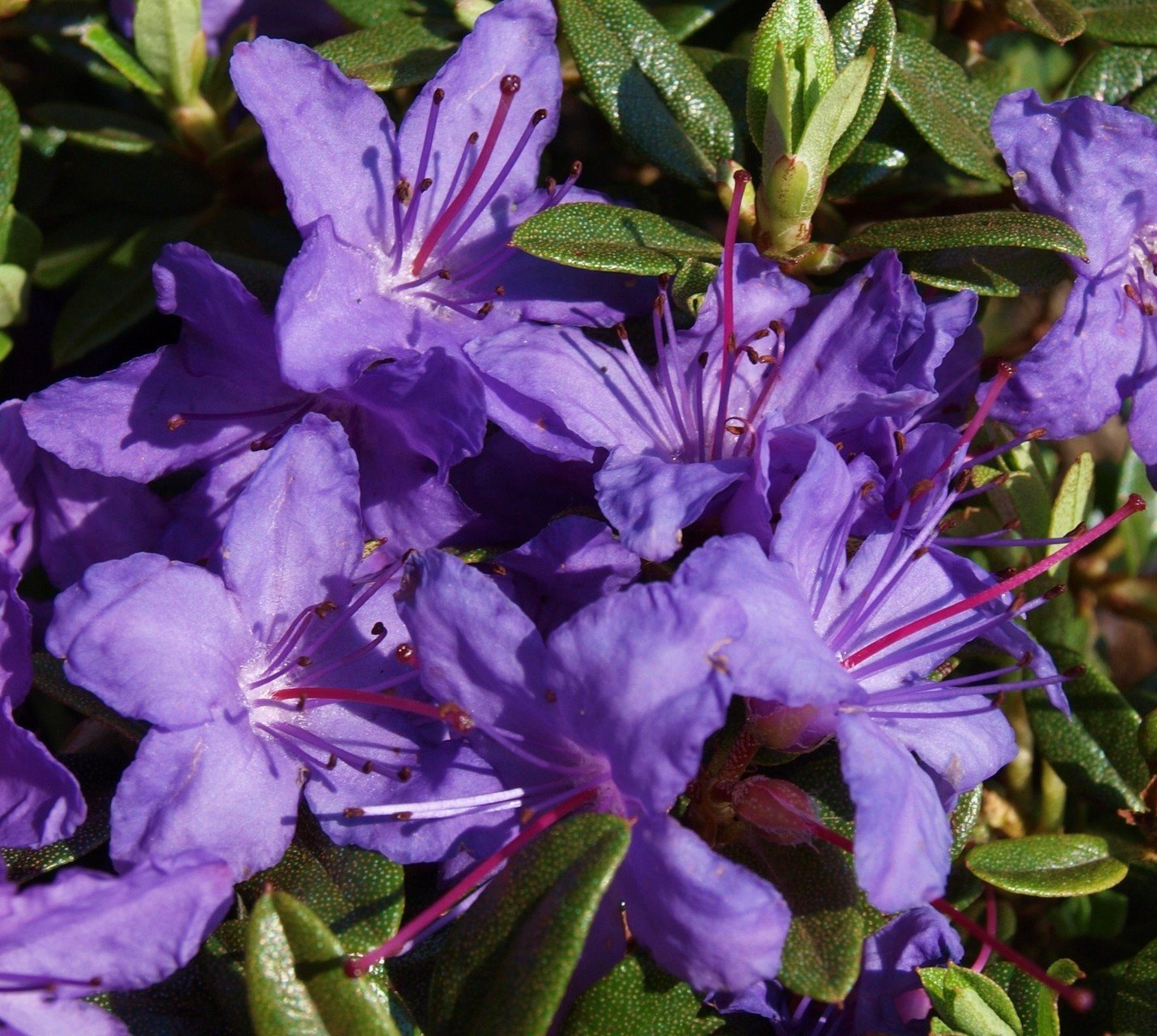
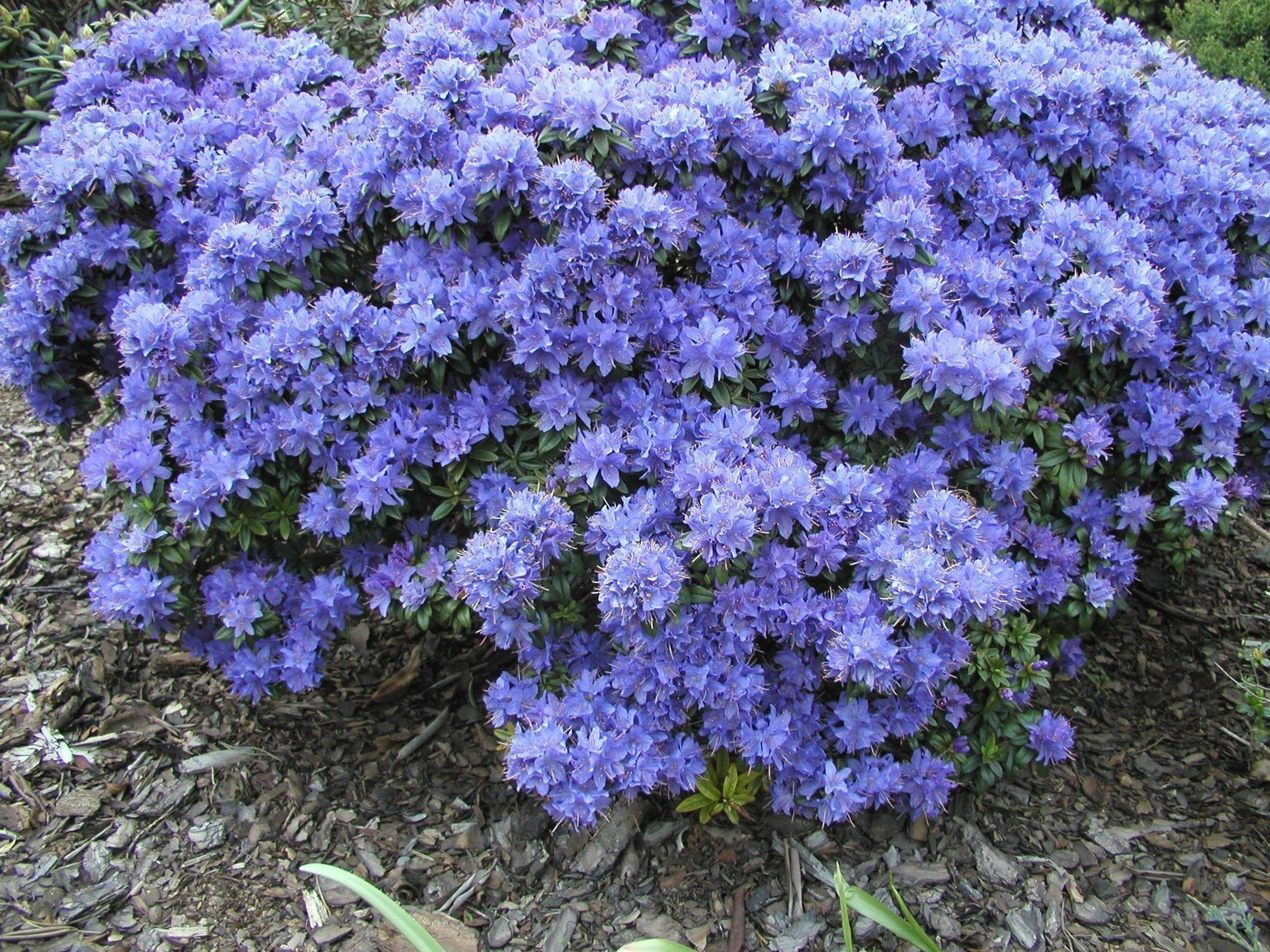
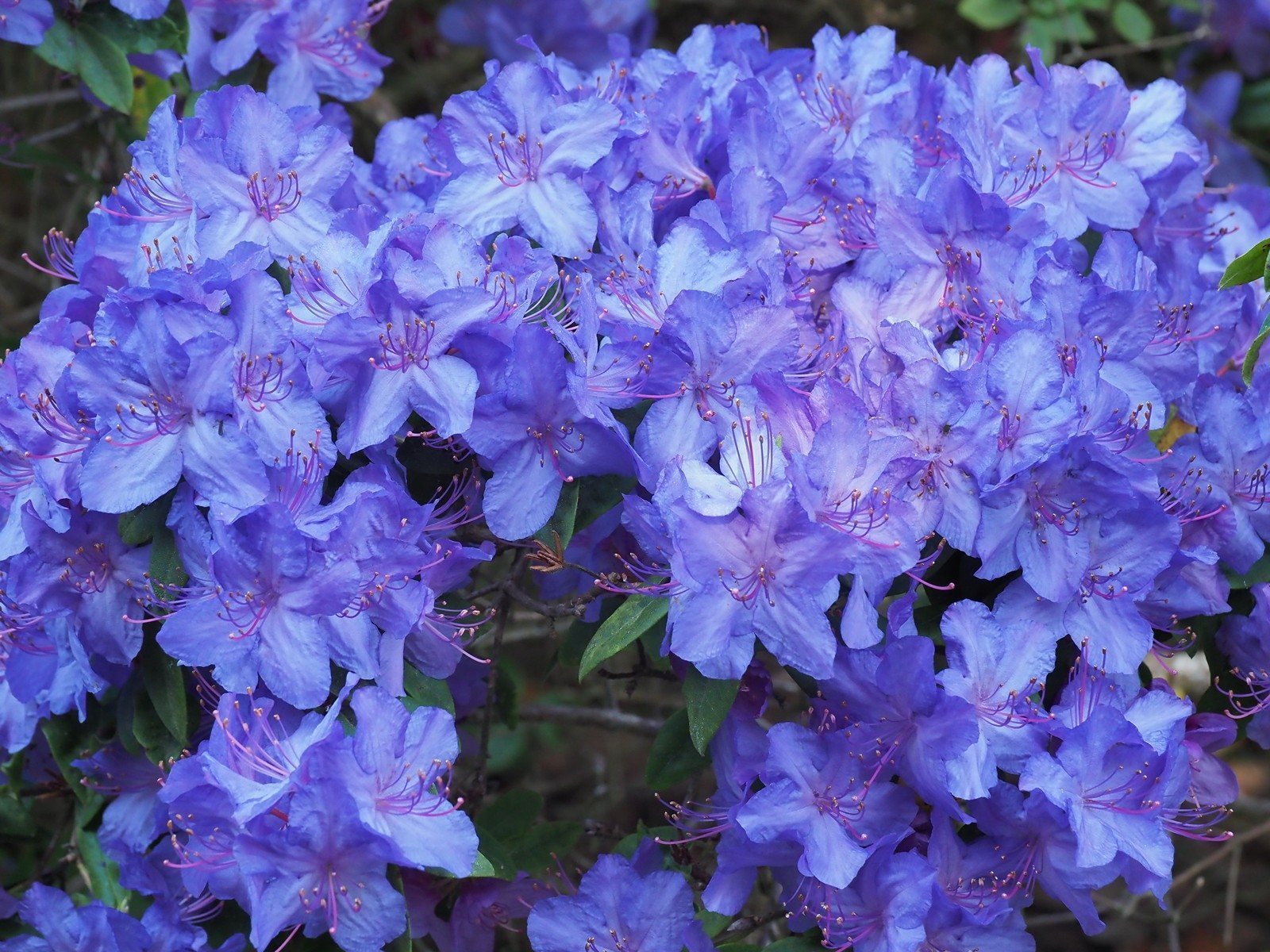





Lilac
The buds of these varieties of rhododendron are distinguished by soft lilac and deep purple shades:
- Katevbinsky;
- Grandiflorum;
- Dense;
- Pontic.
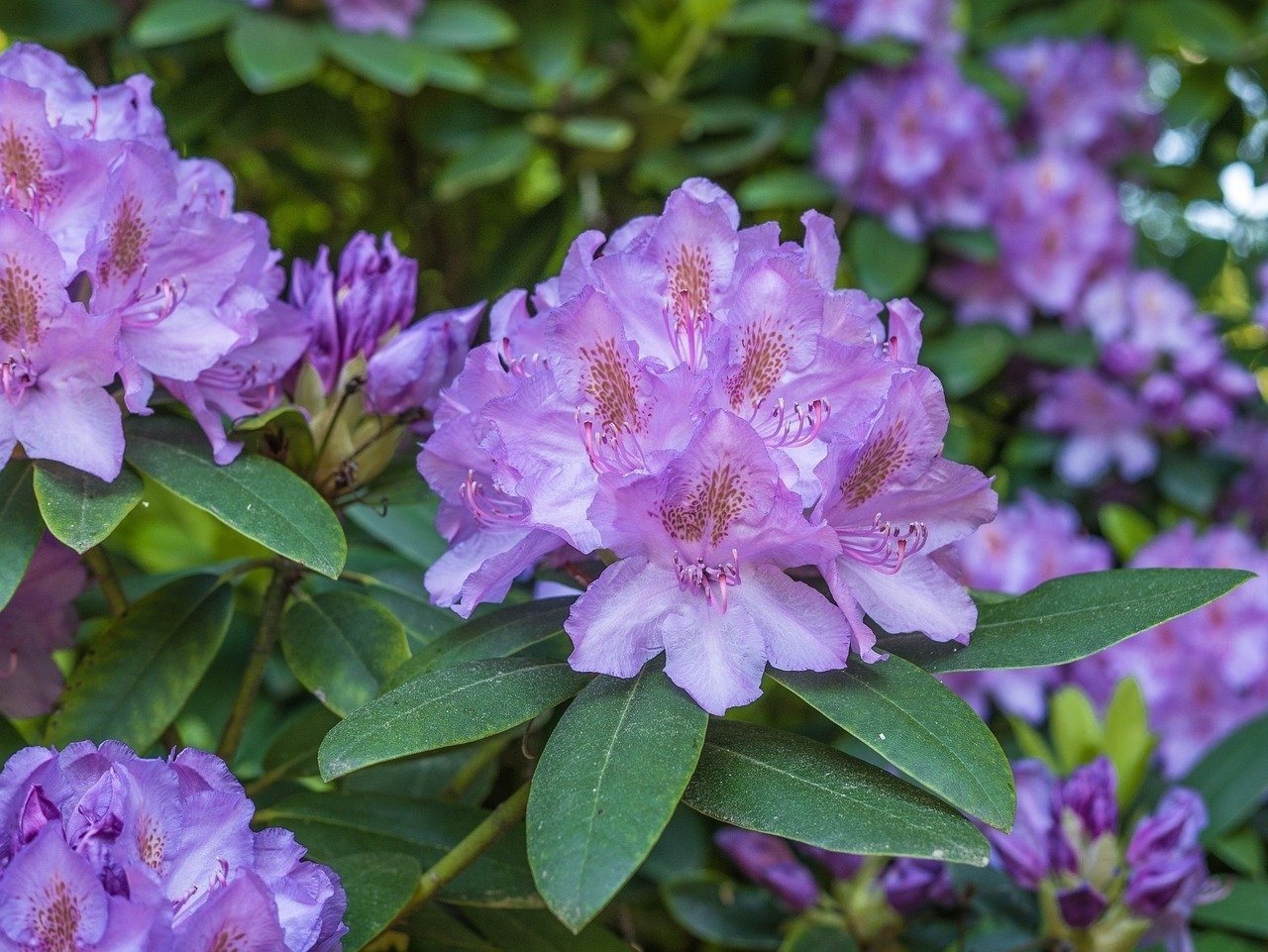
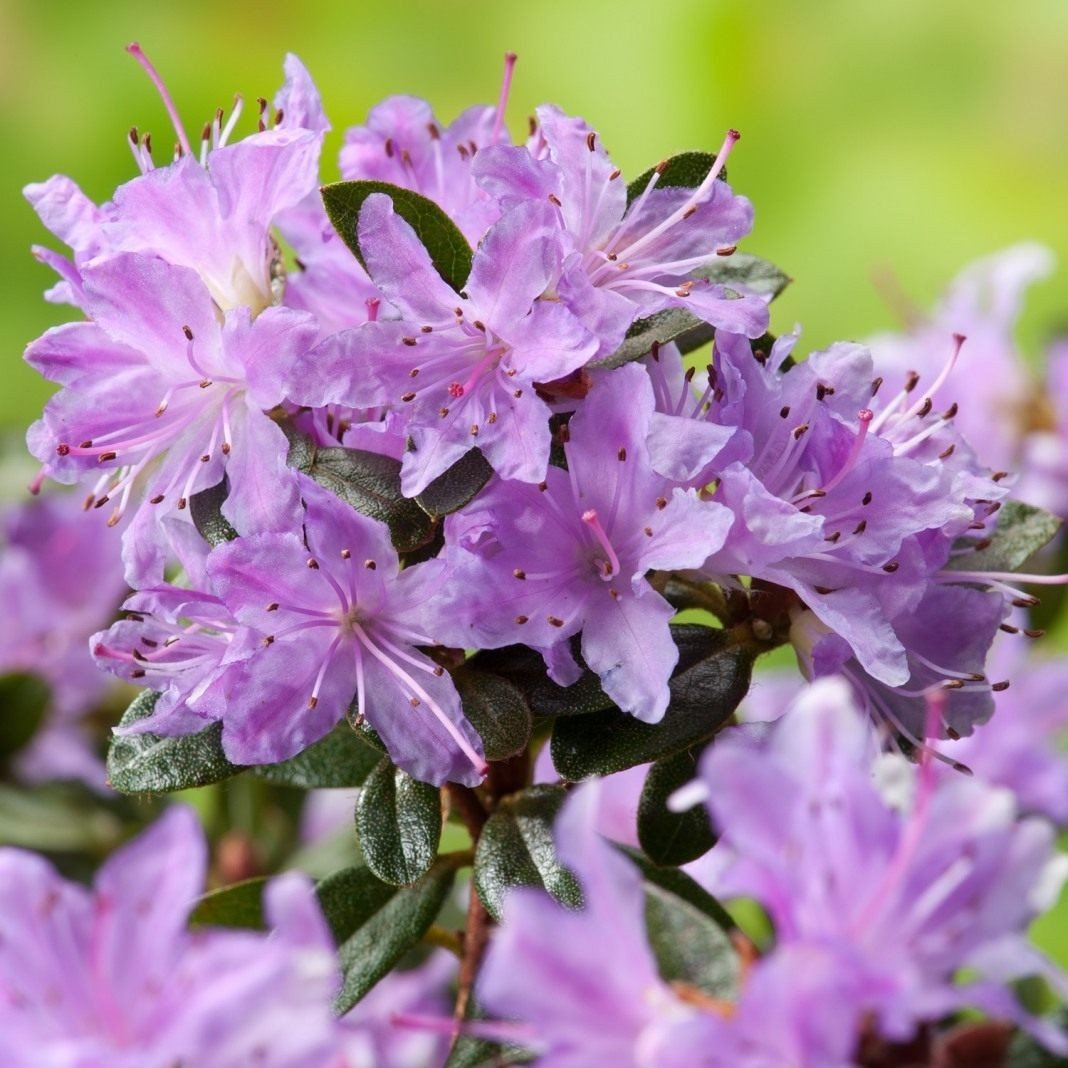
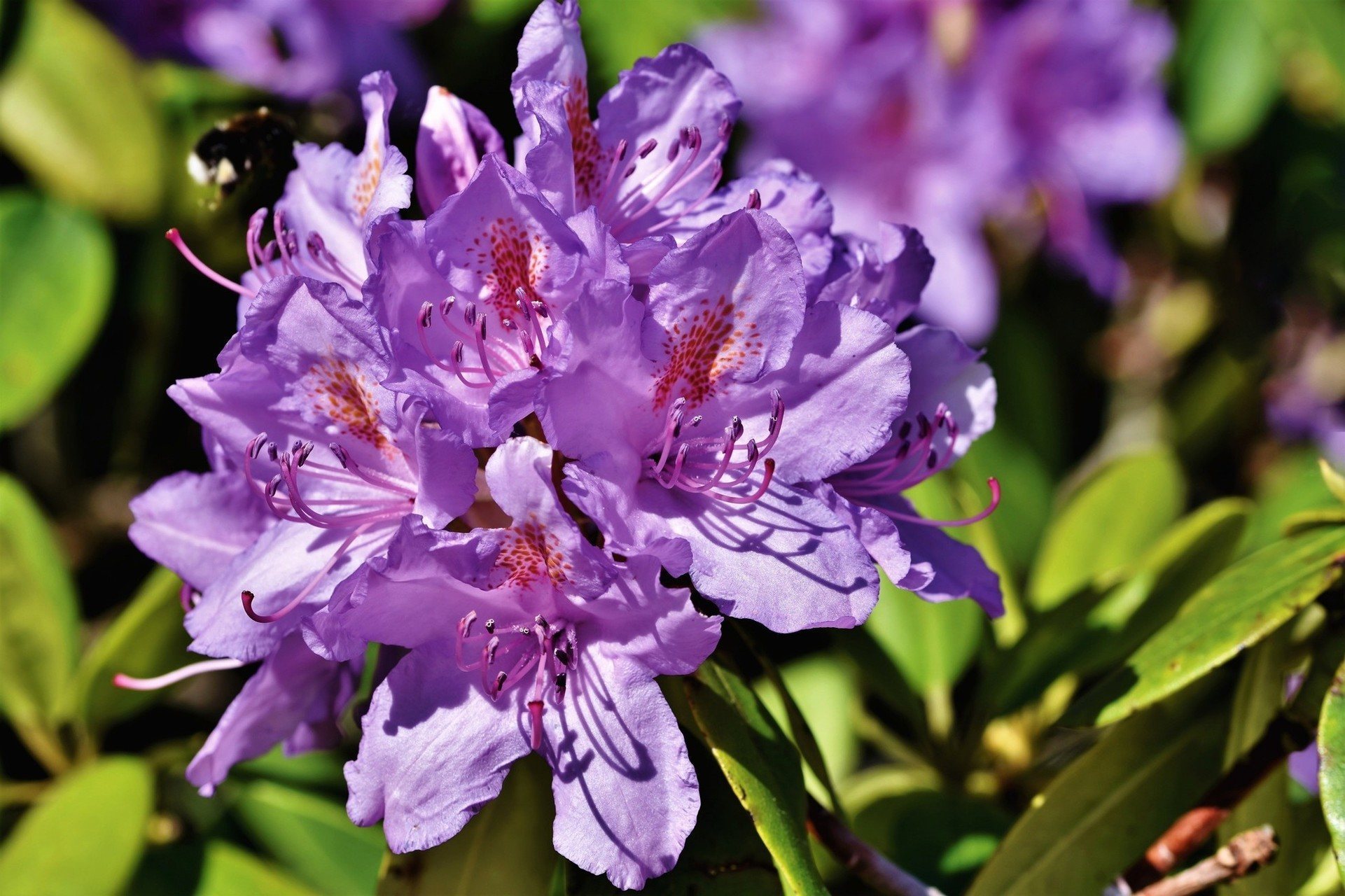

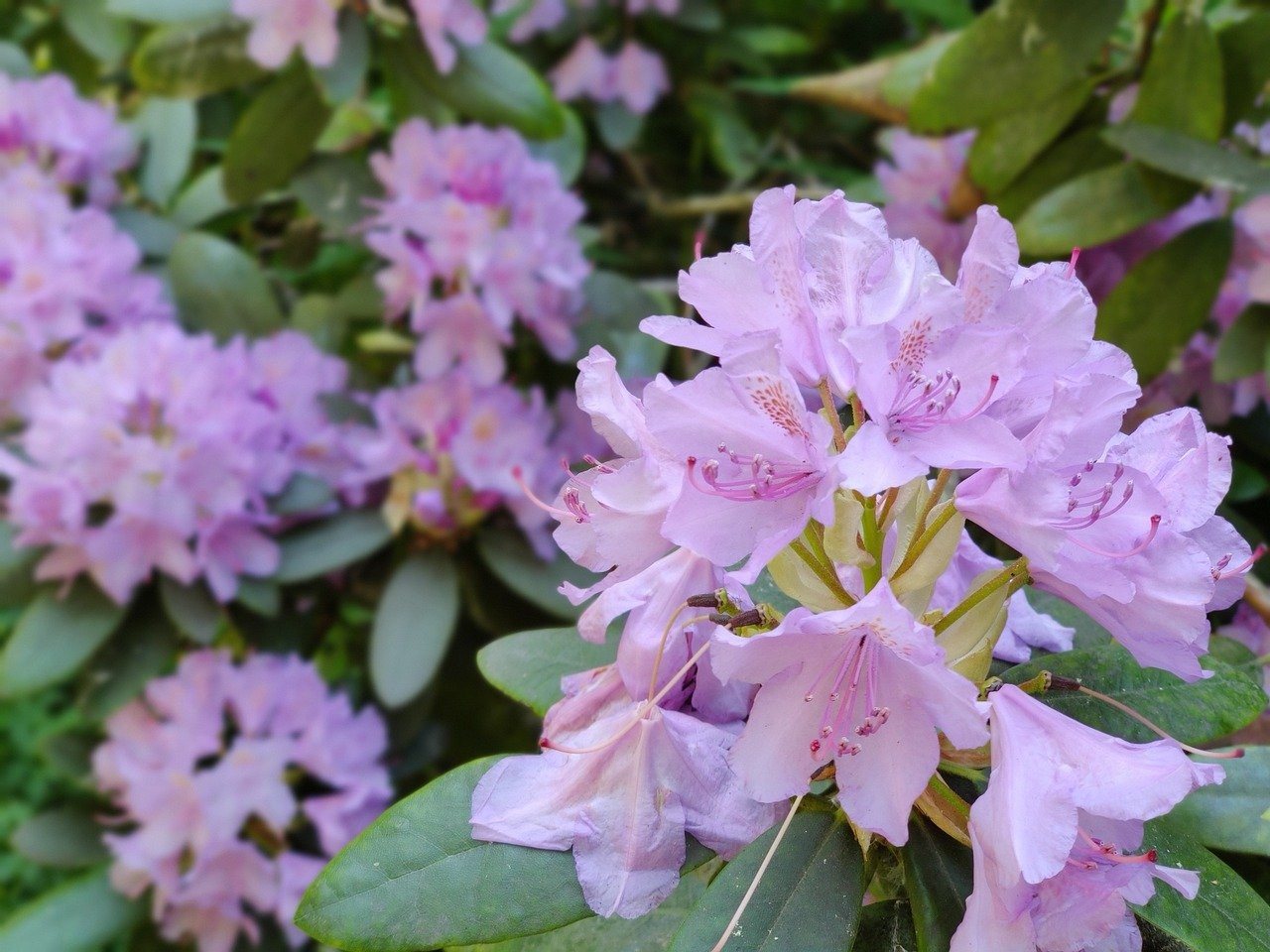





Frost-resistant varieties
Some varieties of rhododendron are ideally suited for planting in open ground. They are considered winter-hardy and can tolerate temperatures down to -32 C°. These include:
- Grandmother;
- Karens;
- English Roseum;
- Golden Lights;
- Mount St. Helens;
- Rosie Lights;
- White Lights;
- Roseum Elegance.
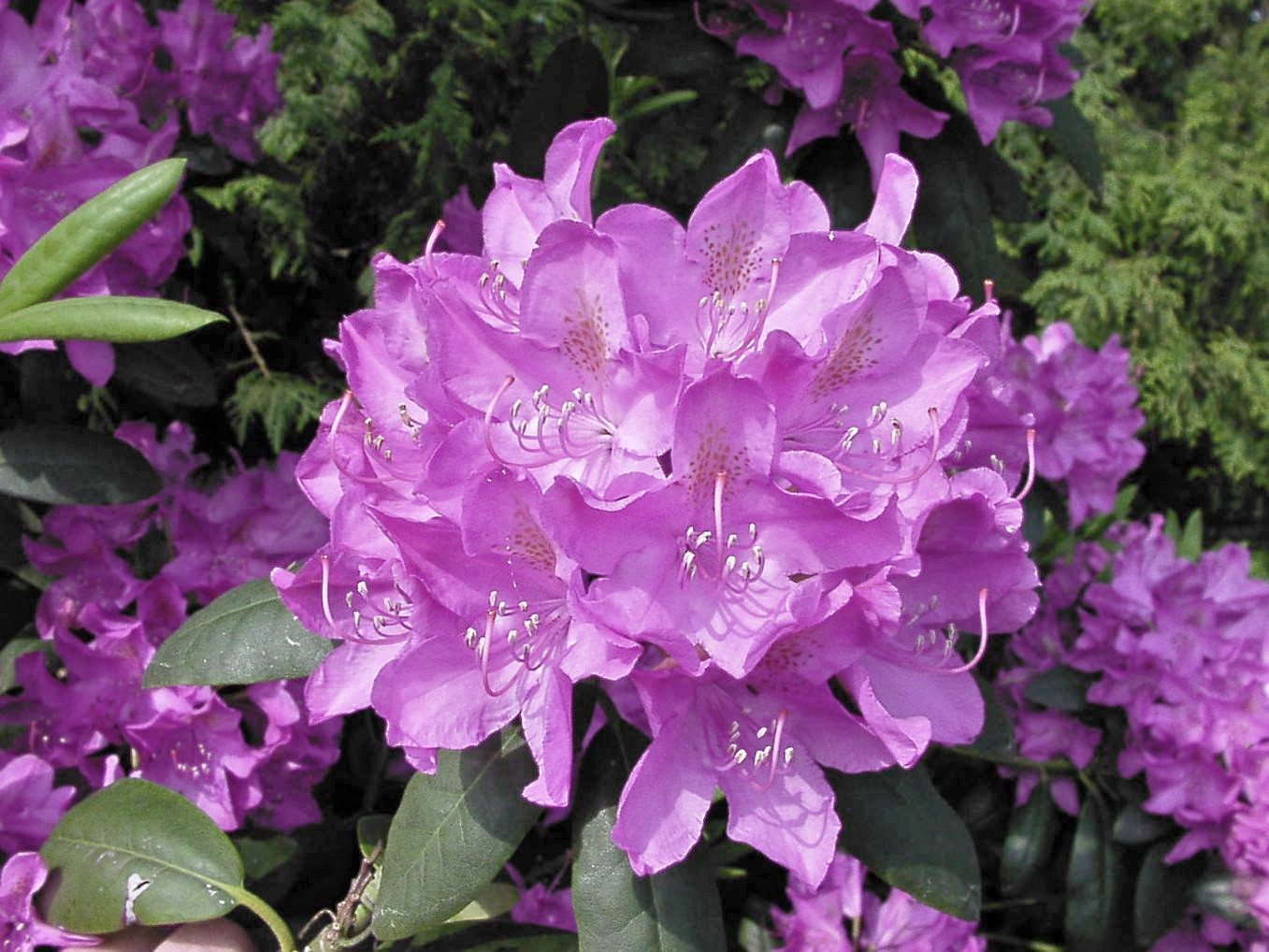
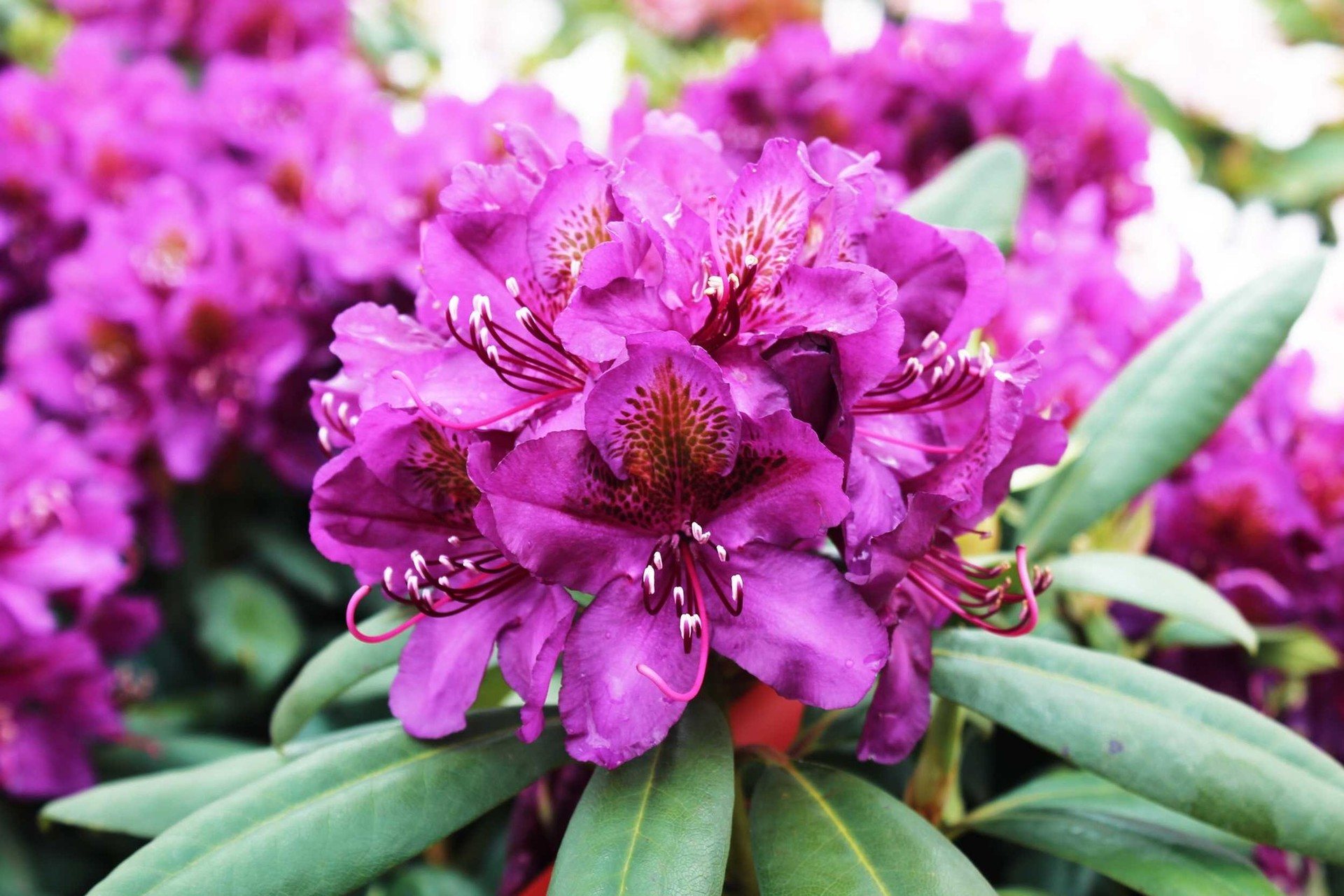
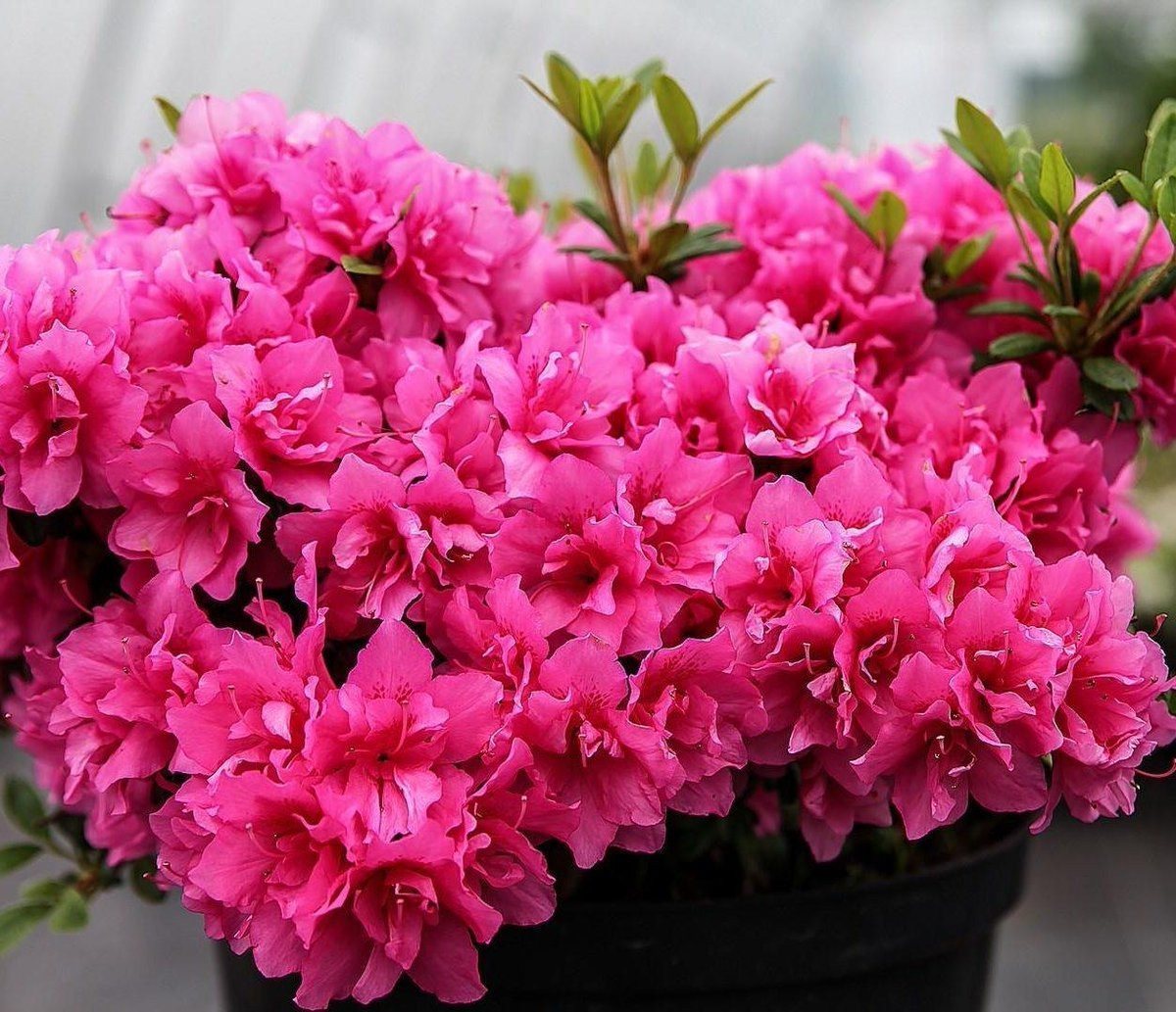
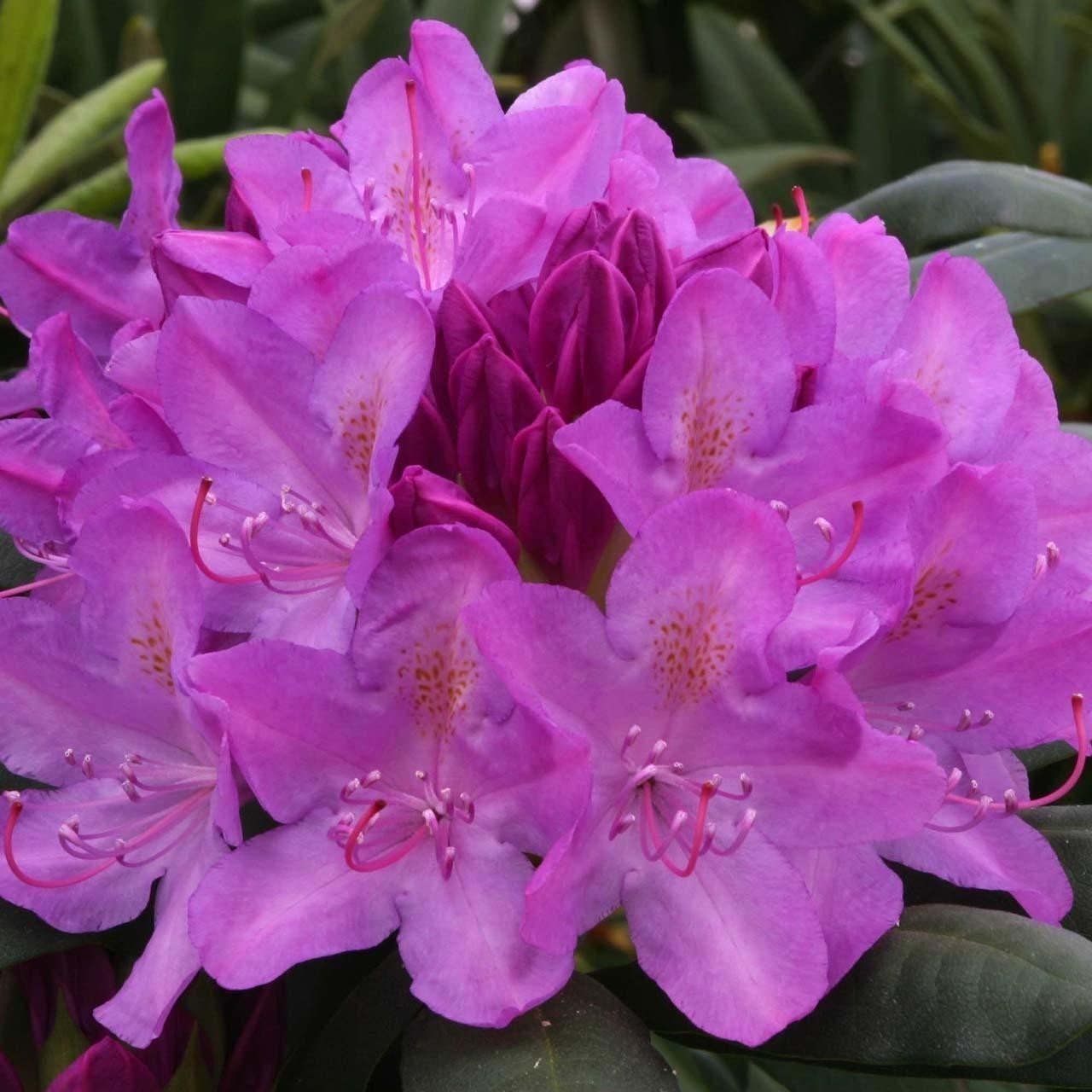






Growing home rhododendron
Rhododendron can be grown in an apartment or greenhouse in a private home. This will require the grower to follow some rules.
Temperature
Indoor rhododendrons are sensitive to temperatures. At a thermometer reading of 20 C° they will bloom for no more than 2 weeks, and at 12 C° - up to 2 months. The plant also does not like sudden changes in temperature - it can drop its buds. If the room is too hot, it is better to move the rhododendron to a balcony or to a room with air conditioning.
Humidity
Rhododendron does not tolerate dryness, which means the air in the room must be humidified. In spring and summer, the bush should be regularly sprayed with a spray bottle. Humidity levels in the room where the rhododendron lives should be at least 70%.
Choosing a pot, a place in the apartment
Rhododendron feels good near other indoor plants. It should not be placed on window sills above the radiator or near heating appliances. Also, you should not plant shrubs in areas that receive direct sunlight all day long.
To transplant a rhododendron, you will need a container that is larger in diameter than the previous pot. This is easy to check - the “old” home should fit freely into the new one. Be sure to ensure that the new container has a drainage hole at the bottom.
How to choose soil
Rhododendron prefers soil with high acidity and good air permeability. Moisture should not stagnate in it.
Due to the shrub's requirement for acidity, it is recommended to grow it in purchased soil. It is better to choose a ready-made substrate designed specifically for planting rhododendrons. This soil mixture contains peat, minerals, vermicompost and other components necessary for the plant.
To maintain the acidity level, rhododendron is periodically watered once every 2 months with an aspirin solution (1 tablet per glass of water).
You also need to ensure that the soil is loose, fibrous and nutritious.
If it is not possible to purchase ready-made soil, you can prepare the soil yourself. To do this, you need to mix peat chips, pine soil and coarse river sand in proportions 3:6:1.
Watering
It is important to ensure that the soil in which the rhododendron grows is moist, but not wet. For irrigation, tap water can be used, which must have settled. Since rhododendron prefers acidic soil, you can periodically add lemon juice (5-7 drops per 1 liter) or an aspirin tablet to the water when watering.
It is better to water the shrub in a tray - this way the rhododendron will take the right amount of moisture. After 30-40 minutes, the remaining liquid must be drained.You can also periodically use the immersion method, lowering the pot with the plant into a deep container of water for 5-7 minutes.
The plant should be watered with extreme caution in winter - it is better to do this exclusively in a tray.
Spraying
Rhododendron does not like dry air, so during hot periods the plant needs to be sprayed at least once a day; if temperatures are high, then 2-3 times a day. When the rhododendron blooms, spraying should be continued, avoiding moisture on the flowers. Before spraying, the water must be allowed to stand so that the chlorine evaporates and the lime settles.
Top dressing
Affects the flowering of rhododendron. It is best to buy fertilizers designed specifically for these plants. They must contain chlorine. In spring and summer, rhododendron is fed once a week, in autumn - once a month. When buds appear on the bush, it needs to be “treated” with fertilizers containing phosphorus and potassium.
Trimming
In order for the rhododendron to bloom profusely, it must be pruned twice a year. In spring, this is best done in May. Young shoots are pinched so that 4-5 leaves remain on them. To ensure that the crown has a uniform shape, the plant must be periodically turned and the shoots must be pinched along the way. To make a bush, the shoots are shortened by more than 10 cm in length. You need to maintain the desired shape of the plant by removing diseased and weakened branches.
To extend the flowering period, faded flowers are removed along with the seed boxes and peduncles. When the plant enters the dormant phase and completely fades, it is not so important to water and fertilize the rhododendron as to prune it. Pruning must be done before sending the plant for winter.At this time, you need to remove old and damaged shoots, and along with them young ones that do not fit into the overall composition.
Transfer
Rhododendron can be grown in a pot or container. Over time, the shrub will need to be transplanted into a new container.
Time and reasons
Rhododendron is replanted immediately after flowering, closer to summer. This is done so that the root system can develop freely and not get confused. The pot is replaced with a new, more spacious one, and the soil is replaced with more nutritious one.
How to replant
The rhododendron is transplanted into a new pot with the utmost care, trying not to damage the roots, especially young and thin ones. The transfer method is suitable for this. The plant is carefully transferred from one pot to another along with a lump of earth. When replanting a rhododendron, it is important not to deepen its root collar.
Features of transplantation after purchase
Store-bought rhododendron can be left in the soil where it originally grew. But this is provided that the soil meets the needs of the plant. Otherwise, it should be replanted. Small pebbles are poured into the bottom of the new pot (drainage). Soil is poured on top.
The rhododendron is watered while it is still in the old home. After an hour, the pot is turned over and the plant is removed along with the earthen lump. The bush is lowered into a new pot and wakes up with moistened soil to the level of the root collar. After planting, rhododendron needs to be watered.
Transportation in winter
If rhododendron needs to be transported from one place to another in cold weather, it is better to insulate it. Spunbond or thick cellophane are suitable for this purpose. In the latter case, it is important not to leave the rhododendron in the film for too long - it may ripen.Overheating is as dangerous for this plant as hypothermia.
How to form a bonsai
Rhododendrons with small flowers and leaves are an excellent material for forming miniature bushes in the Japanese style - bonsai.
It is better to prune in early summer or late spring. Young shoots are removed during periods when they are too hard. At the tip of each branch, 2-3 leaves should be left. To obtain the desired crown shape, you can also use wire wrapping or stretching with ropes.
Growing a garden rhododendron in open ground
If indoors the rhododendron is protected from weather conditions, then growing in open ground, it is exposed to environmental influences. Some factors must be taken into account in the process of transplanting and propagating the bush.
Planting rules
Features of planting a rhododendron depend on climatic conditions, soil characteristics and other factors.
Choosing a location and timing
The appearance of the plant and its health depend on the location where the rhododendron is grown. The site should be protected from strong winds and should not be exposed to direct sunlight. It is better to plant rhododendrons under spreading trees. These factors are especially important when growing young plants.
Most often, the plant is transplanted into open ground at the end of April - in mid-May, but this can also be done in the fall, 2-3 weeks before the onset of serious cold weather.
In Moscow and the Moscow region, rhododendrons are best planted in the first half of October, if the weather is not too cold. If the days are rainy, do not refuse to plant. Humidity and coolness will allow the plant to take root well in the soil.
If the bush is planned to be grown in the Urals, you should not wait for October.Overheating is also dangerous for this plant, as is hypothermia.
How to form a bonsai
- Rhododendrons with small flowers and leaves are an excellent material for forming miniature bushes in the Japanese style - bonsai.
- It is best to prune in early summer or late spring. Young shoots are removed when they become too hard. At the tip of each branch you need to leave 2-3 leaves. To obtain the desired crown shape, you can also use wire wrapping or stretching with ropes.
- Growing garden rhododendron in open ground
- If rhododendron is protected from weather conditions indoors, then growing in open ground, it is susceptible to environmental influences. Some factors need to be taken into account in the process of transplanting and propagating shrubs.
- Landing rules
- Features of planting rhododendron depend on climatic conditions, soil characteristics and other factors.
Selection of location and timing
Most often, the plant is moved into open ground at the end of April - mid-May, but this can also be done in the fall, 2-3 weeks before the onset of serious cold weather.
In Moscow and the Moscow region, it is better to plant rhododendrons in the first half of October, if the weather is not too cold. If the days turn out to be rainy, you should not refuse to plant. Humidity and coolness will allow the plant to take root well in the soil.
If you plan to grow the shrub in the Urals, you should not wait for October.Rhododendron is planted with the onset of September days with little precipitation. The climate of Siberia does not leave the gardener much time to prepare plants for autumn planting. Settling into the ground can begin with the arrival of September, without waiting for the onset of frost.
Soil for planting
The main component of soil for planting rhododendron is acidity. Its value should be 4.5 – 5.5 pH. If the acidity is not enough, the plant may refuse to bloom. And in soil with excessive acidity, rhododendron runs the risk of developing chlorosis. The acidity level can be checked using litmus paper. You can acidify the soil by adding commercial soil for rhododendrons or a solution of water with an aspirin tablet.
Landing pattern and distance
- Instructions for planting rhododendron in open ground:
- The plant needs to be watered abundantly.
- Prepare a hole for the bush. It is important to focus on the size of the rhododendron roots. The prepared hole should be twice the size of the root system.
Prepare the soil. It is formed from equal parts of peat, pine needles and manure, leaf humus, garden soil and heather soil.
Fill the hole with the resulting earthen mixture. Lower the bush vertically into the hole and straighten the roots.
Cover the roots with soil. This must be done carefully - there should be no holes or empty spaces in the soil.
Mulch the soil with peat chips.
The distance between seedlings depends on the diameter of the crowns of the bushes. If several tall specimens take root at the same time, the interval between them should be at least 2 m. For medium-sized varieties, this distance is reduced to 1.5 m, for low-growing varieties - to 70 cm. The interval between the seedling and the nearest tree is 2-3 m.At least 7 m away from the dwelling or fence.
Teppeki insecticide: instructions for use to protect plants from pests
Rules of care
In order for rhododendron to please with its healthy appearance and abundant flowering, you need to comply with certain conditions for caring for it.
- Watering
- Rhododendron tolerates both excessive moisture and drought equally poorly. It is better to water this plant with rain or filtered soft water. Water hardness can be adjusted by adding 2 handfuls of peat to the water. The mixture is infused for a day, after which the plant is watered with it during the period when the leaves become faded and less elastic. It is important to ensure that the soil does not dry out. Rhododendron is watered 1-2 times a week, more often in summer.
- Top dressing
- Rhododendron growing in open ground needs nutrients. On average, the plant is fertilized several times a year:
During the period of shoot growth. You can flavor the bush with a mixture of ammonium sulfate and magnesium sulfate (50 g of each substance per 1 m²).
During the period of bud formation. Azophoska diluted with phosphorus, potassium and nitrogen in a ratio of 11:11:22 is added to the soil.
After flowering ends. A mixture of potassium sulfate and superphosphate is used as a fertilizer (20 g of each substance per 1 m²).
Rotted cow manure diluted in water in a ratio of 1:15 can be used as fertilizer. It needs to be left for 2-3 days. Before applying fertilizer, the bush is watered abundantly.
Mulching
This procedure helps solve two problems at once. Mulching makes the soil under the bushes moist. The cones, pine needles and peat used for this operation help maintain optimal acidity in the soil.In winter, mulching protects the thin roots of plants from freezing.
The soil around the rhododendron is mulched with a layer of fresh sawdust, peat or conifer bark. The layer thickness should be 10 cm for tall bushes and 4-5 cm for small bushes.
Hilling
Hilling up protects the rhododendron root system from freezing. For this procedure, a mound of peat and pine bark is used. The latter prevents moisture from evaporating from the soil too quickly. The height of the embankment should not be less than 20 cm.
- Trimming
- During the year, rhododendron undergoes several types of pruning:
- Sanitary. Held in early spring. It is necessary to remove broken and dead branches. The shoots are cut below the break point.
- Starting. This is done if, when purchasing a bush, it turns out that the crown is not very beautifully and evenly developed. In this case, pruning is done to give the plant a symmetrical shape.
- Formative. It is carried out in early spring or before the plant begins to flower. The process removes all bare and poorly placed branches.
- Rejuvenating. Damaged and dried shoots of old plants more than 4 cm thick are removed. Young shoots do not need intensive pruning.
- Autumn pruning of rhododendron is a kind of rejuvenation of the bush; it is not carried out to form a crown. It is in the fall that outdated shoots that need to be updated are removed. They are cut off at the root so that full-fledged new specimens appear by spring. But it is important not to overdo it with pruning.
- Sanitary pruning is also carried out in the fall. This procedure is carried out before the onset of frost, 2 weeks after applying fertilizers.
- After flowering, fresh brushes need to be broken off or trimmed without catching the young shoots.
- What to do after flowering
The main task of this period is to continue caring for the plant according to plan. Water regularly - rhododendron does not like drought. Feed the soil, mulch it. In this way, the faded plant prepares for the onset of cold weather and a period of dormancy.
Replanting in the fall to a new location
“Moving” a rhododendron to a new place is allowed only when the plant has finished flowering. You should not disturb it during the flowering period - at this moment the formation of buds occurs. Young plants need to be replanted every year, adults - once every 2-3 years.
If it was not possible to replant the plant in the summer, this can be done in the fall, in September-October. At a later date, the flowering process established for the next year can be disrupted. It is important to arrive in time for the first frost.
The transplant procedure consists of the following steps:
Remove the rhododendron from the old soil.
Divide the perennial bush into smaller parts and plant them separately.
Dip the rhododendron together with the earthen lump into clean water (additionally, biostimulants are added).
Make cuts on the top of the coma (0.5 cm each) - this way the flower will accumulate enough moisture.
Leave the bush for a while in a cool, dry place, wait for excess moisture to drain from the roots.
If the soil on the site is clayey, the bottom of the hole at a depth of 15 cm must first be lined with expanded clay, crushed stone or broken brick.
The depth of the hole is 40 cm, width - 60 cm.
Fill the hole with a substrate of loam and peat.
- Form a depression suitable in size to the seedling's earthen ball.
- Place the seedling in the hole and pour the soil mixture on top.
- The root collar of the planted plant should not be buried too deeply.Otherwise, the roots may begin to rot.
Preparing for winter
Although many varieties of rhododendron are considered frost-resistant and tolerate frost well, it is better to additionally cover the bushes for the wintering period. The leaves of the plant are afraid not so much of frost as of the rays of the winter sun.
To ensure that the flower stalks are preserved and not damaged under the weight of snow, it is better to build a kind of frame of wooden slats above the bushes. The shape of such a building should resemble a cone. From above, the wintering room for rhododendron is wrapped in spunbond. It is important not to press the buds on the bush. On such a sloping roof, snow will not linger, which means it will not put pressure on the plants. The frame is dismantled no earlier than April, when the earth has completely warmed up.
Spring and autumn processing
- Early spring is considered a rather difficult period for rhododendrons. Sudden temperature changes and night frosts are destructive for some varieties. The emerging bright sun with its rays can also be dangerous for the leaves.
- With the onset of the first warm days, you need to help the soil thaw quickly so that the roots begin to work. To do this, you need to rake away the mulch - it prevents the soil from warming up. Also, the soil around the bush is watered with hot water, creating a steaming effect. Immediately after waking up, the plant is fertilized. Before the flowering period, it is enough to feed the bush once.
- In autumn, rhododendron already lays buds for next year - growth and flower ones. It is easy to distinguish them - the growth buds are small and sharp, and the flower buds are round and large.The task of the gardener is to preserve the buds during the winter. Therefore, rhododendrons, especially young ones, need to be prepared for winter. It is better if the plant goes into hibernation saturated with moisture. But if the autumn in the region is rainy and wet, there is no need for frequent watering. In the warm autumn months, watering is a must.
- Also, the rhododendron must be mulched to protect the roots from frost. It is important that the mulch does not get on the neck and trunks.
- It is better to tie up spreading rhododendrons so as not to break the branches during heavy snowfall. Tall specimens can be tied to a support.
- Reproduction
- Rhododendron can be propagated in several ways:
- cuttings;
- layering;
- seeds.
Each of the methods has its own characteristics.
Cuttings
This method is considered optimal for propagating rhododendron. Cuttings are prepared in early summer. For this process, it is better to choose one-year-old semi-lignified specimens. Shoots 8-12 cm long, strong, developed - an excellent choice.
Tomato variety Sanka: description and characteristics, reviews and photos
- Stages of cuttings:
- Cut the selected material at an angle of 45 °.
- Remove the lower leaves from the cut branches, leave only 1-2 pieces at the top.
- Before planting, the cut specimens are treated with a root formation stimulator. To do this, they are placed in a solution of Kornevin or Zircon.
- In the process of propagation by cuttings, rhododendron can be planted in a pot. It is more difficult to control the development of seedlings in open ground.
Acidic soil is used for planting (you can buy it in a shopping center or prepare it yourself by mixing peat, sand and coniferous soil in equal parts).
Fill the prepared pots or containers with a substrate.
Place the cuttings in containers one by one, placing them at an angle of 30°. If group planting is planned, the distance between the specimens should be at least 5 cm.
The soil is compacted, watered a little with settled water.
The cuttings are placed in a greenhouse for 2-3 months for rooting. All this time they are kept at a temperature of 25-30 C°, sufficient air and soil humidity. It is important to create artificial lighting for the cuttings for 12-16 hours a day.
- The cuttings that have managed to root can be grown in containers placed in the garden.
- The seedlings are transplanted into the ground after 2-3 years.
- By layering
- It is best to propagate rhododendron by this method in the spring. Several healthy branches are used for rooting.
- Stages of propagation by layering:
- In places where it is planned to make a layering, a longitudinal cut of the wood is made. A match needs to be placed in this area.
- Dig a hole measuring 15x15 cm.
- Bend the branch to the ground so that the cut is in the hole, fix it with staples.
- Fill the hole with acidic soil, mulch the surface.
- Tie the top of the shoot to a peg.
- Caring for the layers is easy - it is enough to maintain soil moisture. The root system of the new plant develops slowly but surely in the first season. The bush can be transplanted only next year.
- Seeds
Although this method of propagation is not difficult, it is not very popular among gardeners. Difficulties are encountered at the stage of growing young plants. Also, rhododendrons bred as a result of propagation by seeds can bloom only in the 5-10th year. It is better to propagate the plant in this way in the spring or at the end of winter.
Any convenient pot or container with drainage holes in the bottom is suitable for planting. The process is not fast, so it is better to place the seeds in one large container. The soil should be breathable and loose.
Stages of rhododendron propagation by seeds:
Pour the prepared soil into a container, level it, do not water it.
Place the seeds at a distance of 1.5 cm from each other. Water the crops.
Cover with plastic wrap and place in a bright, warm place.
The first shoots are observed after 1-1.5 months when maintaining the required level of soil and air humidity.
As soon as the first shoots appear, the film must be removed and the container moved to a cool place with a temperature of 8-12 C°.
The seedlings are watered carefully through a tray. Rhododendrons prefer diffused light, so it is better to illuminate them artificially.
- When the seedlings get stronger, they can be gradually accustomed to fresh air, and in the summer they can be taken out into the garden.
- In July, seedlings are planted in larger containers at a distance of 2 cm from each other.
- With the onset of cold weather, the seedlings are returned indoors and grown at a temperature of 10 -16 C° under artificial lighting for 15-17 hours.
- The seedlings are replanted and at the end of winter, the specimens should be planted at a distance of 5 cm from each other. They are carefully watered with settled water, preventing the soil from drying out.
In March you can apply the first fertilizing.
In the second year, seedlings are grown in the garden during the warm season and returned to a closed room with the onset of cold weather. Fertilizer is applied twice during the growing season.
The seedlings are ready for planting in the ground in the third year of life.
Diseases
Rhododendron bushes can suffer from infectious and fungal diseases.If they are detected in time and the symptoms are eliminated, you can save the plant and minimize the negative consequences.
Chlorosis
The main symptoms of this disease are pale spots on the leaves. Gradually, the disease spreads to branches, buds and shoots. The shrub becomes vulnerable to sunlight.
The main cause of chlorosis is a lack of nutrients and soil density.
Chlorosis does not require specific treatment. It is enough to correct the acidity of the soil by adding fertilizers that contain iron and magnesium.
Late blight
The result of waterlogging of rhododendron roots. This can happen for several reasons:
insufficient drainage layer in the pot;
excessive watering;
heavy clay soil that does not allow moisture to pass through;
infection of cuttings in the nursery.
Rhododendron late blight manifests itself in burgundy or crimson spots on the leaves. Gradually the crown becomes drooping and withered. Shoots and stems take on a purple hue. If the bush is not treated, its growth slows down and flowering stops.
The main treatment for late blight is to stop watering and let the soil dry well. The entire bush and the space at the roots should be sprayed with fungicides: Quadris, Bordeaux mixture or Fundazol. If there is no improvement in the condition within 2 weeks, the plant must be disinfected again.
To prevent late blight, you need to monitor soil moisture, remove weeds and low-growing side shoots.
Rust
Small-leaved rhododendrons are especially susceptible to this disease. Most often, rust is observed in the fall - yellow, reddish or brown spots appear on the leaves. If the plant is not cured, reddish-brown spores will appear in this place in the spring.
Rust affects only the crown, buds and roots are not affected. At the first signs of damage, rhododendron leaves should be torn off and burned to prevent the spread of the disease. The plant is treated with Bordeaux mixture or other preparations containing copper.
A fungal disease transmitted by air from an infected plant to a healthy one. Gray rot affects dried shoots, leaves and buds, and gradually spreads to other living parts.
The main symptom of infection is a brown or brown coating on the leaves. Gradually, the leaf plate begins to crack, dry out, and a fluffy gray coating is noticeable on the affected areas.
Gray rot often overtakes rhododendron after winter. Treatment consists of removing damaged buds, leaves and ovaries. The crown must be sprayed with Fundazol every 2-3 weeks.
Pests
Rhododendron can also get sick due to pest damage to parts of the bush. If they are not detected and neutralized in time, the plant may stop blooming and even die.
Aphid
This time the insect appears on rhododendron in the first half of April. Aphids lay eggs on plants and transmit various viruses. As a result, the buds are damaged, which may subsequently fail to open, turn yellow and fall off.
When first monitoring aphid accumulations, rhododendron should be sprayed with Karbofos, Actellik or Fitoverm. The dosage of a specific product and processing methods are indicated on the packaging.
Rhododendron bug
One of the most dangerous and common pests of rhododendron. The fact that the plant was infected by this particular bug is evidenced by dark dots on the underside of the leaf.This is how the pests pierce the leaves and deposit excrement on them. The affected leaves gradually turn yellow, and black spots appear in their lower parts.
Spraying is used to control the pest. The chemicals Kinmiks (2.5 ml per 10 liters of water) or Karbofos (90 g per 10 liters of water) are used for it. The resulting solution is sprayed on the leaves 2 times a month with an interval of 2 weeks.
Spider mite
This pest actively reproduces in dry, hot weather. It is impossible to track even an adult individual - these ticks are so small. Symptoms of their appearance are a thin cobweb that envelops the underside of the leaves, as well as the buds and buds.
Affected plants need to be treated with Fufanon, Karbofos or Fitoverm. When preparing the solution, it is important to adhere to the dosage specified in the instructions.
Tomato variety Mongolian dwarf: description and characteristics, reviews and photos
Mealybug
Another pest that affects all succulent parts of the rhododendron - leaves, flowers and shoots. As a result, these places dry out and lose their symmetry.
The mealybug covers the plant with dark, cotton-like secretions. Damaged parts stop growing and blooming, and the rhododendron becomes weak.
The pest must be controlled by spraying the affected plant. For this purpose, the drugs Actellik (2 ml per 2 liters of water), Confidor (1 ml per 2.5 liters of water) or Aktara (1 g per 1.5 liters of water) are used. Treatment is carried out 2-3 times a month.
Whitefly
Most often it affects large-leaved rhododendrons. This small white moth produces secretions that lead to subsequent fungal infections in the plant.To combat whitefly, you need to treat the underside of the leaves with a nicotine solution or Alatarm and Fitoverm.
To prevent the pest from appearing, you need to promptly pick off and destroy damaged leaves, having previously treated them with nicotine dust in the summer.
Scale insects
Small brownish or yellowish insects that are covered with a shield at a late stage of their development. They are easy to distinguish on the surface of the leaves, along the veins. Leaves affected by the scale insect become brown and sticky. The pest sucks the vital juices out of the plant, the rhododendron weakens, its parts gradually die off.
You can combat the scale insect by spraying the plant with a strong infusion of green potassium soap diluted in a small amount of water.
Greenhouse thrips
They like to feast not only on rhododendrons, but also on other plants. A small insect of brown or light yellow color. It appears on the leaves of rhododendron after wintering, begins to lay eggs on the leaves and feed on the juices of the plant. Thrips are carriers of viruses. Rhododendrons damaged by them do not open their buds, they turn yellow and fall off.
You need to fight orange thrips with Karbofos, Fufanon, Aktara and other insecticides. The dosage and methods of treatment are indicated in the instructions for the drug.
Azalea moth
A flying pest that feeds on leaves, causing the latter to crumble. Mature larvae migrate to healthy leaves and make a cozy tube-cocoon out of them. From such interference, the foliage turns yellow and falls off.
You need to fight the azalea moth by spraying the rhododendron leaves with Actellic.
Problems with cultivation
In the process of growing a rhododendron, a gardener may encounter a number of alarming signs. All of them indicate problems in the development of the bush or a disease that has affected it. It is important to track and eliminate these symptoms in time.
Blackening of leaves
- Dark spots that spread across the leaf blade and affect the stems indicate a fungal disease. Damaged leaves are removed and disposed of. The affected plant is treated with an insecticide. It is also necessary to increase the acidity of the soil.
- Leaves turn yellow
- Yellowed and decreasing in size leaves are a sign of nitrogen starvation of rhododendron. Most often observed if the plant is grown in sandy soil.
In such cases, it is necessary to replant the plants or systematically fertilize the soil with mineral nitrogen fertilizers. To avoid darkening of the leaves, the rhododendron should be regularly watered and fed, and also inspected for pests. Drying out
Winter drying out of rhododendron is somewhat reminiscent of dying off. The leaves gradually curl up, then dry up and die off. These symptoms occur as a result of disturbed water exchange.
The problem can be prevented by abundantly watering the rhododendron before wintering. If drying out is observed in the spring, the plant should be generously sprayed and watered immediately after the soil thaws.
Leaves turn red
Reddendron leaves are a sign of increased soil acidity. The soil should be replaced with new, with optimal acidity levels.
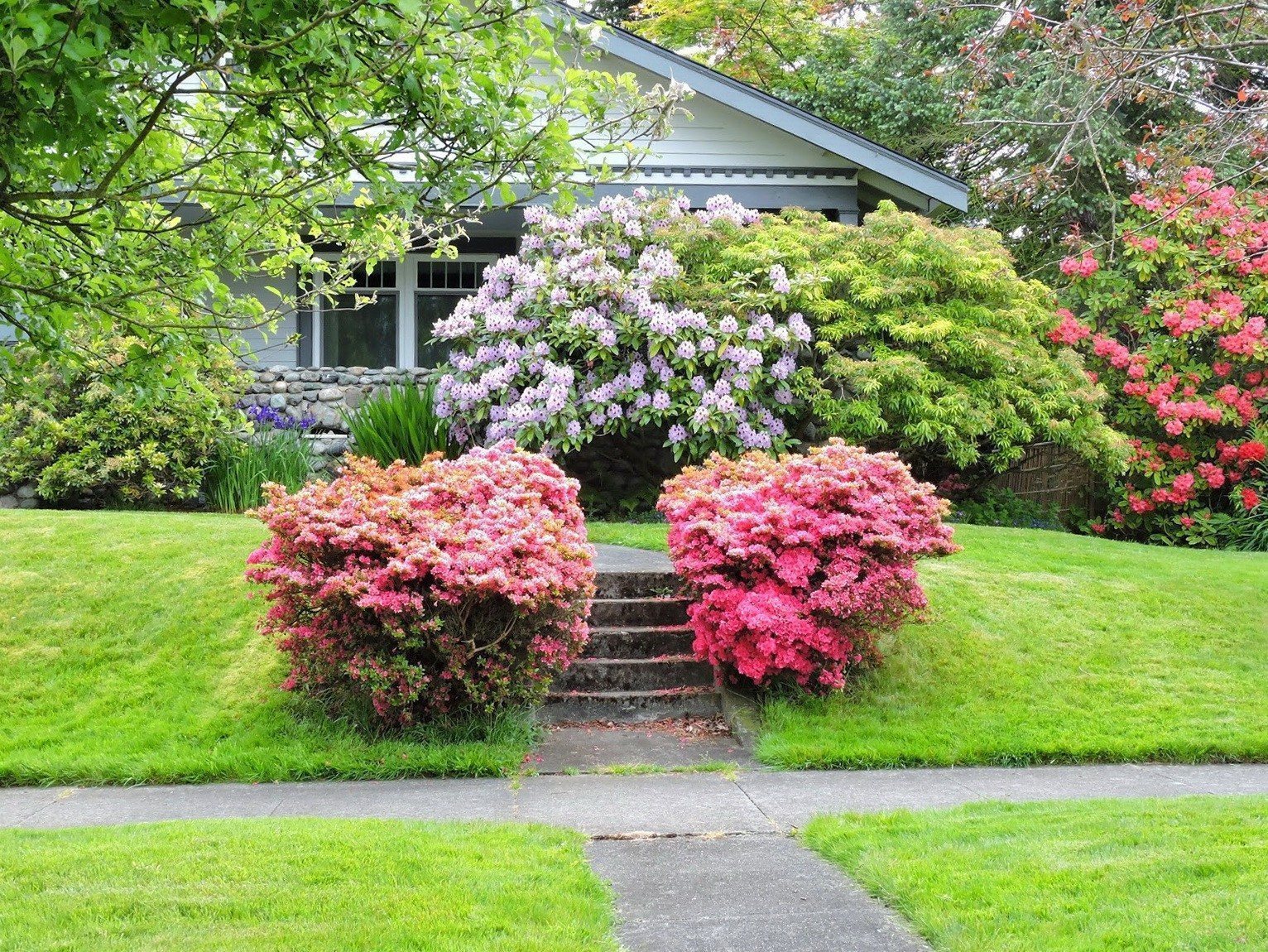
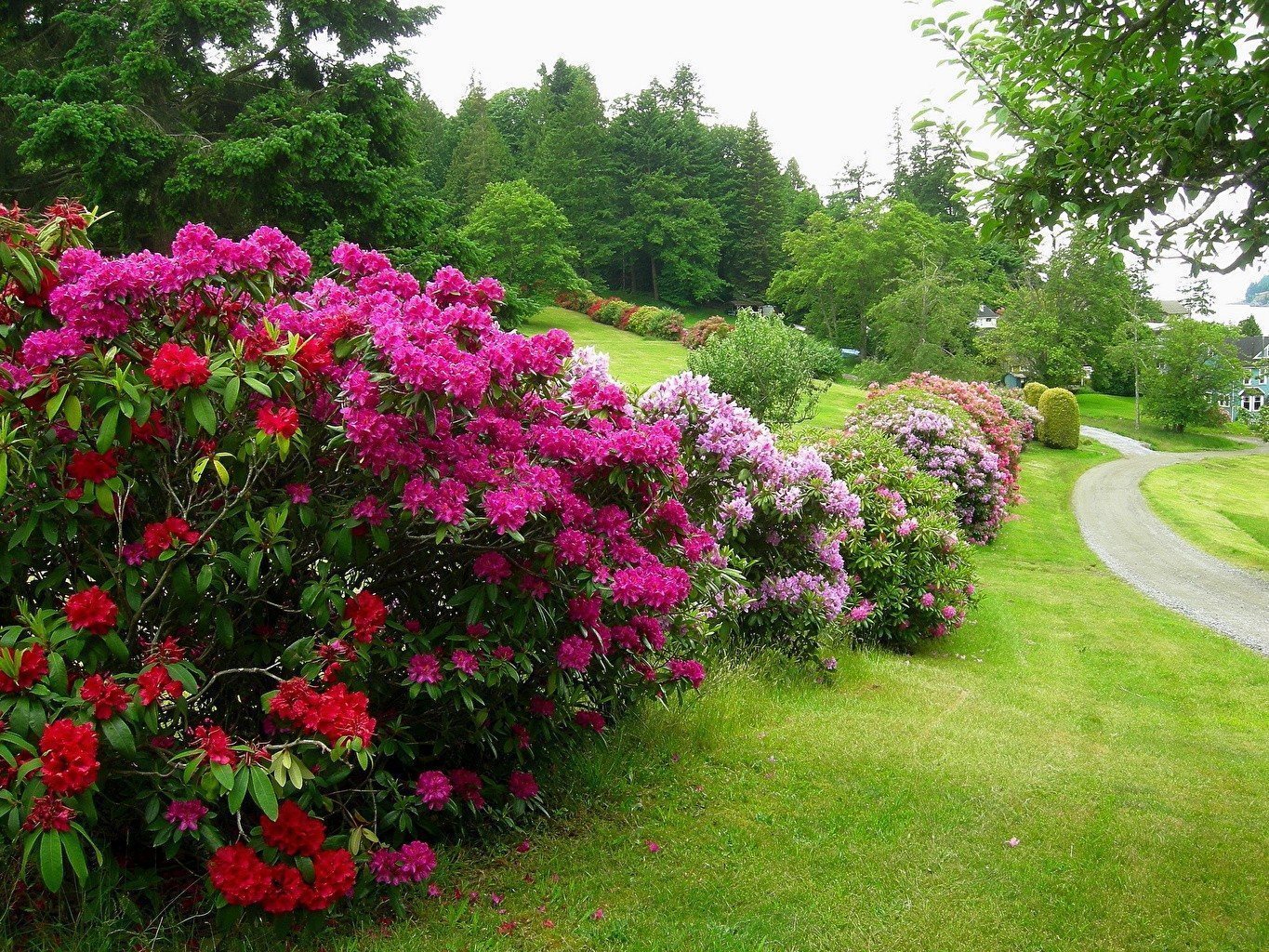
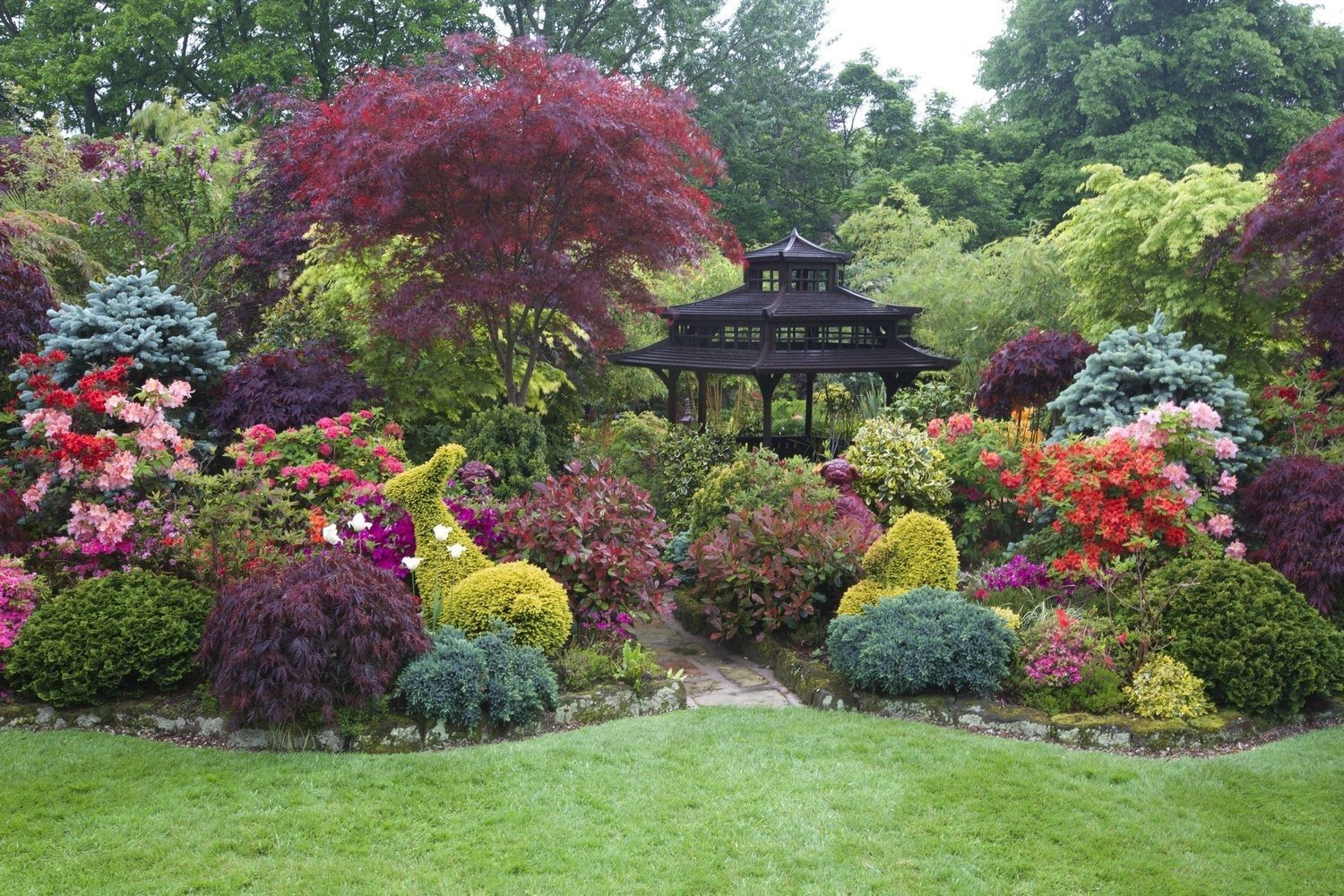
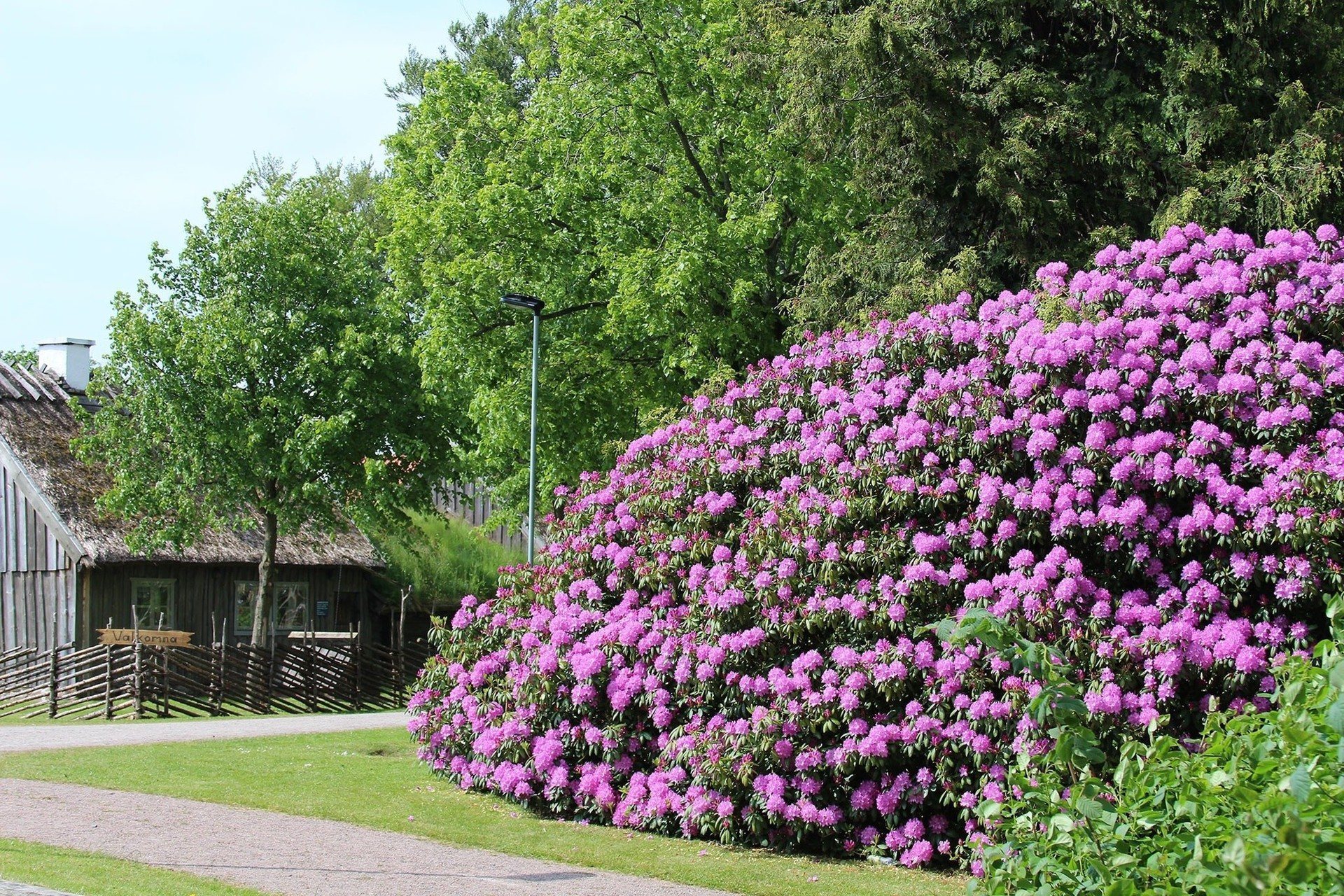
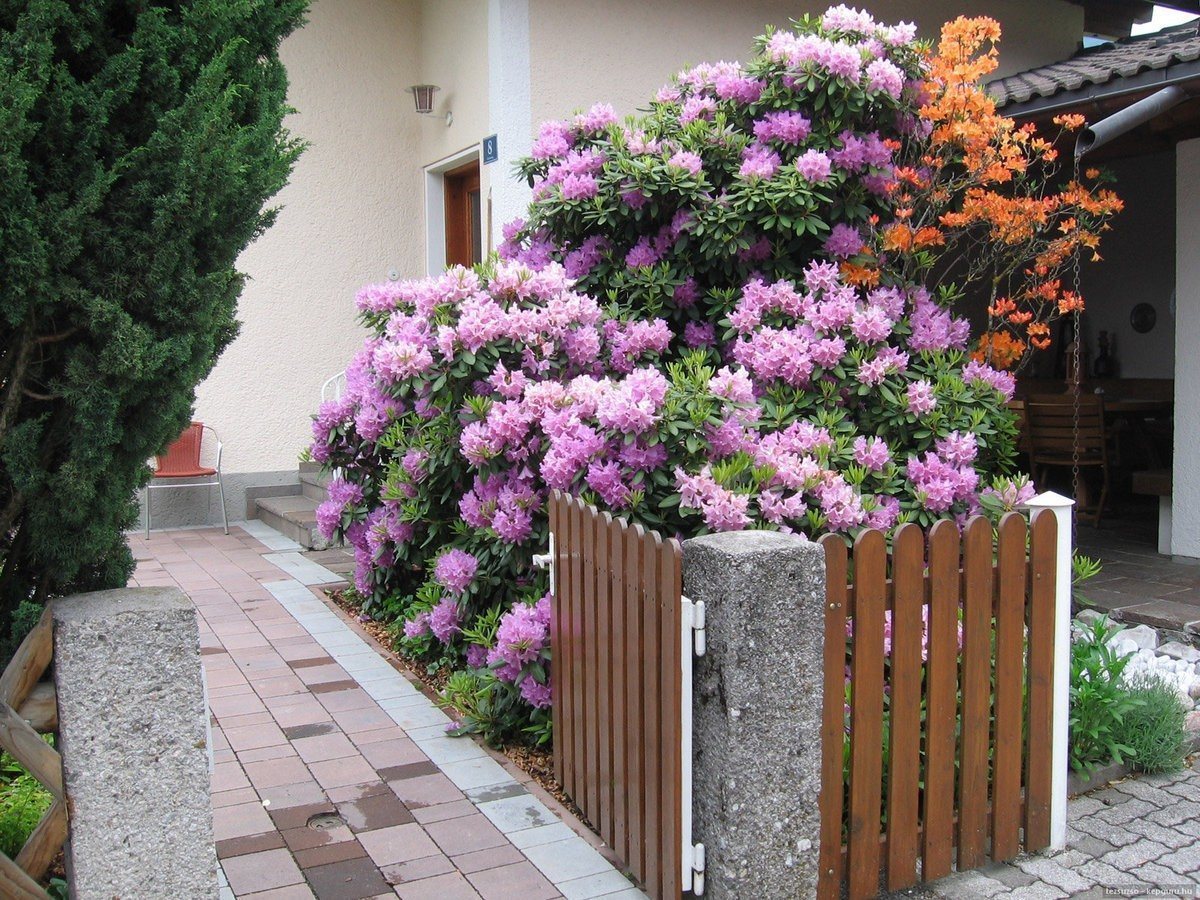





Buds or inflorescences fall off
This situation can be caused by a violation of the rules for caring for the plant or damage to the rhododendron by pests. The soil in which the bush grows should not be over-moistened.In the process of growing rhododendron, a gardener may encounter a number of alarming signs. All of them indicate problems in the development of the bush or a disease affecting it. It is important to track and eliminate these symptoms in a timely manner.
Blackening of leaves
Dark spots that spread across the leaf blade and affect the stems indicate a fungal disease. Damaged sheets are removed and disposed of. The affected plant is treated with an insecticide. It is also necessary to increase soil acidity.
If you care for the plant correctly and the buds are still falling off, you should rule out possible disease or the presence of pests. In this case, the problem is solved by using insecticides.


